Organization of treatment in Turkey and Europe
About us
About NUEVO

Nuevo Clinic is a service for selecting clinics and doctors in Turkey, as well as in Europe. Our platform helps patients to find qualified doctors and the best clinics in Turkey or Europe.
Our service allows customers to choose and compare different medical facilities, depending on their needs and budget. We provide information about doctors’ qualifications, experience and ratings. In addition, customers can read reviews of other patients who have already been treated at this clinic.
One of the main advantages of the Nuevo Clinic is the availability of qualified doctors and the best clinics that provide a high level of medical care.
The process of selecting a clinic and a doctor involves several steps. First, the client fills out an online questionnaire, where he or she states his or her medical problems and requirements. Then, Nuevo representatives contact the client to clarify details and provide additional information. In the end, the client receives a list of recommended clinics and doctors that fit their needs and budget.
We cooperate only with verified doctors and clinics in order to provide our users with only the most highly qualified medical services. We also provide testimonials from our users that can help you make the right choice.
Health is the most valuable thing, so we do everything we can to help you find the best specialists and get qualified medical care.
-
3
clinics
-
100
doctors
-
10000
operations
-
100
satisfied customers
Clinics
Our partners clinics
- equipped with advanced technologies and know-how in nursing, diagnostics, special units, and operating rooms
- It enriches its capacity with new specialized departments headed by experienced and prestigious doctors and surgeons
- New, highly aesthetic rooms and standard nursing rooms for quality patient and caregiver care
- Trains the medical staff, who always stand by the patient with a smile and sensitivity
- selects administrative staff capable of serving with knowledge and patience
- provides certificates guaranteeing the quality of the structure and operation of the clinic.
- Comprehensive preventive care, aesthetic medicine and plastic surgery
- The most effective procedures and methods to solve all problems
- Cooperation and interconnection between professionals under one roof
- VIP transportation service, post-operative care
- Coordinators in German, Russian and English throughout the treatment
- The clinic uses the most modern equipment of the world’s leading manufacturers.
- They are an exclusive partner of DHI Global Medical Group in the Czech Republic and Slovakia, with a unique method of direct hair transplantation.
- The exclusivity is provided by the therapeutic and global concept of body-forming treatment from the recognized brand RENEVE MONACO, which is an innovative system of intraoperative heating of the patient with warm air BAIR HUGGER….
- Incirli Ethica – aesthetic medicine and plastic surgery;
- The clinic in Bakırkoy treats a wide range of diseases;
- Esthetica plastic surgery and aesthetic medicine;
- Levent Estethica Multidisciplinary Surgery
- Modern technologies and techniques in the work of surgeons. The clinic is investing in constant modernization of equipment.
- Doctors are trained in the best clinics in the U.S. and Europe.
- Affordable prices.
- All patients get an extra day at the spa for recovery after surgery. This is included in the price.
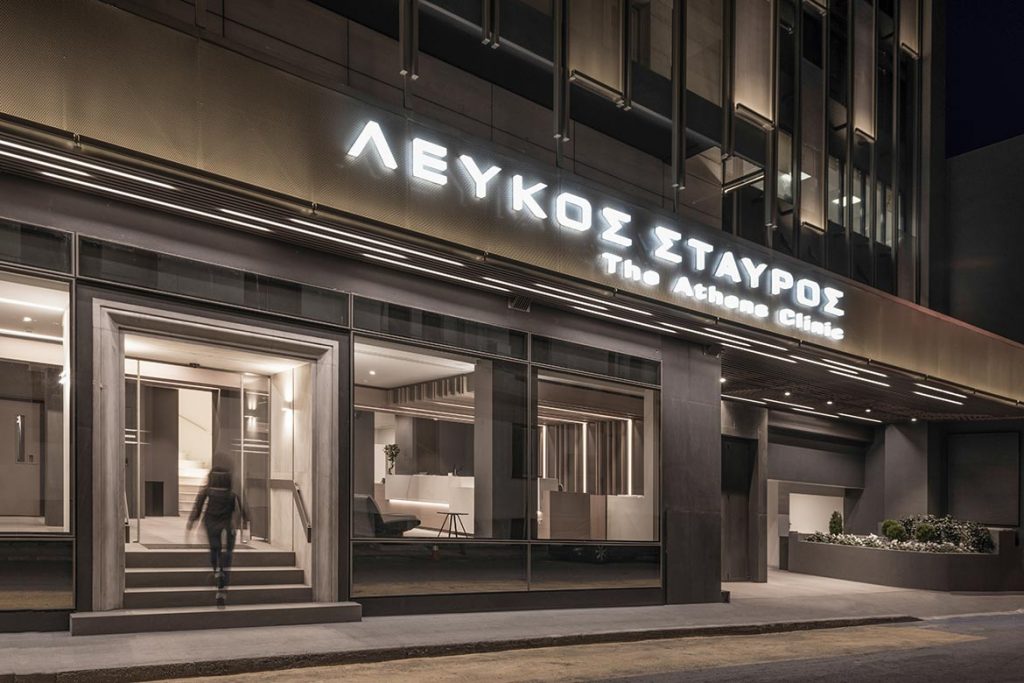
Lefkos Stavros Hospital is located in the center of Athens – a modern private polyclinic offering a wide range of medical services.
Care
One word that speaks for itself…
It was our vision that became our goal and purpose, and then turned into our daily concept and practice.
We move forward with an absolute commitment to Quality in every aspect and detail of our clinic.
And with our care, everything changes, everything evolves:
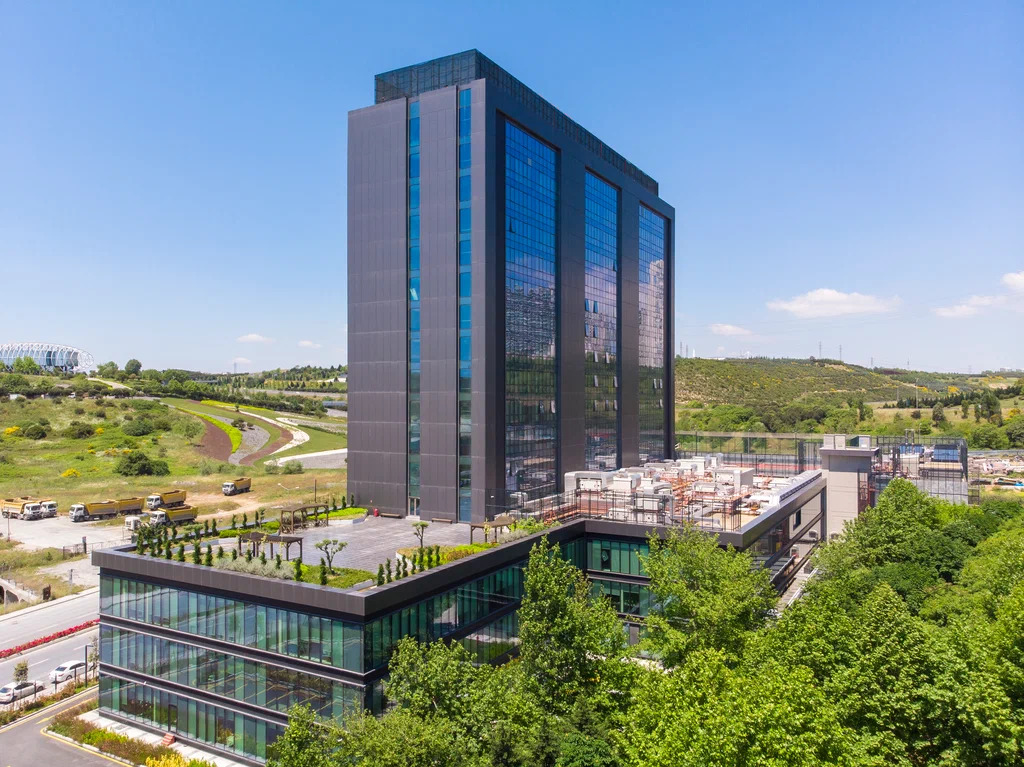
Dr. Salih Onur Basat Clinic is located in İstanbul’s Şişli district
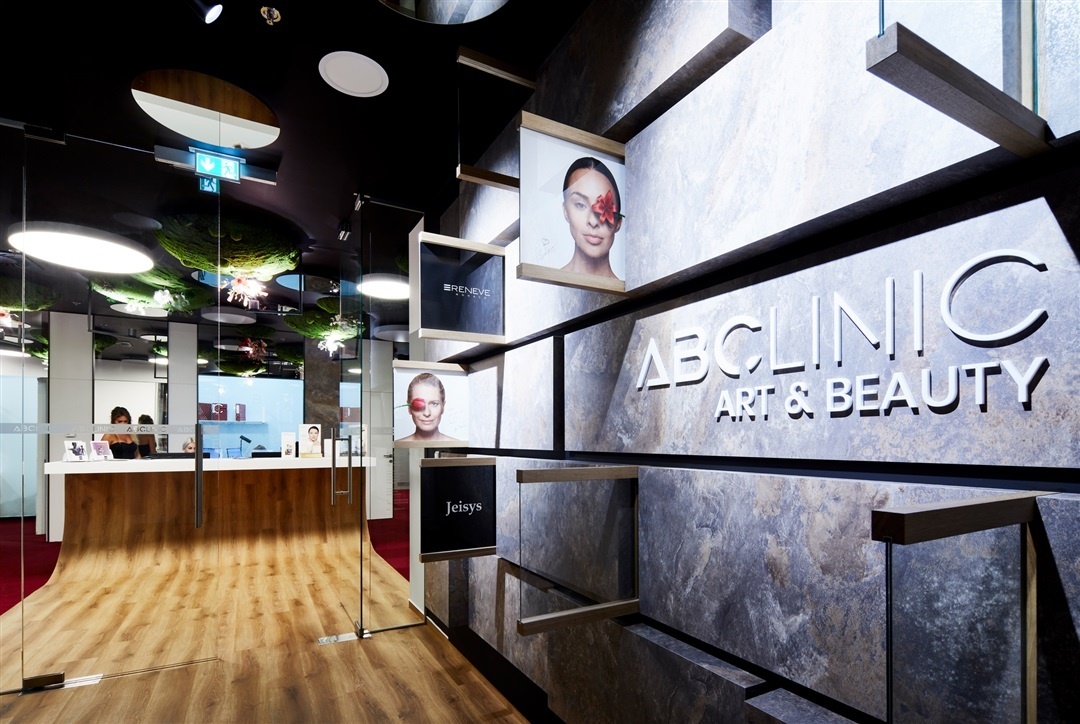
The first clinic in the Czech Republic based on the concept of comprehensive interdisciplinary treatment. Thanks to this, the services complement each other and form an integrated whole, helping clients not only to preserve their natural beauty and aesthetic appearance, but above all their health and excellent condition.
What do they offer
Uniqueness
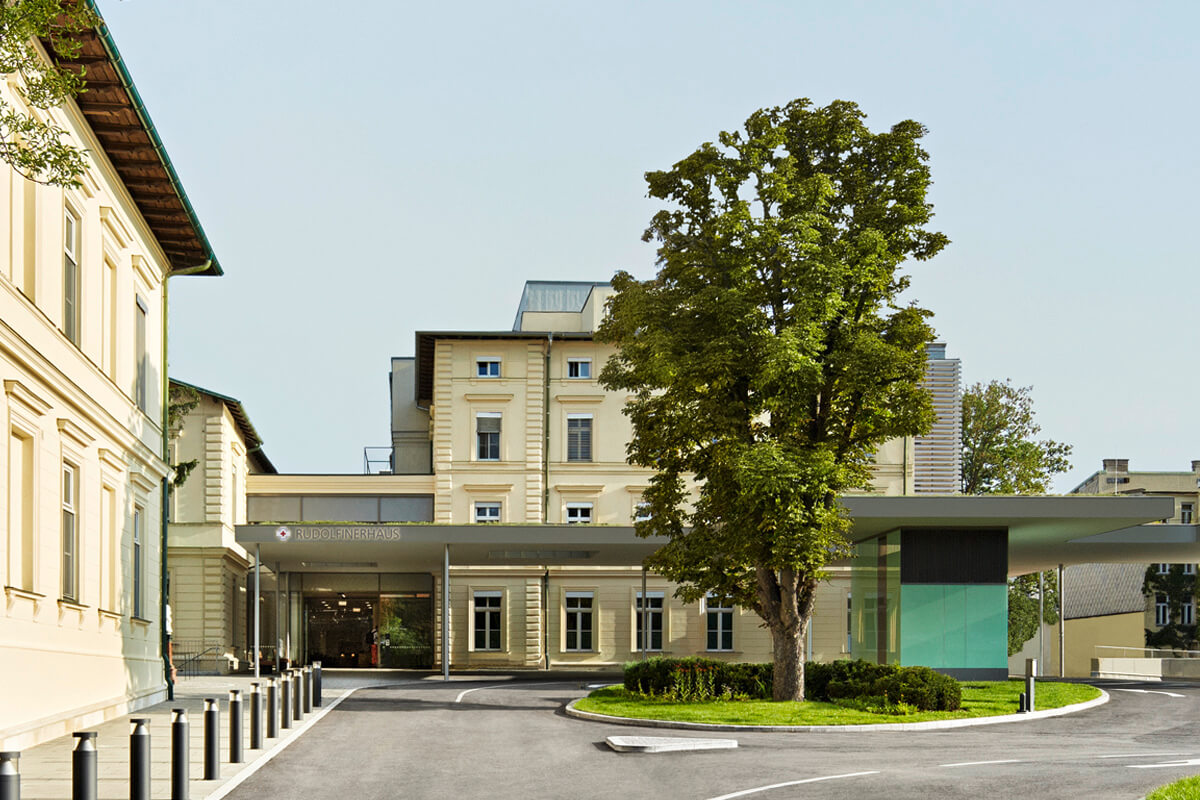
Highly qualified doctors, the most modern diagnostic and therapeutic equipment, the best medical staff, dedication and relaxed environment make the hospital a health center.
Relationships with patients are key to recovery. Trusting doctors and nurses, communicating with respect, friendliness and empathy, and striving to reduce stress leads to a faster and more sustainable healing process.
A crucial contribution is made by renowned medical specialists and highly qualified medical staff, mostly trained on our own campus. And to live up to the Rudofinerhaus philosophy from the very beginning of his career. A large number of academic specialists from the Medical University of Vienna practice at the Rudolfinerhaus.
Wellness promotes faster recovery
The Rudolfinerhaus is not only one of the most modern, but also one of the most beautiful private hospitals in Austria. Gorgeous 5,000-square-meter park on the slopes of the Kahlenberg, spacious apartments with verandas, eco-friendly building materials, tranquil colors and gourmet kitchen. All of these factors make you feel better and contribute to your recovery.
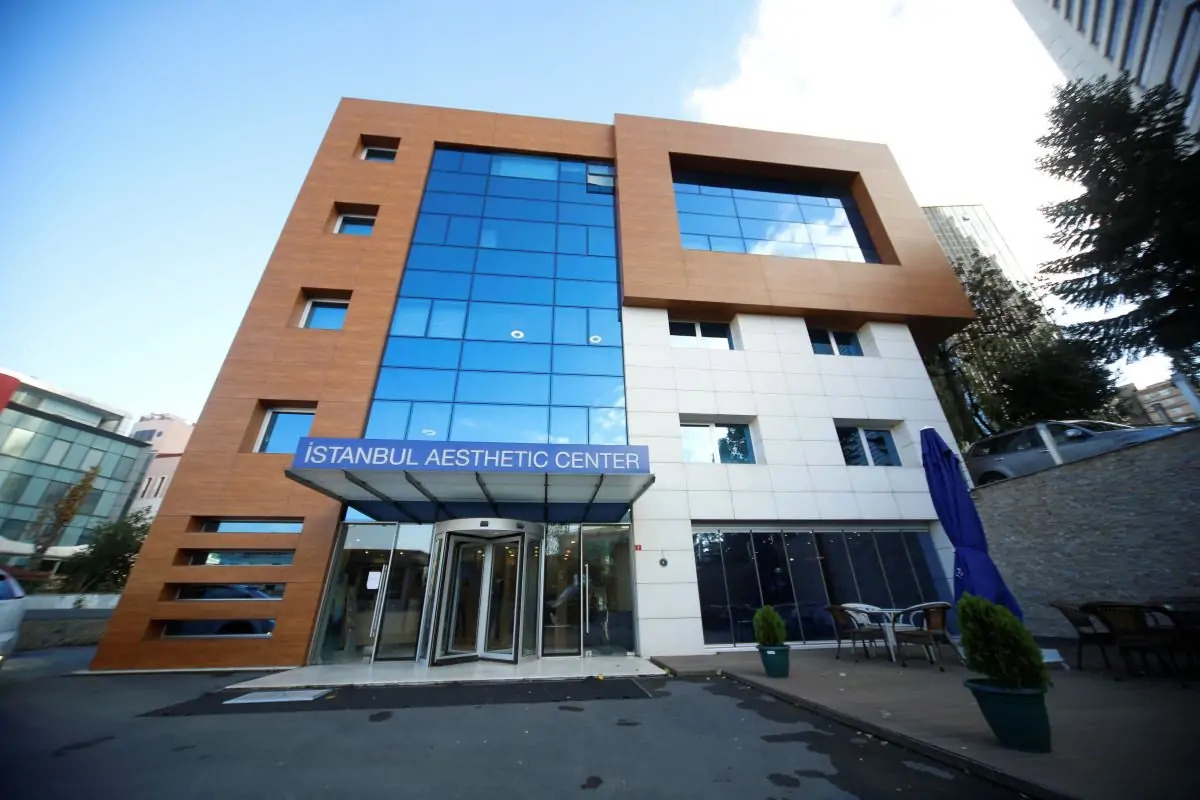
Istanbul Aesthetic and Medical Surgery Center is a plastic surgery hospital designed to provide quality services with high-tech devices and a staff of experienced doctors in its own branches and staff.
There are standard and VIP rooms, equipped specifically for the convenience and comfort of patients. In addition, there is an intensive care unit for emergencies.
Istanbul Aesthetic Center is built in the center of the city, close to all transportation hubs by its location.
Scientific improvements, technological innovations and all medical advances are tracked, have been and will continue to be available to patients.
The goal of the center is to maintain human health at the highest level by engaging the staff to ensure high patient satisfaction with the right treatment methods within the framework of the ethics of health.
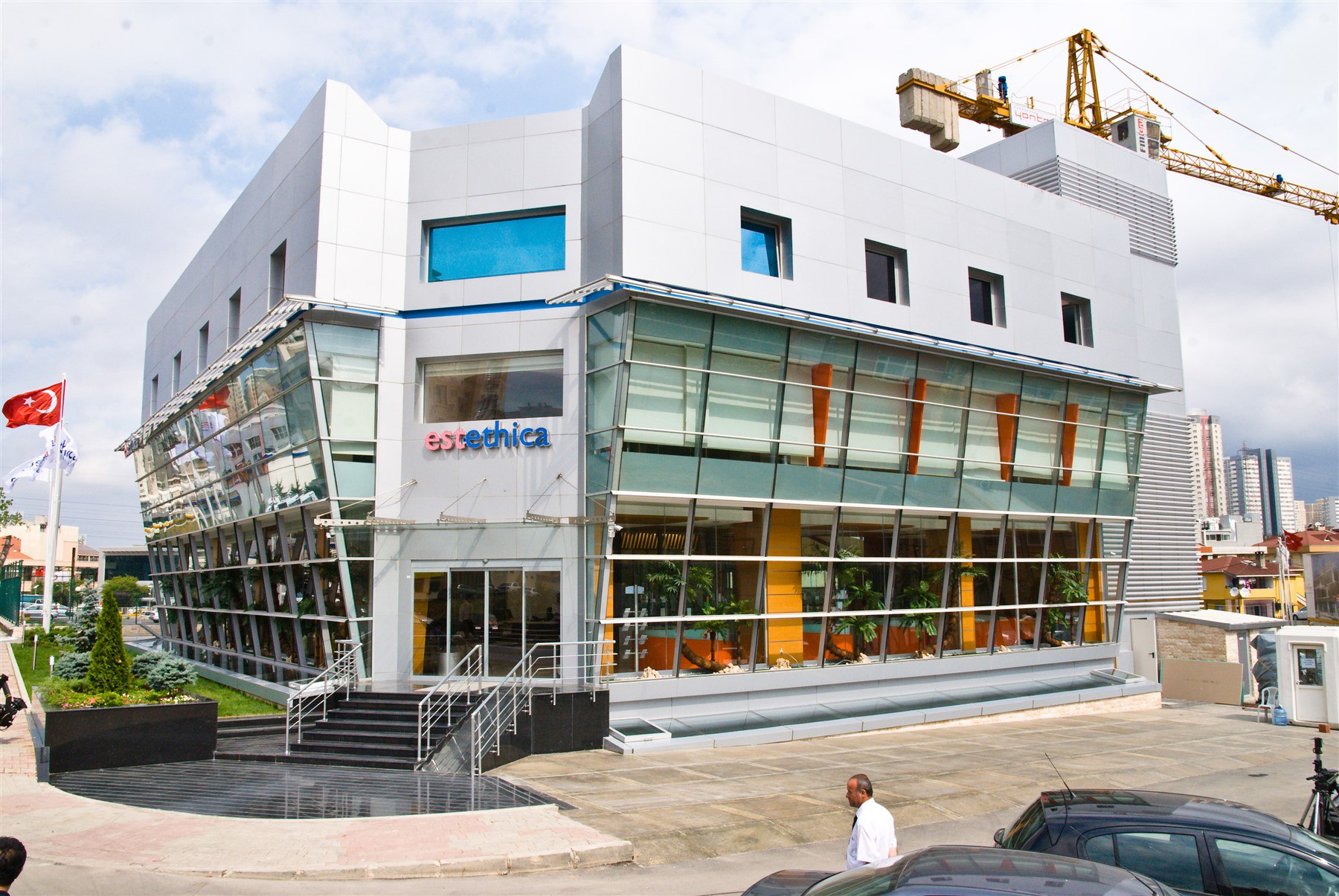
Estethica Health Group uses the most advanced technology, with the best experts in the field of aesthetic surgery and dentistry. It is the most reliable and leading center for plastic surgery in Turkey. Aesthetic and plastic surgery, hair transplants and health, healthy living and nutrition, dermatology and medical aesthetics, oral and dental health, varicose veins and acupuncture clinics.
They work under the motto “Healthy Beauty” in all areas. The clinic always takes a leading and guiding role in this sector. With an advanced research center, the world’s largest cosmetic surgery center, a team of experts, and fully equipped clinics, we continue to operate in three locations and continually work to improve ourselves and the quality of our services.
About the clinic
The Estethica Clinic is a plastic surgery clinic, which is part of a network of four major medical centers. Estetica Clinic was founded in 2010 and specializes in plastic surgeries of various complexity, hair transplants and dental services. Ethica Health Group includes four state-of-the-art medical centers:
Why Estethica
Request
leave a request
and we will contact you shortly
* Mandatory fields marked"*" indicates required fields
Doctors
Our doctors
-
Dr. Hector PanayiDirector of Plastic and Reconstructive Surgery at LEFKOS STAVROS HOSPITAL
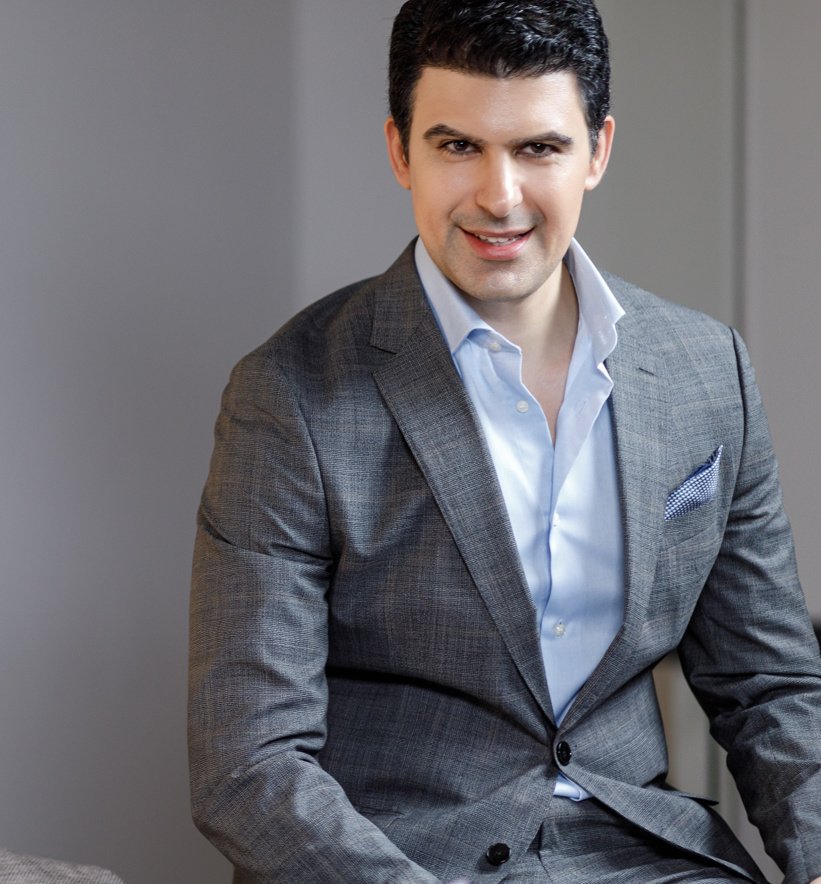
Dr. Ektoras Hadjipanayi is considered one of the most famous plastic surgeons in Greece. He is best known for his innovations in plastic and reconstructive surgery. In 2021, Dr. Panayi assumed the position of director of the Plastic and Reconstructive Surgery Department at LEFKOS STAVROS HOSPITAL, a private hospital, one of the most modern hospitals in Athens.
SOURCES
Dr. Panayi received his medical education at the most prestigious institutions in Europe. After completing a medical degree at the renowned University of Cambridge, UK, he completed his PhD in biomedical engineering at University College London (UCL, UK). He began his surgical training as a resident in vascular surgery at Cambridge Addenbrooke’s University Hospital. He then underwent training in plastic and reconstructive surgery at the famous Bogenhausen University Hospital in Munich with world-renowned plastic and reconstructive surgeon Professor Milomir Ninkovic. In 2014, Dr. Panayi was a key member of the surgical team that performed the revolutionary “Detrusor Myoplasty of the broadest muscle of the back” for functional reconstruction of the paralyzed bladder (a procedure first described by his mentor Prof. M. Ninkovic).
SPECIALIZATION
He received a fellowship in aesthetic plastic surgery under the guidance of the renowned Munich aesthetic plastic surgeon Dr. Constance Neuhann-Lorenz, and then continued to develop his skills in aesthetic and cosmetic surgery by attending the training schools of the world’s leading plastic surgeons, such as J. J. H. Brennan. Botti. , М. П. Cerasavolo, W. Gubisch, D. F. Richter, and P. Heden. He has worked in many countries around the world, including Great Britain, Germany, Sweden, and China. Over the past few years, Dr. Panayi has successfully collaborated with Dr. W. Dornseiffer, director of plastic and reconstructive surgery at the ISAR Clinic in Munich.
SOURCES
After completing his doctoral and postdoctoral work (Habilitation) in the UK and Germany, respectively, Dr. Panayi actively pursued his scientific research in parallel with his surgical practice, heading the Wound Healing Department of the Department of Plastic Surgery at the Technical Institute. University of Munich (TUM, Klinikum rechts der Isar) since 2012. Here, together with his colleague Prof. A.F. Schilling, he pioneered EmaCure®, a new therapy for the treatment of chronic wounds, which has received many awards and funding from the German government for clinical research. At the age of 33, he became an assistant professor of plastic surgery at TUM, one of Europe’s leading universities. He is considered a leading international authority on tissue perfusion and angiogenesis and has published extensively in respected scientific journals.
INNOVATIONS
He also holds numerous patents for many of his inventions. Among them, the development in 2014 of hypoxia preconditioned plasma (HYPPP: compositions of growth factors that promote skin regeneration) deserves special mention. In 2016, Dr. Panayi established a close collaboration with Princess Dr. Sarah von Isenburg to clinically promote HYPPP® blood-based products for personalized and bioactive rejuvenation. In 2019, Dr. Panayi was the first to use the Break-Free ultrasound technique, an innovative rhinoplasty technique that does not require nasal bone fracture.
-
Dr. Salih Onur BasatPlastic surgeon
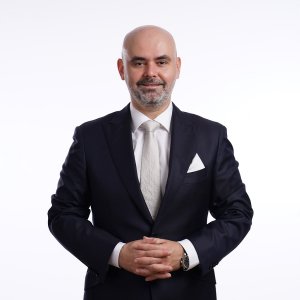
He graduated from the English Medicine program at the Faculty of Medicine at Cerrahpasa University in Istanbul in 2005. Salih Onur Basat, who earned his medical degree from Istanbul University, Istanbul Faculty of Medicine, Department of Plastic, Reconstructive and Aesthetic Surgery in 2011, completed his mandatory government service as a medical specialist in the Department of Plastic, Reconstructive and Aesthetic Surgery at Okmeydana Teaching and Research Hospital from 2012 to 2014. Salih Onur Basat worked in public health. over a period of time, conducting scientific research, published and presented in many leading national and international journals and congresses during this period.
While working as an assistant in 2009, he won first place in the “Assistant Presentation Competition, Clinical Department.” He promoted and participated in many national and international congresses. Accredited by the Turkish Plastic, Reconstructive and Aesthetic Surgery Organization (TPRECD) and the European Plastic, Reconstructive and Aesthetic Surgery Organization (EBOPRAS), Salih Onur Basat is a highly qualified surgeon with many clinical cases to his credit, including successful body contouring procedures, breast aesthetic and facial aesthetic surgeries.
-
Dr. Antreas KeimarisPlastic surgeon at ABCLINIC ART & BEAUTY
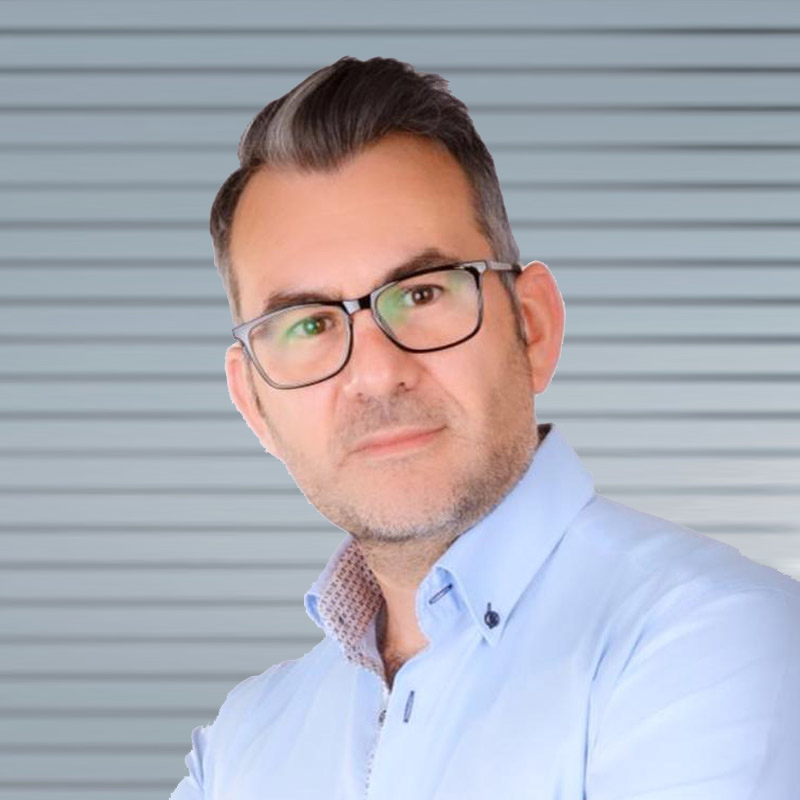
An experienced plastic surgeon. He began practicing general surgery in 2005. He has specialized in plastic surgery, facial plastic surgery (such as face or neck lifts), eyelid surgery, lip lifts, abdominal plastic surgery and liposuction since earning his postgraduate medical certificate.
Education
- 2021 Medical certification of postgraduate education in plastic surgery
- 2017 Surgical Postgraduate Certification in Plastic Surgery
- 2007-2013 General Medicine, 1st Medical Faculty of Charles University in Prague (studies in Czech)
- 2003-2004 Institute of Languages and Preparatory Courses of Charles University in Prague.
- 2001-2003 Military Police – rank: Sergeant.
- 1998-2001 High School in Cyprus (Lyceum Peter and Paul – Limassol)
Courses and seminars
- Professional training in the use of Aquafilling, Aquabody sro
- Training course on the introduction of mini-thread therapy, Dermica International Ltd.
- Trends in aesthetics 2014, VERAMEDICA sro
- XIX. International Educational Symposium on Plastic Surgery – Aesthetic Surgery in Practice,
- Institute for Postgraduate Medical Education
- Optional Subject Plastic Surgery, Plastic Surgery Clinic, Hospital Na Bulovaca
- Assistance in private aesthetic medicine and plastic surgery clinics
- Training in the surgical department of Pelgrimov Hospital
- Master Class, Facial Rejuvenation
This doctor consults on
- Czech
- English
- Greek
-
Dr. Peter ChovanPlastic surgeon at ABCLINIC ART & BEAUTY
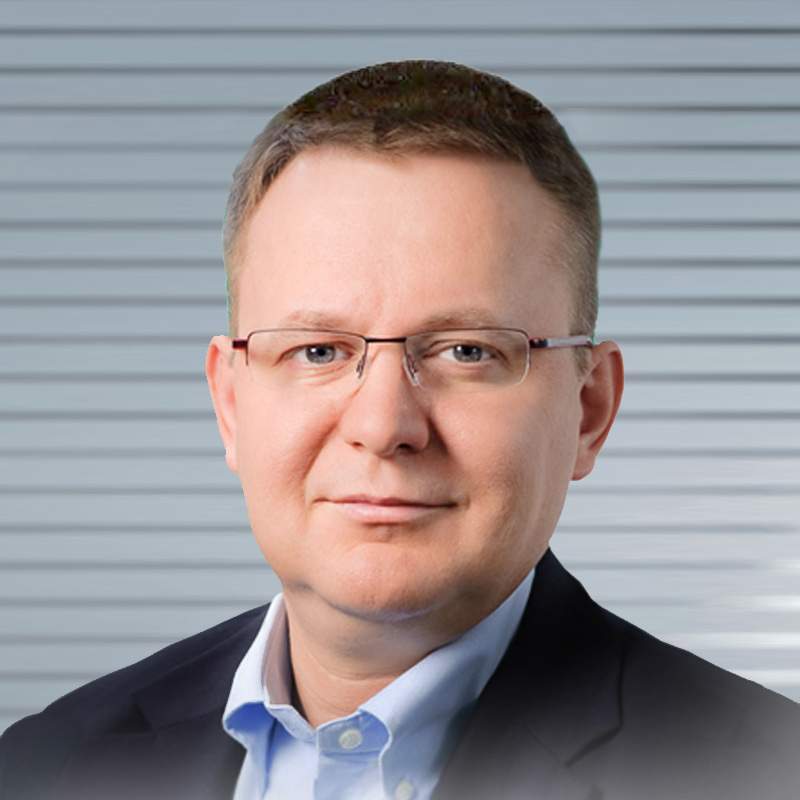
He is a highly skilled board-certified plastic surgeon with an advanced specialization in neurosurgery, who has devoted more than 20 years to his field and performs a number of plastic surgery procedures.
Education
- 1984-1990 Medical School (Doctor of Universal Medicine) Comenius University Bratislava
- Examination “Forensic Medical Expert” – 2021.
- the examination in the field of assessment medicine – 2020
- Specialization in plastic, reconstructive and aesthetic surgery – 2005.
- specialization in neurosurgery – 1999.
- General Surgery Grade 1 – 1993.
Work experience
- Aesthevita / aesthetic plastic surgery clinic, Prague
- Lipo Clinic Bratislava, Prague
- NU Clinic, Bratislava
- Novamed, Medical Center Banska Bystrica
- Victoria Regia, Medissimo Hospital, Bratislava
- Hiev Plastic Surgeon, Life-Med Clinic, Pezinok
- Hiev Plastic Surgeon, Euroclinic Trnava
- Asklepion Institute of Aesthetic Medicine, Prague
- Life-Med Clinic, sro, Pezinok
- Neurosurgeon – Department of Neurosurgery, Slovak University of Health, J. M. Hospital. Ф. D. Roosevelt, Banska Bystrica
This doctor consults on
- Czech
- Slovak
- English
- German
- Russian
-
Dr. David HendrichPlastic surgeon at ABCLINIC ART & BEAUTY
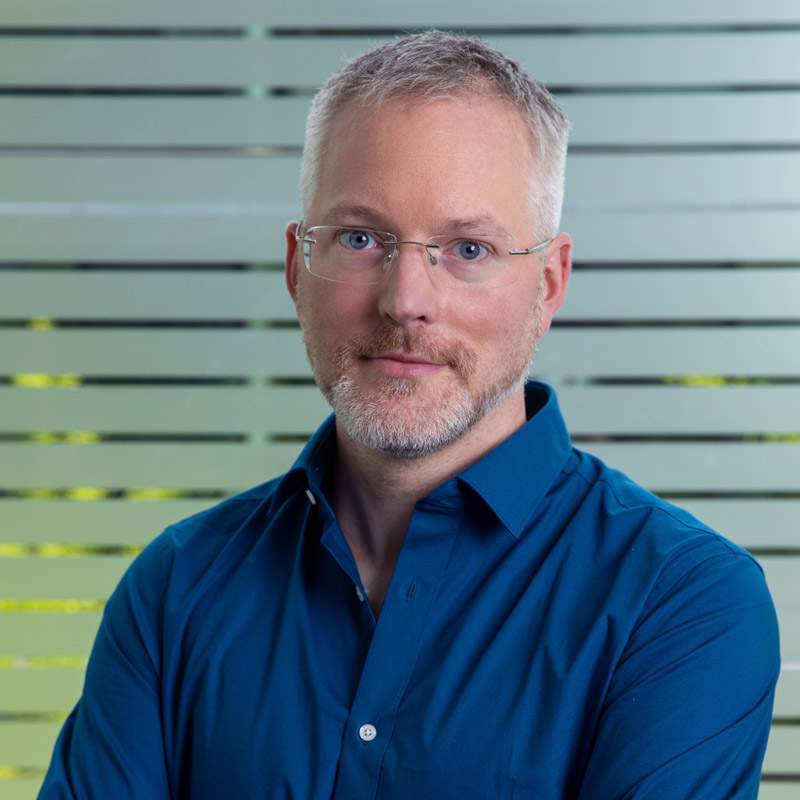
A surgeon with many years of surgical practice. He has been practicing general surgery since 2005. After receiving his medical post-graduate certificate, he specialized in plastic surgery, where he also received his post-graduate certificate and has been working ever since. He has devoted almost his entire career to breast surgery across the entire spectrum of procedures – aesthetic procedures as well as more serious interventions.
Education, Experience
- 2021 – Medical Postgraduate Certification in Plastic Surgery
- 2019 – Assistant of the Department of Plastic Surgery 1, Medical Faculty
- 2015-present is a physician in the Department of Plastic Surgery at Bulovka Hospital, where he works as the chief physician for breast diseases.
- 2014 г. – certification of postgraduate medical education in general surgery.
- 2005 – A physician in the surgical department at Colin Hospital, where he was the guarantor of care for breast cancer patients.
- 1998-2005 2nd Medical Faculty of Charles University – General Medicine
Specialty
- Correction of breast shape, breast augmentation with different types of implants, breast reduction
- Correction of breast deformities caused by accidents and previous surgeries, scar tightening
- Removal of gynecomastia in men
- Liposuction of the abdomen and thighs
- Abdominoplasty
- Eyelid surgery
- Correction of ears
- Correction of scars
This doctor consults on
- Czech
- English
-
Dr. Vanesa LovetinskaPlastic surgeon at ABCLINIC ART & BEAUTY
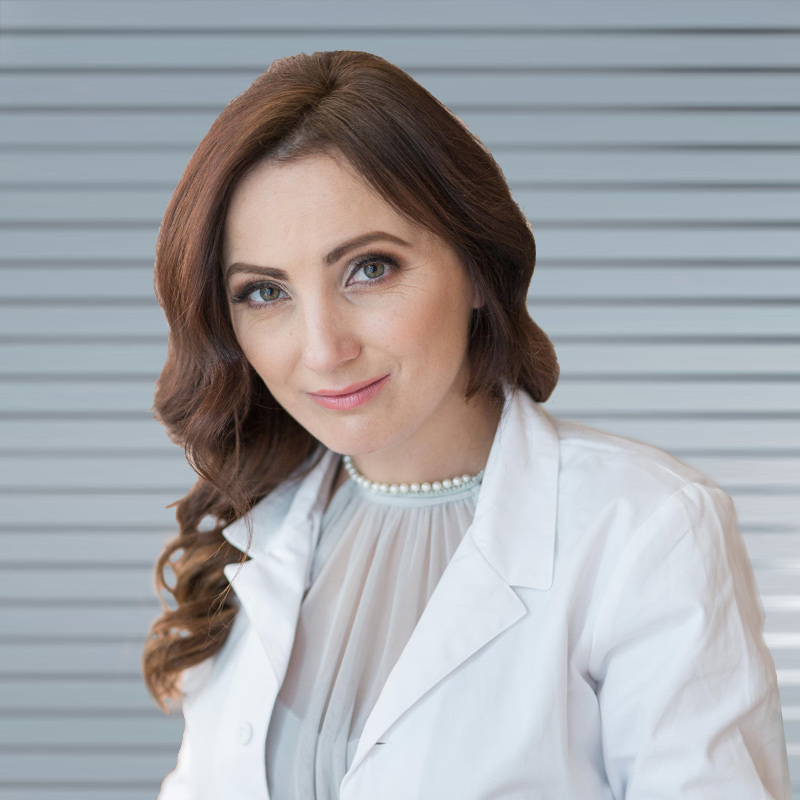
He specializes in reconstructive plastic and aesthetic surgery and hand surgery. Certified military plastic surgeon with a comprehensive approach to his patients through experience and education in plastic surgery, general surgery, traumatology and orthopedics.
Education, Experience
- First Medical Faculty of Charles University (2006-2012)
- Czech Army
- He is currently pursuing postgraduate training in experimental surgery at the Third Medical Faculty in Prague.
- Major (Mjr.), Training Command – Military Academy, Vyshkov na Morave, 2017.
- Central Military Hospital, Prague
- Plastic Surgery Clinic, Vinogrady University Clinic
- Hospital Na Bulovce
- Thoracic surgery at Thomayer University Hospital
Congresses, courses
-
- Flap Dissection Course, ATLS – Advanced Trauma Life Support
- Peripheral Nerve Course
- Surgery of the Hand Course I.–VI.
- Microsurgery Course
- A course of basic methods of treating injuries
- APTOS Course
- Saypha – Course and Certificate in Filling Materials
- Course in Breast Oncology and Surgery
- Lobe plastic surgery course
- Laparoscopy course
- Certificate of First Aid and CPR
- Cadaveric course of the upper extremity
This doctor consults on- Czech
- English
- German
-
Dr. Matej PatzeltPlastic surgeon at ABCLINIC ART & BEAUTY
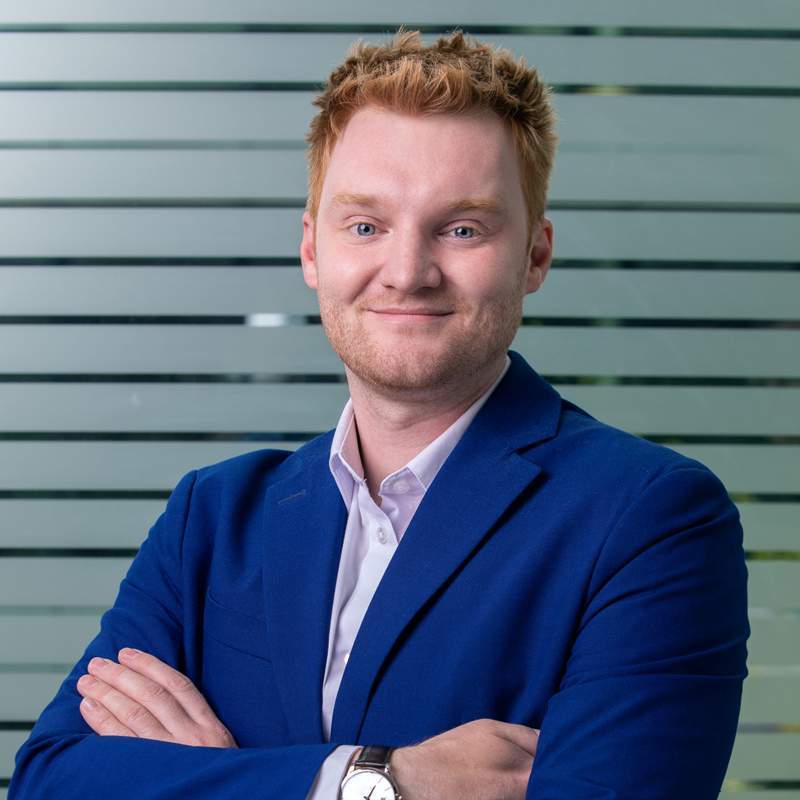
He performs a wide range of procedures, such as hand surgery, defect closure, breast surgery or congenital anomaly surgery, and is highly skilled. in microsurgical reconstruction and replantation techniques. He is also an expert in a new type of facelift in the Czech Republic, the deep face lift, which he learned in Paris from plastic surgery specialist Dr. Marciak. This type of facelift differs from the classic facelift in that it works with much deeper facial tissues, which makes the results more impressive and long-lasting.
Education
- 2015-2020 Third Medical Faculty of Charles University, PhD – Medical Biophysics, Ph.D.
- 2009-2015 Third Medical Faculty of Charles University, General Medicine, MUDr.
- 2019 Continuing Education Diploma, Czech Medical Chamber
Courses
- New methods of collagen repair and facial contour enhancement (MUDr. Skála)
- Application of botulinum toxin and fillers in corrective dermatology (MUDr. Moskalyková)
- News of a comprehensive approach to the BRCA problem (MUDr. Zárubová)
- Surgical excellence in breast augmentation based on science (Racanti, MD)
- Medical training on aesthetic management and hyaluronic acid injection techniques (Terziskaya, Neradova, Kavkova, M.D.)
- World Symposium on Ergonomic Implants, Gardone, Lago di Garda, 2018, Italy
This doctor consults on- Czech
- English
- French
- Swedish
-
Dr. Otakar LucakPlastic surgeon, chief physician at ABClinic Art & Beauty
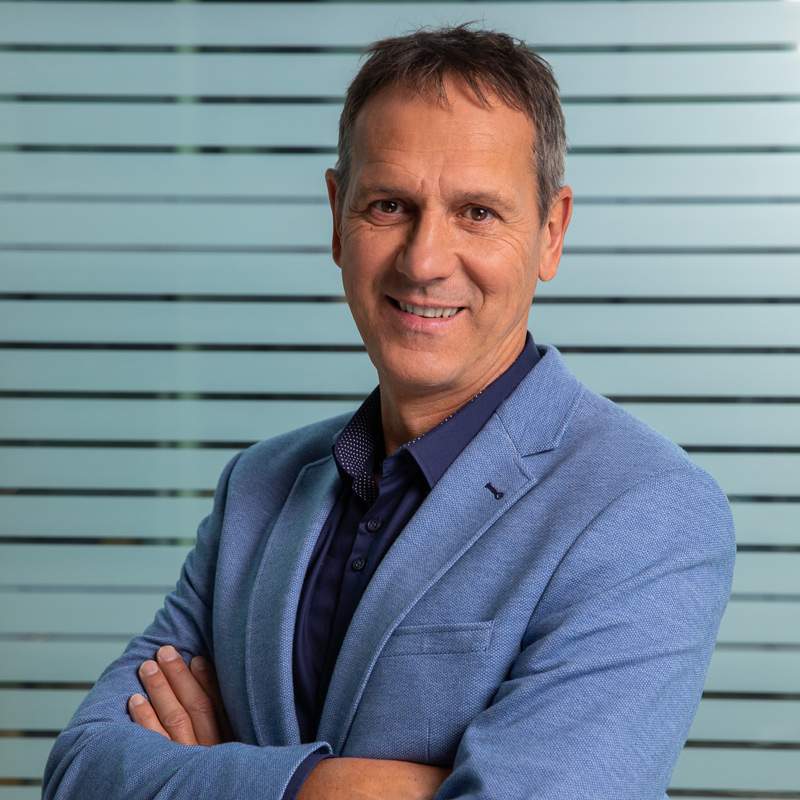
The plastic surgeon has almost 30 years of experience in plastic and aesthetic surgery. He received his medical degree in 1985 after graduating from Palacky University in Olomouc. For 18 years, he successfully ran a private clinic.
Training, practice
- Faculty of Medicine, Palacky University in Olomouc – 1985
- The Partnership under the direction of Prof. MUDr. Farah, Ph. MUDr. Tvrdka at Královské Vinohrady University Plastic Surgery Clinic, Prague
- Vysoké nad Jizerou – Surgery of the hand
- Internship at the Institute of Plastic Surgery and Medical Beauty, Prague
- Post-graduate education certification in surgery of the 1st level – 1988.
- Postgraduate education certification in plastic surgery, 2nd level – 1993.
- Therapist, Department of Plastic and Burns Medicine, University Hospital of Ostrava
- Deputy Chief Physician of the Department of Plastic Surgery at Trzcinec Hospital
- Owner and chief physician of a private clinic for plastic and aesthetic surgery in Ostrava
- Private practice in the field of plastic and aesthetic surgery – chief physician
- Specialist in aesthetic surgery in leading Czech clinics since 2014.
Certificates, courses
- Certificate of Competency in Aesthetic Surgery
- International courses and trainings Vienna, Austria/Rome, Italy
- Postgraduate Certificate in Plastic Surgery
- Certificate of Practice in Surgery from the Czech Medical Chamber
- Certificate of Practice in Plastic Surgery from the Czech Medical Chamber
- Specialization in aesthetic surgeries and aesthetic medicine procedures
- Cosmetic surgery (full spectrum)
- Certificate of laser operation
- Certificate of injectable fillers and botulinum toxin
- Certificate of Aptos threads application
This doctor consults on- Czech
- Russian
- Polish
-
Dr. Ilker ManavbasiPlastic surgeon
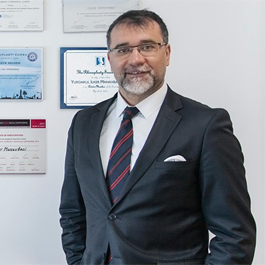
Education:
1999 – Ankara University School of Medicine
2005 – Hacettepe University School of Medicine, Department of Reconstructive Surgery
Work experience:
2001-2004. – Istanbul Special Hospital Irene / Head of the Department of Hand Surgery
2004-2006. – The Clinic of Plastic and Aesthetic Surgery of Prof. Dr. M.D. Lomonosov, Moscow, Russia. Onur Erol / Partner Surgeon
2005-2006. – Zeeba Clinic in Cleveland, Ohio / Plastic Surgeon
2006 – Finland, Kuopio University; Sweden, Linköping University / observer physician
2020 г. – Private clinic
-
Dr. Hakan GyokPlastic surgeon
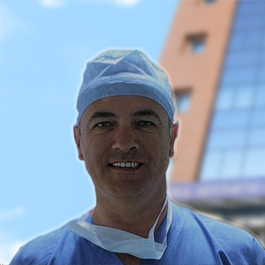
Specialization:
- Specialized hernia surgeon
- Expert in the treatment of primary and recurrent abdominal wall hernias by open and closed methods
- Laparoscopic surgery
- Traditional surgery
Membership:
- European Hernia Society (board member)
- EndoHernia International Society
- Founder of the British Hernia Society
- Member of the Turkish Hernia Society
- Founding member of the Turkish Hernia Society
- Secretary General Turkish Surgical Association
- Member of the Turkish Cancer Foundation Member of the Board of Directors
-
Dr. Aulin TuranAesthetic Dentistry
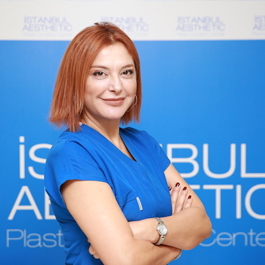
Education:
Dickle University School of Dentistry
Work experience:
2011 -2014. – Kartal Dental Hospital
1994-2011. – Doctor’s Consultation Room
Membership of the Academy of Aesthetic Dentistry
Courses:
- Applied Implant Patient Education 2015.
- Composite Veneers Restoration Course 2015.
- Applied Advanced Implant Training 2015.
- Implant Prosthesis Training 2015
- Basic Implant Training 2014.
- Laser Training 2014.
- TDB Fiber Course 2009.
- Applied Implant Training 2008.
- Bonding of composite materials 2008.
- Posterior indirect composite application 2008
-
Dr. Ergin ErPlastic surgeon
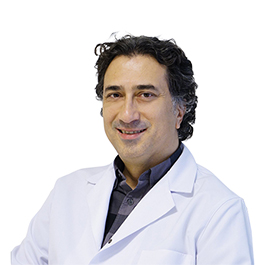
Education:
1992 – Degree of Doctor of Medicine, Gulhane Military Medical Academy, Ankara, Turkey
1993 – Internship, Gulhane Military Medical Academy, Ankara, Turkey
1994 – Advanced Course in Emergency Medicine, Gulhane Military Medical Academy, Ankara, Turkey
2001 – Resident in Plastic and Reconstructive Surgery, Gulhane Military Medical Academy, Ankara, Turkey
2001 – Course in Microsurgery, Gulhane Military Medical Academy, Ankara, Turkey
2002 Seminar on Aesthetic Facial Surgery, Manhattan ENT Center, New York, USA
2004 – Postdoctoral fellow, Baylor College of Medicine, Houston, Texas, USA
2004 – Klein Tümescent Liposuction Course, San Juan Capistrano, California, USA Experience
2012-2017. – Plastic Surgeon, Anatomica Hospital
2008-2012. – Private practice
2006- 2008. – Aesthetic and Plastic Surgeon, Memorial Hospital, Istanbul
2004-2008. – Plastic Surgeon, Transmed Clinic for Aesthetic and Hair Surgery
2003-2004. – Baylor College of Medicine, Houston, Texas, USA
2002-2003. – Plastic Surgeon, Department of Plastic Surgery, Kasympasa Naval Hospital, Istanbul, Turkey
2001-2002. – Plastic Surgeon, Head of Military Burn Center, Military Medical Academy n.a. M.V. Lomonosov. Gulhane
1993-1996. – Chief Military Doctor, Turkish Naval School, Istanbul
-
Professor Dr. Gurhan ÖzcanPlastic surgeon
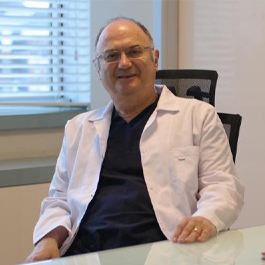
Education:
1971-1977. – Faculty of Medicine, Hacettepe University, Ankara
1977-1983. – Hacettepe University, Medical Faculty, Department of Plastic, Reconstructive and Aesthetic Surgery
1988-1990. – Fellow, Department of Plastic Surgery, Baylor College of Medicine, Texas Medical Center, Houston, Texas (USA)
1990-1991. – Assistant Professor of Plastic Surgery in the Department of Plastic Surgery, Baylor College of Medicine, Texas Medical Center, Houston, Texas (USA)
1991 – Qualification of assistant professor of plastic surgery, member of the jury of the Gulhane Military Academy, Department of Plastic Surgery, Ankara
1992-1995. – Assistant Professor of Plastic Surgery at the Department of Plastic, Reconstructive and Aesthetic Surgery, Faculty of Medicine, Hacettepe University, Ankara
1995-1998. – Professor of Plastic Surgery and Head of the Department of Plastic Surgery, Medical Faculty, Bashkent University
2006 – Certificate of the European Board of Plastic, Reconstructive and Aesthetic Surgery (EBOPRAS) (Budapest, Hungary)
Activities:
- Turkey’s National Representative to the IPRAS Asia-Pacific Section (1993, South Korea, Seoul)
- Turkish National Delegate to the IPRAS European Section (1997, Lisbon, Portugal)
- Turkish National Delegate of the International Confederation of Plastic, Reconstructive and Aesthetic Societies (IPRAS) (1995, Yokohama, Japan, 1999, San Francisco, USA, 2003, Sydney, Australia, 2007, Berlin, Germany)
- National Representative of Turkey in the European Board of Plastic, Reconstructive and Aesthetic Surgery (EBOPRAS) (1994-2005)
- Certification and Accreditation Committee:
- Turkish Society of Plastic, Reconstructive and Aesthetic Surgery: member (2003-2005), president (2005-2009)
- Turkish Society for Microsurgical Reconstructive Surgery, Executive Committee: Vice President (1994-1996)
- National Representative of Turkey in the European Association of Plastic Surgeons (EURAPS) (2004-2008)
- President of the 9th Annual Meeting of the Turkish Association of Aesthetic Plastic Surgeons, May 11-15, 2005, Swiss Hotel Bosphorus, Istanbul.
-
Dr. Fatih SOILEMEZAesthetic, Plastic and Reconstructive Surgery
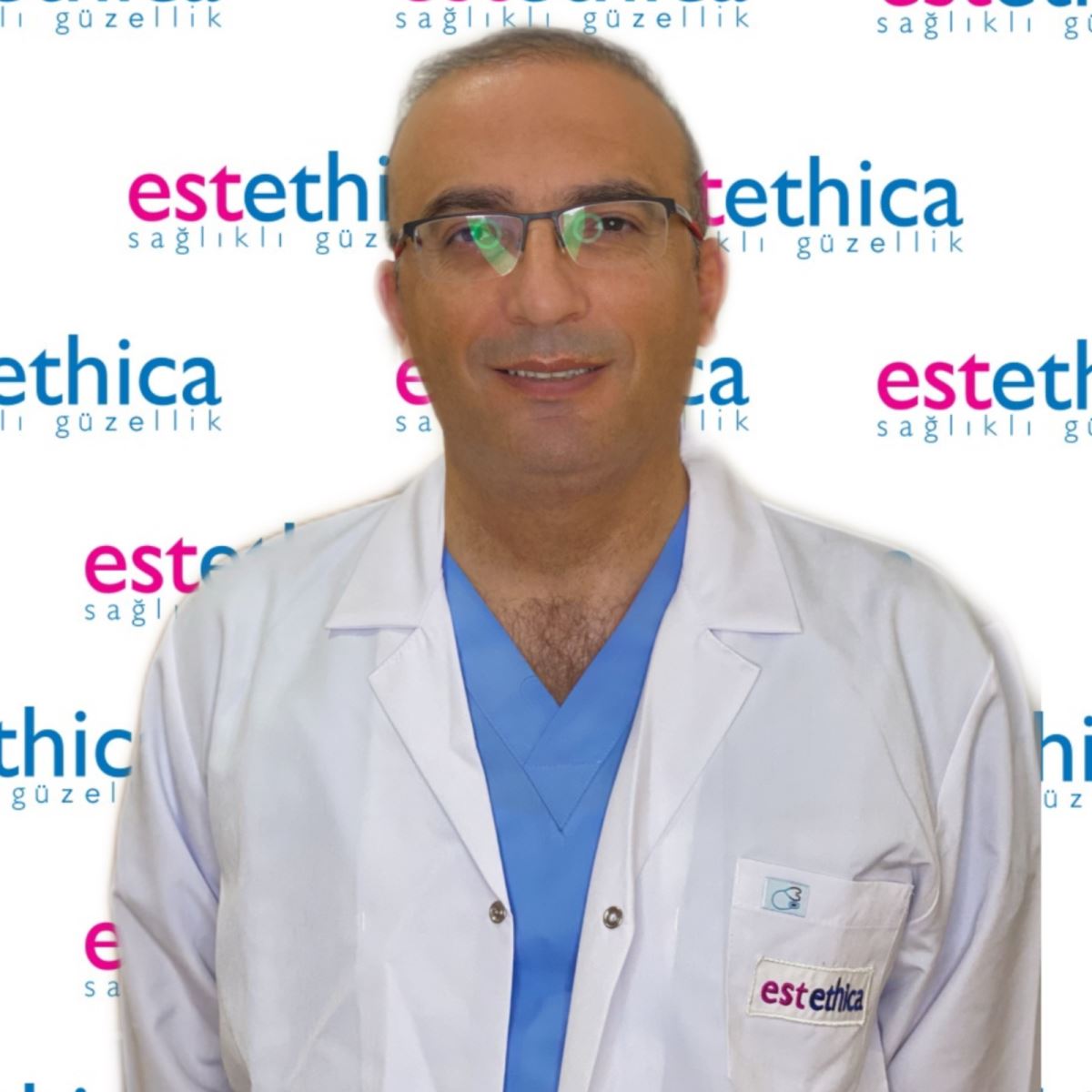
Bachelor’s degree:
Aegean University School of Medicine.
Specialization:
Dokuze Maiys University – Plastic, Reconstructive and Aesthetic Surgery
Experience:
- Artvin State Hospital
- Balykesir Edremit State Hospital
-
Dr. Sinan ULUSOYAesthetic, Plastic and Reconstructive Surgery
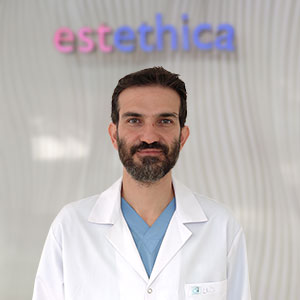
Bachelor’s degree:
Hacettepe University School of Medicine
Specialization:
Ankara University School of Medicine – Department of Aesthetic, Plastic and Reconstructive Surgery
Experience:
- Ankara University Faculty of Medicine, Department of Plastic, Reconstructive and Aesthetic Surgery – assistant
- Plastic Surgery Clinic of Kayseri Teaching and Research Hospital
-
Dr. Ese KalafatnarPlastic, reconstructive and aesthetic surgery
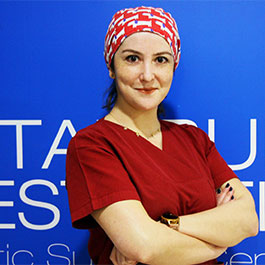
Education:
2007 – 2013 Istanbul University, Faculty of Medicine (Doctor of Medicine)
2014 – 2019 Istanbul Kartal Ministry of Health Dr. Lütfi Kirdar Educational and Research Hospital (Residency in Plastic, Reconstructive and Aesthetic Surgery)
Courses:
- Basic Microsurgery Course at Istanbul Medeniet University – 2016
- ISAPS Eurasian Course 2018 and the 10th International Eurasian Aesthetic
- Plastic surgery course
- Eurasian 2017 9th International Eurasian Course on Aesthetic Plastic Surgery and 5th Istanbul Advanced Rhinoplasty Course
- Nazim Tserkes Open Rhinoplasty Course Live 2018
Conferences and seminars:
- 23rd International Student Congress of Medical Sciences – 2012 (Conference)
- 1st International Congress on Stem Cells and Cell Therapy – 2014 (Conference)
- The 3rd International Congress of the Turkish Cleft Lip and Palate Society 2016 (Conference)
- National Congress of the Turkish Society for Plastic Reconstructive and Aesthetic Surgery – 2014 and 2018 (Conference)
- National Congress of the Turkish Society of Aesthetic Plastic Surgery – 2017 and 2018 (Conference)
- Hare’s lip and nose (Seminar)
- Wound healing and grafts (Seminar)
- Maxillofacial fractures (Seminar)
- Tissue Expansion (Seminar)
- Vascular Malformations (Seminar)
-
Dr. Fatih KilicAesthetic, Plastic and Reconstructive Surgery
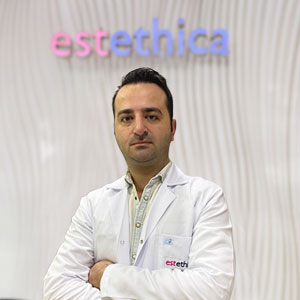
Bachelor’s degree:
Faculty of Medicine, University of Gaziantep
Specialization:
Erciyes University School of Medicine, Plastic Reconstructive and Aesthetic Surgery
Experience:
- State Hospital Nowhere
- Aksaray State Hospital
- Yildirim Beyazit University, Yenimahalle Teaching and Research Hospital
- Abdurrahman Yurtaslan Cancer Teaching and Research Hospital
-
Dr. Erbil KILICHENT specialist in head and neck surgery
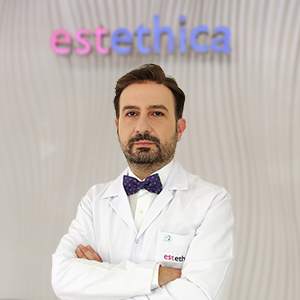
Bachelor’s degree:
Military Medical Academy named after M.V. Lomonosov. Gulhane in Ankara
Specialization:
Military Medical Academy named after M.V. Lomonosov. Gulhane in Ankara, Department of Otorhinolaryngology, Head and Neck Surgery.
Supervisory Board: Cincinnati Children’s Hospital, Children’s Otolaryngology, Cincinnati, Ohio, USA
Experience:
- Chief Physician of the Ottoman Garrison
- Hakkari Military Hospital
- Gulhane Military Medical Academy Khaidarpasha Teaching Hospital Department of Otorhinolaryngology, Head and Neck Surgery
- MediEnt Medical ENT Center
-
Dr. Hussein AslanAesthetic, Plastic and Reconstructive Surgery
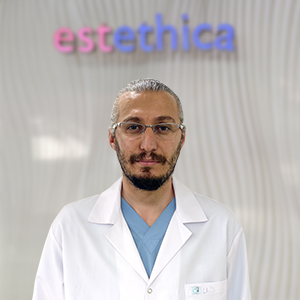
Bachelor’s Degree:
Dickle University School of Medicine
Specialization:
Inyo University School of Medicine – Department of Plastic, Reconstructive and Aesthetic Surgery
Experience:
- Mardin Savur Green Field Health Center – Practitioner
- Mardin Mazi Gora No. 1 ASM Family Medicine – Family Physician
- Şırnak State Hospital Şırnak Cızre Selahattın Şizrelioglu – specialist in plastic surgery
- Diyarbakir State Hospital Selahattin Eyubi – Specialist in Plastic Surgery
- Diyarbakir Memorial Dicle Hospital – specialist in plastic surgery
-
Dr. Mohammed ALMASOral and dental health
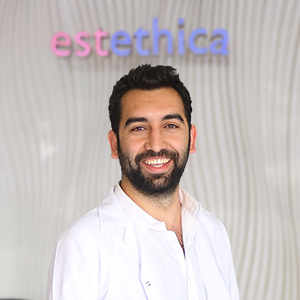
Bachelor’s degree:
Gaziosmanpasha University Dentistry
ITI Implantology MEFFERT
Training in implant surgery and upper dentures on implants
-
Professor Dr. Yildiz Ezturk OrtanOrthodontist at Estethica Clinic
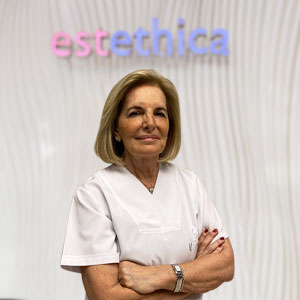
More than 40 years of practical experience
Education:
Bachelor’s degree and graduate: Faculty of Dentistry, Istanbul University – 1974
Specialization:
Faculty of Dentistry, Istanbul University – Department of Orthodontics – 1978
Abroad:
Dental Faculty of the University of Geneva – Assistant to the Department of Orthodontics, 1978-1979.
Assistant Professor:
Faculty of Dentistry, Istanbul University, Department of Orthodontics, 1985-1993.
Professor:
Istanbul University, Faculty of Dentistry – Department of Orthodontics – 1993-2017
The professor is the author of more than 100 scientific publications.
Foreign language: English and French
Reviews
Reviews about us
What a great company 😻 Helped with organizing a breast augmentation in Istanbul. I flew in from Moscow to do my boobs, the price is lower than here, but what great conditions. Airport shuttle, caring, friendly and nice staff. The doctor did everything quickly, explained what implants are suitable, very cheerful, his mood makes the excitement disappear. The clinic is very cozy and beautiful, the room is even better than a hotel room. Thanks to the manager Lyuba, who has been in touch with me for a few months, giving me advice and organizing it all 🍒
Girls, the doctor does the most beautiful stitches in the world!!!! She's just a magician. There are threads on my chest and on my stomach, too. It's only been three months, but even my massage therapist and cosmetologist say they haven't seen stitches like this yet. Feel free to go.
I want to thank Dr. Burak Efeoglu and all of his nursing staff who made me better, you give, with your skill, women confidence. Thank you for your professionalism and excellent treatment of patients!!!!
I had a hair transplant on my head at this clinic. The online consultation was quick enough for me. Arrived. It's been two months, the hair is starting to grow. So far so good. In general the clinic is good, everything is sterile. They have a lot of patients from Europe, so all languages are spoken there. Unfortunately, there was only one Russian interpreter, and sometimes you had to wait for him for about 15 minutes. But everyone speaks English.
I wanted to have a blepharoplasty for a long time, but I never dared. Alena gave me several clinics and doctors to choose from. I chose Aesthetics and I'm very happy. I had almost no swelling or bruising. After 5 days, not everyone could tell that I had an operation!
The reality exceeded expectations! I never thought it would be so awesome! I contacted Lyuba (very nice, attentive and competent person), we discussed all the details, chose the clinic and here I am in Turkey. The first thing that surprised me was the level of medicine and quality! It seems like it was perfect just about EVERYTHING! The staff, the surgeon, the hospital, the conditions, the city, the rest (I have something to compare it to)! YES, I had plastic surgery and at the same time combined vacation with my family (I highly recommend it, it is convenient, beautiful city, there is a huge number of beautiful places). I could write about this plastic surgery story endlessly! A storm of positive emotions, I am happy with the result! Highly recommend it! You won't regret it!
Work
Gallery of works
-
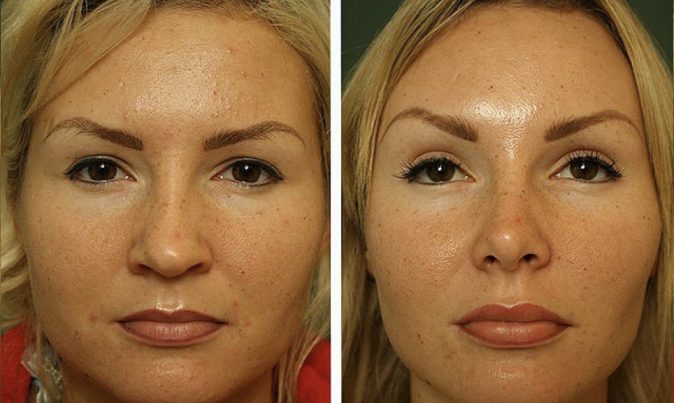
Brow lift – correction of brow position
-
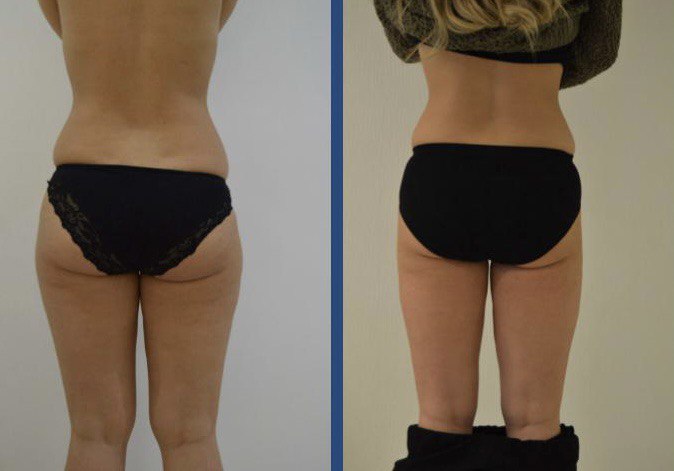
Liposuction of the waistline area. 1 month after surgery
-
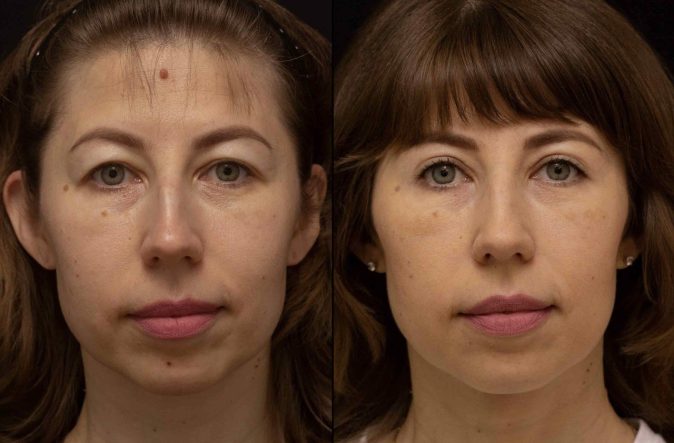
Upper blepharoplasty. 1 month after surgery
-
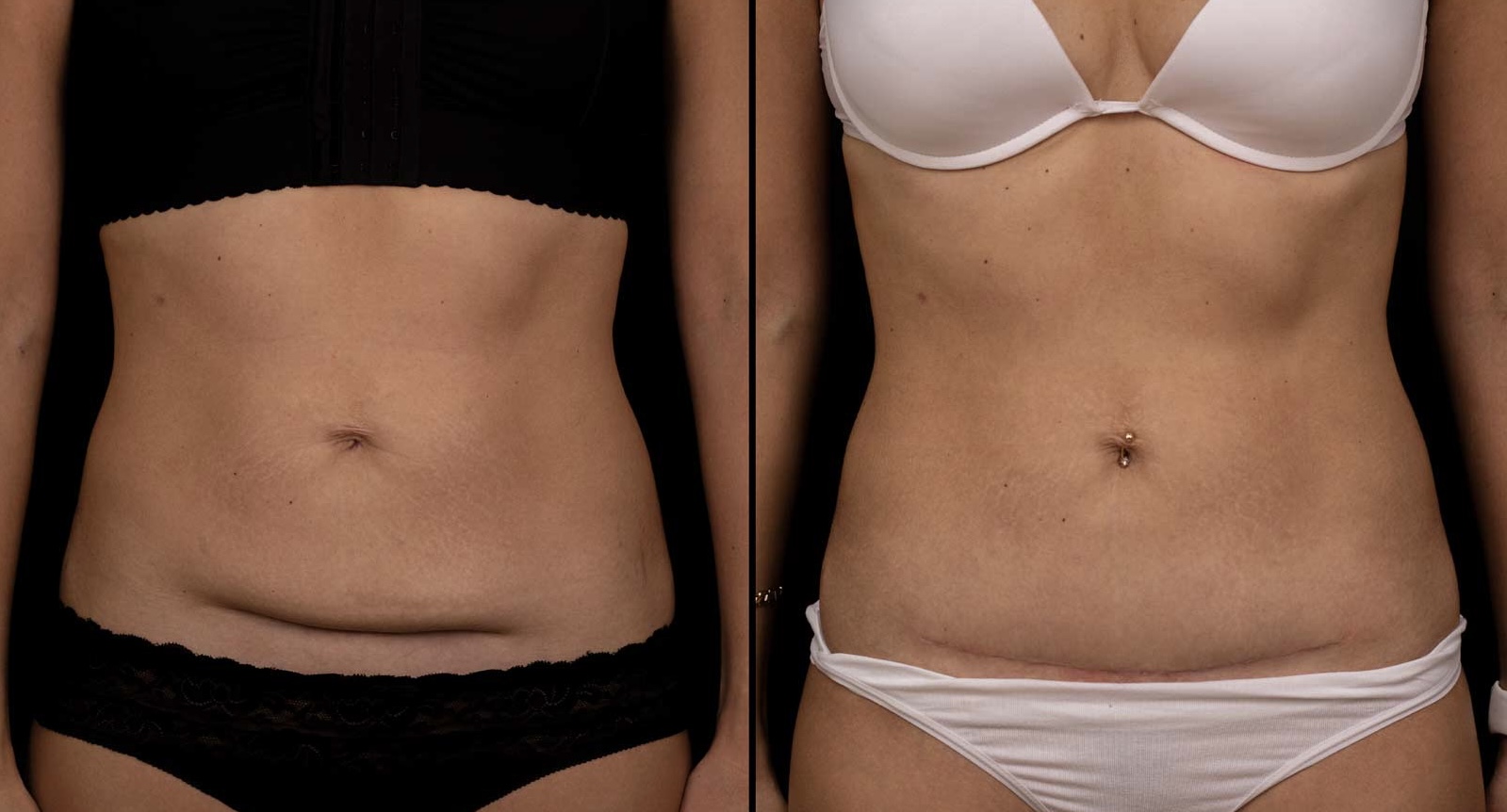
Abdominoplasty. 1 month after surgery
-
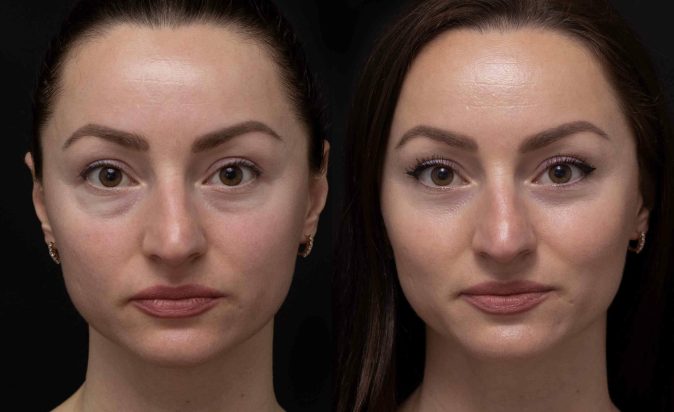
Lower blepharoplasty. 1 month after surgery
-
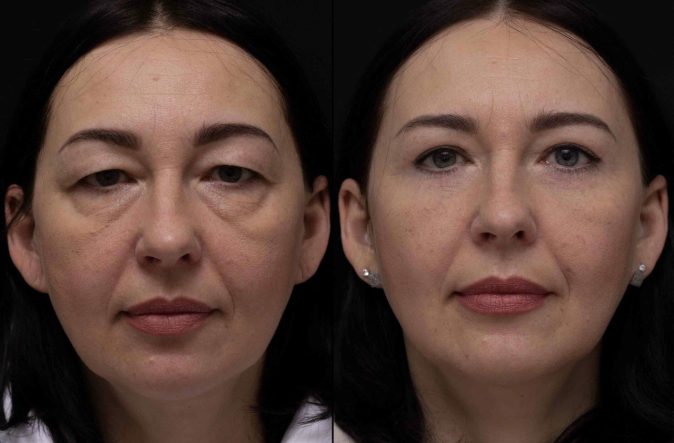
Upper and lower blepharoplasty. 1 month after surgery
-
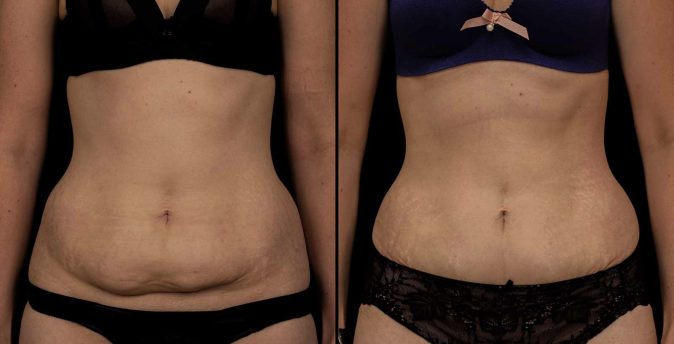
Abdominoplasty (tummy tuck). 1 month after surgery
News
Last news
- Мастопексия (подтяжка груди): Мастопексия является одной из наиболее распространенных хирургических процедур для восстановления формы и подтяжки груди после кормления грудью. Во время процедуры, хирург удаляет излишек кожи и ткани груди, подтягивает оставшуюся ткань и переносит сосок в более подходящее положение. Мастопексия может восстановить упругость и форму груди, придавая ей более молодой и подтянутый вид.
- Маммопластика (пластика груди): Маммопластика включает в себя не только подтяжку груди, но и коррекцию ее формы и размера. Во время процедуры, хирург может использовать импланты для придания объема груди или провести реконструкцию груди при необходимости. Маммопластика позволяет достичь более симметричной и привлекательной формы груди.
- Липофилинг груди: Липофилинг груди – это процедура, при которой с использованием собственного жира пациента улучшается форма и объем груди. Хирург извлекает жир из других областей тела пациента, обрабатывает его и впрыскивает в грудь для придания желаемого объема и формы. Липофилинг груди является отличным вариантом для тех, кто желает естественного увеличения груди без использования имплантов.
- Восстановление послеоперационного периода: После хирургической процедуры восстановления формы груди, важно соблюдать рекомендации и инструкции хирурга для оптимального восстановления. Вот несколько важных моментов:
- Что такое импланты в подбородок? Импланты в подбородок – это искусственные анатомические структуры, изготовленные из медицинского силикона или других биосовместимых материалов. Они имеют различные формы и размеры, которые позволяют пластическим хирургам достичь желаемого вида подбородка у пациента.
- Цель установки имплантов в подбородок: Главная цель установки имплантов в подбородок – это улучшение профиля лица и создание более гармоничных пропорций. Эта процедура может быть рекомендована пациентам с отсутствием объема или слабо выраженным подбородком, а также для исправления асимметрии или последствий травмы.
- Предварительная консультация: Перед установкой имплантов в подбородок пациент должен пройти предварительную консультацию с опытным пластическим хирургом. Во время консультации будет проведена детальная оценка лица и подбородка, обсуждены ожидаемые результаты и возможные ограничения. Врач также расскажет о различных типах имплантов, их размерах и формах, чтобы пациент мог выбрать наиболее подходящий вариант.
- Хирургическая процедура: Установка имплантов в подбородок обычно выполняется под общей анестезией или местной анестезией с седацией. Хирург делает небольшой разрез под подбородком или внутри рта, чтобы создать доступ к кости. Затем имплант внимательно позиционируется и фиксируется на месте. Хирург проверяет внешний вид и пропорции, чтобы достичь оптимального результата. После этого разрезы закрываются с помощью швов или специальных клеевых материалов.
- Восстановление и послеоперационный уход: После процедуры установки имплантов в подбородок пациенту могут быть назначены рекомендации по послеоперационному уходу. Это может включать применение холодных компрессов для снижения отечности, прием прописанных лекарственных препаратов и ограничение физической активности в течение нескольких дней или недель. Важно следовать указаниям врача и регулярно посещать плановые приемы для контроля результата и своевременного выявления возможных осложнений.
- Возможные риски и осложнения: Как и любая хирургическая процедура, установка имплантов в подбородок может сопровождаться определенными рисками и осложнениями. Возможными осложнениями могут быть инфекция, кровотечение, отторжение импланта или неудовлетворительные результаты. Однако соблюдение рекомендаций врача и правильный послеоперационный уход помогают снизить риск возникновения проблем.
- Лицо и шея: Липофилинг может использоваться для улучшения контуров лица и шеи. Он позволяет заполнить углубления, морщины или потерянный объем в области скул, подбородка или околоустной области. Это помогает создать более молодой и свежий вид.
- Грудь: Липофилинг груди может использоваться для увеличения объема и улучшения формы груди у женщин. Он может быть полезен для создания более естественного контура, исправления асимметрии или восстановления объема после родов или потери веса.
- Живот и талия: Липофилинг может помочь достичь более плоского и подтянутого вида живота и талии. Он может использоваться для удаления избыточного жира и создания более гармоничного контура. Эта процедура особенно полезна для пациентов, у которых присутствует нежелательное жировое отложение в этой области.
- Ягодицы: Липофилинг ягодиц может использоваться для увеличения объема и улучшения формы ягодиц. Он может создать эффект подтянутости и молодости, а также улучшить симметрию и контур ягодиц.
- Бедра и бёдра внутренняя поверхность: Липофилинг может использоваться для коррекции объема и формы бедер и их внутренней поверхности. Он может уменьшить объем и улучшить контур в этой области, придавая ногам более подтянутый и эстетически приятный вид.
- Руки: Липофилинг рук может быть проведен для улучшения контуров рук и устранения избыточного жира. Он может помочь устранить “морщинки” и углубления на руках, придавая им более молодой и подтянутый вид.
- Бёдра и голени: Липофилинг может быть применен для улучшения формы и контуров бёдер и голеней. Он может устранить несимметрию, улучшить сглаженность и создать более пропорциональный вид нижних конечностей.
- Колени: Область колен также может быть подвергнута коррекции с помощью липофилинга. Эта процедура может помочь устранить избыточный жир и улучшить контур коленных суставов, придавая им более эстетически приятный вид.
- Лоб и виски: Липофилинг может быть использован для коррекции объема и формы лба и висков. Он может помочь устранить выступающие кости или смещение объема, создавая более гармоничные пропорции в этой области лица.
- Складки на животе: Липофилинг может быть проведен для устранения избыточных жировых складок в области живота. Он помогает создать более плоский и подтянутый вид живота, придавая контурам более определенный вид.
- Что такое липофилинг тела: Липофилинг тела, также известный как автотрансплантация жира, представляет собой процедуру, при которой жир извлекается из одной области тела пациента (например, живота или бедер) с помощью липосакции, а затем пересаживается в другую область, требующую улучшения объема или контура. Эта процедура позволяет достичь естественных и долговременных результатов.
- Принцип действия: Процедура липофилинга тела состоит из нескольких шагов. Сначала, с помощью тонких канюль, проводится липосакция для извлечения жира из донорской области. Затем жир проходит специальную обработку, чтобы удалить лишнюю жидкость и подготовить его к пересадке. Наконец, полученный жир пересаживается в желаемую область тела, чтобы улучшить объем, контур или симметрию.
- Цель процедуры: Основной целью липофилинга тела является достижение естественных и гармоничных результатов, используя собственный жир пациента. Процедура может быть применена для увеличения объема и формирования груди, ягодиц, лица, рук, а также для заполнения морщин и углублений. Липофилинг также может использоваться для реконструкции после травмы или удаления опухоли.
- Преимущества липофилинга тела: Липофилинг тела имеет несколько преимуществ. Во-первых, процедура использует собственный жир пациента, что уменьшает риск отторжения или аллергических реакций. Во-вторых, липофилинг позволяет достичь естественных и долговременных результатов, так как пересаженный жир становится частью организма и сохраняет свою жизнеспособность.
- Индивидуальный подход: Каждый пациент имеет уникальные особенности и желаемые цели. В ходе предварительной консультации пластический хирург проводит детальную оценку и разрабатывает индивидуальный план липофилинга тела, учитывая особенности анатомии и требуемые результаты. Это позволяет достичь наилучшего эстетического эффекта, удовлетворяющего потребности каждого пациента.
- Восстановление и результаты: После процедуры липофилинга тела может потребоваться некоторое время для восстановления. Пациентам рекомендуется следовать указаниям врача, носить компрессионную одежду и избегать интенсивной физической активности в течение определенного периода времени. Окончательные результаты становятся заметными по мере заживления и усвоения пересаженного жира.
- Что такое липосакция гинекомастии: Липосакция гинекомастии – это хирургическая процедура, которая направлена на удаление избыточного жирового отложения в области мужской груди. С помощью этой процедуры возможно достичь более мужественного и плоского контура груди.
- Принцип действия: Во время липосакции гинекомастии пластический хирург делает небольшие надрезы в области груди и вводит тонкие канюли для удаления избыточного жира. Канюлей можно использовать различного размера и формы в зависимости от индивидуальных особенностей пациента. Жир всасывается с помощью специального аппарата или ручной техники. Процедура проводится под местной или общей анестезией, в зависимости от предпочтений пациента и рекомендаций хирурга.
- Цель процедуры: Основной целью липосакции гинекомастии является достижение более мужественного и плоского контура груди у мужчин. Процедура позволяет удалить излишки жира и создать более гармоничный и естественный внешний вид. Целью также является повышение уверенности и самооценки у пациента.
- Индивидуальный подход: Каждый пациент имеет уникальные особенности и потребности. Пластический хирург проводит предварительную консультацию, чтобы оценить степень гинекомастии и определить подходящие методы и техники для достижения наилучших результатов. Индивидуальный подход позволяет адаптировать процедуру липосакции гинекомастии под каждого пациента. Хирург учитывает особенности анатомии, объем жира, степень избыточной ткани груди и желаемые результаты. Это помогает достичь наиболее естественного и гармоничного вида груди.
- Восстановление и результаты: После процедуры липосакции гинекомастии пациентам рекомендуется носить компрессионную одежду для поддержки груди и ускорения заживления. Восстановление может занимать несколько недель, и пациентам рекомендуется избегать физической нагрузки и напряжения в области груди в течение определенного периода времени.
- Квалификация и опыт пластического хирурга:
- Регион и клиника:
- Сложность процедуры:
- Используемые материалы и технологии:
- Индивидуальные потребности пациента:
- Предоперационные и послеоперационные затраты:
- Пациенты с мешками и отеками под глазами:
- Пациенты с избытком кожи и морщинами в области нижних век:
- Пациенты с потерей объема в области нижних век:
- Пациенты с общим хорошим здоровьем:
- Пациенты с реалистичными ожиданиями:
- Пациенты, достигшие физической зрелости:
- Пациенты, прошедшие консультацию с пластическим хирургом:
- Трансконъюктивальная блефаропластика:
- Транскутанная блефаропластика:
- Сочетание методов:
- Другие методы:
- Консультация с хирургом
- Подготовка к операции
- Анестезия
- Нанесение разметки
- Разрез
- Подтяжка тканей
- Закрытие разреза
- Послеоперационный период
- Результат
- vertical – runs from the contour of the areola to the fold under the breasts;
- Periareolar – sutures are placed only in the areola contour zone;
- Anchored – the scar is visually similar to an anchor.
- normotrophic – the most inconspicuous of all. Their tone blends in with the skin. There are no hollows or bumps;
- atrophic – have a sunken shape. The skin in this area is flabby. The most common cause of atrophic scars is stretch marks;
- hypertrophic – characterized by a bright hue and convex shape. Ulcers can form on the scars. Usually scars disappear on their own. However, in some cases they need to be adjusted;
- keloid – there is overgrowth of scar tissue. The scars have a bright coloring and round shape. It is very important to establish before surgery whether there is a tendency to keloids, to avoid complications. The appearance of keloids is associated with hereditary predisposition, peculiarities of the immune system, suppuration or infection of the wound.
- age – older people have more visible scars. Tissues take longer to heal;
- The skill of the surgeon – qualified doctors use good suture material in their work;
- The patient’s body peculiarities – if the patient is prone to tissue overgrowth, the surgery is very cautious;
- care after surgical intervention – trauma, physical exertion prevent rapid healing.
- wear special underwear;
- avoid physical activity for two months;
- treat the seams with antiseptic;
- give up alcohol and cigarettes;
- Use Band-Aids;
- Do not wet the scars for the first 7 days.
- Submammary – located in the area of the pectoral fold. It is always hidden under clothing;
- Periareolar – located in the area of the areola contour. The difference in skin tone makes the suture inconspicuous;
- axillary or axillary – done in the axillae. It masks the features of the skin in these areas.
- Purulent discharge – occurs when the wound is infected. At the same time, the temperature rises and soreness appears. Such manifestations should not be confused with lymphoma. If lymph (a clear yellowish viscous fluid) is released, antiseptic treatment of the sutures is necessary. This is a normal reaction to tissue damage;
- keloid scars – formed if there is a tendency for overgrowth of coarse fibrous connective tissues. A tumor-like scar causes discomfort. Keloids are treated with hormones or surgery.
- wearing compression underwear;
- taking anti-inflammatory drugs.
- mistakes of the surgeon – it is better to give preference to proven clinics. Nuevo Hospital employs people who have years of experience in such operations;
- Improper care – changes in the position of the implant and compression of nerve endings can lead to this outcome;
- small breast size and elongated shape with a narrow base;
- secondary prosthetics – trauma to the breast can occur during repeated interventions.
- give up alcohol and cigarettes;
- take vitamins;
- eat a balanced diet;
- undergo physical therapy.
- hypoplasia, micromastia – congenital breast anomalies;
- hypotrophy;
- postlactational atrophy of the mammary glands;
- asymmetry;
- personal wishes;
- loss of volume;
- correction of ptosis;
- recovery from removal of neoplasms.
- pregnancy and lactation;
- diabetes mellitus;
- kidney or liver problems;
- blood clotting disorders;
- the presence of chronic diseases;
- cardiovascular diseases;
- mental disorders;
- hypertension;
- Acute respiratory infections and acute respiratory viral infections;
- thrombophlebitis and thrombosis;
- cancerous neoplasms.
- beautiful shape;
- short rehabilitation period;
- no problems with lactation in the future;
- minimal traumatism.
- decreased sensitivity – usually goes away after a few months;
- If there is scarring, barely noticeable scars remain.
- round – with a push-up effect. Used to eliminate the effects of dramatic weight loss or age-related changes;
- drop-shaped – has a natural appearance.
- silicone – hypoallergenic implants are absolutely safe for your health;
- hydrogel – does not cause inflammatory reactions and cannot be rejected. The only disadvantage is the high cost of endoprostheses;
- Silicate – there is a possibility of placing large implants because of the small weight;
- saline is the most unpopular kind. It has rarely been used recently because of the possibility of rupture.
- age-related changes;
- breastfeeding;
- sudden weight gain or loss.
- Periareolar – eliminates minimal ptosis. The nipples are lifted above the areola. The suture is placed on the border of the areola and the skin. The scar after surgery is practically invisible;
- vertical – corrects various degrees of sagging breasts. Tissues are hardly traumatized. The incision goes around the nipple and extends vertically to the inframammary fold;
- The T-shaped is the best method for severe mammary gland prolapse.
- the number of grafts that are transplanted;
- area of the procedure (beard transplantation is more expensive);
- innovation of the methodology.
- a consultation with a surgeon;
- taking tests;
- anesthesia;
- medical supplies;
- surgical intervention;
- the operation report in different languages;
- postoperative care.
- Day 1 – After the surgical intervention, the patient is transferred to her room. For the next two hours she is monitored by medical personnel. The anesthesiologist monitors the condition until the patient regains consciousness after anesthesia. After that, you start taking painkillers, which will relieve the discomfort in the chest area. If complications occur, antibiotics are always taken. After dressing the doctor puts on a special compression garment, which will support and fix the mammary glands. Wearing it during the first month is mandatory, even when sleeping. It prevents the implants from shifting;
- Day 2-4: On the second day, the patient is discharged. Doctors prescribe a scheme for the rehabilitation period. The first four days should be spent in complete rest. It is worth avoiding all physical activity. Pain and discomfort appear at this time. After taking the prescribed medication, they begin to subside. The temperature may rise to subfebrile levels;
- Day 3-4 – the breasts are swollen and look unnatural. Sometimes unpleasant sensations persist. This condition goes away after a few weeks. Physical activity is prohibited at this time;
- Day 5-6: practically no pain sensations. You should only sleep on your back. It is forbidden to lift weights and play sports;
- Day 7-14 – One week after surgery, you must come in for a consultation with the surgeon. The doctor evaluates the condition of the sutures and the placement of the implants. If the patient has any complaints, the doctor will make recommendations or prescribe medication;
- Day 14-30 – complete disappearance of pain sensations is noted. It is forbidden to play sports, as well as go to the pool, solarium, sauna. The maximum load is walking;
- Day 30-60 – after the 1st month a surgeon’s examination is mandatory. If the recovery is successful, it is possible to refuse compression underwear during sleep only with the doctor’s permission.
- fever that lasts more than a week;
- discharge in the area of the stitches;
- redness of scars;
- deterioration of the condition.
- improper metabolism;
- taking medications;
- iron deficiency in the body;
- hormonal disorders;
- frequent stresses;
- diseases of the gastrointestinal tract;
- genetic predisposition;
- dieting and malnutrition.
- Oncology;
- pregnancies;
- breastfeeding;
- problems with the cardiovascular system;
- chronic kidney and liver diseases;
- Allergic reactions to medications;
- diabetes mellitus;
- blood clotting disorders;
- hypertension.
- excessive height of the ear cup. In this case, the surgery is aimed at pulling the bowl in or removing a strip of cartilage;
- Underdevelopment of the natural ear folds (antifurcations) – its formation is performed by modeling cartilage.
- aesthetic – it gets rid of floppiness and asymmetry, corrects the shape of the auricles;
- Reconstructive – corrects abnormalities of the lobe, curl, microtia, atony. Special techniques are used for correction.
- Scalpel – one of the common types of otoplasty. The doctor makes an incision with a microsurgical scalpel. It is worth noting that the procedure can cause complications. After surgery, the patient needs a long recovery period. For this reason, surgeons are trying to replace this technique with a more gentle one;
- Radiowave – a modern non-traumatic method. The accuracy of the high-frequency radio wave beam exceeds the effect of the most advanced metal scalpel. The radio waves “evaporate” the cells to which they are directed. They do not affect the surrounding tissue. The radio wave has a coagulation effect. As a consequence, the operation takes place without blood loss. Recovery is very quick. Complications appear in rare cases.
- severe liver and kidney diseases;
- diabetes mellitus;
- cardiovascular diseases;
- Oncology;
- pregnancy and lactation;
- inflammations of the skin on the face;
- individual intolerance to medications.
- causes of alopecia;
- the condition of the donor area;
- circulation;
- postoperative care.
- FUE – the back of the head and the area behind the ear serve as the donor area. Local anesthesia is administered during root extraction in these parts. Roots are transplanted into the balding area. There are no scars or scars after surgery. The effect is visible after a year;
- DHI – follicles are implanted into the area shaped with a special tool. The result can also be assessed not earlier than a year later.
- efficiency;
- aesthetic appearance;
- painlessness;
- the possibility of choosing the methodology;
- minimum number of contraindications;
- quick rehabilitation;
- the ability to cover a large volume;
- correction of the hair growth line.
- the result is fully manifested after 12 months;
- If the area of the lesion is large, it may be necessary to repeat the procedure;
- Some patients experience discomfort on the first day after surgery.
- The 1st category – form an antislip;
- The 2nd category – they form the countercapsule and reduce the bowl of the auricle.
- The surgeon’s examination;
- of taking tests;
- anesthesia;
- surgical intervention;
- medical report of the operation;
- postoperative care.
- nasal deformities;
- congenital abnormalities;
- nasal septum deviations;
- cosmetic flaws.
- ridge formation leads to the development of a growth, tissue trauma;
- spikes irritate the mucosa, they can be on one side or both at the same time;
- The S-shape or C-shape is due to the displacement of the septum.
- general blood test;
- a detailed blood test;
- electrocardiogram;
- computerized tomography;
- antigen count test;
- blood clotting test;
- blood for hepatitis B and C;
- HIV blood test.
- diseases of the thyroid gland;
- autoimmune diseases;
- diabetes mellitus;
- hereditary predisposition;
- taking steroids and hormones;
- The appearance of scars.
- local – the lesion is expressed as round or oval spots;
- subtotal – characterized by the association of spots in groups. Covers up to 40% of the entire area;
- nested – characterized by a large area of the lesion;
- total – the hairless areas go up gradually.
- uneven hair cover;
- the appearance of spat;
- the desire to change the line of growth;
- The need to camouflage scars and other imperfections.
- cardiovascular diseases;
- diabetes mellitus;
- problems with blood clotting;
- mental disorders;
- pus-like inflammations in the area where the procedure is being performed;
- poor quality of donor material;
- skin, fungal diseases.
- FUT is a technique that involves surgically removing a scalp flap with hair follicles. Grafts are placed with tweezers through small incisions. The operation facilitates obtaining a large amount of donor material. Be sure to take into account the direction of the hair, so that the beard is uniform. The disadvantage of the procedure can be called the appearance of a scar in the donor area;
- FUE is a minimally invasive method. The rotating instrument extracts from the back of the grafts. They are transplanted into the desired areas;
- HFE is a modern version of the FUE technique. Micro-puncture needles retrieve hair grafts. With the help of an implant, it is possible to transplant hairs without damaging tissue. This option seals the existing facial vegetation. On average, 90 to 98% of grafts take root.
- earlobes;
- asymmetry of the auricles;
- the ugly shape of the ears;
- congenital deformities;
- injuries and burns;
- disproportionate size of the lobe;
- Partial or complete absence of auricles.
- cardiovascular diseases;
- cancerous neoplasms;
- chronic hypertension;
- diabetes mellitus;
- problems with the endocrine system and blood clotting disorders;
- pregnancy and the period of breastfeeding;
- kidney and liver disease.
- aesthetic – aimed at eliminating congenital cosmetic defects. The majority of surgeries are to correct floppiness, asymmetry, and size reduction. The indication for the procedure is the patient’s personal desire to correct the shape of the ears;
- Reconstructive – it gets rid of complex deformities caused by underdevelopment of external parts, trauma, burns. Corrects microtia, atony, curl and lobe abnormalities. This technique is much more complicated than the aesthetic one. The restoration of the missing part of the auricle is done by cutting off a piece of cartilage from the ribs for further growth of the graft. Subsequently, the skin is “grafted” to it. The procedure involves a complex and extensive preliminary diagnosis.
- the location of the lower points of the earlobes on the same horizontal line with the lower part of the nose;
- placing the upper point of the ear and the outer eye corner on the same line;
- the length of each lobe – no more than 20 mm;
- 30-degree maximum angle of the ear plane in relation to the head;
- The angle between the sink and the head is up to 90 degrees.
- bruises;
- edema;
- painful sensations;
- decreased sensitivity.
- General analysis of blood and urine;
- biochemical blood test;
- coagulogram;
- blood for HIV and syphilis;
- blood sugar.
- it is forbidden to drink alcohol and smoke for 14 days;
- take vitamins and dietary supplements only with the permission of your doctor;
- exclude aspirin and any anti-inflammatory drugs.
- Oncology;
- severe chronic diseases;
- diabetes mellitus;
- problems with blood clotting;
- the presence of immunodeficiency conditions;
- pregnancy and breastfeeding.
- underdevelopment of the antecubitus;
- large size of the auricle;
- floppy ears;
- congenital defects;
- underdevelopment of the auricle.
- wear a compression bra;
- refrain from physical activity;
- exclude sudden movements with your hands;
- Do not use a tanning bed, a bathhouse, or a sauna;
- Refrain from intimacy for the first 14 days.
- bruises and bruises – after a while the bruises go away;
- Allergic reactions – surgeons use high-quality materials that do not cause allergies. However, some medications can provoke such a response from the body;
- changes in the position of endoprostheses – consequences of neglecting to wear compression underwear, as well as engaging in sports, sudden movements.
- unremitting discomfort for more than 2 months;
- large bruises;
- changes in skin tone.
- general and biochemical blood tests;
- blood for HIV and RW;
- spectral analysis of hair;
- blood sugar.
- give up alcohol and cigarettes;
- do not take medications that affect blood clotting;
- stop massaging the head;
- limit physical activity;
- avoid psychological turmoil.
- anagen – the growth phase;
- catagen – degeneration;
- telogen – stagnation;
- exogen – fallout.
- liver diseases;
- pancreatitis;
- cholecystitis;
- peptic ulcer disease;
- Salmonellosis;
- dysentery;
- the presence of Helicobacter bacteria.
- by the internal effect of the filler;
- a decrease in density;
- the response of the immune system;
- low quality.
- of strong mechanical influences;
- leaks;
- shape deformations;
- sheath wear and tear.
- personal wishes – it is possible to change the shape or size of the breasts. Mammoplasty can be repeated after one year at the earliest;
- complications arising – can appear at any time after surgical intervention. Most often they are caused by ignoring the doctor’s advice. Physical activity should be avoided during this period. Compression underwear is worn in the first month for recovery;
- age-related changes – manifested by sagging of the denture. Collagen and elastin production decreases with age. Also affected by lactation, pregnancy, dramatic weight loss or weight gain.
- electrocardiogram;
- mammography;
- fluorography;
- general and biochemical blood tests;
- Breast ultrasound.
- loss of volume;
- asymmetry of the mammary glands;
- pronounced ptosis;
- loss of elasticity;
- The prolapse of the mammary glands;
- age-related changes in the skin;
- nipple and areola displacement;
- Significant stretch marks.
- pregnancy and lactation;
- problems with blood clotting;
- cancerous neoplasms;
- diseases in a chronic form;
- cardiovascular problems;
- diabetes mellitus;
- mastopathy.
- General analysis of urine and blood;
- fluorography;
- mammography;
- electrocardiogram;
- breast ultrasound.
- vertical is considered non-traumatic. The surgeon makes an incision in the middle of the lower areola and goes down to the lower breast fold. The surgery involves not only excision of excess skin, but also the removal of glandular tissue;
- periareolar or circular. In this case, the incision goes around the areola. The nipple is lifted up, and the excess skin is removed. The indications for this method are small breast size and slight ptosis;
- T-shaped or anchor – the incision starts from the lower edge of the areola and ends in the lower fold of the mammary glands. The nipples and areola are moved upward to improve the shape of the breasts. The method allows you to hide a strong ptosis.
- The mammary glands are marked for future incisions.
- General anesthesia is administered.
- Incisions are made and excess skin is removed.
- They move the nipples and areola.
- Stitches are placed.
- The patient’s gender – men have a curved line, while women have a straight line;
- age – it is located lower in young people;
- the width of the forehead – the size affects the shape of the line;
- directions of the hairs – the natural angle and the growth line should contribute to the zigzag arrangement;
- The patient and the doctor select the best option for the client’s needs.
- flattened – there is a decrease in volume and sagging. The breasts have a flat shape. These effects occur because milk production is stopped after feeding;
- asymmetrical – formed by improper attachment to the breast. One mammary gland may become larger and more distended;
- increased – the result of weight gain;
- lowered – a consequence of weight loss and reduction in volume. The skin stretches a lot and the breasts sag.
- Periareolar – the excess skin is excised and the nipples and areola are lifted. The surgery does not increase the volume of the breasts;
- Anchor or T-shaped – made with pronounced ptosis. The breast lift is performed simultaneously with the elimination of asymmetry. The doctor makes incisions in the natural pectoral fold and in the area of the lower areola line. They are connected by a third vertical notch;
- vertical – the surgeon removes excess skin and lifts the breast. The incision goes along the bottom of the areola. The vertical incision is perpendicular to the natural fold.
- individual characteristics of the body;
- the patient’s personal wishes.
- in the armpit;
- along the areola;
- in the natural pectoral fold.
- the absence of physical exertion;
- refusal of water procedures;
- control of the temperature regime in the room (the optimal value is from 20 to 22 degrees).
- Anagenous – it is caused by various medications, chemicals, radiation exposure. Radiation and chemotherapy cause complete loss of hair. If the loss is related to taking medication, you must stop the treatment. Then the hairs will start to regenerate;
- telogenic – an acute or chronic form is observed. The course of the acute form usually does not exceed 6 months. Chronic alopecia can last up to several years.
- Androgenetic – the action of androgens reduces the amount of hair;
- Diffuse – uniform hair loss occurs because the hairs go into a dormant state prematurely for a variety of reasons;
- congenital – it is very rare and is a companion of skin diseases. Transplantation is the only way out in this situation;
- nesting – bald areas appear. According to many trichologists, the cause is an autoimmune process and a genetic factor;
- cicatricial – a consequence of mechanical damage;
- Traction – appears due to the wearing of dreadlocks, hair extensions, hairpieces, tight braids. Because of the large mass, the structure of the hair is thinning and crumbling;
- senile – a consequence of degenerative changes in the body;
- Seborrheic – the cause is neglected seborrhea;
- symptomatic – manifestation of a serious infectious disease, vitamin deficiency.
- nutrient deficiencies (iron, zinc, lysine);
- hormonal malfunctions;
- endocrine problems;
- the constant use of a hair dryer;
- hypothermia in winter;
- stresses;
- long-term intake of various medications;
- chemical perms, aggressive dyes.
- general and biochemical blood tests;
- blood for hormones;
- spectral analysis of the hairline.
- vitamin complexes to compensate for nutrient deficiencies;
- iron-containing preparations;
- hormonal medications to stabilize the imbalance;
- external agents (with minoxidil);
- mesotherapy.
- mustard and pepper – to increase blood circulation in the skin;
- Onion – nourishes the bulbs and skin.
- properly fixed endoprostheses – provides support during rehabilitation;
- The fabric lifts the breast and prevents it from shifting;
- swelling is reduced – excess fluid is eliminated;
- The load on the spine is reduced – large breasts put pressure;
- the skin is protected from mechanical influences.
- The 1st one is designed to reduce the load on the bones of the spine. It is recommended for women with large breasts. The degree of compression does not exceed 21 mm Hg. Such underwear is considered to be prophylactic;
- 2nd – the degree of compression varies between 21-32 mmHg. This type is considered medical. It is prescribed by a specialist;
- 3. 32 to 45 mmHg. It is forbidden to wear underwear without a doctor’s recommendation. It is dressed with special gels;
- The 4th has a high level of compression, more than 46 mmHg. It is used after surgical intervention. As the body recovers, it can be replaced with another.
- stretching of the skin;
- loss of elasticity;
- the divergence of the stitches;
- slow recovery;
- discomfort;
- The load on the bones of the spine is high;
- by the appearance of visible scars;
- asymmetrical arrangement of the mammary glands.
- change the shape of the mammary glands;
- increase the size of your breasts;
- eliminate congenital asymmetry;
- restore breasts after removal of tissues caused by oncology;
- get rid of severe ptosis.
- the presence of diseases of a mental nature;
- blood clotting disorders;
- chronic illnesses;
- skin inflammations;
- diabetes mellitus;
- cancerous formations.
- rounds – increase the size of the breasts in the upper part. If patients have subcutaneous fatty tissue and developed pectoral muscles, this option would be an excellent solution. The patient will have a gorgeous cleavage;
- anatomical – emphasize natural contours. This type is suitable for patients who have a low areola.
- low – has a small height and a wide base. An implant cannot greatly increase the size of your breasts. On the plus side, you can call a natural look of the breasts. It corrects pronounced ptosis;
- medium is the most popular of all the others. Increases your breasts by no more than 2 sizes. The mammary glands look natural;
- high – promotes enlargement of the breasts and gives a noticeable volume;
- extra-high – gives a large size and has a high location.
- hydrogel – based on biopolymers. If the outer shell is damaged, the compound does not cause damage to the body. The consistency and density resemble breast tissue;
- saline – with saline solution, which is injected into the inserted endoprosthesis. The small incision is almost invisible;
- silicone – the density is determined by the cohesive gel;
- silicate – based on silicate balls. These are new implants that have not been fully studied.
- smooth – easy to install. This type has a low cost. The structure is thin and fragile. Subjected to mechanical influences;
- textured – has good durability. These options are more expensive than the previous ones.
- Washing of the head is allowed after one week;
- Exclude salty, spicy foods and alcohol from your diet;
- refuse to do sports for a month;
- Avoid overheating – do not visit the bathhouse, sauna, solarium;
- You can walk without a bandage after consulting your doctor;
- It is forbidden to wear glasses with heavy frames in the first 2 months.
- congenital anomalies – hypoplasia, mastopathy;
- Breast hypotrophy;
- postlactational atrophy;
- asymmetry of the mammary glands;
- a small breast size;
- the desire to change the shape.
- severe diseases of internal organs;
- chronic illnesses;
- acute infections;
- diabetes mellitus;
- cancerous neoplasms;
- lactation;
- blood clotting disorders.
- submuscular – the implant is placed in the pocket so that it covers the entire muscle fibers;
- subfascial – place of insertion over the connective-tissue sheath (fascia). This way is considered complicated;
- subglandular – the pocket between the mammary gland tissue and the pectoral muscles is filled;
- biplanar – the surgeon forms two pockets. The upper part of the implant is covered with muscle fiber, and the lower part is adjacent to the glandular tissue.
- periareolar – along the lower edge of the areola;
- Submammary – runs along the contour of the natural fold;
- axillary – through the axilla.
- General analysis of blood and urine;
- biochemical blood test;
- breast ultrasound;
- fluorography;
- Syphilis and HIV testing;
- electrocardiogram;
- blood clotting test.
- Draw a marking on the chest.
- General anesthesia is administered.
- They make incisions. After tissue delamination, a pocket is formed into which an implant is placed.
- Sutures and a sterile dressing are applied.
- eliminate alcohol and cigarettes for a month;
- in 1.5 weeks do not take drugs that thin the blood;
- the operation is done on an empty stomach.
- diabetes mellitus;
- blood clotting disorders;
- cancerous neoplasms;
- Acute respiratory infections and acute respiratory infections;
- mental problems;
- folliculitis.
- Increased sensitivity – discomfort and soreness may occur with light touches;
- The appearance of stretch marks – they are provoked by the growth of breast tissue. Stretching of collagen fibers leads to the formation of whitish streaks;
- colostrum appears in the last trimester.
- The end of milk production – otherwise infection can occur;
- stabilization of the weight, size and shape of the breasts in order to select the optimal endoprostheses;
- recovery of the body.

Какие преимущества может предложить вагинопластика для женщин?
Вагинопластика – это не только пластическая процедура, но и медицинское решение, которое может принести множество преимуществ женщинам.
1. Восстановление после родовых травм:
Роды могут оказывать значительное воздействие на влагалище и окружающие ткани, приводя к растяжению и потере тонуса. Вагинопластика позволяет восстановить структуру влагалища, укрепить мышцы и возвращать его естественный внешний вид. Это помогает женщинам восстановиться после родовых травм и вернуться к активной сексуальной жизни.
2. Лечение дисфункций мочевого пузыря:
Неконтролируемое мочеиспускание или учащенная необходимость посещать туалет могут быть причиной неудобства и снижения качества жизни. Вагинопластика может помочь укрепить мышцы мочевого пузыря и сосредоточиться на решении этой проблемы. После процедуры многие женщины замечают существенное улучшение контроля над мочеиспусканием и уменьшение симптомов дисфункции мочевого пузыря.
3. Повышение самооценки и уверенности:
Некоторые женщины могут испытывать комплексы или дискомфорт из-за внешнего вида своего влагалища. Вагинопластика позволяет изменить размер, форму и внешний вид влагалища в соответствии с желаемыми ожиданиями пациентки. Это может привести к повышению самооценки, уверенности в себе и улучшению качества сексуальной жизни.
4. Улучшение сексуального удовлетворения:
Некоторые женщины могут испытывать дискомфорт или снижение сексуального удовлетворения из-за физических факторов, таких как растяжение влагалищных мышц или несоответствие размеров влагалища и партнера. Вагинопластика может улучшить эти аспекты, возвращая тонус и упругость влагалища. Это может привести к усилению ощущений во время полового акта, улучшению оргазма и удовлетворения как у женщины, так и у ее партнера.
5. Коррекция врожденных дефектов:
У некоторых женщин могут быть врожденные аномалии или несоответствия в структуре влагалища, которые могут вызывать физические или эмоциональные неудобства. Вагинопластика позволяет корректировать эти дефекты, восстанавливая нормальную анатомию и функциональность. Это может значительно улучшить качество жизни и уверенность женщины.
Вагинопластика предлагает ряд преимуществ для женщин, включая восстановление после родовых травм, лечение дисфункций мочевого пузыря, повышение самооценки и уверенности, улучшение сексуального удовлетворения и коррекцию врожденных дефектов. Однако перед принятием решения о вагинопластике важно обратиться к квалифицированному пластическому хирургу для консультации и оценки индивидуальных потребностей. Необходимо обсудить желаемые результаты, возможные ограничения и риски, чтобы принять информированное решение и получить максимальную пользу от данной процедуры.
Read news
Вагинопластика – это не только пластическая процедура, но и медицинское решение, которое может принести множество преимуществ женщинам.
1. Восстановление после родовых травм:
Роды могут оказывать значительное воздействие на влагалище и окружающие ткани, приводя к растяжению и потере тонуса. Вагинопластика позволяет восстановить структуру влагалища, укрепить мышцы и возвращать его естественный внешний вид. Это помогает женщинам восстановиться после родовых травм и вернуться к активной сексуальной жизни.
2. Лечение дисфункций мочевого пузыря:
Неконтролируемое мочеиспускание или учащенная необходимость посещать туалет могут быть причиной неудобства и снижения качества жизни. Вагинопластика может помочь укрепить мышцы мочевого пузыря и сосредоточиться на решении этой проблемы. После процедуры многие женщины замечают существенное улучшение контроля над мочеиспусканием и уменьшение симптомов дисфункции мочевого пузыря.
3. Повышение самооценки и уверенности:
Некоторые женщины могут испытывать комплексы или дискомфорт из-за внешнего вида своего влагалища. Вагинопластика позволяет изменить размер, форму и внешний вид влагалища в соответствии с желаемыми ожиданиями пациентки. Это может привести к повышению самооценки, уверенности в себе и улучшению качества сексуальной жизни.
4. Улучшение сексуального удовлетворения:
Некоторые женщины могут испытывать дискомфорт или снижение сексуального удовлетворения из-за физических факторов, таких как растяжение влагалищных мышц или несоответствие размеров влагалища и партнера. Вагинопластика может улучшить эти аспекты, возвращая тонус и упругость влагалища. Это может привести к усилению ощущений во время полового акта, улучшению оргазма и удовлетворения как у женщины, так и у ее партнера.
5. Коррекция врожденных дефектов:
У некоторых женщин могут быть врожденные аномалии или несоответствия в структуре влагалища, которые могут вызывать физические или эмоциональные неудобства. Вагинопластика позволяет корректировать эти дефекты, восстанавливая нормальную анатомию и функциональность. Это может значительно улучшить качество жизни и уверенность женщины.
Вагинопластика предлагает ряд преимуществ для женщин, включая восстановление после родовых травм, лечение дисфункций мочевого пузыря, повышение самооценки и уверенности, улучшение сексуального удовлетворения и коррекцию врожденных дефектов. Однако перед принятием решения о вагинопластике важно обратиться к квалифицированному пластическому хирургу для консультации и оценки индивидуальных потребностей. Необходимо обсудить желаемые результаты, возможные ограничения и риски, чтобы принять информированное решение и получить максимальную пользу от данной процедуры.
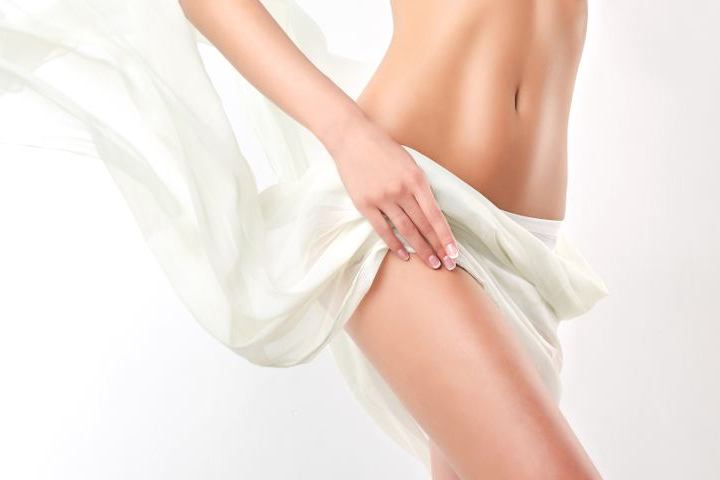
Что такое вагинопластика и как она выполняется?
В современном мире косметические и пластические операции стали обычной практикой, и вагинопластика не исключение. Вагинопластика – это хирургическая процедура, которая выполняется с целью восстановления или улучшения внешнего вида и функциональности влагалища.
Что такое вагинопластика?
Вагинопластика, также известная как вагинальная реконструктивная хирургия, включает в себя ряд процедур, направленных на изменение внешнего вида и функции влагалища. Эта операция может быть выполнена по разным причинам, включая медицинские и косметические. Медицинские причины могут включать восстановление после родовых травм или врожденных дефектов, а также лечение дисфункций мочевого пузыря. С другой стороны, косметические причины могут включать изменение размера, формы и внешнего вида влагалища с целью увеличения уверенности и комфорта пациентки.
Процедура вагинопластики:
Вагинопластика может быть выполнена различными методами, в зависимости от индивидуальных потребностей и целей пациентки. Вот общий обзор процедуры:
1. Консультация и оценка: Первым шагом является консультация с квалифицированным пластическим хирургом, специализирующимся в области вагинопластики. Во время консультации будут обсуждены желаемые результаты, возможные ограничения и риски, связанные с операцией. Хирург проведет осмотр и оценит анатомию влагалища.
2. Подготовка к операции: Перед операцией пациентке может потребоваться соблюдение определенных рекомендаций, таких как прекращение приема определенных лекарств, курение и употребление алкоголя. Это поможет снизить риск осложнений во время и после операции.
3. Хирургическая процедура: Вагинопластика может включать различные методы и техники, в зависимости от конкретных потребностей пациентки. Некоторые из распространенных подходов включают:
– Лазерная вагинопластика: Этот метод использует лазерное облучение для уменьшения размера или улучшения внешнего вида влагалища. Лазерная вагинопластика обычно менее инвазивная и требует меньшего времени для восстановления.
– Влагалищная реконструкция: Этот вид вагинопластики применяется для восстановления влагалища после родовых травм или других повреждений. Хирург создает новую структуру влагалища, восстанавливая ее функциональность и внешний вид.
– Лобиопластика: Этот метод используется для изменения внешнего вида вульвы. Хирург удаляет излишние ткани или изменяет их форму, чтобы достичь желаемых результатов.
4. Восстановление и послеоперационный уход: После проведения операции пациентке потребуется время для восстановления. Хирург предоставит рекомендации по уходу и возможностям облегчить дискомфорт и ускорить заживление. Обычно рекомендуется избегать интенсивной физической активности и половых контактов в течение определенного периода времени.
Вагинопластика – это процедура, которая может улучшить качество жизни женщин, восстановить ее самооценку и комфорт. Она может быть выполнена по медицинским или косметическим причинам и требует консультации с квалифицированным пластическим хирургом. Каждая процедура индивидуальна, и важно внимательно обсудить желаемые результаты, ограничения и риски с хирургом перед принятием окончательного решения. Современные техники вагинопластики предлагают безопасность и надежность, что делает эту процедуру все более популярной среди женщин, желающих улучшить свое здоровье и самочувствие.
Read news
В современном мире косметические и пластические операции стали обычной практикой, и вагинопластика не исключение. Вагинопластика – это хирургическая процедура, которая выполняется с целью восстановления или улучшения внешнего вида и функциональности влагалища.
Что такое вагинопластика?
Вагинопластика, также известная как вагинальная реконструктивная хирургия, включает в себя ряд процедур, направленных на изменение внешнего вида и функции влагалища. Эта операция может быть выполнена по разным причинам, включая медицинские и косметические. Медицинские причины могут включать восстановление после родовых травм или врожденных дефектов, а также лечение дисфункций мочевого пузыря. С другой стороны, косметические причины могут включать изменение размера, формы и внешнего вида влагалища с целью увеличения уверенности и комфорта пациентки.
Процедура вагинопластики:
Вагинопластика может быть выполнена различными методами, в зависимости от индивидуальных потребностей и целей пациентки. Вот общий обзор процедуры:
1. Консультация и оценка: Первым шагом является консультация с квалифицированным пластическим хирургом, специализирующимся в области вагинопластики. Во время консультации будут обсуждены желаемые результаты, возможные ограничения и риски, связанные с операцией. Хирург проведет осмотр и оценит анатомию влагалища.
2. Подготовка к операции: Перед операцией пациентке может потребоваться соблюдение определенных рекомендаций, таких как прекращение приема определенных лекарств, курение и употребление алкоголя. Это поможет снизить риск осложнений во время и после операции.
3. Хирургическая процедура: Вагинопластика может включать различные методы и техники, в зависимости от конкретных потребностей пациентки. Некоторые из распространенных подходов включают:
– Лазерная вагинопластика: Этот метод использует лазерное облучение для уменьшения размера или улучшения внешнего вида влагалища. Лазерная вагинопластика обычно менее инвазивная и требует меньшего времени для восстановления.
– Влагалищная реконструкция: Этот вид вагинопластики применяется для восстановления влагалища после родовых травм или других повреждений. Хирург создает новую структуру влагалища, восстанавливая ее функциональность и внешний вид.
– Лобиопластика: Этот метод используется для изменения внешнего вида вульвы. Хирург удаляет излишние ткани или изменяет их форму, чтобы достичь желаемых результатов.
4. Восстановление и послеоперационный уход: После проведения операции пациентке потребуется время для восстановления. Хирург предоставит рекомендации по уходу и возможностям облегчить дискомфорт и ускорить заживление. Обычно рекомендуется избегать интенсивной физической активности и половых контактов в течение определенного периода времени.
Вагинопластика – это процедура, которая может улучшить качество жизни женщин, восстановить ее самооценку и комфорт. Она может быть выполнена по медицинским или косметическим причинам и требует консультации с квалифицированным пластическим хирургом. Каждая процедура индивидуальна, и важно внимательно обсудить желаемые результаты, ограничения и риски с хирургом перед принятием окончательного решения. Современные техники вагинопластики предлагают безопасность и надежность, что делает эту процедуру все более популярной среди женщин, желающих улучшить свое здоровье и самочувствие.
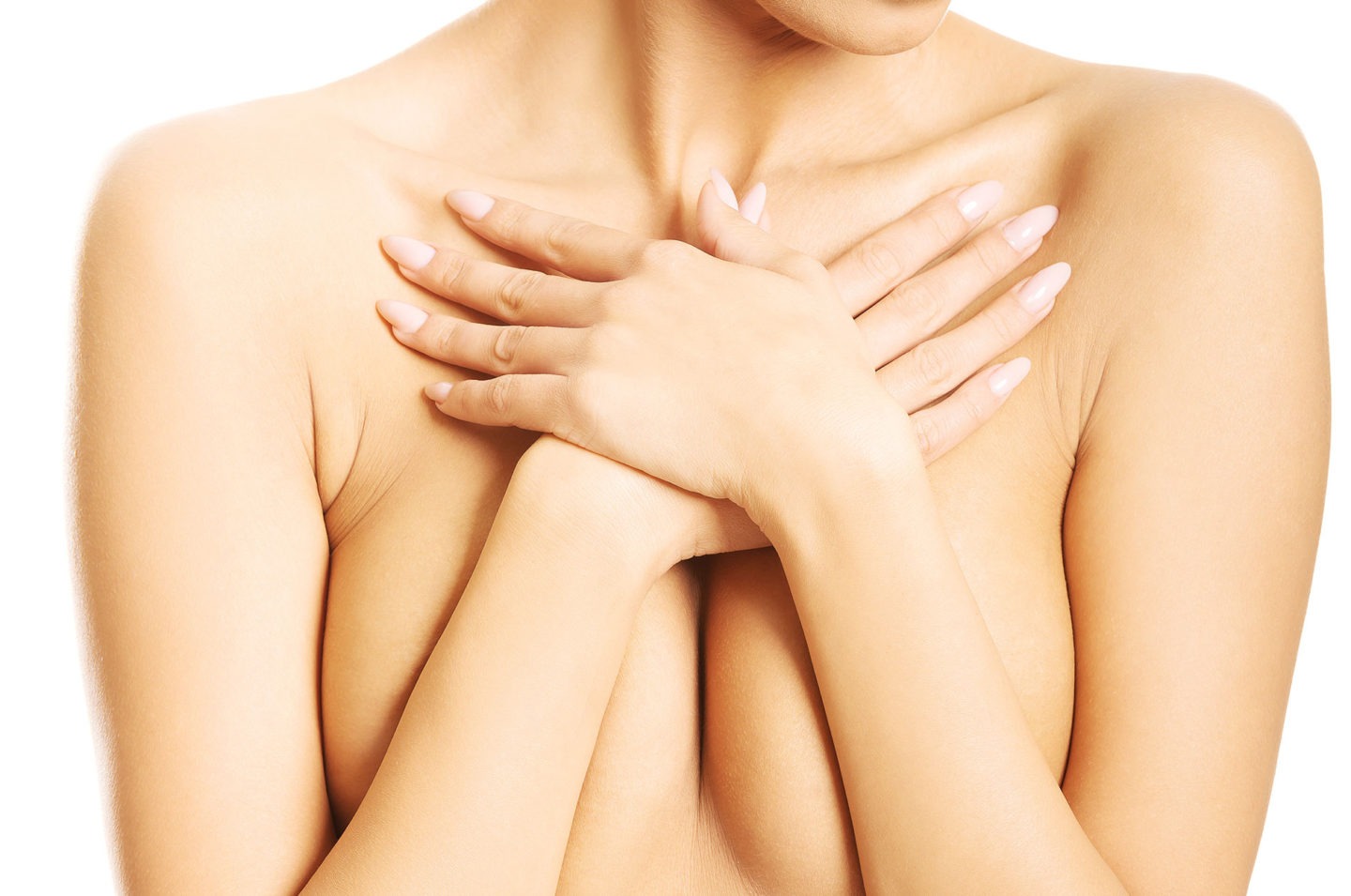
Как восстановить форму груди после кормления грудью?
Кормление грудью – это замечательный и естественный процесс, который приносит множество преимуществ для мамы и ребенка. Однако многие женщины сталкиваются с изменениями формы и упругости груди после окончания периода кормления. В этой статье мы рассмотрим, как можно восстановить форму груди после кормления грудью с помощью хирургических процедур и достичь желаемых результатов.
– Следуйте предписанной медицинской терапии: Принимайте все назначенные лекарства и следуйте инструкциям врача относительно ухода за ранами и швами. Это поможет предотвратить инфекции и способствовать быстрому заживлению.
– Носите компрессионный бюстгальтер: Вам могут назначить специальный компрессионный бюстгальтер, который необходимо носить после операции. Он поможет удерживать грудь в правильной позиции, уменьшить отечность и обеспечить оптимальную поддержку.
– Избегайте физических нагрузок: В первые несколько недель после операции избегайте поднятия тяжестей и интенсивных физических упражнений. Постепенно возвращайтесь к обычной активности по мере разрешения врача.
– Следуйте рекомендациям по питанию: Правильное питание может способствовать быстрому заживлению и восстановлению тканей. Убедитесь, что ваш рацион содержит достаточное количество белка, витаминов и минералов, которые помогут поддерживать здоровье и укреплять ткани груди.
– Будьте терпеливыми: Окончательные результаты после хирургической процедуры по восстановлению формы груди могут занять несколько месяцев. Будьте терпеливы и дайте своему телу время для полного заживления и формирования нового вида груди.
Хирургические процедуры восстановления формы груди после кормления грудью предоставляют эффективные методы достижения желаемых результатов. Мастопексия, маммопластика и липофилинг груди позволяют восстановить упругость, форму и объем груди. Важно соблюдать рекомендации хирурга и ухаживать за грудью в послеоперационном периоде для достижения оптимальных результатов. Обратитесь к квалифицированному пластическому хирургу для детальной консультации.
Read news
Кормление грудью – это замечательный и естественный процесс, который приносит множество преимуществ для мамы и ребенка. Однако многие женщины сталкиваются с изменениями формы и упругости груди после окончания периода кормления. В этой статье мы рассмотрим, как можно восстановить форму груди после кормления грудью с помощью хирургических процедур и достичь желаемых результатов.
– Следуйте предписанной медицинской терапии: Принимайте все назначенные лекарства и следуйте инструкциям врача относительно ухода за ранами и швами. Это поможет предотвратить инфекции и способствовать быстрому заживлению.
– Носите компрессионный бюстгальтер: Вам могут назначить специальный компрессионный бюстгальтер, который необходимо носить после операции. Он поможет удерживать грудь в правильной позиции, уменьшить отечность и обеспечить оптимальную поддержку.
– Избегайте физических нагрузок: В первые несколько недель после операции избегайте поднятия тяжестей и интенсивных физических упражнений. Постепенно возвращайтесь к обычной активности по мере разрешения врача.
– Следуйте рекомендациям по питанию: Правильное питание может способствовать быстрому заживлению и восстановлению тканей. Убедитесь, что ваш рацион содержит достаточное количество белка, витаминов и минералов, которые помогут поддерживать здоровье и укреплять ткани груди.
– Будьте терпеливыми: Окончательные результаты после хирургической процедуры по восстановлению формы груди могут занять несколько месяцев. Будьте терпеливы и дайте своему телу время для полного заживления и формирования нового вида груди.
Хирургические процедуры восстановления формы груди после кормления грудью предоставляют эффективные методы достижения желаемых результатов. Мастопексия, маммопластика и липофилинг груди позволяют восстановить упругость, форму и объем груди. Важно соблюдать рекомендации хирурга и ухаживать за грудью в послеоперационном периоде для достижения оптимальных результатов. Обратитесь к квалифицированному пластическому хирургу для детальной консультации.

Что такое импланты в подбородок и как они устанавливаются?
Импланты в подбородок – это пластическая хирургия, которая позволяет изменить форму и размер подбородка для достижения более гармоничного профиля лица. Рассмотрим, что такое импланты в подбородок и как происходит процесс их установки.
Импланты в подбородок – это эффективная пластическая хирургия, которая позволяет изменить форму и размер подбородка, достигая более гармоничного профиля лица. Процедура включает предварительную консультацию с хирургом, хирургическую процедуру самой установки имплантов и послеоперационный уход. Соблюдение инструкций врача и правильный уход помогут достичь желаемых результатов и снизить риск осложнений. Если вы интересуетесь улучшением внешнего вида вашего подбородка, импланты в подбородок могут быть вариантом для рассмотрения.
Read news
Импланты в подбородок – это пластическая хирургия, которая позволяет изменить форму и размер подбородка для достижения более гармоничного профиля лица. Рассмотрим, что такое импланты в подбородок и как происходит процесс их установки.
Импланты в подбородок – это эффективная пластическая хирургия, которая позволяет изменить форму и размер подбородка, достигая более гармоничного профиля лица. Процедура включает предварительную консультацию с хирургом, хирургическую процедуру самой установки имплантов и послеоперационный уход. Соблюдение инструкций врача и правильный уход помогут достичь желаемых результатов и снизить риск осложнений. Если вы интересуетесь улучшением внешнего вида вашего подбородка, импланты в подбородок могут быть вариантом для рассмотрения.
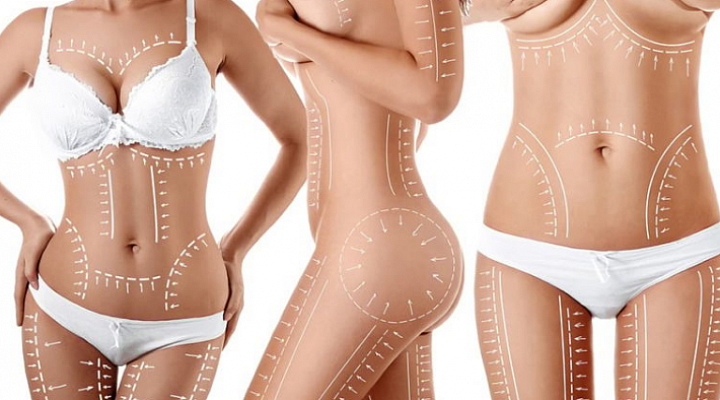
Какие зоны тела можно корректировать с помощью липофилинга: список возможных зон
Липофилинг – это инновационная процедура, которая позволяет использовать собственный жир пациента для коррекции различных областей тела. Она предоставляет возможность достичь естественных и долговременных результатов. В данной статье мы рассмотрим список возможных зон, которые могут быть корректированы с помощью липофилинга.
Липофилинг тела предоставляет возможность коррекции различных зон тела с использованием собственного жира пациента. Он позволяет достичь естественных и долговременных результатов, придавая контурам более гармоничный и эстетически приятный вид. Пластический хирург может индивидуально подобрать подходящие зоны для коррекции, учитывая желания и особенности каждого пациента. Консультация с опытным специалистом позволит определить наиболее подходящие области для липофилинга и достичь желаемых результатов.
Read news
Липофилинг – это инновационная процедура, которая позволяет использовать собственный жир пациента для коррекции различных областей тела. Она предоставляет возможность достичь естественных и долговременных результатов. В данной статье мы рассмотрим список возможных зон, которые могут быть корректированы с помощью липофилинга.
Липофилинг тела предоставляет возможность коррекции различных зон тела с использованием собственного жира пациента. Он позволяет достичь естественных и долговременных результатов, придавая контурам более гармоничный и эстетически приятный вид. Пластический хирург может индивидуально подобрать подходящие зоны для коррекции, учитывая желания и особенности каждого пациента. Консультация с опытным специалистом позволит определить наиболее подходящие области для липофилинга и достичь желаемых результатов.
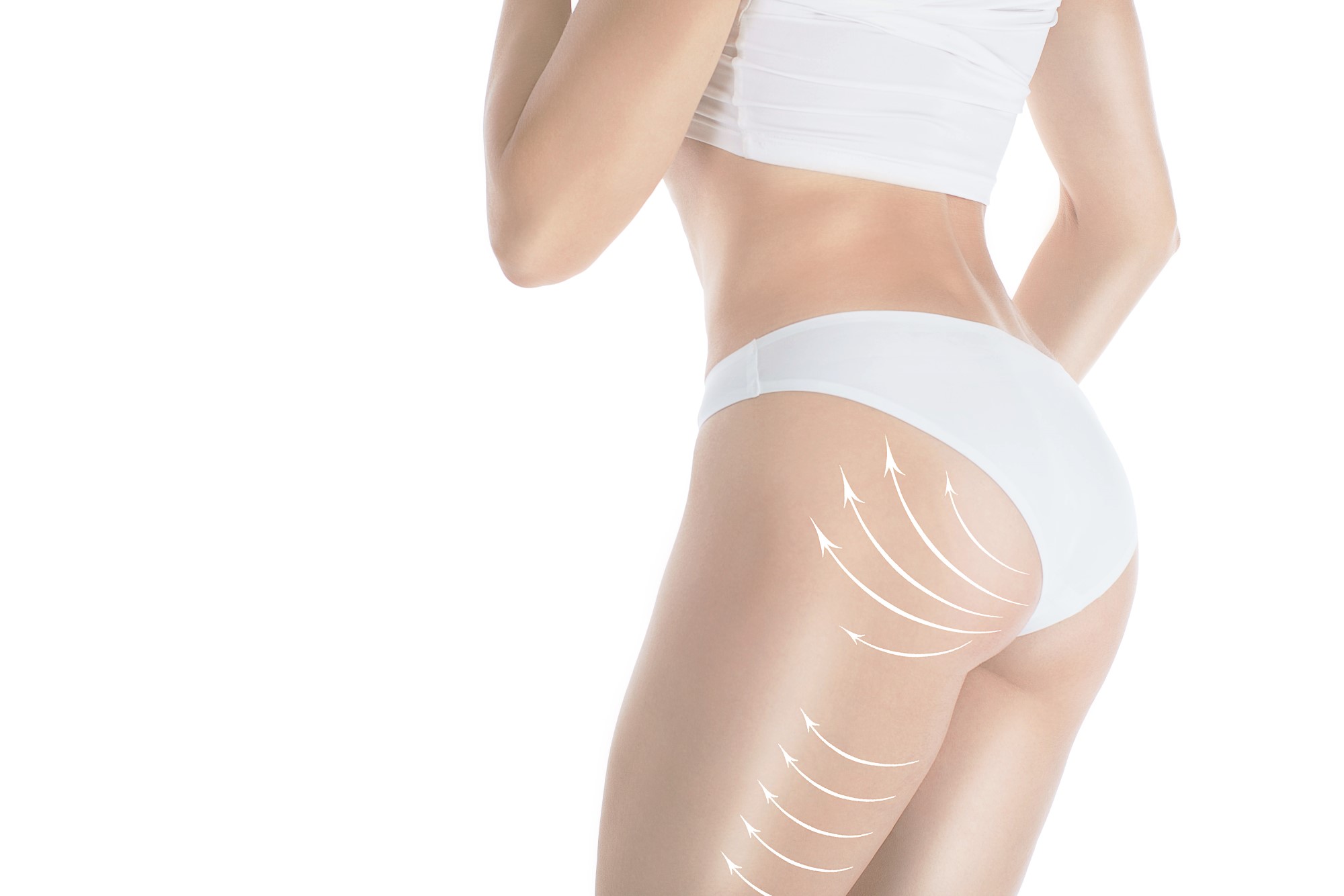
Что такое липофилинг тела: принцип действия и цель процедуры
Липофилинг тела – это инновационная процедура, которая позволяет использовать собственный жир пациента для улучшения контуров и объема различных областей тела. В этой статье мы рассмотрим, что такое липофилинг тела, его принцип действия и основную цель процедуры.
Липофилинг тела является передовой процедурой, которая позволяет использовать собственный жир пациента для улучшения контуров и объема различных областей тела. Принцип действия заключается в извлечении жира с помощью липосакции и его пересадке в желаемую область. Целью процедуры является достижение естественных и гармоничных результатов. Липофилинг тела имеет множество преимуществ и позволяет индивидуально подходить к каждому пациенту. Важно проконсультироваться с опытным пластическим хирургом, чтобы получить детальную информацию о процедуре и определить, подходит ли она для ваших целей и потребностей.
Read news
Липофилинг тела – это инновационная процедура, которая позволяет использовать собственный жир пациента для улучшения контуров и объема различных областей тела. В этой статье мы рассмотрим, что такое липофилинг тела, его принцип действия и основную цель процедуры.
Липофилинг тела является передовой процедурой, которая позволяет использовать собственный жир пациента для улучшения контуров и объема различных областей тела. Принцип действия заключается в извлечении жира с помощью липосакции и его пересадке в желаемую область. Целью процедуры является достижение естественных и гармоничных результатов. Липофилинг тела имеет множество преимуществ и позволяет индивидуально подходить к каждому пациенту. Важно проконсультироваться с опытным пластическим хирургом, чтобы получить детальную информацию о процедуре и определить, подходит ли она для ваших целей и потребностей.

Что такое липосакция гинекомастии: принцип действия и цель процедуры
Гинекомастия – это медицинское состояние, при котором у мужчин наблюдается увеличение грудной железы. Это может вызывать неудобство и негативно влиять на самооценку. Липосакция гинекомастии является эффективной процедурой для коррекции этого состояния. Рассмотрим, что такое липосакция гинекомастии, ее принцип действия и основную цель.
Липосакция гинекомастии – это эффективная процедура для коррекции гинекомастии у мужчин. Она позволяет удалить избыточный жир и создать более мужественный и плоский контур груди. Цель процедуры заключается в повышении самооценки и уверенности пациента. Перед проведением липосакции гинекомастии рекомендуется проконсультироваться с опытным пластическим хирургом, который проведет детальную оценку и разработает индивидуальный план для достижения оптимальных результатов.
Read news
Гинекомастия – это медицинское состояние, при котором у мужчин наблюдается увеличение грудной железы. Это может вызывать неудобство и негативно влиять на самооценку. Липосакция гинекомастии является эффективной процедурой для коррекции этого состояния. Рассмотрим, что такое липосакция гинекомастии, ее принцип действия и основную цель.
Липосакция гинекомастии – это эффективная процедура для коррекции гинекомастии у мужчин. Она позволяет удалить избыточный жир и создать более мужественный и плоский контур груди. Цель процедуры заключается в повышении самооценки и уверенности пациента. Перед проведением липосакции гинекомастии рекомендуется проконсультироваться с опытным пластическим хирургом, который проведет детальную оценку и разработает индивидуальный план для достижения оптимальных результатов.
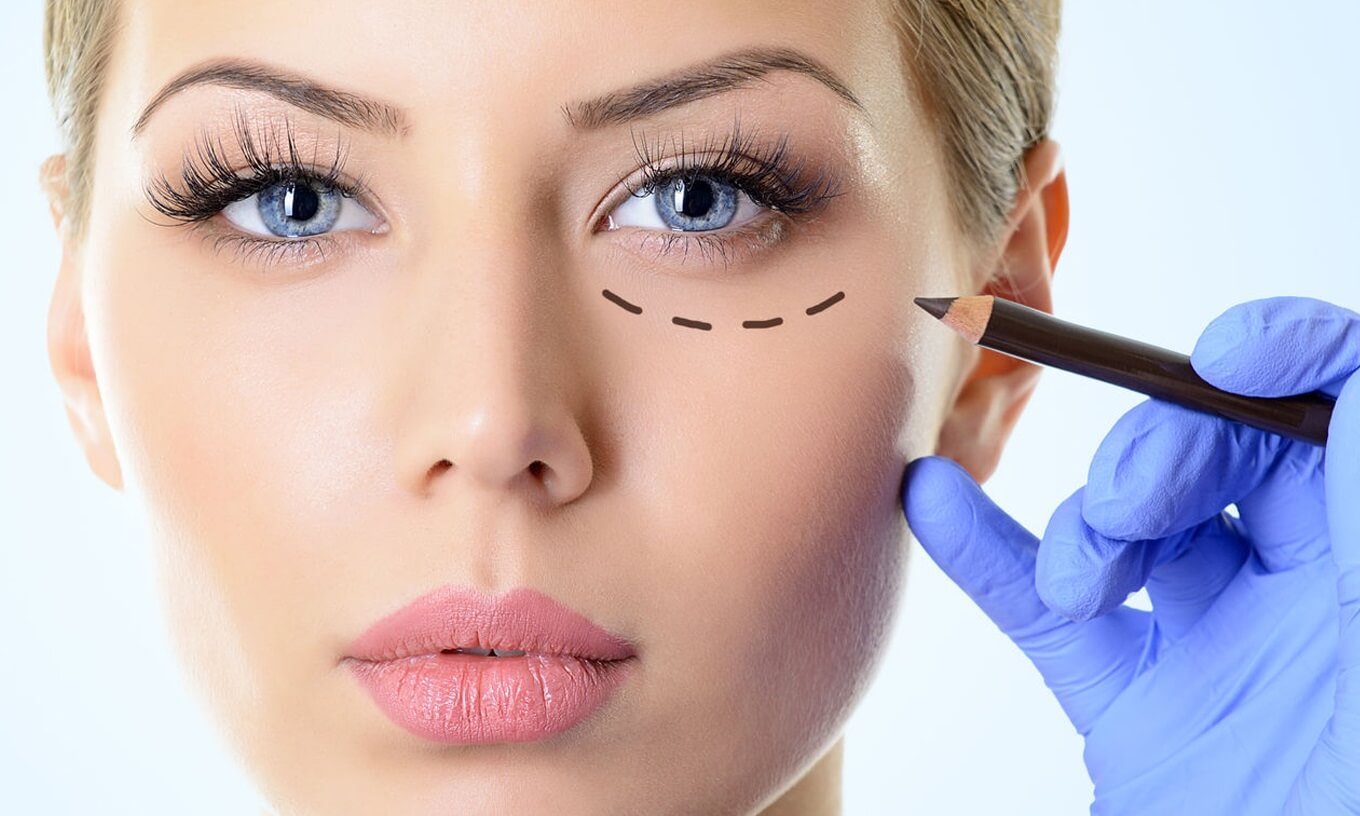
Стоимость нижней блефаропластики: что влияет на цену
Нижняя блефаропластика, или пластика нижних век, является эффективной процедурой для устранения признаков старения и улучшения внешнего вида области вокруг глаз. При планировании процедуры важно понимать, что стоимость нижней блефаропластики может варьироваться в зависимости от нескольких факторов. В этой статье мы рассмотрим, что влияет на цену нижней блефаропластики.
Одним из ключевых факторов, влияющих на стоимость нижней блефаропластики, является квалификация и опыт пластического хирурга. Высококвалифицированные и опытные хирурги, имеющие престижные сертификаты и хорошую репутацию, могут взимать более высокую плату за свои услуги.
Местоположение клиники также может оказывать влияние на стоимость нижней блефаропластики. В больших городах и престижных районах цены могут быть выше, чем в менее популярных местах. Клиники с хорошей репутацией и высокими стандартами могут также взимать более высокие цены.
Степень сложности нижней блефаропластики может варьироваться в зависимости от индивидуальных особенностей пациента. Если требуется удаление или перераспределение большего количества жира, коррекция мышц или реструктуризация кожи, процедура может потребовать больше времени и усилий со стороны хирурга, что может повлиять на стоимость.
Некоторые пластические хирурги предпочитают использовать более современные материалы и технологии в процессе нижней блефаропластики, чтобы достичь более точных и долговременных результатов. Использование таких материалов и технологий может повлиять на стоимость процедуры нижней блефаропластики. Эти материалы и технологии могут быть более дорогими, но они могут обеспечить более точные и эффективные результаты.
Каждый пациент имеет уникальные потребности, и стоимость нижней блефаропластики может зависеть от индивидуального случая. Некоторым пациентам может потребоваться дополнительные процедуры или комбинированный подход для достижения желаемых результатов. Это может отразиться на общей стоимости процедуры.
Помимо самой операции, стоимость нижней блефаропластики может включать предоперационные и послеоперационные затраты. Это может включать расходы на предварительные консультации, медицинские тесты, лекарства, а также следующие за операцией постоянные осмотры и восстановительные процедуры. Все эти факторы могут повлиять на итоговую стоимость процедуры.
Стоимость нижней блефаропластики может варьироваться в зависимости от нескольких факторов, таких как квалификация и опыт пластического хирурга, регион и клиника, сложность процедуры, используемые материалы и технологии, индивидуальные потребности пациента, а также предоперационные и послеоперационные затраты. Важно проконсультироваться с квалифицированным пластическим хирургом, чтобы получить детальную оценку стоимости и понять, какие факторы влияют на конкретный случай.
Read news
Нижняя блефаропластика, или пластика нижних век, является эффективной процедурой для устранения признаков старения и улучшения внешнего вида области вокруг глаз. При планировании процедуры важно понимать, что стоимость нижней блефаропластики может варьироваться в зависимости от нескольких факторов. В этой статье мы рассмотрим, что влияет на цену нижней блефаропластики.
Одним из ключевых факторов, влияющих на стоимость нижней блефаропластики, является квалификация и опыт пластического хирурга. Высококвалифицированные и опытные хирурги, имеющие престижные сертификаты и хорошую репутацию, могут взимать более высокую плату за свои услуги.
Местоположение клиники также может оказывать влияние на стоимость нижней блефаропластики. В больших городах и престижных районах цены могут быть выше, чем в менее популярных местах. Клиники с хорошей репутацией и высокими стандартами могут также взимать более высокие цены.
Степень сложности нижней блефаропластики может варьироваться в зависимости от индивидуальных особенностей пациента. Если требуется удаление или перераспределение большего количества жира, коррекция мышц или реструктуризация кожи, процедура может потребовать больше времени и усилий со стороны хирурга, что может повлиять на стоимость.
Некоторые пластические хирурги предпочитают использовать более современные материалы и технологии в процессе нижней блефаропластики, чтобы достичь более точных и долговременных результатов. Использование таких материалов и технологий может повлиять на стоимость процедуры нижней блефаропластики. Эти материалы и технологии могут быть более дорогими, но они могут обеспечить более точные и эффективные результаты.
Каждый пациент имеет уникальные потребности, и стоимость нижней блефаропластики может зависеть от индивидуального случая. Некоторым пациентам может потребоваться дополнительные процедуры или комбинированный подход для достижения желаемых результатов. Это может отразиться на общей стоимости процедуры.
Помимо самой операции, стоимость нижней блефаропластики может включать предоперационные и послеоперационные затраты. Это может включать расходы на предварительные консультации, медицинские тесты, лекарства, а также следующие за операцией постоянные осмотры и восстановительные процедуры. Все эти факторы могут повлиять на итоговую стоимость процедуры.
Стоимость нижней блефаропластики может варьироваться в зависимости от нескольких факторов, таких как квалификация и опыт пластического хирурга, регион и клиника, сложность процедуры, используемые материалы и технологии, индивидуальные потребности пациента, а также предоперационные и послеоперационные затраты. Важно проконсультироваться с квалифицированным пластическим хирургом, чтобы получить детальную оценку стоимости и понять, какие факторы влияют на конкретный случай.
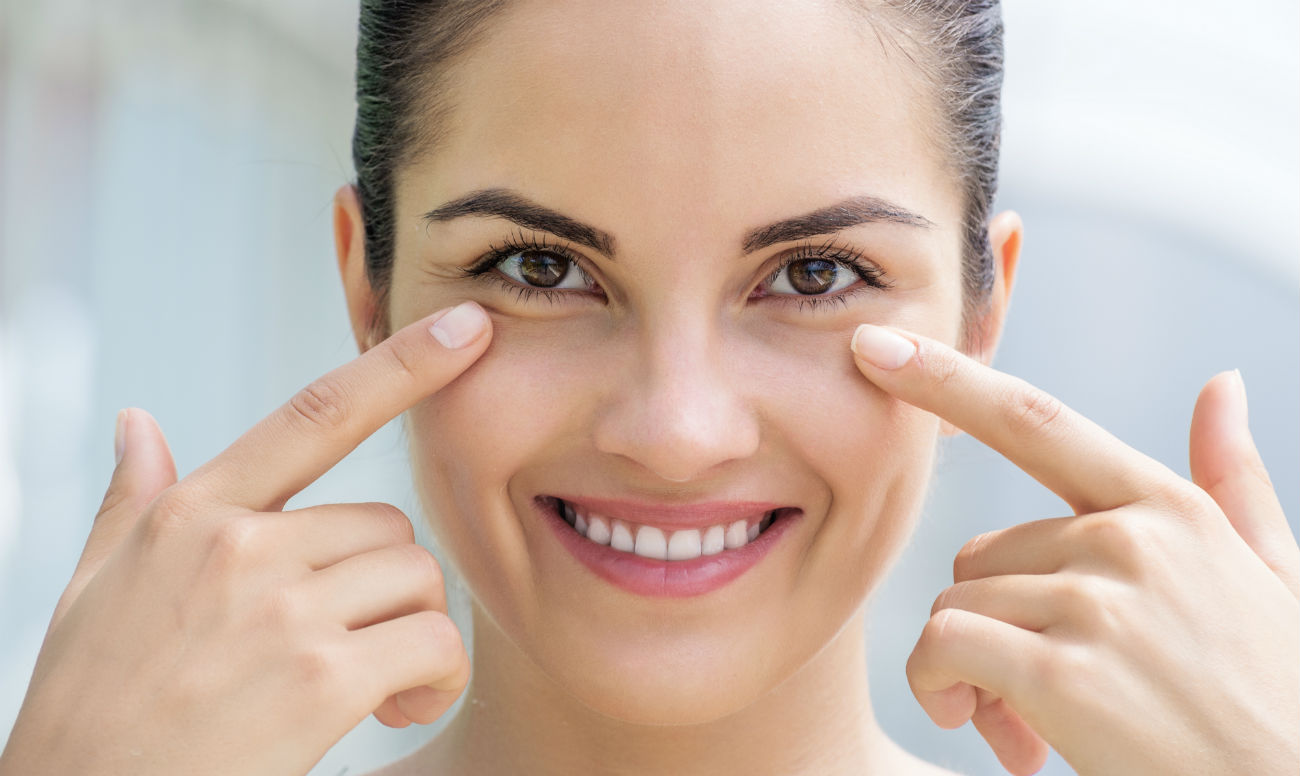
Кандидаты на процедуру нижней блефаропластики: кто может пройти операцию
Медицинский туризм в области эстетической хирургии позволяет людям из разных стран получить качественные процедуры по доступным ценам. Одной из популярных процедур является нижняя блефаропластика, которая позволяет устранить признаки старения в области нижних век и вернуть молодой и свежий внешний вид. В этой статье мы рассмотрим, кто является потенциальными кандидатами на процедуру нижней блефаропластики.
Наиболее распространенным поводом для нижней блефаропластики является присутствие мешков и отеков под глазами. Это состояние может быть вызвано старением, генетическими факторами, неправильным образом жизни или другими причинами. Нижняя блефаропластика позволяет удалить или перераспределить избыток жира и устранить отеки, восстанавливая гладкость и упругость области нижних век.
Если у вас есть избыток кожи или появление морщин в области нижних век, нижняя блефаропластика может быть эффективным решением. Процедура позволяет удалить излишки кожи и при необходимости подтянуть мышцы, создавая более молодой и свежий внешний вид.
С возрастом у некоторых людей происходит потеря объема в области нижних век, что может приводить к припухлости и обвисанию кожи. Нижняя блефаропластика может быть полезной для восстановления объема и укрепления кожи, создавая более молодой и бодрый внешний вид.
Для прохождения процедуры нижней блефаропластики важно иметь общее хорошее здоровье. Потенциальные кандидаты на нижнюю блефаропластику должны быть физически здоровы и не иметь серьезных медицинских противопоказаний к хирургическим процедурам.
Основательное понимание ожидаемых результатов является важным аспектом для кандидатов на нижнюю блефаропластику. Пациенты должны иметь реалистичные представления о том, что может достичься с помощью процедуры, и быть готовыми к ограничениям и времени восстановления после операции.
Поскольку нижняя блефаропластика является хирургической процедурой, рекомендуется, чтобы пациенты достигли физической зрелости перед ее проведением. Это обычно означает возраст 18 лет и стабильное физическое развитие.
Перед решением о прохождении нижней блефаропластики пациенты должны пройти консультацию с опытным пластическим хирургом. Хирург проведет осмотр, обсудит медицинскую историю, ожидания и риски, связанные с процедурой, и поможет пациенту принять информированное решение.
Нижняя блефаропластика предлагает эффективное решение для устранения признаков старения в области нижних век. Пациенты с мешками и отеками под глазами, избытком кожи и морщинами, потерей объема в области нижних век, общим хорошим здоровьем, реалистичными ожиданиями и достигшими физической зрелости могут быть потенциальными кандидатами на процедуру. Важно проконсультироваться с опытным пластическим хирургом, чтобы получить детальную оценку и рекомендации для своего индивидуального случая.
Read news
Медицинский туризм в области эстетической хирургии позволяет людям из разных стран получить качественные процедуры по доступным ценам. Одной из популярных процедур является нижняя блефаропластика, которая позволяет устранить признаки старения в области нижних век и вернуть молодой и свежий внешний вид. В этой статье мы рассмотрим, кто является потенциальными кандидатами на процедуру нижней блефаропластики.
Наиболее распространенным поводом для нижней блефаропластики является присутствие мешков и отеков под глазами. Это состояние может быть вызвано старением, генетическими факторами, неправильным образом жизни или другими причинами. Нижняя блефаропластика позволяет удалить или перераспределить избыток жира и устранить отеки, восстанавливая гладкость и упругость области нижних век.
Если у вас есть избыток кожи или появление морщин в области нижних век, нижняя блефаропластика может быть эффективным решением. Процедура позволяет удалить излишки кожи и при необходимости подтянуть мышцы, создавая более молодой и свежий внешний вид.
С возрастом у некоторых людей происходит потеря объема в области нижних век, что может приводить к припухлости и обвисанию кожи. Нижняя блефаропластика может быть полезной для восстановления объема и укрепления кожи, создавая более молодой и бодрый внешний вид.
Для прохождения процедуры нижней блефаропластики важно иметь общее хорошее здоровье. Потенциальные кандидаты на нижнюю блефаропластику должны быть физически здоровы и не иметь серьезных медицинских противопоказаний к хирургическим процедурам.
Основательное понимание ожидаемых результатов является важным аспектом для кандидатов на нижнюю блефаропластику. Пациенты должны иметь реалистичные представления о том, что может достичься с помощью процедуры, и быть готовыми к ограничениям и времени восстановления после операции.
Поскольку нижняя блефаропластика является хирургической процедурой, рекомендуется, чтобы пациенты достигли физической зрелости перед ее проведением. Это обычно означает возраст 18 лет и стабильное физическое развитие.
Перед решением о прохождении нижней блефаропластики пациенты должны пройти консультацию с опытным пластическим хирургом. Хирург проведет осмотр, обсудит медицинскую историю, ожидания и риски, связанные с процедурой, и поможет пациенту принять информированное решение.
Нижняя блефаропластика предлагает эффективное решение для устранения признаков старения в области нижних век. Пациенты с мешками и отеками под глазами, избытком кожи и морщинами, потерей объема в области нижних век, общим хорошим здоровьем, реалистичными ожиданиями и достигшими физической зрелости могут быть потенциальными кандидатами на процедуру. Важно проконсультироваться с опытным пластическим хирургом, чтобы получить детальную оценку и рекомендации для своего индивидуального случая.
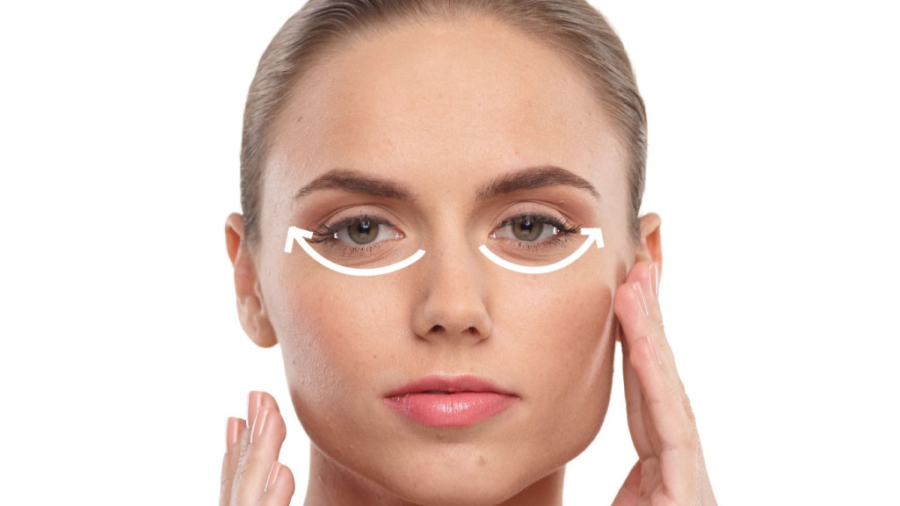
Различные методы нижней блефаропластики: трансконъюктивальная, транскутанная, сочетание методов и т.д.
Медицинский туризм становится все более популярным, поскольку люди со всего мира ищут возможность получить качественную медицинскую помощь и процедуры по доступным ценам. Одной из самых востребованных областей медицинского туризма является эстетическая хирургия. Рассмотрим различные методы нижней блефаропластики, процедуры, которая позволяет устранить признаки старения в области нижних век и восстановить молодость и свежесть взгляда.
Трансконьюктивальная блефаропластика – это метод, при котором хирургический доступ осуществляется через внутреннюю поверхность нижнего века. Через небольшой разрез в слизистой оболочке, врач удаляет или перераспределяет избыток жира, ответственного за образование мешков под глазами. Этот метод идеален для пациентов с незначительным избытком кожи и мышц.
Транскутанная блефаропластика – это традиционный метод, который включает разрез кожи в области нижнего века. Хирург удаляет избыточную кожу, жир и мышцы, а затем аккуратно закрывает рану швами. Этот метод эффективен при значительном избытке кожи и укладке.
В зависимости от индивидуальных особенностей пациента и желаемых результатов, хирург может комбинировать различные методы нижней блефаропластики. Например, трансконъюктивальная блефаропластика может быть сочетана с транскутанной блефаропластикой для достижения наилучших результатов. Этот подход позволяет хирургу более точно корректировать форму и контур нижних век.
Кроме трансконьюктивальая и транскутанной блефаропластики, существуют и другие методы, которые также могут быть использованы в нижней блефаропластике. Некоторые из них включают:
– Трансконъюнктивальная блефаропластика с лазером: Этот метод включает использование лазерной технологии для удаления или перераспределения жира через трансконьюктивальный доступ. Лазерная технология позволяет более точное воздействие на ткани и уменьшает риск кровотечения.
– Реструктуризация подкожной ткани: В некоторых случаях, когда избыток жира отсутствует, но имеется обвисшая кожа, хирург может выполнить процедуру по реструктуризации подкожной ткани. Это позволяет подтянуть и укрепить кожу в области нижних век, создавая более молодой и свежий внешний вид.
– Периорбитальный лифтинг: При проведении нижней блефаропластики может быть выполнен также периорбитальный лифтинг, который воздействует на кожу и мышцы в области глазных век. Это позволяет улучшить контур и упругость кожи, а также снизить появление морщин и мешков под глазами.
При выборе метода нижней блефаропластики необходимо учесть различные факторы, включая уровень избытка кожи и жира, тонус мышц, общее состояние кожи и ожидания пациента. Опытный пластический хирург поможет определить наиболее подходящий метод, который будет соответствовать индивидуальным потребностям и достигнет наилучших результатов.
Важно отметить, что нижняя блефаропластика является хирургической процедурой, и перед ее проведением необходимо пройти предварительную консультацию с квалифицированным хирургом. Он проведет осмотр, обсудит цели и ожидания пациента, расскажет о возможных рисках и ожидаемом восстановительном периоде после операции.
Read news
Медицинский туризм становится все более популярным, поскольку люди со всего мира ищут возможность получить качественную медицинскую помощь и процедуры по доступным ценам. Одной из самых востребованных областей медицинского туризма является эстетическая хирургия. Рассмотрим различные методы нижней блефаропластики, процедуры, которая позволяет устранить признаки старения в области нижних век и восстановить молодость и свежесть взгляда.
Трансконьюктивальная блефаропластика – это метод, при котором хирургический доступ осуществляется через внутреннюю поверхность нижнего века. Через небольшой разрез в слизистой оболочке, врач удаляет или перераспределяет избыток жира, ответственного за образование мешков под глазами. Этот метод идеален для пациентов с незначительным избытком кожи и мышц.
Транскутанная блефаропластика – это традиционный метод, который включает разрез кожи в области нижнего века. Хирург удаляет избыточную кожу, жир и мышцы, а затем аккуратно закрывает рану швами. Этот метод эффективен при значительном избытке кожи и укладке.
В зависимости от индивидуальных особенностей пациента и желаемых результатов, хирург может комбинировать различные методы нижней блефаропластики. Например, трансконъюктивальная блефаропластика может быть сочетана с транскутанной блефаропластикой для достижения наилучших результатов. Этот подход позволяет хирургу более точно корректировать форму и контур нижних век.
Кроме трансконьюктивальая и транскутанной блефаропластики, существуют и другие методы, которые также могут быть использованы в нижней блефаропластике. Некоторые из них включают:
– Трансконъюнктивальная блефаропластика с лазером: Этот метод включает использование лазерной технологии для удаления или перераспределения жира через трансконьюктивальный доступ. Лазерная технология позволяет более точное воздействие на ткани и уменьшает риск кровотечения.
– Реструктуризация подкожной ткани: В некоторых случаях, когда избыток жира отсутствует, но имеется обвисшая кожа, хирург может выполнить процедуру по реструктуризации подкожной ткани. Это позволяет подтянуть и укрепить кожу в области нижних век, создавая более молодой и свежий внешний вид.
– Периорбитальный лифтинг: При проведении нижней блефаропластики может быть выполнен также периорбитальный лифтинг, который воздействует на кожу и мышцы в области глазных век. Это позволяет улучшить контур и упругость кожи, а также снизить появление морщин и мешков под глазами.
При выборе метода нижней блефаропластики необходимо учесть различные факторы, включая уровень избытка кожи и жира, тонус мышц, общее состояние кожи и ожидания пациента. Опытный пластический хирург поможет определить наиболее подходящий метод, который будет соответствовать индивидуальным потребностям и достигнет наилучших результатов.
Важно отметить, что нижняя блефаропластика является хирургической процедурой, и перед ее проведением необходимо пройти предварительную консультацию с квалифицированным хирургом. Он проведет осмотр, обсудит цели и ожидания пациента, расскажет о возможных рисках и ожидаемом восстановительном периоде после операции.
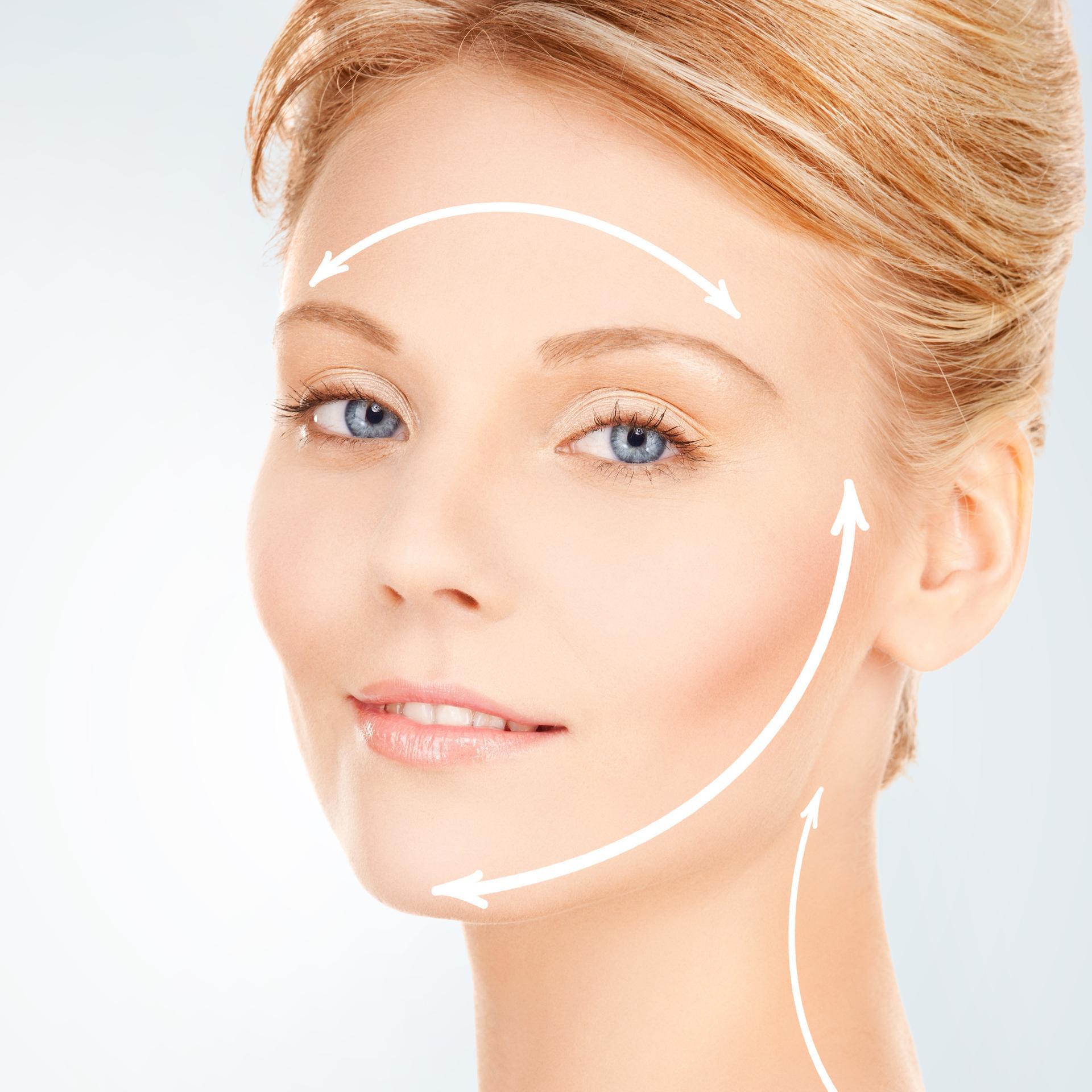
Что такое подтяжка лица: суть и принцип действия
Подтяжка лица – это процедура, которая позволяет устранить признаки старения кожи, сделать лицо более свежим и молодым. Она является одной из самых популярных косметических процедур в мире и привлекает внимание многих женщин, которые хотят выглядеть привлекательно и молодо.
Суть подтяжки лица заключается в использовании различных техник и методов, направленных на подтяжку кожи и мышц лица. Они позволяют устранить мимические морщины, уменьшить складки и избавиться от излишней кожи. Кроме того, процедура помогает улучшить контур лица, сделать его более выразительным и привлекательным.
Принцип действия подтяжки лица заключается во введении специальных нитей или имплантов, которые фиксируют кожу и мышцы лица в новом положении. Это позволяет создать эффект подтянутой и упругой кожи, устранить морщины и складки, а также улучшить контур лица.
Существует несколько методов подтяжки лица, каждый из которых имеет свои особенности и преимущества. Одним из наиболее популярных методов является метод нитевой подтяжки, который основан на использовании специальных нитей, которые фиксируют кожу и мышцы лица в нужном положении. Также существуют методы, основанные на использовании имплантов и инъекций гелей для увеличения объема тканей.
Важно понимать, что подтяжка лица – это серьезная процедура, которая требует профессионального подхода и опыта. Пациенты должны выбирать квалифицированных специалистов, которые используют современное оборудование и методы, чтобы достичь максимально эффективных и естественных результатов.
В итоге, подтяжка лица является эффективным методом решения проблемы старения кожи и восстановления молодости. Существует множество методов, каждый из которых имеет свои преимущества и недостатки. Консультация с опытным врачом поможет выбрать наиболее подходящий метод подтяжки лица в зависимости от индивидуальных особенностей пациента.
При выборе метода подтяжки лица необходимо учитывать не только эффективность процедуры, но и ее возможные риски и осложнения. Некоторые методы, такие как имплантация или инъекции гелей, могут иметь побочные эффекты, такие как отек, болезненность, инфекции или реакции на имплантаты.
Стоит отметить, что подтяжка лица не является методом, который будет действовать вечно. Ее эффект не является постоянным и может длиться от нескольких месяцев до нескольких лет, в зависимости от выбранного метода и индивидуальных особенностей пациента.
В целом, подтяжка лица является эффективным способом устранения признаков старения кожи и восстановления молодости. Однако, перед выбором метода подтяжки лица необходимо тщательно изучить все возможные риски и осложнения, а также провести консультацию с опытным врачом. Только в этом случае можно добиться максимально эффективных и естественных результатов.
Read news
Подтяжка лица – это процедура, которая позволяет устранить признаки старения кожи, сделать лицо более свежим и молодым. Она является одной из самых популярных косметических процедур в мире и привлекает внимание многих женщин, которые хотят выглядеть привлекательно и молодо.
Суть подтяжки лица заключается в использовании различных техник и методов, направленных на подтяжку кожи и мышц лица. Они позволяют устранить мимические морщины, уменьшить складки и избавиться от излишней кожи. Кроме того, процедура помогает улучшить контур лица, сделать его более выразительным и привлекательным.
Принцип действия подтяжки лица заключается во введении специальных нитей или имплантов, которые фиксируют кожу и мышцы лица в новом положении. Это позволяет создать эффект подтянутой и упругой кожи, устранить морщины и складки, а также улучшить контур лица.
Существует несколько методов подтяжки лица, каждый из которых имеет свои особенности и преимущества. Одним из наиболее популярных методов является метод нитевой подтяжки, который основан на использовании специальных нитей, которые фиксируют кожу и мышцы лица в нужном положении. Также существуют методы, основанные на использовании имплантов и инъекций гелей для увеличения объема тканей.
Важно понимать, что подтяжка лица – это серьезная процедура, которая требует профессионального подхода и опыта. Пациенты должны выбирать квалифицированных специалистов, которые используют современное оборудование и методы, чтобы достичь максимально эффективных и естественных результатов.
В итоге, подтяжка лица является эффективным методом решения проблемы старения кожи и восстановления молодости. Существует множество методов, каждый из которых имеет свои преимущества и недостатки. Консультация с опытным врачом поможет выбрать наиболее подходящий метод подтяжки лица в зависимости от индивидуальных особенностей пациента.
При выборе метода подтяжки лица необходимо учитывать не только эффективность процедуры, но и ее возможные риски и осложнения. Некоторые методы, такие как имплантация или инъекции гелей, могут иметь побочные эффекты, такие как отек, болезненность, инфекции или реакции на имплантаты.
Стоит отметить, что подтяжка лица не является методом, который будет действовать вечно. Ее эффект не является постоянным и может длиться от нескольких месяцев до нескольких лет, в зависимости от выбранного метода и индивидуальных особенностей пациента.
В целом, подтяжка лица является эффективным способом устранения признаков старения кожи и восстановления молодости. Однако, перед выбором метода подтяжки лица необходимо тщательно изучить все возможные риски и осложнения, а также провести консультацию с опытным врачом. Только в этом случае можно добиться максимально эффективных и естественных результатов.
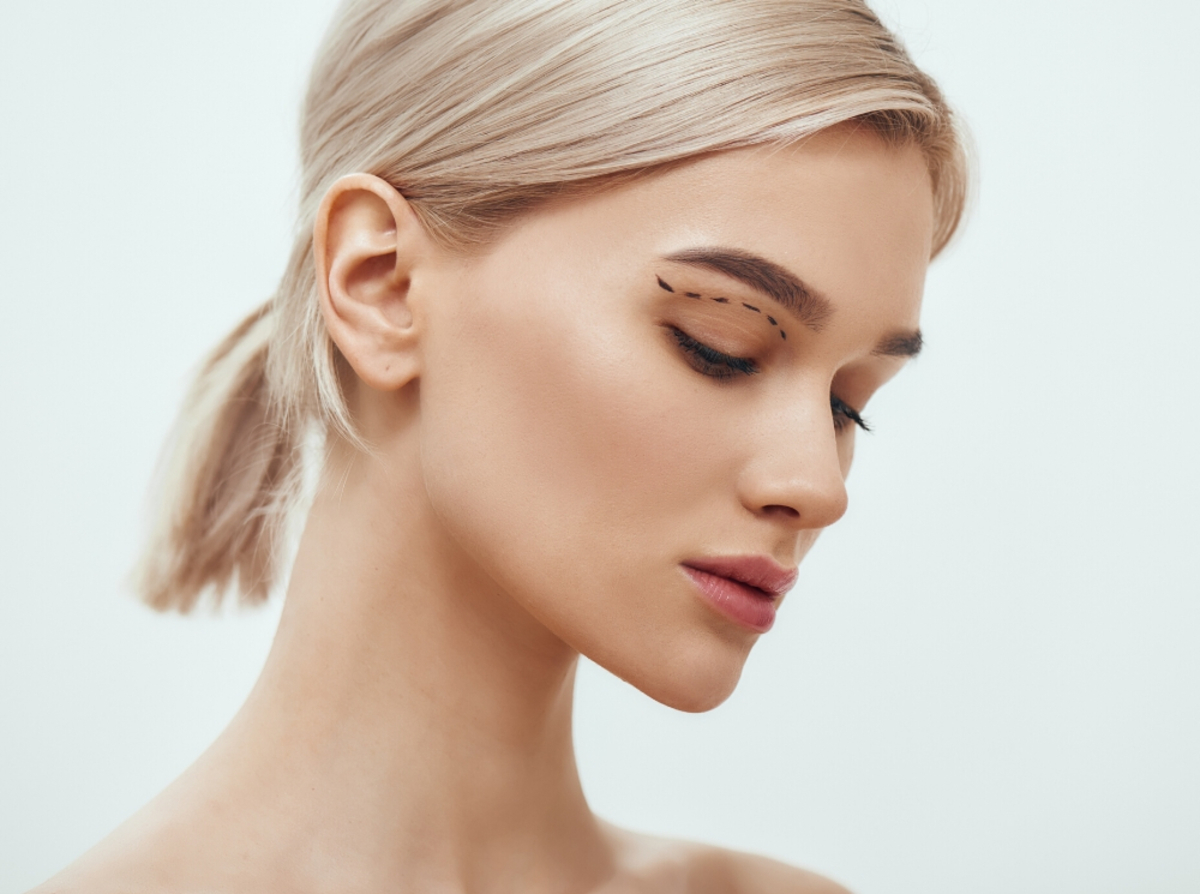
Что такое подтяжка бровей: суть и принцип действия
Что такое хирургическая подтяжка бровей?
Хирургическая подтяжка бровей – это хирургическая процедура, которая позволяет улучшить форму бровей путем удаления излишков кожи и жировой ткани, а также устранения провисания бровей. В результате этой процедуры брови поднимаются и приобретают более молодой и выразительный вид.
Принцип действия хирургической подтяжки бровей
Хирургическая подтяжка бровей проводится пластическим хирургом. Процедура выполняется под местной анестезией или общим наркозом, в зависимости от индивидуальных потребностей пациента и желаемого результата.
В ходе операции хирург удаляет излишки кожи и жировой ткани в области бровей, а также поднимает брови и закрепляет их в новом положении. Это позволяет улучшить форму бровей и придать им более молодой и выразительный вид.
Кто может получить хирургическую подтяжку бровей?
Хирургическая подтяжка бровей может быть выполнена у пациентов любого возраста, у которых есть проблемы с формой или провисанием бровей. Однако, как и любая другая хирургическая процедура, хирургическая подтяжка бровей не подходит для всех. Перед проведением операции необходимо пройти консультацию у пластического хирурга и оценить все риски и преимущества процедуры.
Вывод
Хирургическая подтяжка бровей – это эффективный способ улучшить форму и внешний вид бровей. Эта процедура может быть выполнена у пациентов любого возраста, у которых есть проблемы с провисанием бровей или желание изменить форму бровей. Однако, прежде чем принять решение о проведении хирургической подтяжки, необходимо оценить все риски и преимущества процедуры. Также необходимо обсудить со специалистом все вопросы, связанные с подготовкой к операции и ее последствиями.
После процедуры рекомендуется соблюдать некоторые рекомендации для более быстрого и качественного восстановления. Это может включать в себя ограничение физической активности, применение ледяных компрессов на область бровей, уход за ранами и т.д.
Как и любая другая хирургическая процедура, хирургическая подтяжка бровей может иметь свои риски и осложнения. К ним могут относиться отек, синяки, инфекции, боли и т.д. Однако, соблюдение всех рекомендаций и профессиональное выполнение процедуры может значительно снизить вероятность возникновения этих осложнений.
В целом, хирургическая подтяжка бровей – это эффективный способ улучшить внешний вид и сделать брови более выразительными. Однако, перед тем как принять решение об операции, необходимо обсудить все вопросы со специалистом и оценить все риски и преимущества процедуры.
Read news
Что такое хирургическая подтяжка бровей?
Хирургическая подтяжка бровей – это хирургическая процедура, которая позволяет улучшить форму бровей путем удаления излишков кожи и жировой ткани, а также устранения провисания бровей. В результате этой процедуры брови поднимаются и приобретают более молодой и выразительный вид.
Принцип действия хирургической подтяжки бровей
Хирургическая подтяжка бровей проводится пластическим хирургом. Процедура выполняется под местной анестезией или общим наркозом, в зависимости от индивидуальных потребностей пациента и желаемого результата.
В ходе операции хирург удаляет излишки кожи и жировой ткани в области бровей, а также поднимает брови и закрепляет их в новом положении. Это позволяет улучшить форму бровей и придать им более молодой и выразительный вид.
Кто может получить хирургическую подтяжку бровей?
Хирургическая подтяжка бровей может быть выполнена у пациентов любого возраста, у которых есть проблемы с формой или провисанием бровей. Однако, как и любая другая хирургическая процедура, хирургическая подтяжка бровей не подходит для всех. Перед проведением операции необходимо пройти консультацию у пластического хирурга и оценить все риски и преимущества процедуры.
Вывод
Хирургическая подтяжка бровей – это эффективный способ улучшить форму и внешний вид бровей. Эта процедура может быть выполнена у пациентов любого возраста, у которых есть проблемы с провисанием бровей или желание изменить форму бровей. Однако, прежде чем принять решение о проведении хирургической подтяжки, необходимо оценить все риски и преимущества процедуры. Также необходимо обсудить со специалистом все вопросы, связанные с подготовкой к операции и ее последствиями.
После процедуры рекомендуется соблюдать некоторые рекомендации для более быстрого и качественного восстановления. Это может включать в себя ограничение физической активности, применение ледяных компрессов на область бровей, уход за ранами и т.д.
Как и любая другая хирургическая процедура, хирургическая подтяжка бровей может иметь свои риски и осложнения. К ним могут относиться отек, синяки, инфекции, боли и т.д. Однако, соблюдение всех рекомендаций и профессиональное выполнение процедуры может значительно снизить вероятность возникновения этих осложнений.
В целом, хирургическая подтяжка бровей – это эффективный способ улучшить внешний вид и сделать брови более выразительными. Однако, перед тем как принять решение об операции, необходимо обсудить все вопросы со специалистом и оценить все риски и преимущества процедуры.
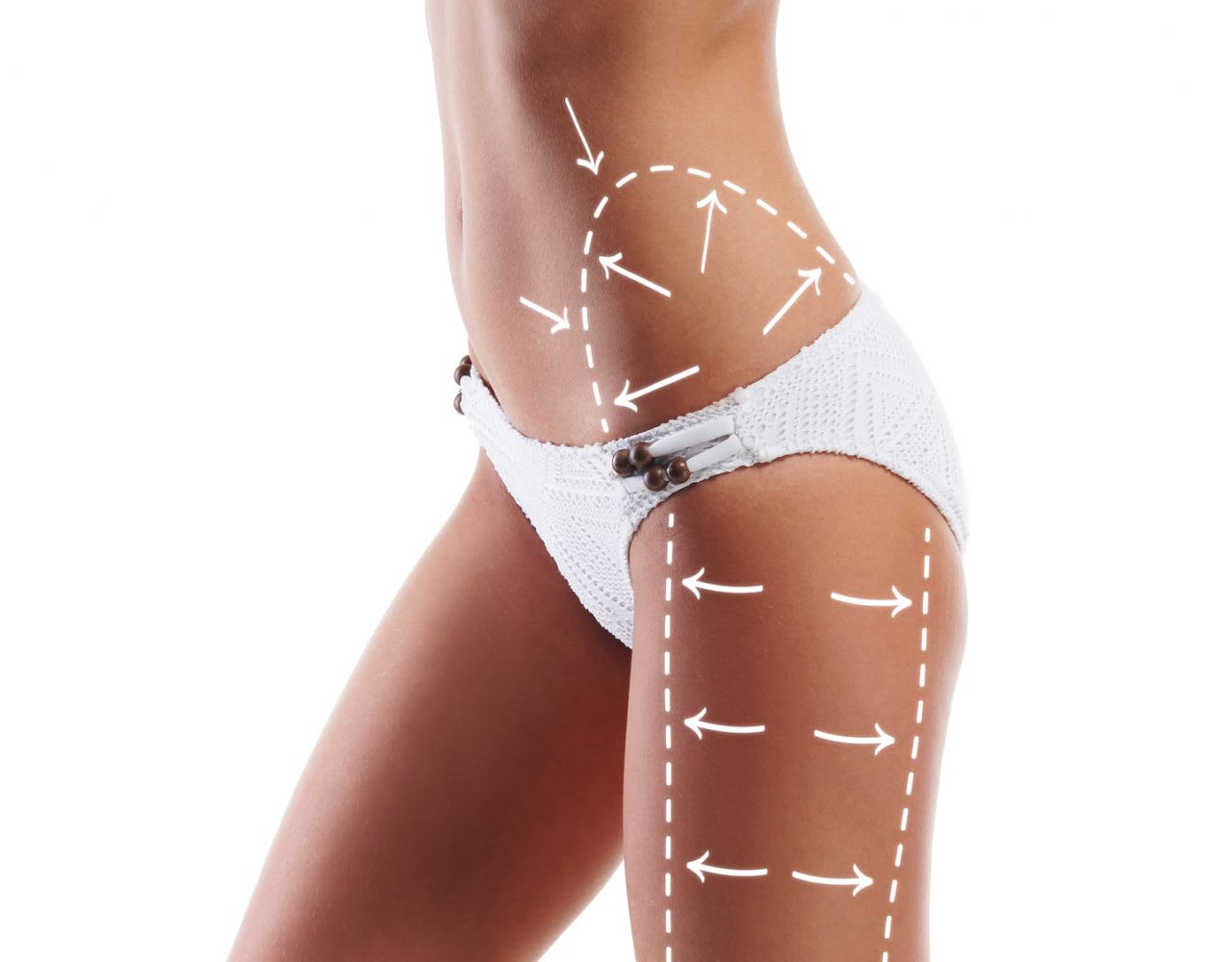
Что такое подтяжка бедер: суть и принцип действия
Подтяжка бедер – это эффективный метод коррекции формы бедер и улучшения их внешнего вида. Эта процедура позволяет убрать лишние складки кожи, провисания и целлюлит, восстановить упругость и подтянутость кожи. Она особенно популярна среди женщин, которые хотят улучшить свою фигуру и выглядеть более стройными и привлекательными.
Суть подтяжки бедер заключается в удалении лишней кожи и жировых отложений, а также в подтяжке оставшейся кожи и мышц. Существует несколько различных методов подтяжки бедер, включая традиционную хирургическую подтяжку, нитевой лифтинг и липосакцию.
Хирургическая подтяжка бедер является наиболее радикальным методом и включает в себя удаление излишков кожи и жира, а также подтяжку оставшейся кожи и мышц. Она может быть рекомендована для пациентов с существенным провисанием кожи на бедрах.
Нитевой лифтинг – это метод, который использует специальные нити для подтяжки кожи и мышц. Этот метод менее инвазивен, чем хирургический брейдлифтинг, но может быть менее эффективным в более серьезных случаях провисания кожи.
Липосакция – это метод, который использует аппаратуру для удаления жировых отложений с бедер. Он может быть более эффективным в случаях, когда большая часть проблемы связана с избыточным жиром, а не с провисанием кожи.
Независимо от выбранного метода подтяжки бедер, важно понимать, что результаты могут быть достигнуты только при правильном уходе за кожей средствами и профилактике возможных осложнений. После процедуры подтяжки бедер пациентам рекомендуется соблюдать некоторые рекомендации, чтобы обеспечить наилучший результат и быстрое восстановление.
В первые дни после процедуры необходимо избегать физических нагрузок и активных движений, а также сидеть и лежать на спине с поднятыми ногами, чтобы уменьшить отеки. При этом рекомендуется использовать специальные компрессионные бандажи или чулки, которые помогут уменьшить отеки и улучшить кровообращение.
Также очень важно правильно ухаживать за кожей на месте проведения процедуры. Необходимо следить за гигиеной кожи, не трогать ранки и не применять к ним мази и крема без предварительной консультации с врачом.
Важно помнить, что результаты подтяжки бедер могут длиться несколько лет, но не являются вечными. Для поддержания эффекта необходимо соблюдать здоровый образ жизни, правильно питаться и заниматься физическими упражнениями.
Таким образом, подтяжка бедер является эффективной процедурой, которая поможет улучшить контур тела и добиться желаемой формы. Однако, перед проведением процедуры необходимо проконсультироваться со специалистом, оценить все риски и преимущества и выбрать оптимальный вариант для себя. После процедуры необходимо соблюдать рекомендации врача и ухаживать за кожей, чтобы обеспечить наилучший результат и быстрое восстановление.
Read news
Подтяжка бедер – это эффективный метод коррекции формы бедер и улучшения их внешнего вида. Эта процедура позволяет убрать лишние складки кожи, провисания и целлюлит, восстановить упругость и подтянутость кожи. Она особенно популярна среди женщин, которые хотят улучшить свою фигуру и выглядеть более стройными и привлекательными.
Суть подтяжки бедер заключается в удалении лишней кожи и жировых отложений, а также в подтяжке оставшейся кожи и мышц. Существует несколько различных методов подтяжки бедер, включая традиционную хирургическую подтяжку, нитевой лифтинг и липосакцию.
Хирургическая подтяжка бедер является наиболее радикальным методом и включает в себя удаление излишков кожи и жира, а также подтяжку оставшейся кожи и мышц. Она может быть рекомендована для пациентов с существенным провисанием кожи на бедрах.
Нитевой лифтинг – это метод, который использует специальные нити для подтяжки кожи и мышц. Этот метод менее инвазивен, чем хирургический брейдлифтинг, но может быть менее эффективным в более серьезных случаях провисания кожи.
Липосакция – это метод, который использует аппаратуру для удаления жировых отложений с бедер. Он может быть более эффективным в случаях, когда большая часть проблемы связана с избыточным жиром, а не с провисанием кожи.
Независимо от выбранного метода подтяжки бедер, важно понимать, что результаты могут быть достигнуты только при правильном уходе за кожей средствами и профилактике возможных осложнений. После процедуры подтяжки бедер пациентам рекомендуется соблюдать некоторые рекомендации, чтобы обеспечить наилучший результат и быстрое восстановление.
В первые дни после процедуры необходимо избегать физических нагрузок и активных движений, а также сидеть и лежать на спине с поднятыми ногами, чтобы уменьшить отеки. При этом рекомендуется использовать специальные компрессионные бандажи или чулки, которые помогут уменьшить отеки и улучшить кровообращение.
Также очень важно правильно ухаживать за кожей на месте проведения процедуры. Необходимо следить за гигиеной кожи, не трогать ранки и не применять к ним мази и крема без предварительной консультации с врачом.
Важно помнить, что результаты подтяжки бедер могут длиться несколько лет, но не являются вечными. Для поддержания эффекта необходимо соблюдать здоровый образ жизни, правильно питаться и заниматься физическими упражнениями.
Таким образом, подтяжка бедер является эффективной процедурой, которая поможет улучшить контур тела и добиться желаемой формы. Однако, перед проведением процедуры необходимо проконсультироваться со специалистом, оценить все риски и преимущества и выбрать оптимальный вариант для себя. После процедуры необходимо соблюдать рекомендации врача и ухаживать за кожей, чтобы обеспечить наилучший результат и быстрое восстановление.
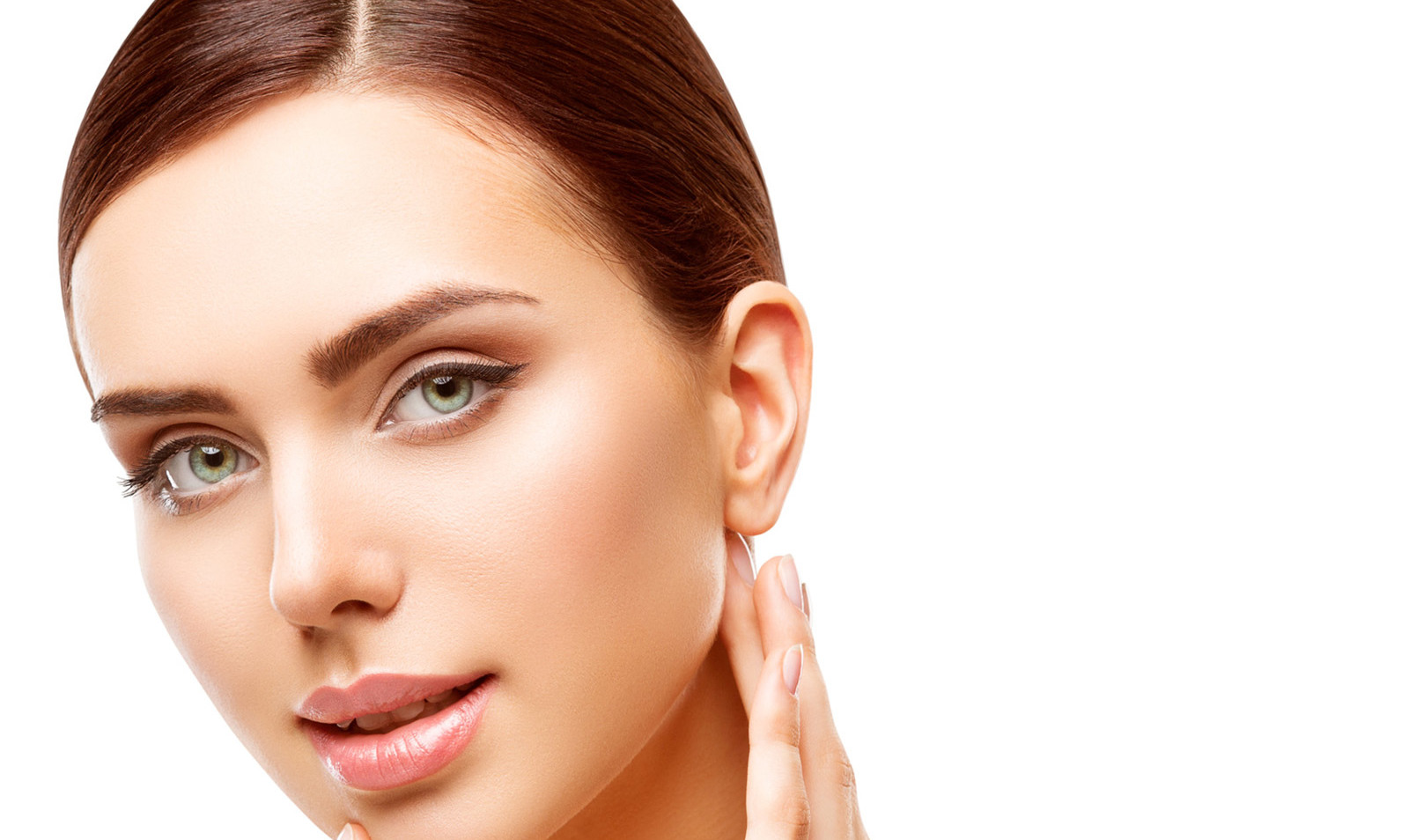
Что такое отопластика: суть и принцип действия
Отопластика – это операция по исправлению формы и размера ушей. Также известная как коррекция ушей, эта процедура может быть выполнена как у детей, так и у взрослых.
Основная цель отопластики – это исправление дефектов ушной раковины. Некоторые люди рождаются с ушами, которые сильно выпирают в стороны или имеют другие недостатки в форме и размере. Другие могут получить травму, которая вызовет деформацию ушей. В обоих случаях отопластика может помочь исправить дефект и улучшить внешний вид ушей.
Принцип действия отопластики заключается в том, что хирург исправляет дефекты ушной раковины путем удаления ненужных тканей и перевязывания или удаления лишних хрящей. В некоторых случаях может потребоваться пересадка хряща для получения желаемой формы и размера.
Отопластика обычно проводится под местной анестезией, хотя в некоторых случаях может потребоваться общая анестезия. Операция может занять от нескольких часов до нескольких дней, в зависимости от сложности операции и пациента.
После отопластики пациент должен ожидать временного отека и боли в области ушей. Однако, большинство пациентов восстанавливаются довольно быстро и могут вернуться к нормальной жизнедеятельности в течение нескольких дней.
Если вы хотите исправить дефекты ушей и улучшить их внешний вид, то отопластика может быть правильным выбором для вас. Однако, прежде чем принять решение о проведении операции, необходимо проконсультироваться со специалистом и оценить все риски и преимущества каждого метода.
Read news
Отопластика – это операция по исправлению формы и размера ушей. Также известная как коррекция ушей, эта процедура может быть выполнена как у детей, так и у взрослых.
Основная цель отопластики – это исправление дефектов ушной раковины. Некоторые люди рождаются с ушами, которые сильно выпирают в стороны или имеют другие недостатки в форме и размере. Другие могут получить травму, которая вызовет деформацию ушей. В обоих случаях отопластика может помочь исправить дефект и улучшить внешний вид ушей.
Принцип действия отопластики заключается в том, что хирург исправляет дефекты ушной раковины путем удаления ненужных тканей и перевязывания или удаления лишних хрящей. В некоторых случаях может потребоваться пересадка хряща для получения желаемой формы и размера.
Отопластика обычно проводится под местной анестезией, хотя в некоторых случаях может потребоваться общая анестезия. Операция может занять от нескольких часов до нескольких дней, в зависимости от сложности операции и пациента.
После отопластики пациент должен ожидать временного отека и боли в области ушей. Однако, большинство пациентов восстанавливаются довольно быстро и могут вернуться к нормальной жизнедеятельности в течение нескольких дней.
Если вы хотите исправить дефекты ушей и улучшить их внешний вид, то отопластика может быть правильным выбором для вас. Однако, прежде чем принять решение о проведении операции, необходимо проконсультироваться со специалистом и оценить все риски и преимущества каждого метода.
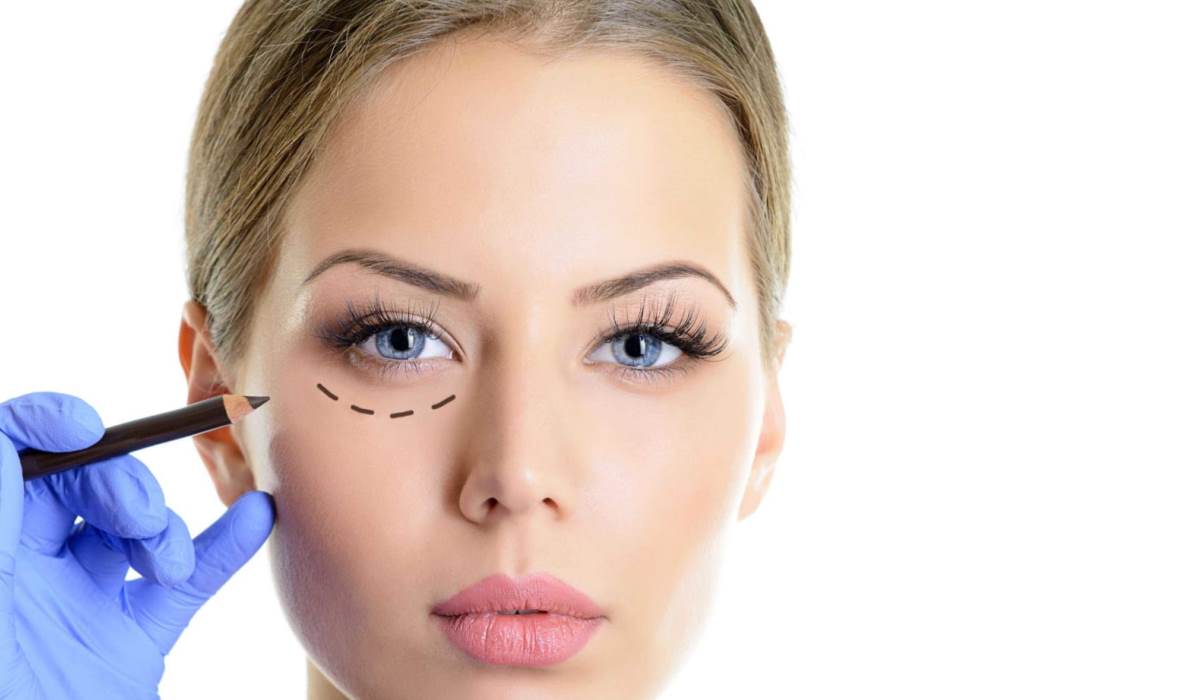
Что такое нижняя блефаропластика: суть и принцип действия
Нижняя блефаропластика – это хирургическая процедура, которая направлена на устранение мешков под глазами, отечности и других возрастных изменений в области нижнего века. Эта процедура помогает вернуть молодость и свежесть лицу, повышает уверенность в себе и улучшает качество жизни пациентов.
Принцип действия нижней блефаропластики заключается в удалении избыточной жировой ткани и лишней кожи в области нижнего века. Хирург делает небольшой разрез внутри или снаружи века и удаляет избыточную ткань. После этого кожу пришивают к краю века, чтобы достичь наилучшего косметического эффекта.
Нижняя блефаропластика проводится под местной анестезией и длится около 1-2 часов. После процедуры пациенту рекомендуется соблюдать некоторые меры предосторожности, чтобы избежать осложнений и получить наилучший результат. К ним относятся ограничение физической активности, применение холодных компрессов и принятие рекомендованных лекарств.
Важно отметить, что нижняя блефаропластика является серьезной процедурой, и перед ее проведением необходимо провести консультацию с опытным специалистом. Хороший хирург расскажет о всех возможных рисках и ограничениях, связанных с процедурой, а также поможет выбрать наилучший вариант для каждого конкретного случая.
В целом, нижняя блефаропластика – это безопасная и эффективная процедура, которая может помочь вернуть молодость и свежесть взгляду. После ее проведения пациенты чувствуют себя более уверенно и довольны своим новым обновленным видом.
Read news
Нижняя блефаропластика – это хирургическая процедура, которая направлена на устранение мешков под глазами, отечности и других возрастных изменений в области нижнего века. Эта процедура помогает вернуть молодость и свежесть лицу, повышает уверенность в себе и улучшает качество жизни пациентов.
Принцип действия нижней блефаропластики заключается в удалении избыточной жировой ткани и лишней кожи в области нижнего века. Хирург делает небольшой разрез внутри или снаружи века и удаляет избыточную ткань. После этого кожу пришивают к краю века, чтобы достичь наилучшего косметического эффекта.
Нижняя блефаропластика проводится под местной анестезией и длится около 1-2 часов. После процедуры пациенту рекомендуется соблюдать некоторые меры предосторожности, чтобы избежать осложнений и получить наилучший результат. К ним относятся ограничение физической активности, применение холодных компрессов и принятие рекомендованных лекарств.
Важно отметить, что нижняя блефаропластика является серьезной процедурой, и перед ее проведением необходимо провести консультацию с опытным специалистом. Хороший хирург расскажет о всех возможных рисках и ограничениях, связанных с процедурой, а также поможет выбрать наилучший вариант для каждого конкретного случая.
В целом, нижняя блефаропластика – это безопасная и эффективная процедура, которая может помочь вернуть молодость и свежесть взгляду. После ее проведения пациенты чувствуют себя более уверенно и довольны своим новым обновленным видом.

Различные методы трансплантации волос FUE, FUT, DHI и другие
Избавление от проблемы облысения стало возможным благодаря трансплантации волос. Сегодня на рынке существует несколько методов, позволяющих восстановить плотность волос, и каждый из них имеет свои особенности. В данной статье мы рассмотрим разные способы трансплантации волос: FUE, FUT, DHI и остальные.
FUE (ФУЭ)
FUE (Follicular Unit Extraction) – это метод трансплантации волос, который предполагает извлечение отдельных фолликулов волос из зоны донора, и их последующее пересадка в зону получателя. Преимуществом этого метода является отсутствие рубцов, что делает процедуру менее заметной и более удобной для пациента.
FUT (ФУТ)
FUT (Follicular Unit Transplantation) – это метод трансплантации волос, который предполагает извлечение полосы кожи из зоны донора, в которой находятся волосяные фолликулы, и их последующую пересадку в зону получателя. Преимуществом этого метода является возможность получить большее количество пересаженных волос за одну процедуру.
DHI (Прямая волосистая имплантация)
DHI (Direct Hair Implantation) – это метод трансплантации волос, который предполагает использование специального инструмента, называемого Choi Implanter, для прямой имплантации волос в зону получателя. Преимуществом этого метода является возможность более точной имплантации волос, что дает более естественный результат.
Robotic Hair Restoration
Robotic Hair Restoration – это метод трансплантации волос, который осуществляется с помощью робота-хирурга, который производит извлечение и пересадку волосяных фолликулов. Преимуществом этого способа является точность и скорость выполнения процедуры.
Hair Multiplication
Hair Multiplication – это метод, который находится на стадии исследования, и позволяет увеличить количество волосяных фолликулов в зоне донора, используя стволовые клетки. Этот способ может быть перспективным для пациентов, имеющих ограниченное количество волос в зоне донора.
Вывод
Выбор метода трансплантации волос зависит от индивидуальных особенностей пациента, включая степень облысения, качество волос, тип кожи и многие другие факторы. Консультация с опытным врачом-трихологом поможет определить наиболее подходящий метод трансплантации волос для конкретного случая.
Важно понимать, что трансплантация волос – это серьезная процедура, которая требует профессионального подхода и опыта. Пациенты должны выбирать квалифицированных специалистов, которые используют современное оборудование и методы, чтобы достичь максимально эффективных и естественных результатов.
Независимо от выбранного метода трансплантации волос, пациентам рекомендуется следить за своим здоровьем, правильно ухаживать за волосами и соблюдать рекомендации врача, чтобы добиться наилучшего результата и сохранить новые волосы на длительное время.
В итоге, трансплантация волос является эффективным способом решения проблемы облысения и восстановления плотности волос. Существует множество методов, каждый из которых имеет свои преимущества и недостатки. Консультация с опытным врачом поможет выбрать наиболее подходящий метод для каждого конкретного случая. Главное – это найти опытного специалиста, чтобы добиться максимально эффективных и естественных результатов.
Read news
Избавление от проблемы облысения стало возможным благодаря трансплантации волос. Сегодня на рынке существует несколько методов, позволяющих восстановить плотность волос, и каждый из них имеет свои особенности. В данной статье мы рассмотрим разные способы трансплантации волос: FUE, FUT, DHI и остальные.
FUE (ФУЭ)
FUE (Follicular Unit Extraction) – это метод трансплантации волос, который предполагает извлечение отдельных фолликулов волос из зоны донора, и их последующее пересадка в зону получателя. Преимуществом этого метода является отсутствие рубцов, что делает процедуру менее заметной и более удобной для пациента.
FUT (ФУТ)
FUT (Follicular Unit Transplantation) – это метод трансплантации волос, который предполагает извлечение полосы кожи из зоны донора, в которой находятся волосяные фолликулы, и их последующую пересадку в зону получателя. Преимуществом этого метода является возможность получить большее количество пересаженных волос за одну процедуру.
DHI (Прямая волосистая имплантация)
DHI (Direct Hair Implantation) – это метод трансплантации волос, который предполагает использование специального инструмента, называемого Choi Implanter, для прямой имплантации волос в зону получателя. Преимуществом этого метода является возможность более точной имплантации волос, что дает более естественный результат.
Robotic Hair Restoration
Robotic Hair Restoration – это метод трансплантации волос, который осуществляется с помощью робота-хирурга, который производит извлечение и пересадку волосяных фолликулов. Преимуществом этого способа является точность и скорость выполнения процедуры.
Hair Multiplication
Hair Multiplication – это метод, который находится на стадии исследования, и позволяет увеличить количество волосяных фолликулов в зоне донора, используя стволовые клетки. Этот способ может быть перспективным для пациентов, имеющих ограниченное количество волос в зоне донора.
Вывод
Выбор метода трансплантации волос зависит от индивидуальных особенностей пациента, включая степень облысения, качество волос, тип кожи и многие другие факторы. Консультация с опытным врачом-трихологом поможет определить наиболее подходящий метод трансплантации волос для конкретного случая.
Важно понимать, что трансплантация волос – это серьезная процедура, которая требует профессионального подхода и опыта. Пациенты должны выбирать квалифицированных специалистов, которые используют современное оборудование и методы, чтобы достичь максимально эффективных и естественных результатов.
Независимо от выбранного метода трансплантации волос, пациентам рекомендуется следить за своим здоровьем, правильно ухаживать за волосами и соблюдать рекомендации врача, чтобы добиться наилучшего результата и сохранить новые волосы на длительное время.
В итоге, трансплантация волос является эффективным способом решения проблемы облысения и восстановления плотности волос. Существует множество методов, каждый из которых имеет свои преимущества и недостатки. Консультация с опытным врачом поможет выбрать наиболее подходящий метод для каждого конкретного случая. Главное – это найти опытного специалиста, чтобы добиться максимально эффективных и естественных результатов.
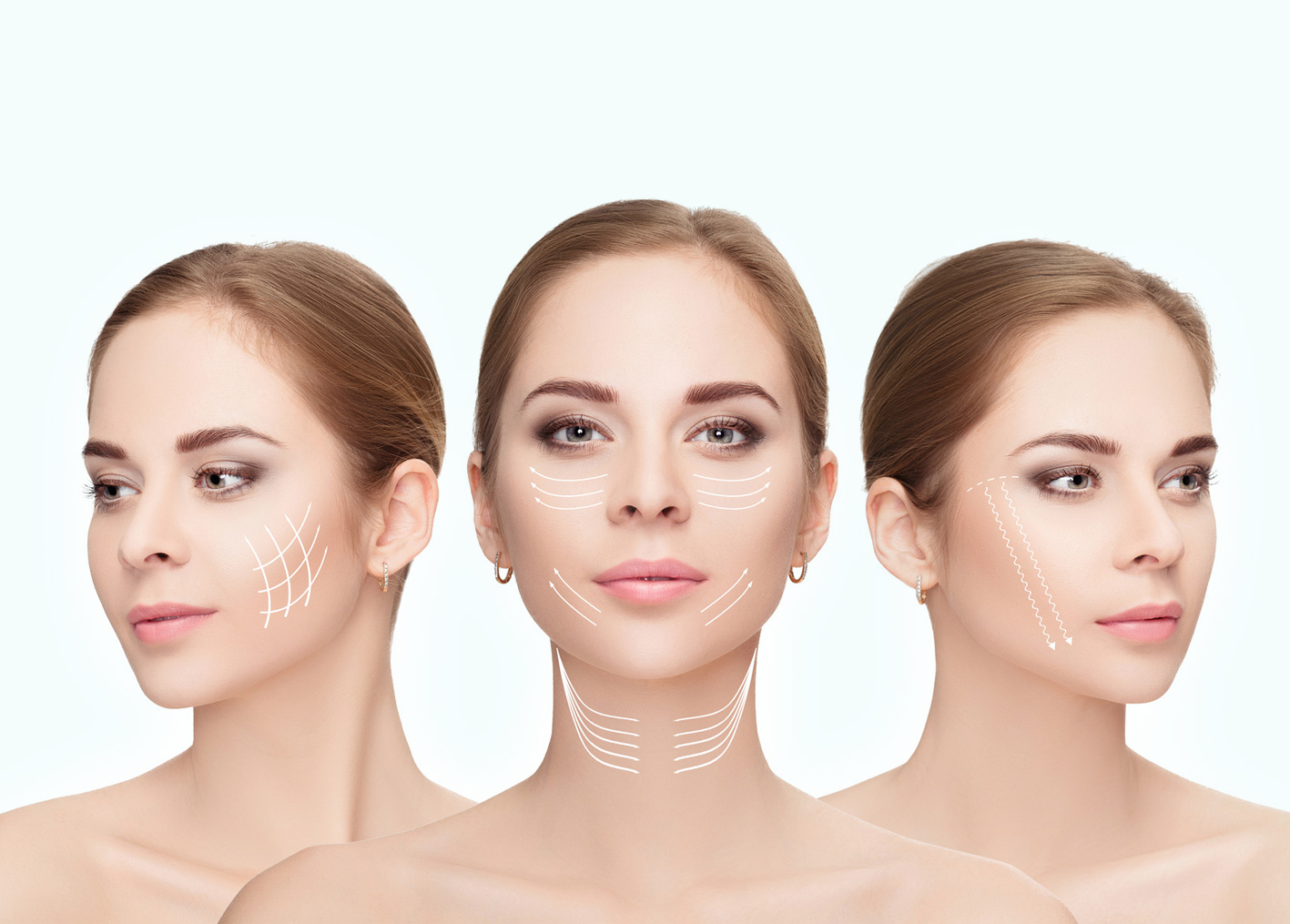
Различные методы подтяжки лица: классический фейслифтинг, минифейслифтинг, нитевой лифтинг и другие
Подтяжка лица – это процедура, которая помогает устранить признаки старения и вернуть коже молодой и свежий вид. Существует множество методов подтяжки лица, каждый из которых имеет свои преимущества и недостатки. Рассмотрим некоторые из них.
Классический фейслифтинг
Классический фейслифтинг – это наиболее известный и распространенный метод подтяжки лица. В ходе процедуры хирург делает надрезы за ушами и вдоль линии волос, чтобы поднять кожу и мышцы лица. В результате кожа становится более упругой, а лицо выглядит моложе и более свежим.
Минифейслифтинг
Минифейслифтинг – это менее инвазивная версия классического фейслифтинга. Он подходит для тех, у кого имеются небольшие признаки старения кожи, такие как морщины и провисание кожи. В ходе процедуры хирург делает небольшие надрезы вокруг ушей и удаляет излишки кожи. Это помогает подтянуть кожу и вернуть лицу молодой вид.
Нитевой лифтинг
Нитевой лифтинг – это метод подтяжки лица, который позволяет добиться эффекта без необходимости проведения хирургических вмешательств. В ходе процедуры в кожу вводятся специальные нити, которые подтягивают кожу и могут оставаться в теле на протяжении нескольких месяцев или даже лет. Этот метод подходит для тех, кто хочет избежать хирургических вмешательств.
Лазерный лифтинг
Лазерный лифтинг – это метод подтяжки лица, который использует лазерное излучение для стимуляции роста новых коллагеновых волокон в коже. В результате кожа становится более упругой и моложе. Лазерный лифтинг также может быть использован для удаления морщин и пигментации.
Конечно, каждый из этих методов имеет свои преимущества и недостатки, и конечный выбор зависит от индивидуальных потребностей и желаний пациента. Поэтому перед проведением процедуры важно пройти консультацию у квалифицированного врача, который поможет выбрать наиболее подходящий метод подтяжки лица.
Классический фейслифтинг является самым распространенным и эффективным методом подтяжки лица. Он представляет собой хирургическую операцию, которая выполняется под общим наркозом или местной анестезией. Во время операции хирург делает разрезы в зоне височной области и ушей, чтобы подтянуть кожу и мышцы лица, удалить излишки кожи и сделать лицо более упругим и молодым. Восстановительный период после классического фейслифтинга может занять до нескольких недель, но результаты будут длиться до 10 лет.
Минифейслифтинг – это менее инвазивная версия классического фейслифтинга, которая также выполняется под местной анестезией. Во время процедуры хирург делает более короткие разрезы вокруг ушей, чтобы подтянуть кожу и мышцы лица. Минифейслифтинг обычно занимает меньше времени на восстановление, и его результаты могут длиться до 5 лет.
Нитевой лифтинг – это метод подтяжки лица, который использует специальные нити, чтобы подтянуть кожу и мышцы. Нити вводятся через маленькие разрезы в коже, и затем их натягивают и закрепляют в нужном положении. Этот метод не требует общей анестезии и имеет более короткий восстановительный период, но результаты обычно длительностью до 2 лет.
Ультразвуковой лифтинг – это метод, который использует ультразвуковые волны для стимуляции производства коллагена в коже, что приводит к подтяжке и уплотнению кожи. Процедура не требует разрезов в коже и выполняется без наркоза. Результаты ультразвукового лифтинга могут длиться до 2 лет.
В итоге, выбор метода подтяжки лица зависит от индивидуальных потребностей и желаний пациента. Один из наиболее важных факторов, которые врач учитывает при выборе метода подтяжки лица, это степень старения кожи. Если кожа сильно обвисла и потеряла тонус, то, вероятно, потребуется более радикальный подход, такой как классический фейслифтинг или минифейслифтинг. Если же потеря тонуса не так сильна, то нитевой лифтинг может быть более подходящим вариантом.
Read news
Подтяжка лица – это процедура, которая помогает устранить признаки старения и вернуть коже молодой и свежий вид. Существует множество методов подтяжки лица, каждый из которых имеет свои преимущества и недостатки. Рассмотрим некоторые из них.
Классический фейслифтинг
Классический фейслифтинг – это наиболее известный и распространенный метод подтяжки лица. В ходе процедуры хирург делает надрезы за ушами и вдоль линии волос, чтобы поднять кожу и мышцы лица. В результате кожа становится более упругой, а лицо выглядит моложе и более свежим.
Минифейслифтинг
Минифейслифтинг – это менее инвазивная версия классического фейслифтинга. Он подходит для тех, у кого имеются небольшие признаки старения кожи, такие как морщины и провисание кожи. В ходе процедуры хирург делает небольшие надрезы вокруг ушей и удаляет излишки кожи. Это помогает подтянуть кожу и вернуть лицу молодой вид.
Нитевой лифтинг
Нитевой лифтинг – это метод подтяжки лица, который позволяет добиться эффекта без необходимости проведения хирургических вмешательств. В ходе процедуры в кожу вводятся специальные нити, которые подтягивают кожу и могут оставаться в теле на протяжении нескольких месяцев или даже лет. Этот метод подходит для тех, кто хочет избежать хирургических вмешательств.
Лазерный лифтинг
Лазерный лифтинг – это метод подтяжки лица, который использует лазерное излучение для стимуляции роста новых коллагеновых волокон в коже. В результате кожа становится более упругой и моложе. Лазерный лифтинг также может быть использован для удаления морщин и пигментации.
Конечно, каждый из этих методов имеет свои преимущества и недостатки, и конечный выбор зависит от индивидуальных потребностей и желаний пациента. Поэтому перед проведением процедуры важно пройти консультацию у квалифицированного врача, который поможет выбрать наиболее подходящий метод подтяжки лица.
Классический фейслифтинг является самым распространенным и эффективным методом подтяжки лица. Он представляет собой хирургическую операцию, которая выполняется под общим наркозом или местной анестезией. Во время операции хирург делает разрезы в зоне височной области и ушей, чтобы подтянуть кожу и мышцы лица, удалить излишки кожи и сделать лицо более упругим и молодым. Восстановительный период после классического фейслифтинга может занять до нескольких недель, но результаты будут длиться до 10 лет.
Минифейслифтинг – это менее инвазивная версия классического фейслифтинга, которая также выполняется под местной анестезией. Во время процедуры хирург делает более короткие разрезы вокруг ушей, чтобы подтянуть кожу и мышцы лица. Минифейслифтинг обычно занимает меньше времени на восстановление, и его результаты могут длиться до 5 лет.
Нитевой лифтинг – это метод подтяжки лица, который использует специальные нити, чтобы подтянуть кожу и мышцы. Нити вводятся через маленькие разрезы в коже, и затем их натягивают и закрепляют в нужном положении. Этот метод не требует общей анестезии и имеет более короткий восстановительный период, но результаты обычно длительностью до 2 лет.
Ультразвуковой лифтинг – это метод, который использует ультразвуковые волны для стимуляции производства коллагена в коже, что приводит к подтяжке и уплотнению кожи. Процедура не требует разрезов в коже и выполняется без наркоза. Результаты ультразвукового лифтинга могут длиться до 2 лет.
В итоге, выбор метода подтяжки лица зависит от индивидуальных потребностей и желаний пациента. Один из наиболее важных факторов, которые врач учитывает при выборе метода подтяжки лица, это степень старения кожи. Если кожа сильно обвисла и потеряла тонус, то, вероятно, потребуется более радикальный подход, такой как классический фейслифтинг или минифейслифтинг. Если же потеря тонуса не так сильна, то нитевой лифтинг может быть более подходящим вариантом.
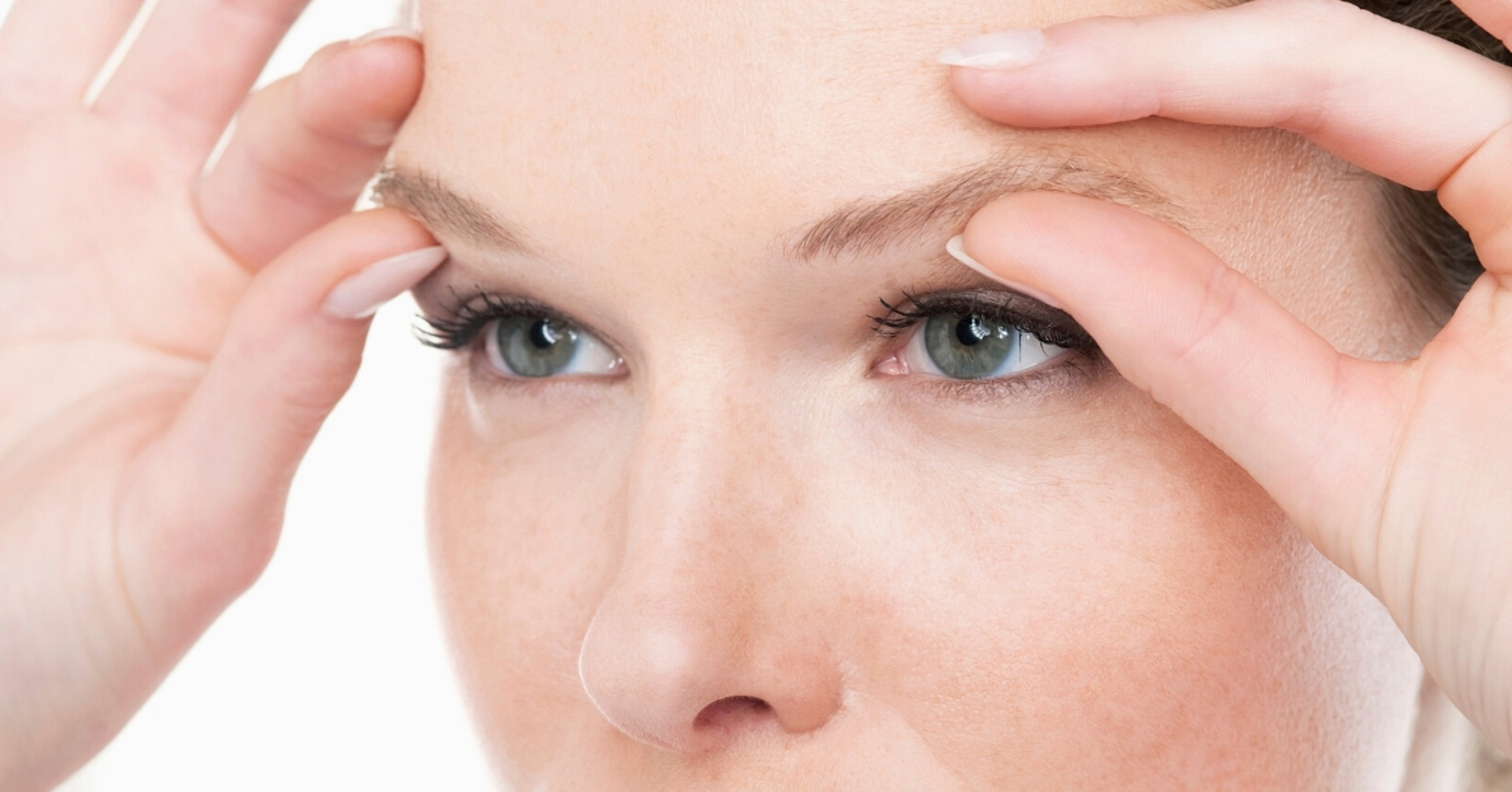
Различные методы подтяжки бровей: нитевой лифтинг, ботокс, хирургический броулифтинг и другие
Красивые и выразительные брови – это важный элемент привлекательности и привлечения внимания окружающих. Однако со временем брови могут потерять свою форму и упругость, приобретая провисание и приводя к неудовлетворенности внешним видом. В этом случае возможны различные методы подтяжки бровей, которые помогут вернуть им прежний вид.
Один из наиболее популярных методов подтяжки бровей – нитевой лифтинг. Этот метод заключается в использовании специальных нитей, которые вводятся под кожу и позволяют подтянуть брови, создавая более выразительный и молодой вид. Нитевой лифтинг не требует длительного периода восстановления, и его результаты держатся до двух лет.
Еще один популярный метод – ботокс-инъекции. Ботулинотерапия позволяет расслабить мышцы в области бровей, что может сделать их более выразительными и изменить форму. Однако результаты ботокс-инъекций не держатся так долго, и процедуру необходимо повторять через несколько месяцев.
Хирургический броулифтинг – это более радикальный метод подтяжки бровей, который требует хирургического вмешательства. Эта процедура позволяет удалить излишки кожи в области бровей и подтянуть мышцы, чтобы создать более молодой и выразительный вид. Хирургический броулифтинг требует более длительного периода восстановления, но его результаты держатся на длительный срок.
В любом случае, перед тем как выбрать метод подтяжки бровей, необходимо проконсультироваться со специалистом и оценить все риски и преимущества каждой процедуры. Он поможет выбрать оптимальный вариант, учитывая индивидуальные особенности и пожелания пациента. Квалифицированный специалист оценит состояние кожи и мышц в области бровей, а также поможет определить, какой метод будет наиболее эффективным в каждом конкретном случае.
Правильно выбранный метод подтяжки бровей может помочь вам достичь желаемого результата, вернуть бровям свою прежнюю форму и упругость, а также улучшить ваш общий внешний вид. Главное – выбирать только проверенные и надежные методы, проводить процедуры только у квалифицированных специалистов и следовать всем рекомендациям врача после процедур.
Read news
Красивые и выразительные брови – это важный элемент привлекательности и привлечения внимания окружающих. Однако со временем брови могут потерять свою форму и упругость, приобретая провисание и приводя к неудовлетворенности внешним видом. В этом случае возможны различные методы подтяжки бровей, которые помогут вернуть им прежний вид.
Один из наиболее популярных методов подтяжки бровей – нитевой лифтинг. Этот метод заключается в использовании специальных нитей, которые вводятся под кожу и позволяют подтянуть брови, создавая более выразительный и молодой вид. Нитевой лифтинг не требует длительного периода восстановления, и его результаты держатся до двух лет.
Еще один популярный метод – ботокс-инъекции. Ботулинотерапия позволяет расслабить мышцы в области бровей, что может сделать их более выразительными и изменить форму. Однако результаты ботокс-инъекций не держатся так долго, и процедуру необходимо повторять через несколько месяцев.
Хирургический броулифтинг – это более радикальный метод подтяжки бровей, который требует хирургического вмешательства. Эта процедура позволяет удалить излишки кожи в области бровей и подтянуть мышцы, чтобы создать более молодой и выразительный вид. Хирургический броулифтинг требует более длительного периода восстановления, но его результаты держатся на длительный срок.
В любом случае, перед тем как выбрать метод подтяжки бровей, необходимо проконсультироваться со специалистом и оценить все риски и преимущества каждой процедуры. Он поможет выбрать оптимальный вариант, учитывая индивидуальные особенности и пожелания пациента. Квалифицированный специалист оценит состояние кожи и мышц в области бровей, а также поможет определить, какой метод будет наиболее эффективным в каждом конкретном случае.
Правильно выбранный метод подтяжки бровей может помочь вам достичь желаемого результата, вернуть бровям свою прежнюю форму и упругость, а также улучшить ваш общий внешний вид. Главное – выбирать только проверенные и надежные методы, проводить процедуры только у квалифицированных специалистов и следовать всем рекомендациям врача после процедур.
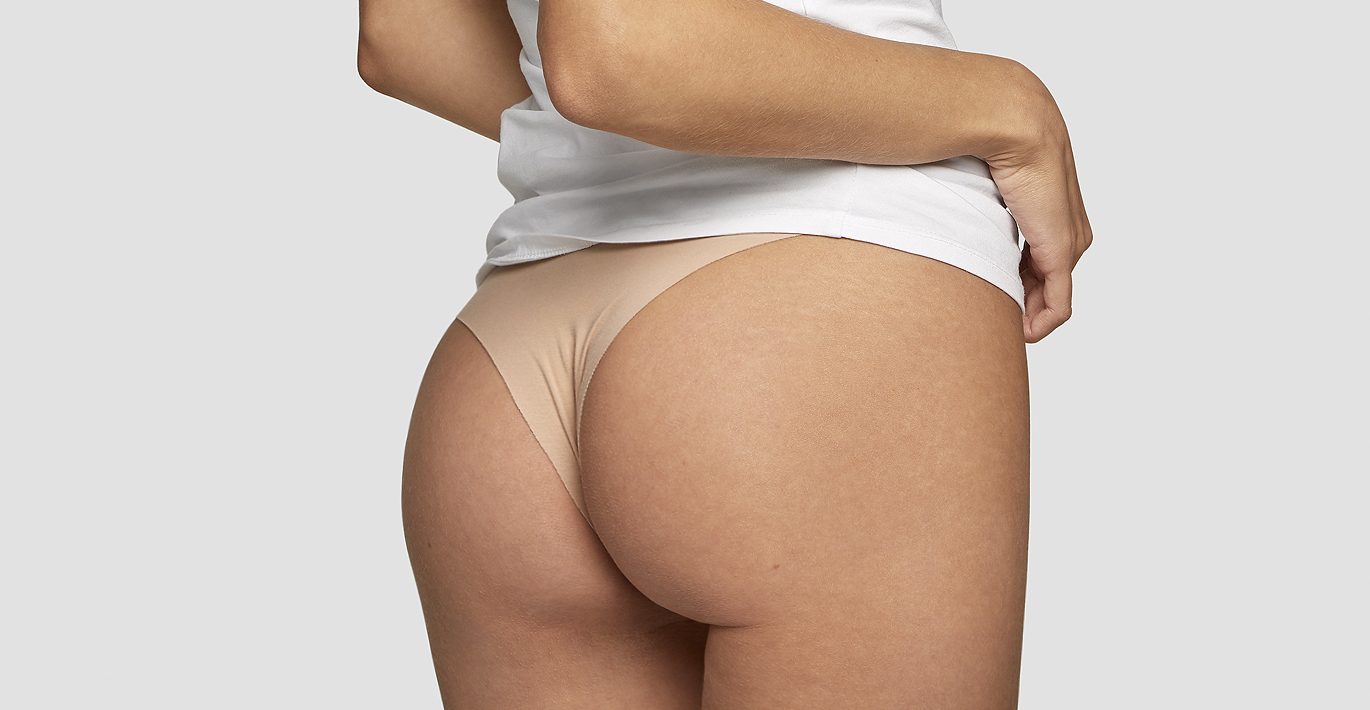
Различные методы подтяжки бедер липофилинг, бразильская подтяжка, хирургический лифтинг и другие
Подтяжка бедер – это одна из наиболее востребованных процедур в пластической хирургии. Она позволяет улучшить форму и контур бедер, убрать избыточную кожу и жир, а также улучшить их тонус. Существует множество методов подтяжки бедер, каждый из которых имеет свои преимущества и недостатки. В этой статье мы рассмотрим наиболее популярные методы подтяжки бедер и их принцип действия.
Липофилинг
Липофилинг является одним из самых популярных методов подтяжки бедер. Эта процедура проводится с использованием собственной жировой ткани пациента, которая извлекается из другой части тела и вводится в область бедер. Жировые клетки восстанавливают объем и форму бедер, делая их более красивыми и привлекательными.
Бразильская подтяжка
Бразильская подтяжка – это метод, который позволяет улучшить форму и контур бедер, используя специальные нити. Нити вводятся в ткани бедер, что позволяет подтянуть их, убрать избыточную кожу и жир, а также улучшить тонус кожи. Этот метод подтяжки бедер обеспечивает длительный эффект, а также меньшее количество осложнений.
Хирургический лифтинг
Хирургический лифтинг – это метод подтяжки бедер, который проводится при помощи хирургической операции. В процессе операции удаляются избыточные жировые отложения и кожа, после чего проводится растяжка кожи и затягивание раны. Этот метод подтяжки бедер дает наиболее длительный и заметный результат, но также требует более длительного периода восстановления.
Прочие методы подтяжки бедер
Кроме перечисленных выше методов, существуют и другие методы подтяжки бедер, такие как ультразвуковая подтяжка, инъекции коллагена и другие. Однако, каждый метод имеет свои преимущества и недостатки, и выбор метода должен быть основан на индивидуальных особенностях пациента, а также на рекомендациях врача.
Ультразвуковая подтяжка является неинвазивной процедурой, которая использует ультразвуковые волны для стимуляции производства коллагена и эластина в коже. Этот метод может дать заметные результаты в течение нескольких месяцев после процедуры, но для достижения оптимальных результатов может потребоваться несколько сеансов.
Инъекции коллагена могут помочь улучшить текстуру кожи, увеличить объем и подтянуть кожу. Однако, этот метод временный и результаты обычно держатся до 6 месяцев.
Независимо от выбранного метода подтяжки бедер, важно понимать, что результаты могут быть достигнуты только при правильном уходе за кожей после процедуры. Важно следовать рекомендациям врача по уходу за кожей, включая использование защитного крема от солнца, чтобы избежать повреждения кожи и сохранить результаты подтяжки на длительное время.
В целом, выбор метода подтяжки бедер является индивидуальным и должен быть основан на консультации со специалистом и оценке всех рисков и преимуществ каждого метода. Врач может помочь выбрать оптимальный вариант, учитывая индивидуальные особенности и желания пациента.
Read news
Подтяжка бедер – это одна из наиболее востребованных процедур в пластической хирургии. Она позволяет улучшить форму и контур бедер, убрать избыточную кожу и жир, а также улучшить их тонус. Существует множество методов подтяжки бедер, каждый из которых имеет свои преимущества и недостатки. В этой статье мы рассмотрим наиболее популярные методы подтяжки бедер и их принцип действия.
Липофилинг
Липофилинг является одним из самых популярных методов подтяжки бедер. Эта процедура проводится с использованием собственной жировой ткани пациента, которая извлекается из другой части тела и вводится в область бедер. Жировые клетки восстанавливают объем и форму бедер, делая их более красивыми и привлекательными.
Бразильская подтяжка
Бразильская подтяжка – это метод, который позволяет улучшить форму и контур бедер, используя специальные нити. Нити вводятся в ткани бедер, что позволяет подтянуть их, убрать избыточную кожу и жир, а также улучшить тонус кожи. Этот метод подтяжки бедер обеспечивает длительный эффект, а также меньшее количество осложнений.
Хирургический лифтинг
Хирургический лифтинг – это метод подтяжки бедер, который проводится при помощи хирургической операции. В процессе операции удаляются избыточные жировые отложения и кожа, после чего проводится растяжка кожи и затягивание раны. Этот метод подтяжки бедер дает наиболее длительный и заметный результат, но также требует более длительного периода восстановления.
Прочие методы подтяжки бедер
Кроме перечисленных выше методов, существуют и другие методы подтяжки бедер, такие как ультразвуковая подтяжка, инъекции коллагена и другие. Однако, каждый метод имеет свои преимущества и недостатки, и выбор метода должен быть основан на индивидуальных особенностях пациента, а также на рекомендациях врача.
Ультразвуковая подтяжка является неинвазивной процедурой, которая использует ультразвуковые волны для стимуляции производства коллагена и эластина в коже. Этот метод может дать заметные результаты в течение нескольких месяцев после процедуры, но для достижения оптимальных результатов может потребоваться несколько сеансов.
Инъекции коллагена могут помочь улучшить текстуру кожи, увеличить объем и подтянуть кожу. Однако, этот метод временный и результаты обычно держатся до 6 месяцев.
Независимо от выбранного метода подтяжки бедер, важно понимать, что результаты могут быть достигнуты только при правильном уходе за кожей после процедуры. Важно следовать рекомендациям врача по уходу за кожей, включая использование защитного крема от солнца, чтобы избежать повреждения кожи и сохранить результаты подтяжки на длительное время.
В целом, выбор метода подтяжки бедер является индивидуальным и должен быть основан на консультации со специалистом и оценке всех рисков и преимуществ каждого метода. Врач может помочь выбрать оптимальный вариант, учитывая индивидуальные особенности и желания пациента.
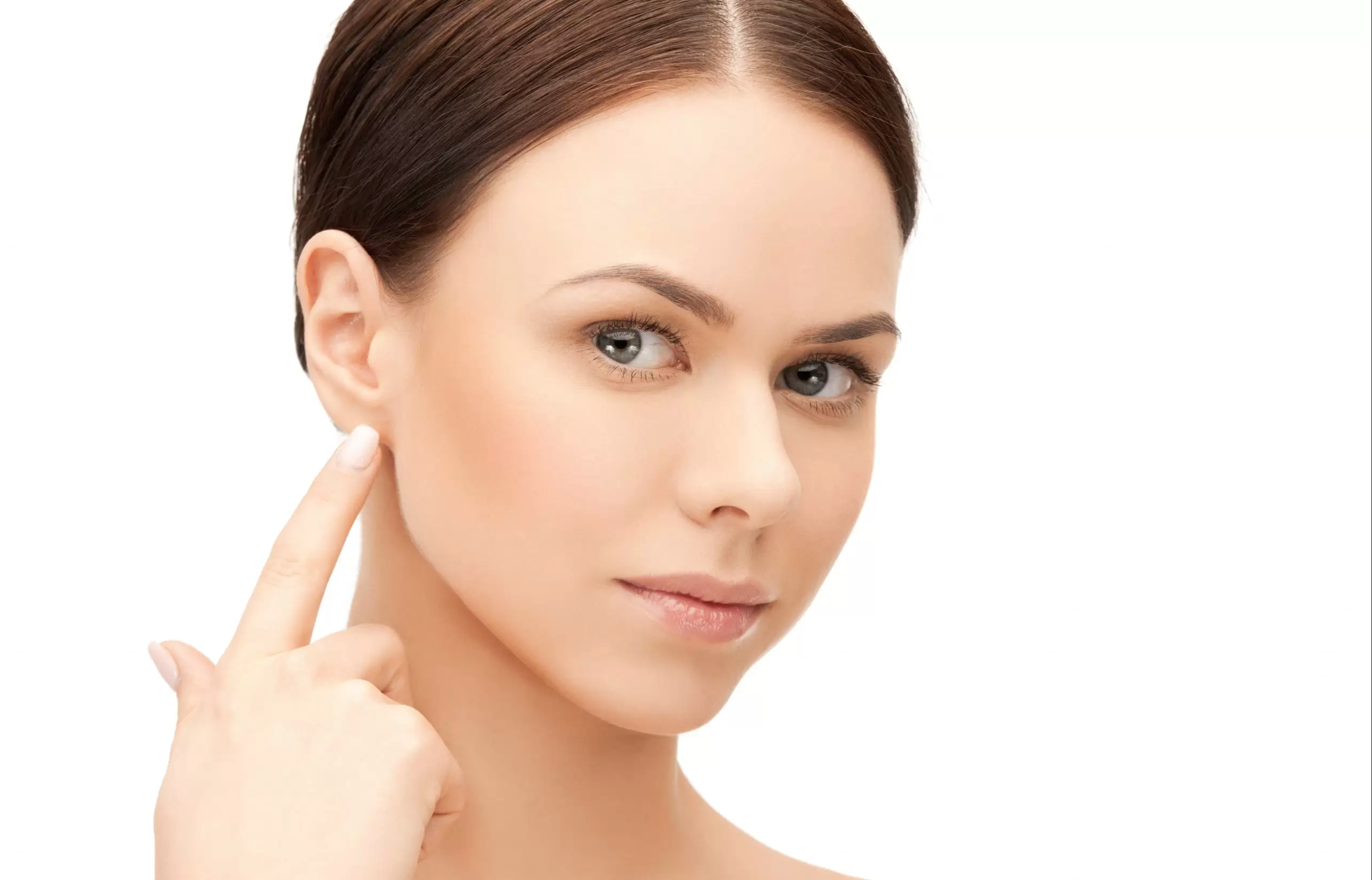
Различные методы отопластики: классическая и модифицированная отопластика, редукционная и т.д.
Отопластика – это процедура коррекции формы ушей, которая может улучшить внешний вид и повысить уверенность в себе. Существует несколько методов отопластики, каждый из которых имеет свои особенности и преимущества. В этой статье мы рассмотрим различные методы отопластики, включая классическую и модифицированную отопластику, редукционную и другие.
Классическая отопластика
Классическая отопластика – это самый распространенный метод коррекции формы ушей. Он заключается в создании надреза в задней части уха и удалении избыточной хрящевой ткани. Хирург сформирует новую форму уха и закроет рану швами. Классическая отопластика обычно проводится под местной анестезией и занимает около 2-3 часов.
Модифицированная отопластика
Модифицированная отопластика – это измененный метод классической отопластики, который позволяет сохранить большую часть хрящевой ткани. В этом методе надрез делается сзади уха, а хрящевая ткань моделируется и закрепляется при помощи швов. Модифицированная отопластика также проводится под местной анестезией и может занимать до 3-4 часов.
Редукционная отопластика
Редукционная отопластика – это метод, который применяется при сильном избытке хрящевой ткани и/или кожи на ушах. Он заключается в удалении части хряща и кожи в задней части уха. Хирург создает новую форму уха и закрывает рану швами. Редукционная отопластика также проводится под местной анестезией и может занимать до 3-4 часов.
Комбинированные методы отопластики
Кроме того, существуют комбинированные методы отопластики, которые сочетают в себе несколько из описанных выше методов. Они позволяют достичь лучших результатов при более сложных случаях коррекции формы ушей.
Выводы
Различные методы отопластики предлагают пациентам множество возможностей для улучшения внешнего вида ушей и повышения уверенности в себе. При выборе метода отопластики необходимо обращаться к опытному специалисту-хирургу, который поможет определить наилучший вариант для каждого конкретного случая.
В любом случае, прежде чем решиться на отопластику, необходимо провести консультацию с хирургом, который поможет определить наилучший метод коррекции формы ушей, расскажет о всех потенциальных рисках и даст рекомендации по подготовке и послеоперационному уходу. Следуя всем рекомендациям врача, пациенты могут достичь желаемых результатов и получить уверенность в своем внешнем виде.
Read news
Отопластика – это процедура коррекции формы ушей, которая может улучшить внешний вид и повысить уверенность в себе. Существует несколько методов отопластики, каждый из которых имеет свои особенности и преимущества. В этой статье мы рассмотрим различные методы отопластики, включая классическую и модифицированную отопластику, редукционную и другие.
Классическая отопластика
Классическая отопластика – это самый распространенный метод коррекции формы ушей. Он заключается в создании надреза в задней части уха и удалении избыточной хрящевой ткани. Хирург сформирует новую форму уха и закроет рану швами. Классическая отопластика обычно проводится под местной анестезией и занимает около 2-3 часов.
Модифицированная отопластика
Модифицированная отопластика – это измененный метод классической отопластики, который позволяет сохранить большую часть хрящевой ткани. В этом методе надрез делается сзади уха, а хрящевая ткань моделируется и закрепляется при помощи швов. Модифицированная отопластика также проводится под местной анестезией и может занимать до 3-4 часов.
Редукционная отопластика
Редукционная отопластика – это метод, который применяется при сильном избытке хрящевой ткани и/или кожи на ушах. Он заключается в удалении части хряща и кожи в задней части уха. Хирург создает новую форму уха и закрывает рану швами. Редукционная отопластика также проводится под местной анестезией и может занимать до 3-4 часов.
Комбинированные методы отопластики
Кроме того, существуют комбинированные методы отопластики, которые сочетают в себе несколько из описанных выше методов. Они позволяют достичь лучших результатов при более сложных случаях коррекции формы ушей.
Выводы
Различные методы отопластики предлагают пациентам множество возможностей для улучшения внешнего вида ушей и повышения уверенности в себе. При выборе метода отопластики необходимо обращаться к опытному специалисту-хирургу, который поможет определить наилучший вариант для каждого конкретного случая.
В любом случае, прежде чем решиться на отопластику, необходимо провести консультацию с хирургом, который поможет определить наилучший метод коррекции формы ушей, расскажет о всех потенциальных рисках и даст рекомендации по подготовке и послеоперационному уходу. Следуя всем рекомендациям врача, пациенты могут достичь желаемых результатов и получить уверенность в своем внешнем виде.
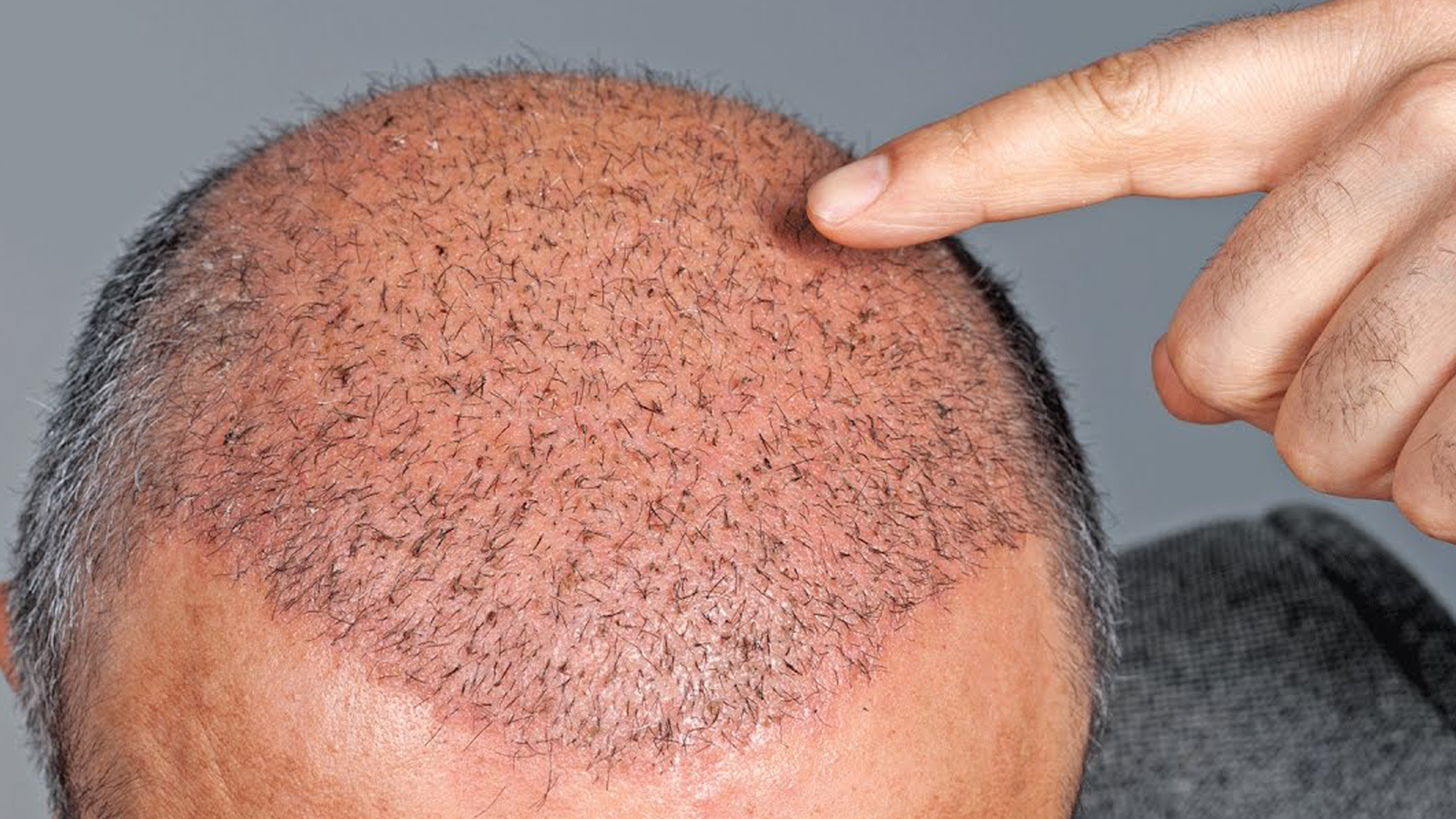
Как работает трансплантация волос: процедуры и технологии
Трансплантация волос – это эффективный метод решения проблемы облысения. Многие люди сталкиваются с этой проблемой в разные периоды своей жизни. Она может быть вызвана генетическими факторами, болезнями, стрессом и другими причинами. В данной статье мы расскажем, как работает трансплантация волос, процедуры и технологии, используемые в этом методе.
Что такое трансплантация волос?
Трансплантация волос – это процедура, при которой волосы переносятся с одной части тела на другую. В основном это относится к пересадке волос с задней части головы на область лобной части головы, где волосы выпадают или разрежаются. Также этот метод может использоваться для решения проблем с усами, бородой и бровями.
Какие технологии используются при трансплантации волос?
Существует несколько технологий, используемых при трансплантации волос. Одна из них – метод FUE (Follicular Unit Extraction). Этот метод заключается в том, что каждый волосяной фолликул вынимается индивидуально с помощью специального инструмента, который не повреждает окружающие ткани. Этот способ является более чётким и мало инвазивным.
Второй метод – FUT (Follicular Unit Transplantation) – предполагает вырезание полоски кожи с волосами из донорской зоны. Затем волосы отсекаются от кожи и переносятся в нужную область. Этот способ может быть более эффективным, когда нужно пересадить огромное количество волос.
Также есть разные технологии, используемые для улучшения результатов трансплантации волос. Например, перед процедурой врач может применить PRP-терапию (терапию богатой тромбоцитами на плазму), которая помогает ускорить заживление тканей и стимулировать рост волос. Также используются специальные растворы для улучшения выживаемости пересаженных волос.
Кто может пройти трансплантацию волос?
Трансплантация волос может быть произведена у людей любого пола и возраста, имеющих проблемы с облысением. Однако, прежде чем решиться на процедуру, необходимо проконсультироваться с врачом и проанализировать причины облысения. Трансплантация волос может быть неэффективна в случае, если причина облысения связана с нарушениями в организме.
Как подготовиться к трансплантации волос?
Перед процедурой нужно провести консультацию с врачом и пройти нужные обследования. Также важно избегать употребления алкоголя и курения в течение нескольких дней до процедуры, а также следовать рекомендациям врача по уходу за кожей головы после процедуры.
Вывод
Трансплантация волос – это эффективный метод решения проблемы облысения, который позволяет восстановить естественный вид волос. Есть несколько технологий, используемых при трансплантации волос, каждая из которых имеет свои преимущества и недостатки. Прежде чем решиться на процедуру, необходимо проконсультироваться с врачом и провести необходимые обследования.
Read news
Трансплантация волос – это эффективный метод решения проблемы облысения. Многие люди сталкиваются с этой проблемой в разные периоды своей жизни. Она может быть вызвана генетическими факторами, болезнями, стрессом и другими причинами. В данной статье мы расскажем, как работает трансплантация волос, процедуры и технологии, используемые в этом методе.
Что такое трансплантация волос?
Трансплантация волос – это процедура, при которой волосы переносятся с одной части тела на другую. В основном это относится к пересадке волос с задней части головы на область лобной части головы, где волосы выпадают или разрежаются. Также этот метод может использоваться для решения проблем с усами, бородой и бровями.
Какие технологии используются при трансплантации волос?
Существует несколько технологий, используемых при трансплантации волос. Одна из них – метод FUE (Follicular Unit Extraction). Этот метод заключается в том, что каждый волосяной фолликул вынимается индивидуально с помощью специального инструмента, который не повреждает окружающие ткани. Этот способ является более чётким и мало инвазивным.
Второй метод – FUT (Follicular Unit Transplantation) – предполагает вырезание полоски кожи с волосами из донорской зоны. Затем волосы отсекаются от кожи и переносятся в нужную область. Этот способ может быть более эффективным, когда нужно пересадить огромное количество волос.
Также есть разные технологии, используемые для улучшения результатов трансплантации волос. Например, перед процедурой врач может применить PRP-терапию (терапию богатой тромбоцитами на плазму), которая помогает ускорить заживление тканей и стимулировать рост волос. Также используются специальные растворы для улучшения выживаемости пересаженных волос.
Кто может пройти трансплантацию волос?
Трансплантация волос может быть произведена у людей любого пола и возраста, имеющих проблемы с облысением. Однако, прежде чем решиться на процедуру, необходимо проконсультироваться с врачом и проанализировать причины облысения. Трансплантация волос может быть неэффективна в случае, если причина облысения связана с нарушениями в организме.
Как подготовиться к трансплантации волос?
Перед процедурой нужно провести консультацию с врачом и пройти нужные обследования. Также важно избегать употребления алкоголя и курения в течение нескольких дней до процедуры, а также следовать рекомендациям врача по уходу за кожей головы после процедуры.
Вывод
Трансплантация волос – это эффективный метод решения проблемы облысения, который позволяет восстановить естественный вид волос. Есть несколько технологий, используемых при трансплантации волос, каждая из которых имеет свои преимущества и недостатки. Прежде чем решиться на процедуру, необходимо проконсультироваться с врачом и провести необходимые обследования.
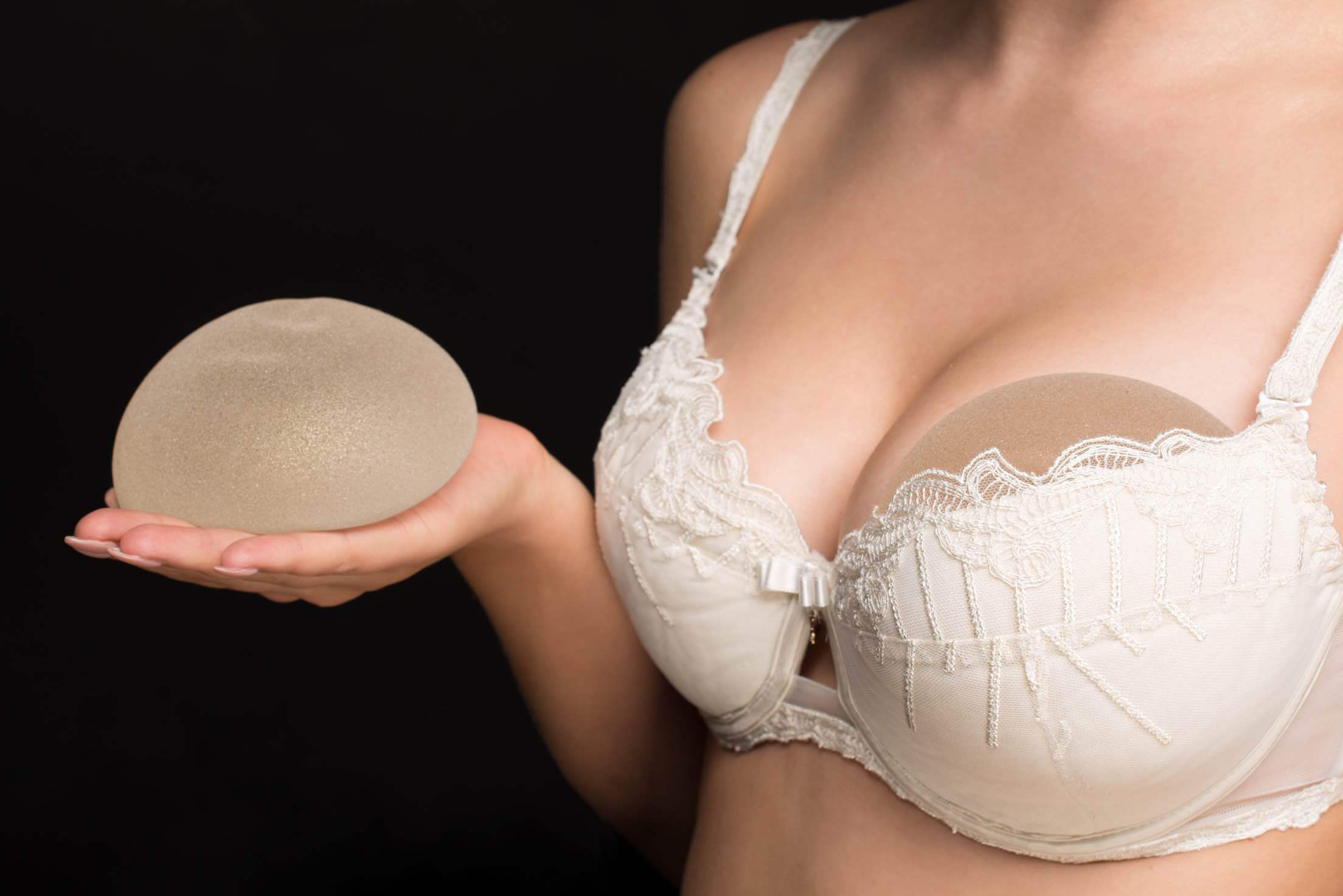
Операция по увеличению груди: какие материалы используются для имплантации
Операция по увеличению груди является одной из наиболее популярных процедур пластической хирургии, которая позволяет женщинам улучшить форму и размер своей груди. Одним из ключевых аспектов этой операции является выбор материалов для имплантации. В этой статье мы рассмотрим, какие материалы используются для увеличения груди и как выбрать наиболее подходящий вариант.
Импланты для увеличения груди
Импланты для увеличения груди – это медицинские устройства, которые помещаются внутрь грудной железы для увеличения ее размера и улучшения формы груди. Существует несколько типов имплантов, которые отличаются материалом, формой и размером.
Силиконовые импланты
Силиконовые импланты являются самыми распространенными вариантом для увеличения груди. Они состоят из капсулы из силикона, заполненной гелем силикона. Эти импланты имеют мягкую текстуру и отлично подходят для достижения естественного вида груди. Они также доступны в различных формах и размерах, чтобы соответствовать индивидуальным потребностям и желаниям пациента.
Солевые импланты
Солевые импланты состоят из капсулы, заполненной раствором соли. Они могут быть более жесткими и менее естественными на ощупь, чем силиконовые импланты. Однако, они являются более доступным вариантом и могут быть подходящими для тех, кто не может позволить себе силиконовые импланты.
Импланты из альтернативных материалов
Кроме силикона и соли, существуют и другие материалы, которые могут быть использованы для имплантации. Например, импланты из гидрогеля или растительных материалов. Однако, эти материалы редко используются в практике пластической хирургии и требуют дополнительных исследований и т
естирований, чтобы подтвердить их эффективность и безопасность.
Как выбрать материал для имплантации?
Выбор материала для имплантации зависит от индивидуальных потребностей и желаний пациента, а также от рекомендаций пластического хирурга. Важно обсудить все возможные варианты и преимущества каждого из них, чтобы принять информированное решение.
Кроме выбора материала для имплантации, важно также учитывать размер и форму импланта. Они должны соответствовать естественному размеру и форме груди, чтобы достичь наилучшего результата.
Надежность и безопасность имплантов для увеличения груди также являются важными факторами при выборе материала. Силиконовые импланты считаются одними из наиболее безопасных и долговечных вариантов. Однако, существует риск разрыва импланта, что может привести к утечке силикона в ткани груди. Хотя это редкий случай, пациенты должны быть готовы к такому исходу и обсудить с пластическим хирургом возможные последствия.
Выводы
Операция по увеличению груди является серьезной процедурой, которая может повлиять на ваше здоровье и качество жизни. Выбор материала для имплантации должен основываться на индивидуальных потребностях и желаниях пациента, а также на рекомендациях опытного пластического хирурга. Надежность и безопасность имплантов также являются важными факторами при выборе материала. Пациенты должны быть готовы к возможным рискам и обсудить все детали операции с пластическим хирургом, чтобы достичь оптимального результата.
Read news
Операция по увеличению груди является одной из наиболее популярных процедур пластической хирургии, которая позволяет женщинам улучшить форму и размер своей груди. Одним из ключевых аспектов этой операции является выбор материалов для имплантации. В этой статье мы рассмотрим, какие материалы используются для увеличения груди и как выбрать наиболее подходящий вариант.
Импланты для увеличения груди
Импланты для увеличения груди – это медицинские устройства, которые помещаются внутрь грудной железы для увеличения ее размера и улучшения формы груди. Существует несколько типов имплантов, которые отличаются материалом, формой и размером.
Силиконовые импланты
Силиконовые импланты являются самыми распространенными вариантом для увеличения груди. Они состоят из капсулы из силикона, заполненной гелем силикона. Эти импланты имеют мягкую текстуру и отлично подходят для достижения естественного вида груди. Они также доступны в различных формах и размерах, чтобы соответствовать индивидуальным потребностям и желаниям пациента.
Солевые импланты
Солевые импланты состоят из капсулы, заполненной раствором соли. Они могут быть более жесткими и менее естественными на ощупь, чем силиконовые импланты. Однако, они являются более доступным вариантом и могут быть подходящими для тех, кто не может позволить себе силиконовые импланты.
Импланты из альтернативных материалов
Кроме силикона и соли, существуют и другие материалы, которые могут быть использованы для имплантации. Например, импланты из гидрогеля или растительных материалов. Однако, эти материалы редко используются в практике пластической хирургии и требуют дополнительных исследований и т
естирований, чтобы подтвердить их эффективность и безопасность.
Как выбрать материал для имплантации?
Выбор материала для имплантации зависит от индивидуальных потребностей и желаний пациента, а также от рекомендаций пластического хирурга. Важно обсудить все возможные варианты и преимущества каждого из них, чтобы принять информированное решение.
Кроме выбора материала для имплантации, важно также учитывать размер и форму импланта. Они должны соответствовать естественному размеру и форме груди, чтобы достичь наилучшего результата.
Надежность и безопасность имплантов для увеличения груди также являются важными факторами при выборе материала. Силиконовые импланты считаются одними из наиболее безопасных и долговечных вариантов. Однако, существует риск разрыва импланта, что может привести к утечке силикона в ткани груди. Хотя это редкий случай, пациенты должны быть готовы к такому исходу и обсудить с пластическим хирургом возможные последствия.
Выводы
Операция по увеличению груди является серьезной процедурой, которая может повлиять на ваше здоровье и качество жизни. Выбор материала для имплантации должен основываться на индивидуальных потребностях и желаниях пациента, а также на рекомендациях опытного пластического хирурга. Надежность и безопасность имплантов также являются важными факторами при выборе материала. Пациенты должны быть готовы к возможным рискам и обсудить все детали операции с пластическим хирургом, чтобы достичь оптимального результата.
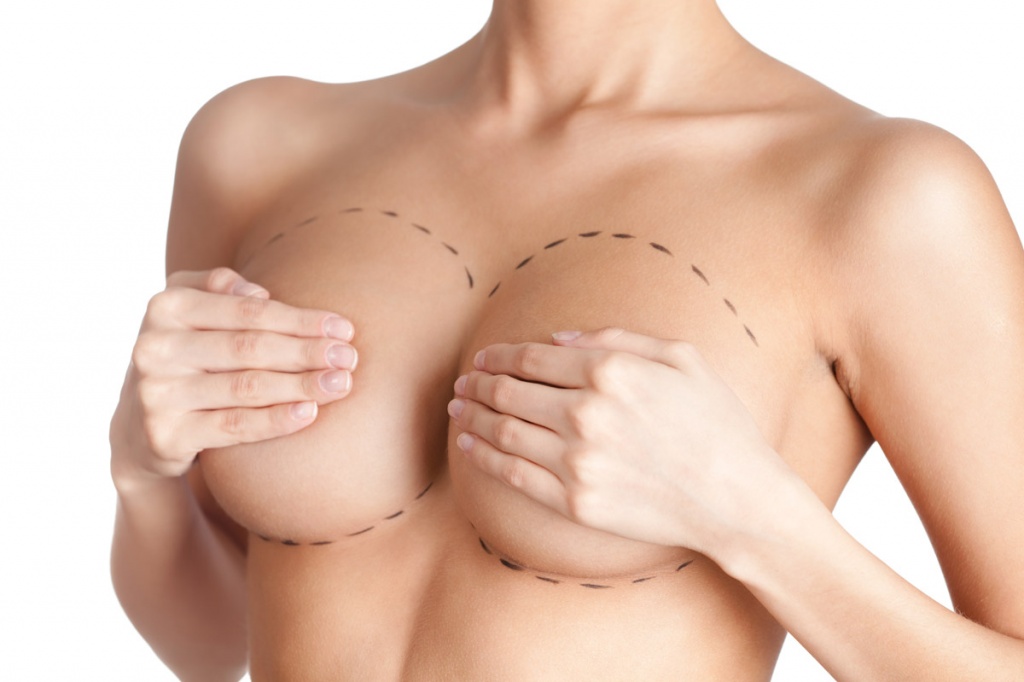
Как проходит операция по подтяжке груди?
Подтяжка груди – это процедура косметической хирургии, которая позволяет улучшить форму и размер груди, восстановить ее подтянутость и упругость. В этой статье мы рассмотрим, как проходит операция по подтяжке груди и какие этапы включает в себя этот процесс.
Этапы подтяжки груди
Перед операцией по подтяжке груди необходимо пройти консультацию с хирургом, чтобы обсудить все детали процедуры и узнать, подходит ли она вам. В ходе консультации вы можете обсудить свои ожидания и пожелания относительно размера и формы груди, а также задать все интересующие вас вопросы.
Перед операцией вы должны подготовиться к ней, следуя инструкциям хирурга. Это может включать в себя ограничения в питании и приеме лекарств, снятие макияжа и украшений, а также выполнение некоторых упражнений для улучшения кровообращения.
Операция по подтяжке груди может проводиться под общей анестезией или местной анестезией. В большинстве случаев используется общая анестезия, чтобы обеспечить максимальный комфорт и безопасность пациента.
Перед началом операции хирург наносит разметку на грудь, чтобы определить место разреза и направление подтяжки. Это поможет достичь оптимального результата и минимизировать риск осложнений.
Хирург делает разрез вокруг соска или вдоль нижнего края груди, чтобы получить доступ к тканям груди. Разрез может быть разного размера и формы, в зависимости от желаемого результата.
Хирург поднимает ткани груди и придает им желаемую форму и размер, используя различные методы подтяжки, такие как удаление избыточной кожи и жировой ткани, а также создание новой формы груди.
После того, как ткани груди подняты и при
даны желаемую форму, хирург закрывает разрез с помощью швов. В некоторых случаях может быть установлен дренаж, чтобы удалить избыточную жидкость.
После операции по подтяжке груди вам необходимо оставаться в больнице на некоторое время для наблюдения. Вы можете испытывать некоторые дискомфортные ощущения, такие как боль, отек и синяки, но обычно они проходят через несколько дней.
Вам может быть предписано ношение специального бюстгальтера для поддержки груди и ускорения процесса заживления. Вы должны избегать физических упражнений и нагрузок на грудь в течение нескольких недель, чтобы дать тканям время для заживления.
После операции по подтяжке груди вы заметите изменения в форме, размере и упругости вашей груди. Результат может быть заметен сразу после операции, но окончательный результат будет виден только через несколько недель или месяцев, когда отек и синяки исчезнут.
Важно отметить, что результат операции по подтяжке груди может быть долговременным, если вы будете следить за своим здоровьем и физической формой, а также избегать нагрузок на грудь и сохранять здоровый образ жизни.
Заключение
Операция по подтяжке груди – это серьезный шаг для тех, кто желает изменить форму и размер груди. Эта процедура может помочь вам достичь желаемого результата и повысить уверенность в себе и своем теле. Если вы думаете об операции по подтяжке груди, необходимо проконсультироваться с опытным хирургом и подготовиться к процедуре, чтобы достичь оптимального результата и минимизировать риски осложнений.
Read news
Подтяжка груди – это процедура косметической хирургии, которая позволяет улучшить форму и размер груди, восстановить ее подтянутость и упругость. В этой статье мы рассмотрим, как проходит операция по подтяжке груди и какие этапы включает в себя этот процесс.
Этапы подтяжки груди
Перед операцией по подтяжке груди необходимо пройти консультацию с хирургом, чтобы обсудить все детали процедуры и узнать, подходит ли она вам. В ходе консультации вы можете обсудить свои ожидания и пожелания относительно размера и формы груди, а также задать все интересующие вас вопросы.
Перед операцией вы должны подготовиться к ней, следуя инструкциям хирурга. Это может включать в себя ограничения в питании и приеме лекарств, снятие макияжа и украшений, а также выполнение некоторых упражнений для улучшения кровообращения.
Операция по подтяжке груди может проводиться под общей анестезией или местной анестезией. В большинстве случаев используется общая анестезия, чтобы обеспечить максимальный комфорт и безопасность пациента.
Перед началом операции хирург наносит разметку на грудь, чтобы определить место разреза и направление подтяжки. Это поможет достичь оптимального результата и минимизировать риск осложнений.
Хирург делает разрез вокруг соска или вдоль нижнего края груди, чтобы получить доступ к тканям груди. Разрез может быть разного размера и формы, в зависимости от желаемого результата.
Хирург поднимает ткани груди и придает им желаемую форму и размер, используя различные методы подтяжки, такие как удаление избыточной кожи и жировой ткани, а также создание новой формы груди.
После того, как ткани груди подняты и при
даны желаемую форму, хирург закрывает разрез с помощью швов. В некоторых случаях может быть установлен дренаж, чтобы удалить избыточную жидкость.
После операции по подтяжке груди вам необходимо оставаться в больнице на некоторое время для наблюдения. Вы можете испытывать некоторые дискомфортные ощущения, такие как боль, отек и синяки, но обычно они проходят через несколько дней.
Вам может быть предписано ношение специального бюстгальтера для поддержки груди и ускорения процесса заживления. Вы должны избегать физических упражнений и нагрузок на грудь в течение нескольких недель, чтобы дать тканям время для заживления.
После операции по подтяжке груди вы заметите изменения в форме, размере и упругости вашей груди. Результат может быть заметен сразу после операции, но окончательный результат будет виден только через несколько недель или месяцев, когда отек и синяки исчезнут.
Важно отметить, что результат операции по подтяжке груди может быть долговременным, если вы будете следить за своим здоровьем и физической формой, а также избегать нагрузок на грудь и сохранять здоровый образ жизни.
Заключение
Операция по подтяжке груди – это серьезный шаг для тех, кто желает изменить форму и размер груди. Эта процедура может помочь вам достичь желаемого результата и повысить уверенность в себе и своем теле. Если вы думаете об операции по подтяжке груди, необходимо проконсультироваться с опытным хирургом и подготовиться к процедуре, чтобы достичь оптимального результата и минимизировать риски осложнений.
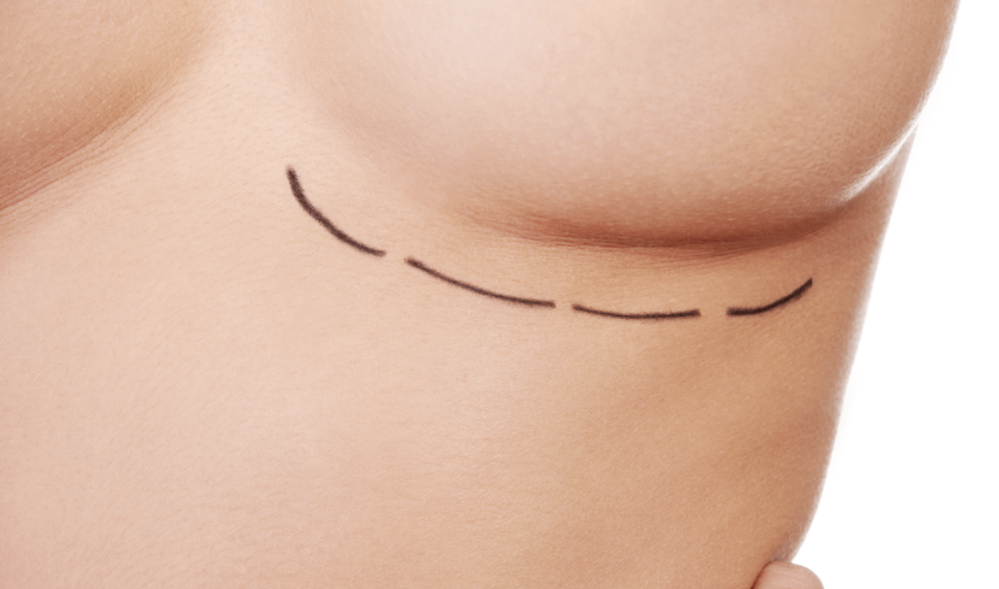
Scars after a breast lift
A breast lift is one of the most common operations. Girls resort to it to improve the shape of their breasts. This operation is performed surgically. Many girls are concerned about the appearance of scars after surgery. In hospitals in Europe, surgeons perform surgeries that leave no visible marks. Each patient is treated individually, taking into account the peculiarities of the body and personal wishes.
Seam locations
The incision in mammoplasty can be:
The brightest shade in scars appears immediately after surgery. After 30 days, the scars darken or lighten.
Types of scars
The type of scar that remains after surgery is influenced by the characteristics of the body. Scars happen:
Causes of severe scarring
The pronounced coloration of the scars depends on:
Recommendations for the care of breast stitches
Plastic surgeons in European medical institutions recommend:
The effect of the surgery will exceed your expectations. The staff of the best clinics in Europe will provide any assistance in postoperative care. Hospitals are equipped with all the necessary medicines. If you follow all the surgeon’s advice, your recovery will be quick and painless.
Read news
A breast lift is one of the most common operations. Girls resort to it to improve the shape of their breasts. This operation is performed surgically. Many girls are concerned about the appearance of scars after surgery. In hospitals in Europe, surgeons perform surgeries that leave no visible marks. Each patient is treated individually, taking into account the peculiarities of the body and personal wishes.
Seam locations
The incision in mammoplasty can be:
The brightest shade in scars appears immediately after surgery. After 30 days, the scars darken or lighten.
Types of scars
The type of scar that remains after surgery is influenced by the characteristics of the body. Scars happen:
Causes of severe scarring
The pronounced coloration of the scars depends on:
Recommendations for the care of breast stitches
Plastic surgeons in European medical institutions recommend:
The effect of the surgery will exceed your expectations. The staff of the best clinics in Europe will provide any assistance in postoperative care. Hospitals are equipped with all the necessary medicines. If you follow all the surgeon’s advice, your recovery will be quick and painless.

Stitches after breast augmentation
Many women want to improve the aesthetic appearance of their breasts. A beautiful bust emphasizes femininity and elegance of the fair sex. In surgical intervention, incisions are made. In European hospitals and clinics, plastic surgeons put in neat stitches that are almost impossible to see.
Types of incisions during mammoplasty
The cut can be:
What kind of stitches are used during surgery
During surgery, the surgeon places a breast implant, which is stitched on. The cosmetic suture is a self-absorbable thread. They don’t take them off. The suture resorbs on its own.
In some cases, the use of surgical sutures is appropriate. They are removed 1.5-2 weeks after surgery. The stitches are supported with special tightening patches to keep the scar from increasing in size.
How long do stitches take to heal
For the first 28 days, the rumen is brightly colored. The suture is visible on the skin. After surgery, lymph may be secreted for the first few days. The future rumen begins to mature from week 5 to week 12. The color and shape change. It may darken or turn pale. After one year, the scar is completely formed. It shrinks in size and merges with the skin. This is what a normotrophic scar looks like.
Gluing seams
The gluing method promotes fast rehabilitation. This option consists of applying resorbable sutures and gluing the edges of the wound. For this purpose, a special medical glue is used to isolate the incision and further tighten the tissue. This way, bacteria cannot get into the rumen.
Consequences of surgery
Improper care and individual characteristics of the body can lead to negative consequences. These include:
For a quick recovery you will need to wear a compression garment, treat your stitches, and avoid sports. If you follow all the recommendations, the scar will not leave a trace in the near future.
Care of stitches in the hospital
Experienced surgeons at the hospital’s specialized facilities will perform the surgery safely and with high quality. The nursing staff will ensure proper care during your stay at the clinic. You will be prescribed medications that can be used to treat the stitches. Specialists will make your dream come true by changing the shape and size of your breasts.
Read news
Many women want to improve the aesthetic appearance of their breasts. A beautiful bust emphasizes femininity and elegance of the fair sex. In surgical intervention, incisions are made. In European hospitals and clinics, plastic surgeons put in neat stitches that are almost impossible to see.
Types of incisions during mammoplasty
The cut can be:
What kind of stitches are used during surgery
During surgery, the surgeon places a breast implant, which is stitched on. The cosmetic suture is a self-absorbable thread. They don’t take them off. The suture resorbs on its own.
In some cases, the use of surgical sutures is appropriate. They are removed 1.5-2 weeks after surgery. The stitches are supported with special tightening patches to keep the scar from increasing in size.
How long do stitches take to heal
For the first 28 days, the rumen is brightly colored. The suture is visible on the skin. After surgery, lymph may be secreted for the first few days. The future rumen begins to mature from week 5 to week 12. The color and shape change. It may darken or turn pale. After one year, the scar is completely formed. It shrinks in size and merges with the skin. This is what a normotrophic scar looks like.
Gluing seams
The gluing method promotes fast rehabilitation. This option consists of applying resorbable sutures and gluing the edges of the wound. For this purpose, a special medical glue is used to isolate the incision and further tighten the tissue. This way, bacteria cannot get into the rumen.
Consequences of surgery
Improper care and individual characteristics of the body can lead to negative consequences. These include:
For a quick recovery you will need to wear a compression garment, treat your stitches, and avoid sports. If you follow all the recommendations, the scar will not leave a trace in the near future.
Care of stitches in the hospital
Experienced surgeons at the hospital’s specialized facilities will perform the surgery safely and with high quality. The nursing staff will ensure proper care during your stay at the clinic. You will be prescribed medications that can be used to treat the stitches. Specialists will make your dream come true by changing the shape and size of your breasts.
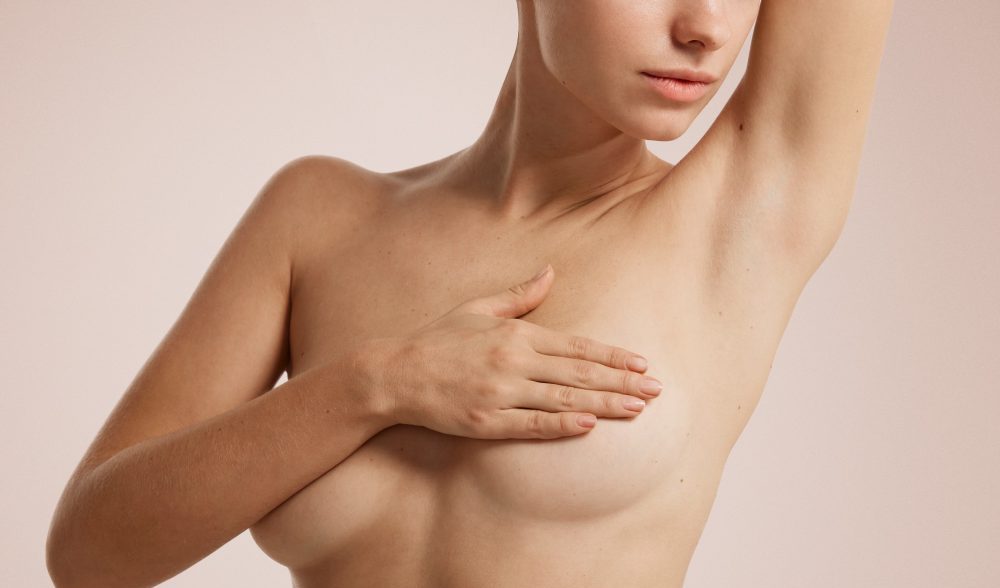
Nipple sensitivity
After mammoplasty, many women notice a number of changes in their bodies. This applies to nipple sensitivity. During the rehabilitation process, discomfort appears, which can spoil your mood and well-being. However, do not despair. Almost always normal sensitivity is restored after 5-6 months.
Painful feelings after mammoplasty
After surgical intervention, patients experience blunt pain in the breast area. Nipple sensitivity decreases. Usually these symptoms go away within a week.
In the first month, soreness, itching, and tingling remain in the area of the stitches. This should not be a cause for concern, as minor symptoms are indicative of the rehabilitation process. After 60-90 days, a capsule is formed in the mammary glands, the task of which is to support the implant. The discomfort disappears.
Loss of nipple sensitivity after surgery
Many patients are afraid to have a mammoplasty because they don’t want to lose sensitivity in their nipples. Such fears are completely unfounded. This is usually a temporary phenomenon.
During the first 14 days, numbness of the skin or nipples is felt. This happens because the damaged tissues are swollen. If the swelling does not go down, you need to see a surgeon. Such a reaction signals the appearance of complications. This is where help comes in:
In some cases, a decrease in sensitivity can be as long as 6 months. This indicates damage to the nerve endings in the area of the mammary glands. Sensitivity is not restored in only 2-3% of patients.
Causes of complete loss of sensitivity
It is possible to lose sensitivity completely because of:
The mammoplasty method plays an important role. With minor damage to small nerve endings, there is no loss of sensation. Serious complications are caused by implants or nerve damage.
Recommendations for restoring sensitivity
To increase sensitivity it is necessary to:
However, the most important thing is the choice of a doctor. Surgeons of European clinics use the most modern methods to perform mammoplasty. Hospitals are equipped with high-precision equipment and medical supplies. In aesthetic medicine clinics you will have an operation that will not cause adverse effects. You will be pleased with the result.
Read news
After mammoplasty, many women notice a number of changes in their bodies. This applies to nipple sensitivity. During the rehabilitation process, discomfort appears, which can spoil your mood and well-being. However, do not despair. Almost always normal sensitivity is restored after 5-6 months.
Painful feelings after mammoplasty
After surgical intervention, patients experience blunt pain in the breast area. Nipple sensitivity decreases. Usually these symptoms go away within a week.
In the first month, soreness, itching, and tingling remain in the area of the stitches. This should not be a cause for concern, as minor symptoms are indicative of the rehabilitation process. After 60-90 days, a capsule is formed in the mammary glands, the task of which is to support the implant. The discomfort disappears.
Loss of nipple sensitivity after surgery
Many patients are afraid to have a mammoplasty because they don’t want to lose sensitivity in their nipples. Such fears are completely unfounded. This is usually a temporary phenomenon.
During the first 14 days, numbness of the skin or nipples is felt. This happens because the damaged tissues are swollen. If the swelling does not go down, you need to see a surgeon. Such a reaction signals the appearance of complications. This is where help comes in:
In some cases, a decrease in sensitivity can be as long as 6 months. This indicates damage to the nerve endings in the area of the mammary glands. Sensitivity is not restored in only 2-3% of patients.
Causes of complete loss of sensitivity
It is possible to lose sensitivity completely because of:
The mammoplasty method plays an important role. With minor damage to small nerve endings, there is no loss of sensation. Serious complications are caused by implants or nerve damage.
Recommendations for restoring sensitivity
To increase sensitivity it is necessary to:
However, the most important thing is the choice of a doctor. Surgeons of European clinics use the most modern methods to perform mammoplasty. Hospitals are equipped with high-precision equipment and medical supplies. In aesthetic medicine clinics you will have an operation that will not cause adverse effects. You will be pleased with the result.
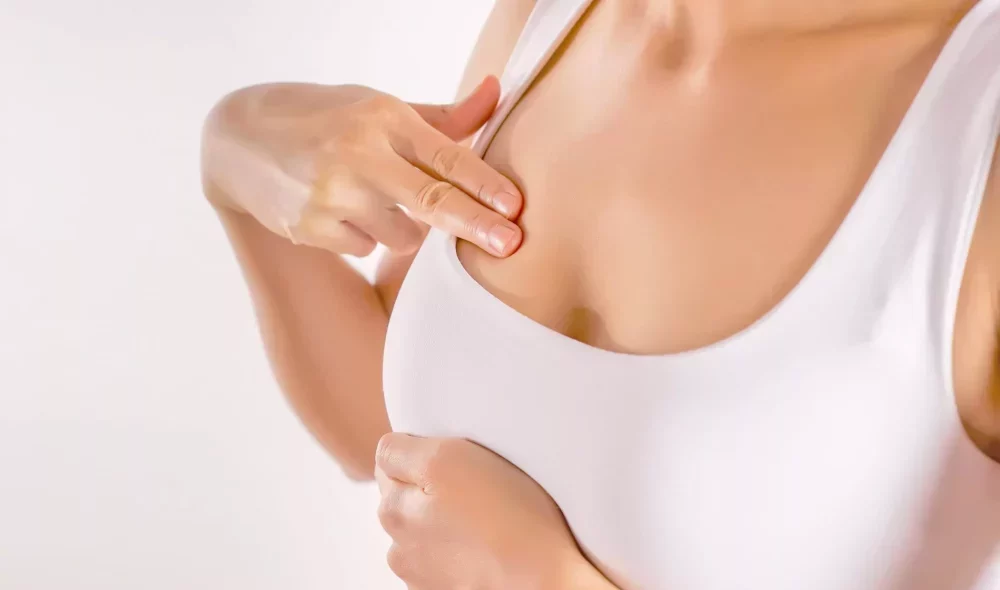
Is it worth breast augmentation
Small size and unfortunate shape of breasts are causes of aesthetic disharmony in girls. Modern medicine solves this problem with breast augmentation surgery. Before the procedure, it is necessary to weigh the pros and cons to rule out any doubts.
Indications for breast augmentation surgery
Surgical intervention can solve a number of problems in:
The surgery can simultaneously increase the size and do a breast lift. In cases of pronounced ptosis and loss of skin elasticity this will be the best option.
Contraindications to surgical intervention
It is forbidden to do the procedure if:
If there are contraindications, it is impossible to perform surgical intervention because complications may occur.
Advantages of breast augmentation surgery
The main advantages are:
During surgery, implants are placed in the mammary glands. At the consultation, the patient and the doctor choose the optimal shape and size of the endoprosthesis. The patient must first undergo all the tests so that the surgeon can assess her health condition.
The choice of an implant is influenced by the individual characteristics of the body and the physique. A modern 3D modeling computer program helps create the shape of the mammary glands.
Hospitals and clinics in Europe use certified materials. Silicone implants quickly take root in the body without causing allergic reactions. They are lightweight and comfortable. Endoprostheses look natural and have a lifetime warranty.
Disadvantages of breast augmentation surgery
The disadvantages of the operation are:
Choosing a clinic and doctor
If you decide to have breast augmentation surgery, you need to choose a proven medical facility and an experienced doctor. European medical institutions employ specialists of the highest category. They perform daily surgeries that can change your figure.
After consultation and tests, the doctor sets the date of surgery. If desired, the manager can book airfare and a hotel room within walking distance of the hospital.
You will be supervised by the nursing staff after surgery. Your doctor will prescribe pain medication to speed up your recovery.
The question whether to increase the breast – you can answer that each girl makes her own choice. Trusting the professionals at aesthetic medicine clinics and hospitals in Europe, you will be pleasantly surprised with the stunning effect after surgery.
Read news
Small size and unfortunate shape of breasts are causes of aesthetic disharmony in girls. Modern medicine solves this problem with breast augmentation surgery. Before the procedure, it is necessary to weigh the pros and cons to rule out any doubts.
Indications for breast augmentation surgery
Surgical intervention can solve a number of problems in:
The surgery can simultaneously increase the size and do a breast lift. In cases of pronounced ptosis and loss of skin elasticity this will be the best option.
Contraindications to surgical intervention
It is forbidden to do the procedure if:
If there are contraindications, it is impossible to perform surgical intervention because complications may occur.
Advantages of breast augmentation surgery
The main advantages are:
During surgery, implants are placed in the mammary glands. At the consultation, the patient and the doctor choose the optimal shape and size of the endoprosthesis. The patient must first undergo all the tests so that the surgeon can assess her health condition.
The choice of an implant is influenced by the individual characteristics of the body and the physique. A modern 3D modeling computer program helps create the shape of the mammary glands.
Hospitals and clinics in Europe use certified materials. Silicone implants quickly take root in the body without causing allergic reactions. They are lightweight and comfortable. Endoprostheses look natural and have a lifetime warranty.
Disadvantages of breast augmentation surgery
The disadvantages of the operation are:
Choosing a clinic and doctor
If you decide to have breast augmentation surgery, you need to choose a proven medical facility and an experienced doctor. European medical institutions employ specialists of the highest category. They perform daily surgeries that can change your figure.
After consultation and tests, the doctor sets the date of surgery. If desired, the manager can book airfare and a hotel room within walking distance of the hospital.
You will be supervised by the nursing staff after surgery. Your doctor will prescribe pain medication to speed up your recovery.
The question whether to increase the breast – you can answer that each girl makes her own choice. Trusting the professionals at aesthetic medicine clinics and hospitals in Europe, you will be pleasantly surprised with the stunning effect after surgery.
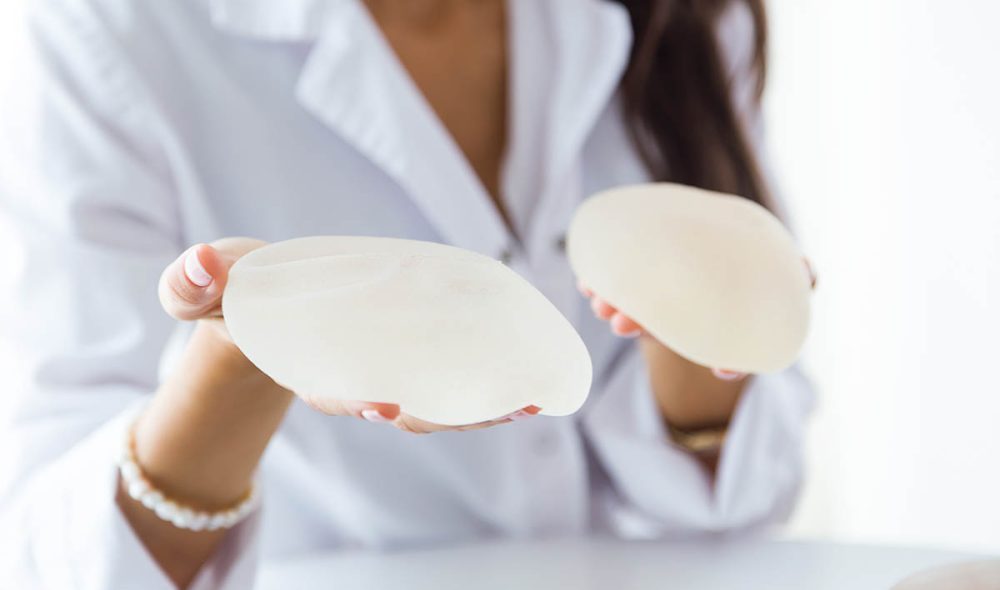
Modern methods of breast augmentation
Aesthetic medicine is a leader in the beauty and health industry. In the pursuit of an ideal figure, the demand for plastic surgery grows daily. It is possible to increase the size and tighten the breasts through surgical intervention in European clinics and hospitals. Experienced surgeons will correct any breast imperfections using a variety of techniques.
Endoprosthetics
The most popular procedure of all. You can use implants to enlarge your breasts and reshape them. The operation is performed under general anesthesia. The surgeon makes an incision and inserts an endoprosthesis into the formed pocket. After that, the doctor stitches and puts on a special bandage and a compression garment.
Implants differ in shape and inner filling material. The form can be:
The surface can be smooth or textured. The rough shell will not allow the implant to roll over, unlike the smooth shell. The filler comes in:
Mastopexy
It is possible to tighten the breasts with the help of surgery – mastopexy. If necessary, it is possible to perform two operations simultaneously – breast augmentation and lift. Implants are needed to change the size of your breasts. If the patient is happy with her breast size, only a lift is done.
The prolapse of the mammary glands can be due to:
During surgery, the doctor excises excess skin and tightens the breasts. Mastopexy can be:
The effect of breast augmentation surgery
The result after surgical intervention cannot be immediately assessed. The rehabilitation process takes place over several months. Treating physicians will prescribe pain medication to help tissues recover more quickly. Following all the recommendations will speed up the healing of the skin, and you will be able to return to your normal rhythm of life.
Read news
Aesthetic medicine is a leader in the beauty and health industry. In the pursuit of an ideal figure, the demand for plastic surgery grows daily. It is possible to increase the size and tighten the breasts through surgical intervention in European clinics and hospitals. Experienced surgeons will correct any breast imperfections using a variety of techniques.
Endoprosthetics
The most popular procedure of all. You can use implants to enlarge your breasts and reshape them. The operation is performed under general anesthesia. The surgeon makes an incision and inserts an endoprosthesis into the formed pocket. After that, the doctor stitches and puts on a special bandage and a compression garment.
Implants differ in shape and inner filling material. The form can be:
The surface can be smooth or textured. The rough shell will not allow the implant to roll over, unlike the smooth shell. The filler comes in:
Mastopexy
It is possible to tighten the breasts with the help of surgery – mastopexy. If necessary, it is possible to perform two operations simultaneously – breast augmentation and lift. Implants are needed to change the size of your breasts. If the patient is happy with her breast size, only a lift is done.
The prolapse of the mammary glands can be due to:
During surgery, the doctor excises excess skin and tightens the breasts. Mastopexy can be:
The effect of breast augmentation surgery
The result after surgical intervention cannot be immediately assessed. The rehabilitation process takes place over several months. Treating physicians will prescribe pain medication to help tissues recover more quickly. Following all the recommendations will speed up the healing of the skin, and you will be able to return to your normal rhythm of life.

How much does it cost to have a hair transplant surgery
Alopecia is often the cause of psychological discomfort and bad moods. This process is very difficult to stop, because it is related to hormones and heredity. You can get your hair back thicker with the help of hair transplantation in the clinics of aesthetic medicine in Europe.
What the cost of surgery depends on
The price of surgical intervention is influenced by:
Transplant area
The medical facility sets the cost of the hair transplant surgery, taking into account the area of the surgery. Transplants in the eyebrow area will cost less than in the rest of the area. However, it is much more difficult to transplant on the face than on the head.
Volume of transplanted follicles
The price depends on the number of grafts. There are several stages of alopecia. If there is severe baldness, many more grafts will be needed for transplantation. Some aesthetic medicine clinics have a fixed price for this procedure. Usually 1 procedure counts no more than 4,000 grafts.
Influence of gender and ethnicity on the cost of surgery
In this case it is not about prejudice against different nationalities, but about the peculiarities of physiology. Africans have a special line of hair growth, structure and degree of curl.
The traditional shaving procedure is not done for women. Long hair is also quite difficult to transplant. The specialist must have good experience to perform all manipulations.
Methods of hair transplantation
At the moment there are several methods of hair transplantation. Each of them has its own peculiarities. When choosing a surgeon takes into account the complexity of surgery, the physical condition of the patient, the cost of equipment.
Choice of country and medical center
Hair transplant surgery is done in different countries. When choosing a medical facility, you need to consider the class of the hospital, the range of services, and the qualifications of the doctors.
Clinics and hospitals in Europe employ professionals who perform surgeries at the highest level. They improve their qualifications in the best medical institutions of the world. The nursing staff cares for and cares for each patient.
The package of services of the leading clinics includes:
Managers also handle reservations for airline tickets and hotel rooms, which are within walking distance of the hospital. The caring staff will always be in touch with you, and the service will make your stay comfortable and cozy.
Read news
Alopecia is often the cause of psychological discomfort and bad moods. This process is very difficult to stop, because it is related to hormones and heredity. You can get your hair back thicker with the help of hair transplantation in the clinics of aesthetic medicine in Europe.
What the cost of surgery depends on
The price of surgical intervention is influenced by:
Transplant area
The medical facility sets the cost of the hair transplant surgery, taking into account the area of the surgery. Transplants in the eyebrow area will cost less than in the rest of the area. However, it is much more difficult to transplant on the face than on the head.
Volume of transplanted follicles
The price depends on the number of grafts. There are several stages of alopecia. If there is severe baldness, many more grafts will be needed for transplantation. Some aesthetic medicine clinics have a fixed price for this procedure. Usually 1 procedure counts no more than 4,000 grafts.
Influence of gender and ethnicity on the cost of surgery
In this case it is not about prejudice against different nationalities, but about the peculiarities of physiology. Africans have a special line of hair growth, structure and degree of curl.
The traditional shaving procedure is not done for women. Long hair is also quite difficult to transplant. The specialist must have good experience to perform all manipulations.
Methods of hair transplantation
At the moment there are several methods of hair transplantation. Each of them has its own peculiarities. When choosing a surgeon takes into account the complexity of surgery, the physical condition of the patient, the cost of equipment.
Choice of country and medical center
Hair transplant surgery is done in different countries. When choosing a medical facility, you need to consider the class of the hospital, the range of services, and the qualifications of the doctors.
Clinics and hospitals in Europe employ professionals who perform surgeries at the highest level. They improve their qualifications in the best medical institutions of the world. The nursing staff cares for and cares for each patient.
The package of services of the leading clinics includes:
Managers also handle reservations for airline tickets and hotel rooms, which are within walking distance of the hospital. The caring staff will always be in touch with you, and the service will make your stay comfortable and cozy.
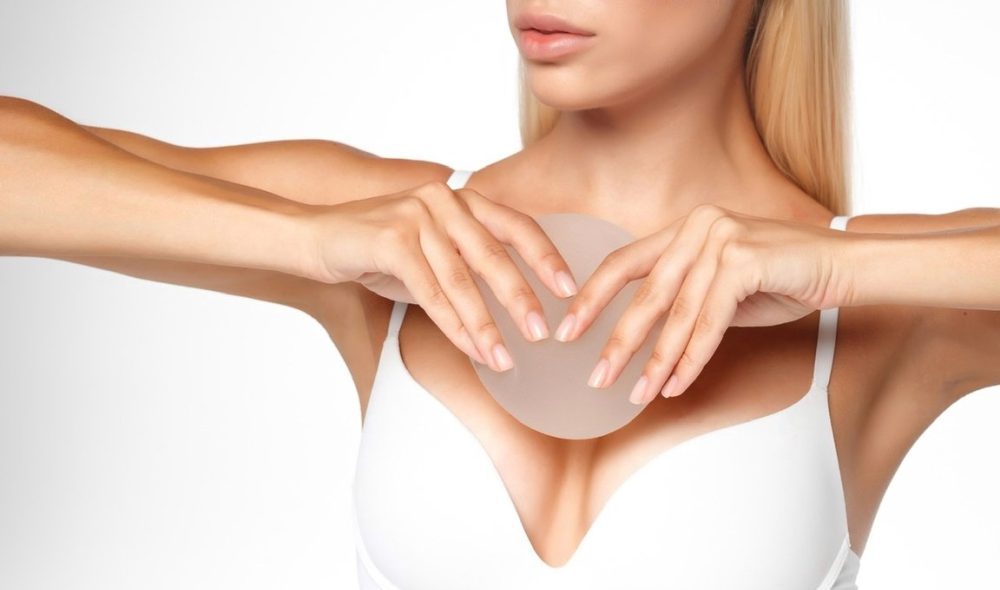
Rehabilitation after mammoplasty by days
The question of rehabilitation after surgery worries all people. The success of a surgical intervention is not only about a well performed operation, but also about a speedy recovery. To avoid complications after mammoplasty, it is necessary to follow all the recommendations of doctors of European medical institutions. Thanks to the tips you will quickly recover and lead a normal lifestyle.
Rehabilitation by days after mammoplasty in the first month
Surgical intervention is performed surgically. It is worth noting that a deviation from the advice of doctors can lead to negative consequences. Recommendations of specialists from well-known clinics:
After the second month, the result of the surgical intervention will be visible. The swelling goes down. Moderate exercise is allowed after the next visit to the surgeon. Heavy strain on the pectoral muscles is still prohibited.
Symptoms in which it is necessary to consult a doctor
In European clinics mammoplasty is performed by specialists with extensive experience. However, the process of rehabilitation can be affected by the peculiarities of the body and the rate of metabolism. The recovery time depends on these factors. It is obligatory to see a doctor when:
Qualified doctors will instantly diagnose the problem in your body and prescribe the necessary medications or procedures to speed up healing.
Read news
The question of rehabilitation after surgery worries all people. The success of a surgical intervention is not only about a well performed operation, but also about a speedy recovery. To avoid complications after mammoplasty, it is necessary to follow all the recommendations of doctors of European medical institutions. Thanks to the tips you will quickly recover and lead a normal lifestyle.
Rehabilitation by days after mammoplasty in the first month
Surgical intervention is performed surgically. It is worth noting that a deviation from the advice of doctors can lead to negative consequences. Recommendations of specialists from well-known clinics:
After the second month, the result of the surgical intervention will be visible. The swelling goes down. Moderate exercise is allowed after the next visit to the surgeon. Heavy strain on the pectoral muscles is still prohibited.
Symptoms in which it is necessary to consult a doctor
In European clinics mammoplasty is performed by specialists with extensive experience. However, the process of rehabilitation can be affected by the peculiarities of the body and the rate of metabolism. The recovery time depends on these factors. It is obligatory to see a doctor when:
Qualified doctors will instantly diagnose the problem in your body and prescribe the necessary medications or procedures to speed up healing.
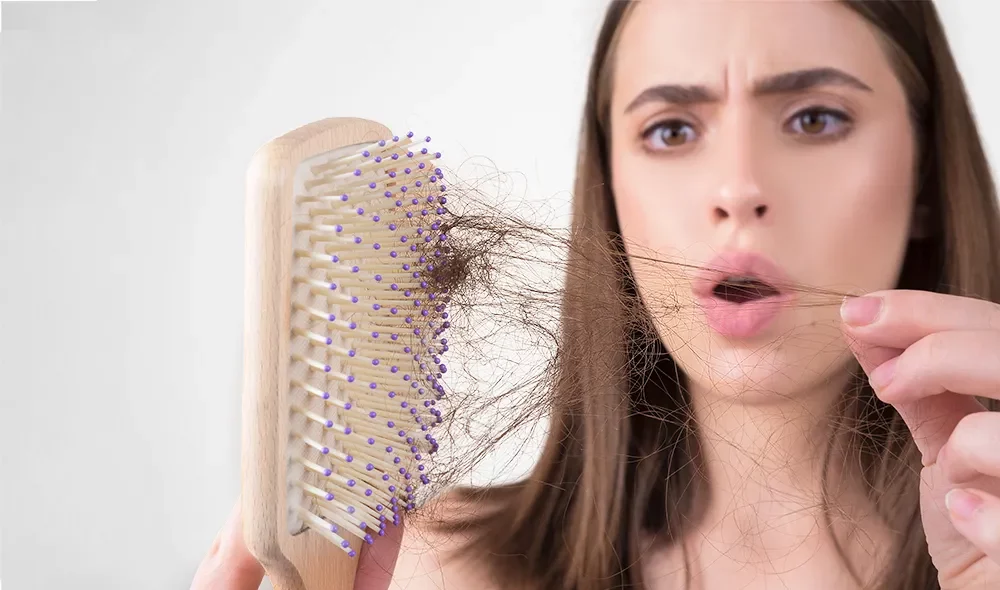
Why hair loss and how to stop it
Strong and thick hair looks attractive. When hair loss occurs, people have complexes. It is not always possible to correct the situation with masks, folk remedies, vitamins. Sometimes the problem can only be solved by hair transplantation in specialized clinics in Europe.
Hair growth cycle
Monthly hairs grow up to 2.5 cm in length. If you lose more than a hundred hairs in a day, you can talk about alopecia. This problem affects women and men of different ages.
How hair starts to fall out
Hair loss is most common around the age of 30-35. Initially there is the formation of bald patches, then the formation of round bald patches. This condition can last for several years. As a result, there is almost no hair left on the head. This form of loss can be seen in members of the stronger sex. Women’s hair usually becomes thin and sparse, but does not fall out completely.
Focal alopecia
Pathological circular loss provokes the appearance of rounded bald patches. The cause can be called an autoimmune reaction of the body to the hair follicle.
In the initial stage, there is a loss of pigment. On the head, round or oval spatters become noticeable. There are short hairs around the edges. This is how focal alopecia appears.
Effects of pregnancy on hair
When a girl is pregnant, her hormonal imbalance changes. When estrogen decreases, hair begins to fall out a lot. In addition to pregnancy, this condition can occur during menopause. When female hormone levels are normalized, hair stops falling out.
Other causes of hair loss
Hair loss can be related to:
How to stop hair loss
If you have diffuse hair loss, you should consult a trichologist. He will examine the skin and scalp and prescribe the necessary tests. Based on the results of the tests, the doctor will determine the cause of hair loss.
If the problem is related to diseases of the thyroid gland, then further treatment should be coordinated with an endocrinologist. If gastrointestinal diseases are detected, you should be examined by a gastroenterologist.
If the cause is a hereditary factor, you can do hair transplant clinics and aesthetic medicine hospitals. The best specialists with extensive experience in transplantation work in European medical institutions. The treatment will make your hair thicker and more voluminous.
Read news
Strong and thick hair looks attractive. When hair loss occurs, people have complexes. It is not always possible to correct the situation with masks, folk remedies, vitamins. Sometimes the problem can only be solved by hair transplantation in specialized clinics in Europe.
Hair growth cycle
Monthly hairs grow up to 2.5 cm in length. If you lose more than a hundred hairs in a day, you can talk about alopecia. This problem affects women and men of different ages.
How hair starts to fall out
Hair loss is most common around the age of 30-35. Initially there is the formation of bald patches, then the formation of round bald patches. This condition can last for several years. As a result, there is almost no hair left on the head. This form of loss can be seen in members of the stronger sex. Women’s hair usually becomes thin and sparse, but does not fall out completely.
Focal alopecia
Pathological circular loss provokes the appearance of rounded bald patches. The cause can be called an autoimmune reaction of the body to the hair follicle.
In the initial stage, there is a loss of pigment. On the head, round or oval spatters become noticeable. There are short hairs around the edges. This is how focal alopecia appears.
Effects of pregnancy on hair
When a girl is pregnant, her hormonal imbalance changes. When estrogen decreases, hair begins to fall out a lot. In addition to pregnancy, this condition can occur during menopause. When female hormone levels are normalized, hair stops falling out.
Other causes of hair loss
Hair loss can be related to:
How to stop hair loss
If you have diffuse hair loss, you should consult a trichologist. He will examine the skin and scalp and prescribe the necessary tests. Based on the results of the tests, the doctor will determine the cause of hair loss.
If the problem is related to diseases of the thyroid gland, then further treatment should be coordinated with an endocrinologist. If gastrointestinal diseases are detected, you should be examined by a gastroenterologist.
If the cause is a hereditary factor, you can do hair transplant clinics and aesthetic medicine hospitals. The best specialists with extensive experience in transplantation work in European medical institutions. The treatment will make your hair thicker and more voluminous.
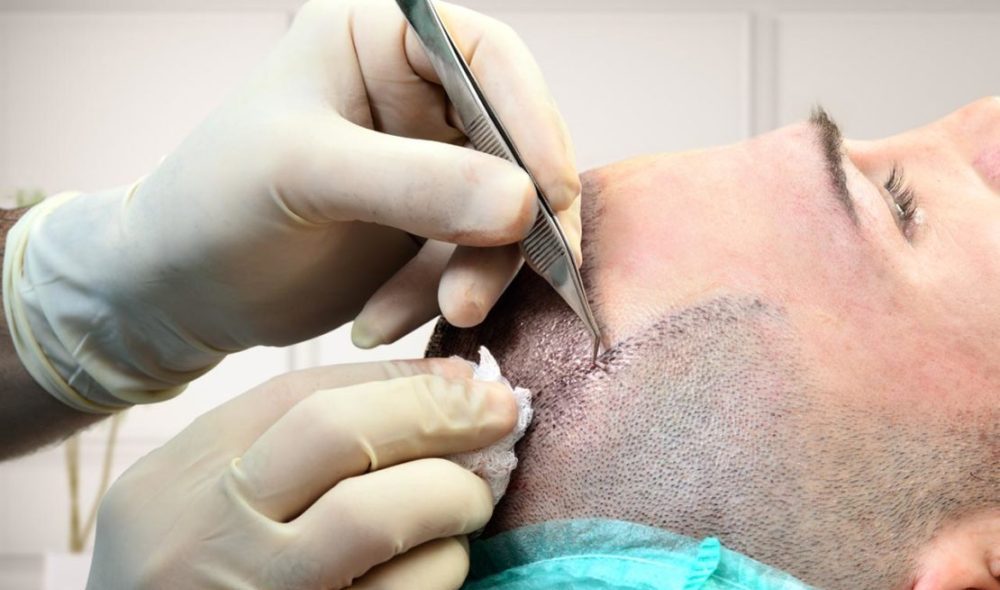
Postoperative period of hair transplantation
Age, hereditary, hormonal changes are reflected in our hair. To improve their condition, people have hair transplant surgery. After the procedure, it is necessary to adhere to all the recommendations of the surgeons in order to speed up the recovery. Below are answers from the leading European clinics to the most common questions about the rehabilitation period.
Appearance of painful sensations after hair transplantation
The procedure is performed under local anesthesia. Anesthesia does not affect a person’s consciousness. The operation is painless. There will be no pain after the anesthesia has worn off.
There may be discomfort on the first night after surgery. To prevent such symptoms, the patient takes a painkiller once.
Appearance of edema
One-fourth of all patients experience swelling a couple of days after surgery. It usually lasts for another two days. Sometimes on a large volume of transplanted area swelling can last about 5 days. The surgeon will prescribe a drug that will relieve the swelling.
Appearance of itching
Itching appears in the first 1-1.5 weeks after the procedure. It is forbidden to comb the transplanted area. After 2 weeks, you can lightly massage the area. If the itching is severe, you can use an antihistamine cream or medication to get rid of the discomfort.
Sleep after hair transplantation
Sleep on your back for the first 7 days. High orthopedic pillow helps to fix the head in a certain position, which will prevent the mechanical impact and the appearance of swelling.
Length of rehabilitation
The recovery period varies from 5 to 10 days. A week after the procedure, small crusts peel off. The speed of rehabilitation is due to the use of innovative techniques for hair transplantation.
Loss of transplanted hair
A few weeks after surgery, the transplanted hairs begin to fall out. This is a normal phenomenon that should not cause concern. It can be observed for 2 months. After that, the new hair gradually grows back.
Wearing a headgear after a transplant
Hats protect transplanted areas from direct sunlight. The headgear is worn for at least seven days. This way, no dust can get on your head.
Physical activity and visits to the sauna, swimming pool, solarium
In the first week it is forbidden to do sports. It is allowed to walk and do a light warm-up. Within 30 days, you can not visit the sauna, swimming pool, solarium.
Traces after surgery
A week after surgery, crusts and slight redness appear on the scalp. Most often they fall off after a couple of days. The hair grows back and hides the graft sites.
Read news
Age, hereditary, hormonal changes are reflected in our hair. To improve their condition, people have hair transplant surgery. After the procedure, it is necessary to adhere to all the recommendations of the surgeons in order to speed up the recovery. Below are answers from the leading European clinics to the most common questions about the rehabilitation period.
Appearance of painful sensations after hair transplantation
The procedure is performed under local anesthesia. Anesthesia does not affect a person’s consciousness. The operation is painless. There will be no pain after the anesthesia has worn off.
There may be discomfort on the first night after surgery. To prevent such symptoms, the patient takes a painkiller once.
Appearance of edema
One-fourth of all patients experience swelling a couple of days after surgery. It usually lasts for another two days. Sometimes on a large volume of transplanted area swelling can last about 5 days. The surgeon will prescribe a drug that will relieve the swelling.
Appearance of itching
Itching appears in the first 1-1.5 weeks after the procedure. It is forbidden to comb the transplanted area. After 2 weeks, you can lightly massage the area. If the itching is severe, you can use an antihistamine cream or medication to get rid of the discomfort.
Sleep after hair transplantation
Sleep on your back for the first 7 days. High orthopedic pillow helps to fix the head in a certain position, which will prevent the mechanical impact and the appearance of swelling.
Length of rehabilitation
The recovery period varies from 5 to 10 days. A week after the procedure, small crusts peel off. The speed of rehabilitation is due to the use of innovative techniques for hair transplantation.
Loss of transplanted hair
A few weeks after surgery, the transplanted hairs begin to fall out. This is a normal phenomenon that should not cause concern. It can be observed for 2 months. After that, the new hair gradually grows back.
Wearing a headgear after a transplant
Hats protect transplanted areas from direct sunlight. The headgear is worn for at least seven days. This way, no dust can get on your head.
Physical activity and visits to the sauna, swimming pool, solarium
In the first week it is forbidden to do sports. It is allowed to walk and do a light warm-up. Within 30 days, you can not visit the sauna, swimming pool, solarium.
Traces after surgery
A week after surgery, crusts and slight redness appear on the scalp. Most often they fall off after a couple of days. The hair grows back and hides the graft sites.
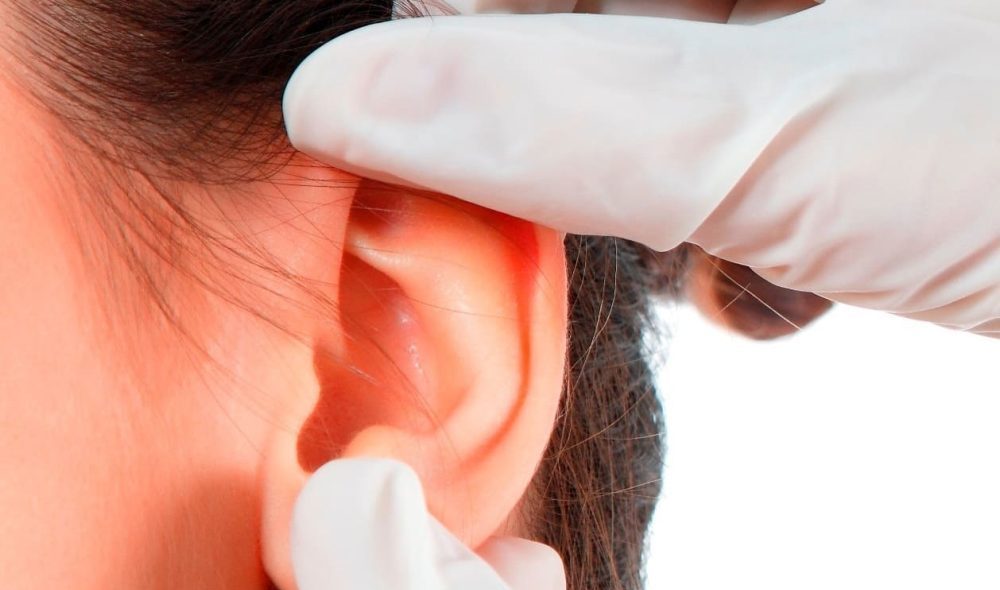
The consequences of otoplasty and the risks to your health
Any surgery causes people to be apprehensive. This is due to the fact that the reaction to surgical interventions is difficult to predict. When agreeing to surgery, each patient weighs the pros and cons. Below are the answers of specialists from well-known European clinics to the most common questions about the risks of otoplasty.
Who is not allowed to have otoplasty
Otoplasty is not done for:
How Otoplasty Affects Hearing
Some patients are afraid that the surgery will damage their hearing. This is just a myth. Otoplasty is performed only on the auricle, which is responsible for receiving sound waves. The surgery changes the anatomical shape of the auricular cartilage. The eardrum and ear canal are not affected. It is unequivocally possible to say that the operation will not damage the quality of your hearing.
How quickly the ears recover after otoplasty
Rehabilitation doesn’t take long. On the day of surgery, the patient is released a few hours later. Swelling and bruising appear within 1-2 weeks. Doctors prescribe pain medications that relieve these symptoms. After 2-3 weeks there won’t be any trace of them left.
Are there any risks in otoplasty
The success of the surgery mainly depends on the choice of a medical institution and surgeon. By choosing a European clinic, you entrust your health to real professionals. After surgery, it is necessary to follow all recommendations of doctors to speed up tissue healing.
Will scars be visible after surgery?
You don’t have to worry about scars and scars. They won’t be noticeable. The skin becomes monochromatic after recovery. No additional intervention will be necessary. A special surgical thread resorbs itself. Any type of otoplasty maintains aesthetics.
Can otoplasty be performed on children
Many mothers worry about the appearance of the child since childhood. Lopophobia is often the subject of ridicule among children. Surgery can be done after 6 years of age. It is during this period that the formation of the auricle is completed. Under 6 years of age, the procedure is prohibited because it can damage the ear.
Some psychologists believe that surgery can be traumatic for children. They recommend waiting until children come of age to make these decisions for themselves. However, if the child agrees to the surgery, then you can safely go to the surgeon for a consultation.
Read news
Any surgery causes people to be apprehensive. This is due to the fact that the reaction to surgical interventions is difficult to predict. When agreeing to surgery, each patient weighs the pros and cons. Below are the answers of specialists from well-known European clinics to the most common questions about the risks of otoplasty.
Who is not allowed to have otoplasty
Otoplasty is not done for:
How Otoplasty Affects Hearing
Some patients are afraid that the surgery will damage their hearing. This is just a myth. Otoplasty is performed only on the auricle, which is responsible for receiving sound waves. The surgery changes the anatomical shape of the auricular cartilage. The eardrum and ear canal are not affected. It is unequivocally possible to say that the operation will not damage the quality of your hearing.
How quickly the ears recover after otoplasty
Rehabilitation doesn’t take long. On the day of surgery, the patient is released a few hours later. Swelling and bruising appear within 1-2 weeks. Doctors prescribe pain medications that relieve these symptoms. After 2-3 weeks there won’t be any trace of them left.
Are there any risks in otoplasty
The success of the surgery mainly depends on the choice of a medical institution and surgeon. By choosing a European clinic, you entrust your health to real professionals. After surgery, it is necessary to follow all recommendations of doctors to speed up tissue healing.
Will scars be visible after surgery?
You don’t have to worry about scars and scars. They won’t be noticeable. The skin becomes monochromatic after recovery. No additional intervention will be necessary. A special surgical thread resorbs itself. Any type of otoplasty maintains aesthetics.
Can otoplasty be performed on children
Many mothers worry about the appearance of the child since childhood. Lopophobia is often the subject of ridicule among children. Surgery can be done after 6 years of age. It is during this period that the formation of the auricle is completed. Under 6 years of age, the procedure is prohibited because it can damage the ear.
Some psychologists believe that surgery can be traumatic for children. They recommend waiting until children come of age to make these decisions for themselves. However, if the child agrees to the surgery, then you can safely go to the surgeon for a consultation.
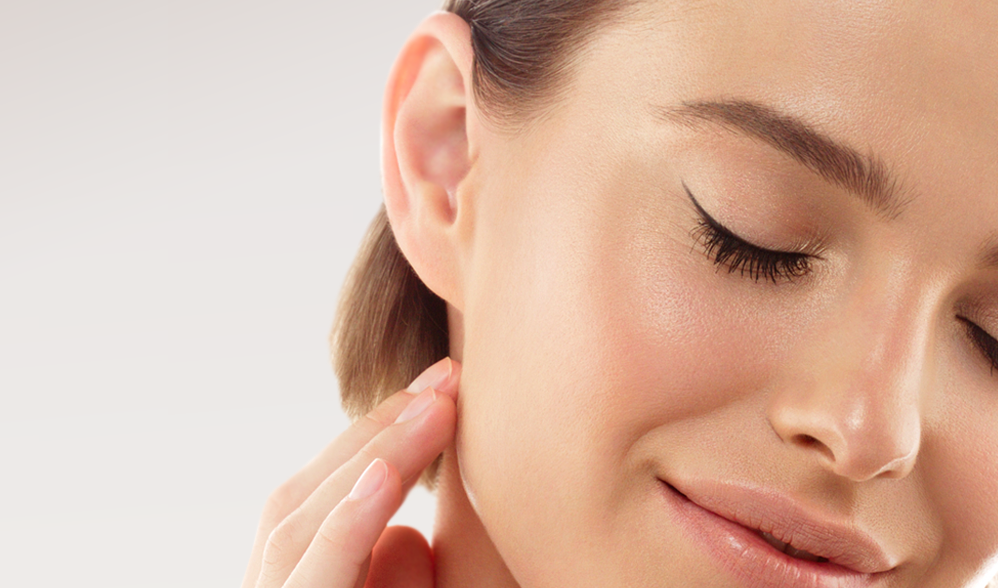
Plastic surgery for ear alignment
Plastic surgery is popular all over the world. In modern medicine, innovative ways of surgery are constantly emerging. Millions of people turn to surgeons to adjust their appearance. In clinics and hospitals in Europe, doctors perform surgeries that can correct ear deformities.
When plastic surgery is used to align the ears
The most common cause can be called a floppy ear. This flaw is very striking. Because of this, many people have complexes. Girls try to hide their ears under the loose long hair. However, this problem can be solved very quickly and painlessly.
The reason for the earlobes is:
95% of all otoplasty interventions are performed to straighten protruding ears. It is also possible to eliminate asymmetry of the auricles, change the size of the lobe, restore missing fragments.
Otoplasty can be:
It is worth noting that the presence of a hearing aid is not a contraindication for the procedure. All manipulations are performed on the outer ear.
Types of plastic surgeries
Surgical intervention can be:
Contraindications to surgery
The operation is not done for:
Plastic surgery for ear alignment
Leading specialists work according to methods that meet the highest standards. Surgeons constantly improve their qualifications in the best clinics of the world. Within one hour they will make the shape of your ears perfect. The effect is permanent, which is the main advantage of otoplasty.
Read news
Plastic surgery is popular all over the world. In modern medicine, innovative ways of surgery are constantly emerging. Millions of people turn to surgeons to adjust their appearance. In clinics and hospitals in Europe, doctors perform surgeries that can correct ear deformities.
When plastic surgery is used to align the ears
The most common cause can be called a floppy ear. This flaw is very striking. Because of this, many people have complexes. Girls try to hide their ears under the loose long hair. However, this problem can be solved very quickly and painlessly.
The reason for the earlobes is:
95% of all otoplasty interventions are performed to straighten protruding ears. It is also possible to eliminate asymmetry of the auricles, change the size of the lobe, restore missing fragments.
Otoplasty can be:
It is worth noting that the presence of a hearing aid is not a contraindication for the procedure. All manipulations are performed on the outer ear.
Types of plastic surgeries
Surgical intervention can be:
Contraindications to surgery
The operation is not done for:
Plastic surgery for ear alignment
Leading specialists work according to methods that meet the highest standards. Surgeons constantly improve their qualifications in the best clinics of the world. Within one hour they will make the shape of your ears perfect. The effect is permanent, which is the main advantage of otoplasty.
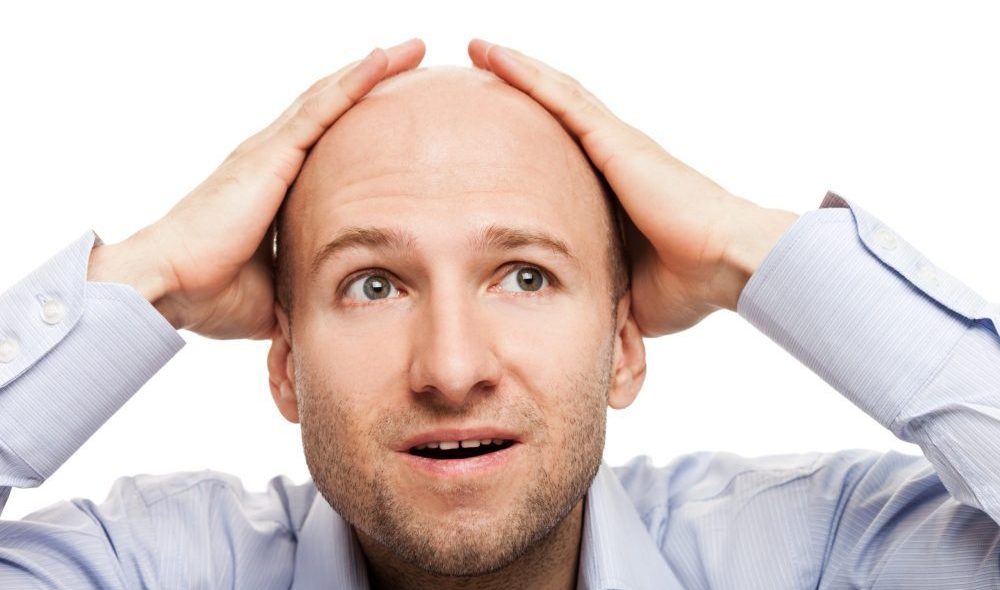
Hair transplantation – to do or not to do
A large part of the population is concerned about baldness. Nature could not bestow thick hair on all people. As you get older, your hair cover gets smaller and smaller. This problem can be solved with the help of transplants in European hospitals and clinics of aesthetic medicine.
Who needs a hair transplant
Half of the male population suffers from baldness. The causes are a decrease in testosterone levels or genetic heredity. Similar problems in women have another explanation. Hormonal changes during menopause and pregnancy affect the condition of hair.
Transplants are done regardless of sex. Lately, men often go to doctors with this problem. Surgeons of specialized medical institutions will tell you all the details and methods of surgery. You will learn about the indications and the rehabilitation process. The result of the surgical intervention is influenced by:
How hair transplants are done
Clinics in Europe employ specialists who have extensive experience in such operations. Surgeons consider all angles of inclination and depth of grafts. Before the procedure, you make an appointment for a preliminary consultation and take some tests.
The doctor examines in detail the condition of the donor area and determines the volume of necessary grafts. The surgeon chooses the best method of transplantation and sets a date for surgery.
Methods of hair transplantation
The most common types of transplants:
Advantages of hair transplantation
The advantages of transplantation include:
Disadvantages of hair transplantation
This procedure has several disadvantages:
Growth of transplanted hair
After 3-4 weeks, the hair that was transplanted will fall out. You don’t have to worry about that. Within 2 months you will notice a similar phenomenon, which is within the normal range. After 3 months, the growth of permanent hair begins.
In European hospitals and clinics, doctors perform hair transplants every day. After the transplant your hair will become thick and beautiful, which will have a positive effect on your mood.
Read news
A large part of the population is concerned about baldness. Nature could not bestow thick hair on all people. As you get older, your hair cover gets smaller and smaller. This problem can be solved with the help of transplants in European hospitals and clinics of aesthetic medicine.
Who needs a hair transplant
Half of the male population suffers from baldness. The causes are a decrease in testosterone levels or genetic heredity. Similar problems in women have another explanation. Hormonal changes during menopause and pregnancy affect the condition of hair.
Transplants are done regardless of sex. Lately, men often go to doctors with this problem. Surgeons of specialized medical institutions will tell you all the details and methods of surgery. You will learn about the indications and the rehabilitation process. The result of the surgical intervention is influenced by:
How hair transplants are done
Clinics in Europe employ specialists who have extensive experience in such operations. Surgeons consider all angles of inclination and depth of grafts. Before the procedure, you make an appointment for a preliminary consultation and take some tests.
The doctor examines in detail the condition of the donor area and determines the volume of necessary grafts. The surgeon chooses the best method of transplantation and sets a date for surgery.
Methods of hair transplantation
The most common types of transplants:
Advantages of hair transplantation
The advantages of transplantation include:
Disadvantages of hair transplantation
This procedure has several disadvantages:
Growth of transplanted hair
After 3-4 weeks, the hair that was transplanted will fall out. You don’t have to worry about that. Within 2 months you will notice a similar phenomenon, which is within the normal range. After 3 months, the growth of permanent hair begins.
In European hospitals and clinics, doctors perform hair transplants every day. After the transplant your hair will become thick and beautiful, which will have a positive effect on your mood.
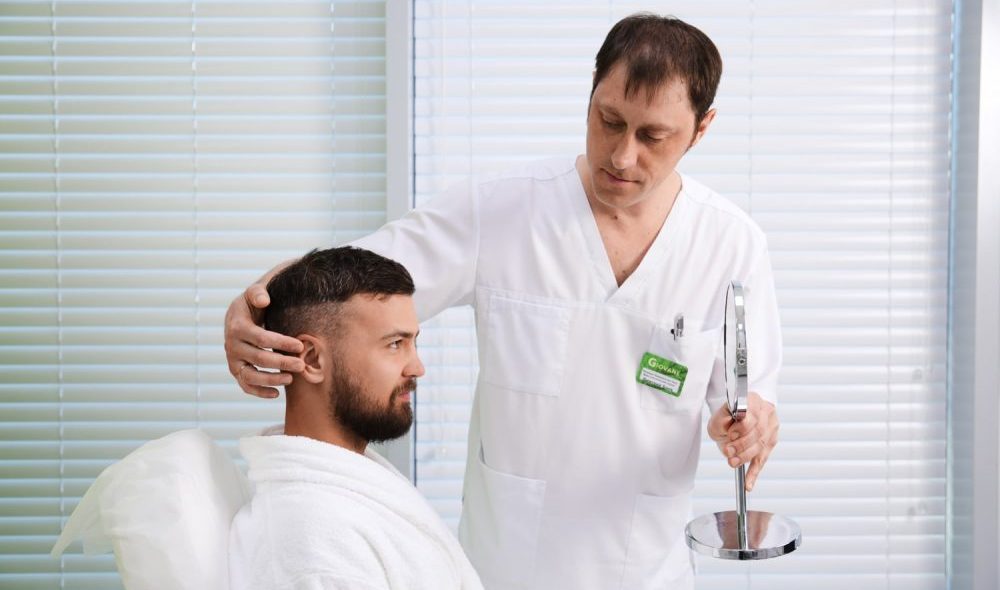
Otoplasty – the price of ear correction
Otoplasty is a surgery that corrects any deformities of the ear canals and corrects droopy ears. The procedure can change the size and shape of ears, lobes. Surgical intervention restores the missing fragments that were damaged by mechanical impacts or burns.
What the cost of otoplasty depends on
The operation is performed for asymmetry of the ears and earlobes. However, many people are concerned about the cost of the procedure. The price depends on the complexity of the operation and the method.
Reconstruction of the auricle
This type of surgery is the most expensive. Reconstructive intervention will get rid of microtia and atony. Such surgeries are considered complicated and more expensive than others. In microtia, the ear may be partially or completely absent. The cause is a genetic malfunction. The operation may consist of several steps.
Correction of droopy ears
The aesthetic type of otoplasty costs less. There is a deformity of the ears on one side only. In this case, the procedure is less expensive than on two auricles. It also depends on the complexity of the surgical intervention.
There is a correction of bald ears:
The second kind of procedure is more expensive because of its complexity.
Lobe suturing
Causes of lobe deformities are stretching of the holes after wearing earrings for a long time, trauma, previous unsuccessful surgeries. This operation is very simple and minimally invasive. The cost of the procedure is cheaper than the others.
The cost of various otoplasty methods
Classical surgery consists of surgical intervention. It doesn’t cost much, but it has a long rehabilitation period. The method has long been superseded by the radio-wave and laser methods. These options are more expensive, but the price corresponds to the quality. After the procedures, recovery is very fast.
Choosing a hospital for otoplasty
All patients expect a good result from the surgery. When choosing a clinic, they study information about the clinic’s activities. The range of services offered by the Hospital for Aesthetic Medicine consists of:
Clinics in Europe have a high rating among institutions involved in aesthetic medicine. Hospitals are equipped with the most modern equipment and all the necessary medicines. Qualified and caring staff will assist you in any way they can during your stay.
Read news
Otoplasty is a surgery that corrects any deformities of the ear canals and corrects droopy ears. The procedure can change the size and shape of ears, lobes. Surgical intervention restores the missing fragments that were damaged by mechanical impacts or burns.
What the cost of otoplasty depends on
The operation is performed for asymmetry of the ears and earlobes. However, many people are concerned about the cost of the procedure. The price depends on the complexity of the operation and the method.
Reconstruction of the auricle
This type of surgery is the most expensive. Reconstructive intervention will get rid of microtia and atony. Such surgeries are considered complicated and more expensive than others. In microtia, the ear may be partially or completely absent. The cause is a genetic malfunction. The operation may consist of several steps.
Correction of droopy ears
The aesthetic type of otoplasty costs less. There is a deformity of the ears on one side only. In this case, the procedure is less expensive than on two auricles. It also depends on the complexity of the surgical intervention.
There is a correction of bald ears:
The second kind of procedure is more expensive because of its complexity.
Lobe suturing
Causes of lobe deformities are stretching of the holes after wearing earrings for a long time, trauma, previous unsuccessful surgeries. This operation is very simple and minimally invasive. The cost of the procedure is cheaper than the others.
The cost of various otoplasty methods
Classical surgery consists of surgical intervention. It doesn’t cost much, but it has a long rehabilitation period. The method has long been superseded by the radio-wave and laser methods. These options are more expensive, but the price corresponds to the quality. After the procedures, recovery is very fast.
Choosing a hospital for otoplasty
All patients expect a good result from the surgery. When choosing a clinic, they study information about the clinic’s activities. The range of services offered by the Hospital for Aesthetic Medicine consists of:
Clinics in Europe have a high rating among institutions involved in aesthetic medicine. Hospitals are equipped with the most modern equipment and all the necessary medicines. Qualified and caring staff will assist you in any way they can during your stay.
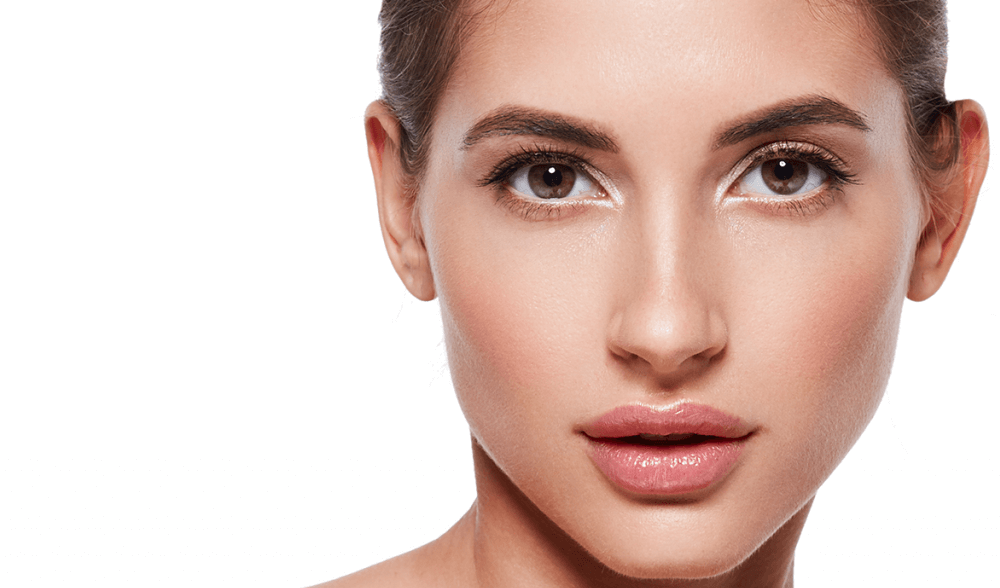
Rhinoplasty in men and women – any peculiarities
Plastic surgeries are of interest not only to the fair sex. Men are becoming more and more frequent patients of aesthetic medicine clinics in recent years. Rhinoplasty is one of the most popular surgeries.
Peculiarities of rhinoplasty in men and women
Usually women get plastic surgery to change their appearance. In the case of men, it’s different. They are more pragmatic and think about their health. This is the reason that leads them to surgeons.
Many men have breathing problems. They are caused by fractures and injuries. With mechanical impacts, the nasal septum shifts and deforms, which leads to negative consequences. Snoring appears, which brings discomfort to everyone around you. Constantly stuffy nose, frequent runny nose, sinusitis, maxillary sinusitis interfere with full-fledged life.
Many people wonder what the peculiarities of rhinoplasty are in men and women. The answer lies in different physiology. Women’s bones are softer and more pliable. Elastic skin tends to heal quickly.
Men have much stronger bones. The skin of the tip of the nose is coarse and thick. The back of the nose has a thinner skin. The presence of these anatomical features and a high hormonal background can cause scarring. There is a possibility of formation of bone corns, hematomas and bruises after surgical intervention. The operation also takes into account the geometry of the face.
In what cases do men undergo rhinoplasty
The representatives of the stronger sex undergo the operation:
Thanks to the procedure straightens the nasal septum, corrects the tip of the nose, reduces the ledge, removing the hooked nose, correcting hollow or wide back of the nose, restoring tissue.
The procedure is performed open and closed. In the second variant, surgical intervention can be performed inconspicuously. This is possible due to internal micro punctures in the mucosa. The open method corrects any complex defects with the formation of scars.
Plastic surgeons at hospitals throughout Europe specialize in such surgeries. They will fix your problems quickly, efficiently and accurately. You will forget about discomfort, snoring and runny nose forever.
Read news
Plastic surgeries are of interest not only to the fair sex. Men are becoming more and more frequent patients of aesthetic medicine clinics in recent years. Rhinoplasty is one of the most popular surgeries.
Peculiarities of rhinoplasty in men and women
Usually women get plastic surgery to change their appearance. In the case of men, it’s different. They are more pragmatic and think about their health. This is the reason that leads them to surgeons.
Many men have breathing problems. They are caused by fractures and injuries. With mechanical impacts, the nasal septum shifts and deforms, which leads to negative consequences. Snoring appears, which brings discomfort to everyone around you. Constantly stuffy nose, frequent runny nose, sinusitis, maxillary sinusitis interfere with full-fledged life.
Many people wonder what the peculiarities of rhinoplasty are in men and women. The answer lies in different physiology. Women’s bones are softer and more pliable. Elastic skin tends to heal quickly.
Men have much stronger bones. The skin of the tip of the nose is coarse and thick. The back of the nose has a thinner skin. The presence of these anatomical features and a high hormonal background can cause scarring. There is a possibility of formation of bone corns, hematomas and bruises after surgical intervention. The operation also takes into account the geometry of the face.
In what cases do men undergo rhinoplasty
The representatives of the stronger sex undergo the operation:
Thanks to the procedure straightens the nasal septum, corrects the tip of the nose, reduces the ledge, removing the hooked nose, correcting hollow or wide back of the nose, restoring tissue.
The procedure is performed open and closed. In the second variant, surgical intervention can be performed inconspicuously. This is possible due to internal micro punctures in the mucosa. The open method corrects any complex defects with the formation of scars.
Plastic surgeons at hospitals throughout Europe specialize in such surgeries. They will fix your problems quickly, efficiently and accurately. You will forget about discomfort, snoring and runny nose forever.

Plastic surgery for nasal curvatures
A deviated septum causes many negative consequences. The deformity can be caused by congenital factors or acquired as a result of trauma. Regardless of the etiology, the deficiency impairs the quality of life. In hospitals and clinics in Europe, surgeons will get rid of your tired problem.
Surgery to correct the nasal septum
The nasal septum can have different deformities:
In most cases, rhinitis, sinusitis, maxillary sinusitis, and snoring develop. Such diseases are dangerous to human health and life. With breathing problems, it is impossible to sleep properly. The result is irritability and fatigue. The problem can be eliminated with septoplasty.
Septoplasty
The classical variant of surgical intervention consists in cutting the mucosa and correcting the shape of the septum. The endoscopic technique is limited to small incisions. The device displays the image on the screen, which allows you to make precise manipulations. This method is characterized by painlessness and little blood loss.
The modern method involves the use of a laser. The laser beam is used for 30-40 minutes. Thanks to the laser, the blood vessels bind together and the mucosa does not swell. At the same time viruses and bacteria are destroyed, which prevents the appearance of infectious inflammation.
The choice of the method of surgery depends not only on the personal wishes of the patient. The main role is played by the peculiarities of the body and the degree of complexity of the procedure.
How the operation is performed
The patient makes an appointment to see a surgeon. The doctor examines and prescribes tests:
Prior to surgery, alcohol and smoking are prohibited for 1.5 weeks. Do not take medications that help thin the blood. The procedure is performed under local or general anesthesia. The surgery corrects the septum, partially removing if necessary, straightening the remaining parts and leaving the supporting part intact.
Recovery after septoplasty
In the first days after surgery, the patient will have difficulty breathing. Swelling and bruising may occur within 1-2 weeks. During this period, sports are avoided. It is forbidden to visit saunas, solariums, swimming pools. It is recommended to sleep on a high pillow. If you have any questions, the specialists of the medical center will come to your aid.
Read news
A deviated septum causes many negative consequences. The deformity can be caused by congenital factors or acquired as a result of trauma. Regardless of the etiology, the deficiency impairs the quality of life. In hospitals and clinics in Europe, surgeons will get rid of your tired problem.
Surgery to correct the nasal septum
The nasal septum can have different deformities:
In most cases, rhinitis, sinusitis, maxillary sinusitis, and snoring develop. Such diseases are dangerous to human health and life. With breathing problems, it is impossible to sleep properly. The result is irritability and fatigue. The problem can be eliminated with septoplasty.
Septoplasty
The classical variant of surgical intervention consists in cutting the mucosa and correcting the shape of the septum. The endoscopic technique is limited to small incisions. The device displays the image on the screen, which allows you to make precise manipulations. This method is characterized by painlessness and little blood loss.
The modern method involves the use of a laser. The laser beam is used for 30-40 minutes. Thanks to the laser, the blood vessels bind together and the mucosa does not swell. At the same time viruses and bacteria are destroyed, which prevents the appearance of infectious inflammation.
The choice of the method of surgery depends not only on the personal wishes of the patient. The main role is played by the peculiarities of the body and the degree of complexity of the procedure.
How the operation is performed
The patient makes an appointment to see a surgeon. The doctor examines and prescribes tests:
Prior to surgery, alcohol and smoking are prohibited for 1.5 weeks. Do not take medications that help thin the blood. The procedure is performed under local or general anesthesia. The surgery corrects the septum, partially removing if necessary, straightening the remaining parts and leaving the supporting part intact.
Recovery after septoplasty
In the first days after surgery, the patient will have difficulty breathing. Swelling and bruising may occur within 1-2 weeks. During this period, sports are avoided. It is forbidden to visit saunas, solariums, swimming pools. It is recommended to sleep on a high pillow. If you have any questions, the specialists of the medical center will come to your aid.

Beard transplantation – is it worth it
Through transplantation, hair can be restored. The most common procedure is follicle transplantation on the head. Nowadays it is very fashionable to wear a beard. Because of this, men with sparse facial vegetation need a transplant in this area.
Causes of alopecia
Loss of beard hairs can be related to:
Alopecia happens:
Alopecia can be progressive. After a while, the first lesion increases in size and itching occurs. In the stationary stage, hair falls out rapidly. In the regressive stage, there is a growth of downy hairs.
Indications for surgical intervention
The procedure is done at:
Contraindications to surgery
Beard hairs are not transplanted at:
It is also worth noting that transplantation can be done after the age of 25. During this period, the vegetation in the beard area will be finally formed.
Methods of beard hair transplantation
Transplant hairs most often in these ways:
Where is the best place to get a beard transplant
If you decide to get a beard transplant, you need to decide on a medical facility. In European clinics, surgeons will diagnose and choose the best method of surgery, taking into account all the features of your body. After the procedure, your beard will be thick and even, which will increase your self-esteem and self-confidence.
Read news
Through transplantation, hair can be restored. The most common procedure is follicle transplantation on the head. Nowadays it is very fashionable to wear a beard. Because of this, men with sparse facial vegetation need a transplant in this area.
Causes of alopecia
Loss of beard hairs can be related to:
Alopecia happens:
Alopecia can be progressive. After a while, the first lesion increases in size and itching occurs. In the stationary stage, hair falls out rapidly. In the regressive stage, there is a growth of downy hairs.
Indications for surgical intervention
The procedure is done at:
Contraindications to surgery
Beard hairs are not transplanted at:
It is also worth noting that transplantation can be done after the age of 25. During this period, the vegetation in the beard area will be finally formed.
Methods of beard hair transplantation
Transplant hairs most often in these ways:
Where is the best place to get a beard transplant
If you decide to get a beard transplant, you need to decide on a medical facility. In European clinics, surgeons will diagnose and choose the best method of surgery, taking into account all the features of your body. After the procedure, your beard will be thick and even, which will increase your self-esteem and self-confidence.
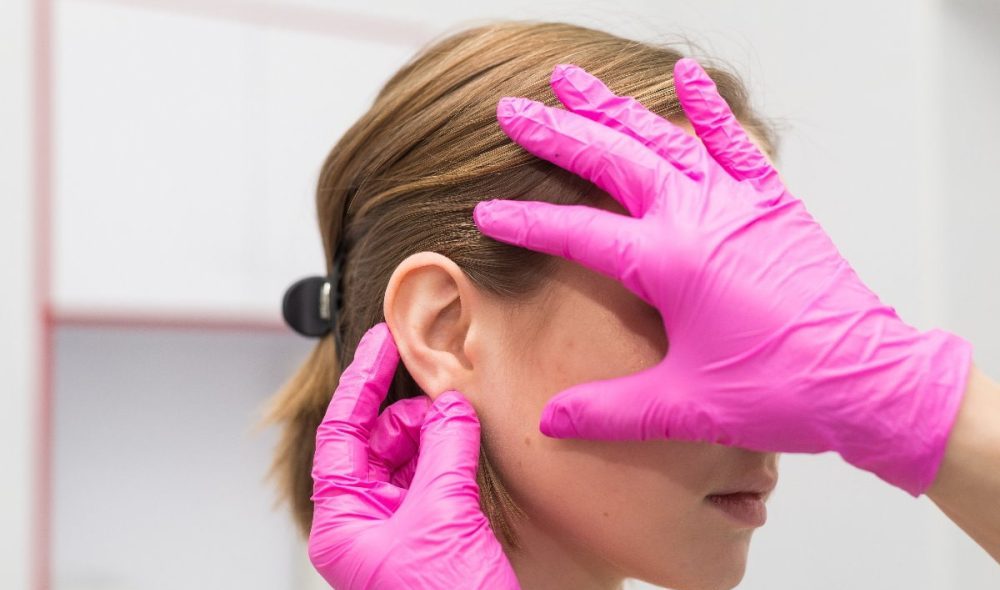
Otoplasty – peculiarities of the operation
Otoplasty eliminates any deformities of the ear canals. Flaws can cause not only aesthetic but also physical discomfort. The operation is absolutely safe and takes little time. Doctors in European clinics perform otoplasty using the best techniques.
Indications for otoplasty
Doctors perform the operation at:
Otoplasty can help not only with congenital, but also with acquired deformities. The doctor can repair missing or damaged parts of the auricle.
Contraindications to otoplasty
If there are contraindications, the surgeon refuses to perform the operation. These include:
Types of otoplasty
Otoplasty can be:
The norm of ear indicators
The correct indicators are:
Peculiarities of otoplasty
The duration of the operation is usually not more than 1 hour. The time depends on the complexity of the procedure. Anesthesia is mostly local. General anesthesia is used in the most difficult cases.
The incisions are located behind the auricles and are almost invisible. The final stage of surgical intervention is the application of thin cosmetic self-absorbable sutures, which are not removed.
Otoplasty cannot be called a traumatic operation. On the day of the procedure, the patient is released to go home. Wearing a fixation bandage will speed up the rehabilitation process. Recovery depends on the individual characteristics of the body. Among the side effects is the appearance of:
However, you can relieve these symptoms with pain medication. If the doctor’s recommendations are followed, any patient’s body will recover quickly. Your ears will be perfect and your mood will be great.
Read news
Otoplasty eliminates any deformities of the ear canals. Flaws can cause not only aesthetic but also physical discomfort. The operation is absolutely safe and takes little time. Doctors in European clinics perform otoplasty using the best techniques.
Indications for otoplasty
Doctors perform the operation at:
Otoplasty can help not only with congenital, but also with acquired deformities. The doctor can repair missing or damaged parts of the auricle.
Contraindications to otoplasty
If there are contraindications, the surgeon refuses to perform the operation. These include:
Types of otoplasty
Otoplasty can be:
The norm of ear indicators
The correct indicators are:
Peculiarities of otoplasty
The duration of the operation is usually not more than 1 hour. The time depends on the complexity of the procedure. Anesthesia is mostly local. General anesthesia is used in the most difficult cases.
The incisions are located behind the auricles and are almost invisible. The final stage of surgical intervention is the application of thin cosmetic self-absorbable sutures, which are not removed.
Otoplasty cannot be called a traumatic operation. On the day of the procedure, the patient is released to go home. Wearing a fixation bandage will speed up the rehabilitation process. Recovery depends on the individual characteristics of the body. Among the side effects is the appearance of:
However, you can relieve these symptoms with pain medication. If the doctor’s recommendations are followed, any patient’s body will recover quickly. Your ears will be perfect and your mood will be great.
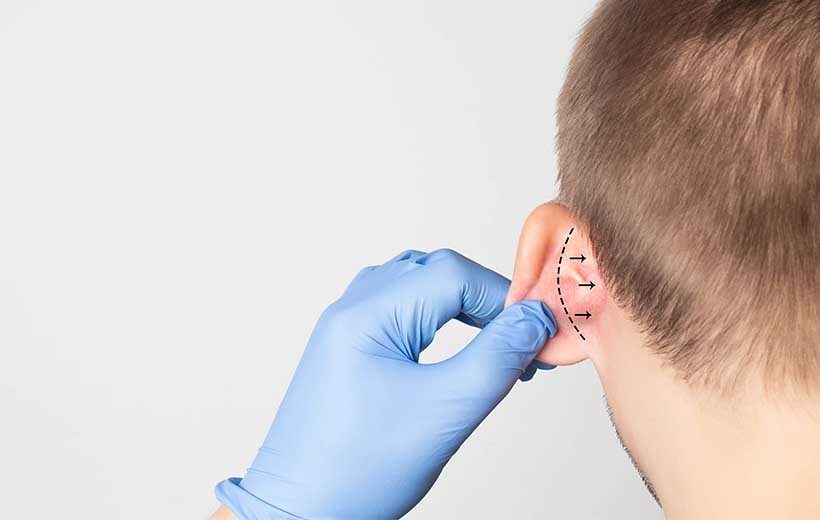
Otoplasty – all about ear surgery
The beautiful shape of the ears is part of a person’s appearance. You can correct your ears through surgery – otoplasty. Surgical intervention can be constructive or aesthetic. The second type is considered more common, because it gets rid of floppiness and asymmetry. These shortcomings often cause insecurity and complexes.
Preliminary preparation for otoplasty
At the consultation, the surgeon examines the patient to determine the degree of difficulty of the operation. Before otoplasty, it is necessary to pass:
Before the procedure, there are a few recommendations to follow:
Contraindications for otoplasty
Surgical intervention is prohibited if:
At what age is otoplasty performed
Many people want to correct flaws in their children’s ears at an early age. Before the age of 6, the auricles finish forming. If there are no contraindications, the doctor can perform the surgery at this age. The main indicator is the psychological state. If the child is not ready for surgery, the procedure can be stressful.
Rehabilitation period after otoplasty
During surgical intervention, local anesthesia is mostly used. The anesthetic does not affect the patient’s consciousness. On the day of surgery, doctors are allowed to leave the medical facility. In the first few days there may be swelling, bruising, and painful sensations.
Specialists in hospitals and aesthetic medicine clinics prescribe painkillers. Cold compresses help to relieve swelling. The feeling of tumescence and discomfort goes away within a week. There is no need to fear possible complications because the operation is minimally invasive.
In the first month it is forbidden to play sports, visit swimming pools and saunas. Self-absorbable sutures are used during surgical intervention. Such seams do not need any special care. The fixation bandage cannot be removed for 14 days. After full recovery, you can return to your normal lifestyle.
Advantages of otoplasty
Surgery is capable of correcting:
The choice of clinic and doctor affects the outcome of the surgery. European medical institutions use the most modern methods of surgical intervention. Qualified surgeons will do the surgery quickly and painlessly. The effect of the procedure will last a lifetime.
Read news
The beautiful shape of the ears is part of a person’s appearance. You can correct your ears through surgery – otoplasty. Surgical intervention can be constructive or aesthetic. The second type is considered more common, because it gets rid of floppiness and asymmetry. These shortcomings often cause insecurity and complexes.
Preliminary preparation for otoplasty
At the consultation, the surgeon examines the patient to determine the degree of difficulty of the operation. Before otoplasty, it is necessary to pass:
Before the procedure, there are a few recommendations to follow:
Contraindications for otoplasty
Surgical intervention is prohibited if:
At what age is otoplasty performed
Many people want to correct flaws in their children’s ears at an early age. Before the age of 6, the auricles finish forming. If there are no contraindications, the doctor can perform the surgery at this age. The main indicator is the psychological state. If the child is not ready for surgery, the procedure can be stressful.
Rehabilitation period after otoplasty
During surgical intervention, local anesthesia is mostly used. The anesthetic does not affect the patient’s consciousness. On the day of surgery, doctors are allowed to leave the medical facility. In the first few days there may be swelling, bruising, and painful sensations.
Specialists in hospitals and aesthetic medicine clinics prescribe painkillers. Cold compresses help to relieve swelling. The feeling of tumescence and discomfort goes away within a week. There is no need to fear possible complications because the operation is minimally invasive.
In the first month it is forbidden to play sports, visit swimming pools and saunas. Self-absorbable sutures are used during surgical intervention. Such seams do not need any special care. The fixation bandage cannot be removed for 14 days. After full recovery, you can return to your normal lifestyle.
Advantages of otoplasty
Surgery is capable of correcting:
The choice of clinic and doctor affects the outcome of the surgery. European medical institutions use the most modern methods of surgical intervention. Qualified surgeons will do the surgery quickly and painlessly. The effect of the procedure will last a lifetime.
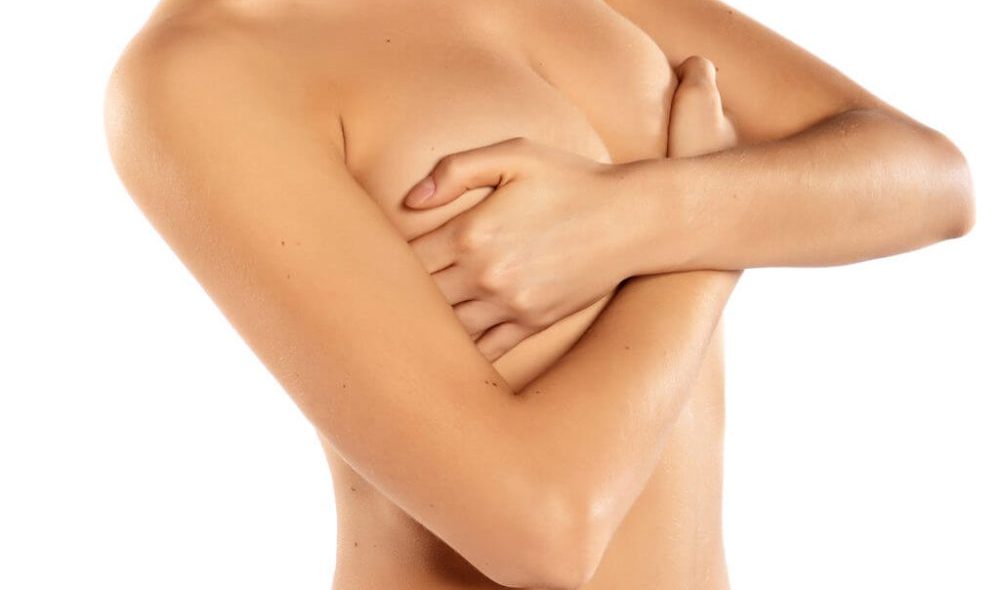
Swelling after mammoplasty
Mammoplasty is a surgical procedure to increase the size and reshape your breasts. After such procedures, a rehabilitation period is necessary. The most striking manifestation during recovery can be called swelling of the mammary glands. To get rid of edema faster, experts from hospitals and clinics in Europe give advice that contributes to a quicker recovery.
Causes of swelling after mammoplasty
Swelling is considered an early complication after surgery. This is the body’s natural reaction to the appearance of a foreign body. As the tissues swell, there is tension in the skin. These signs indicate the beginning of the recovery process.
Swelling can be not only in the breast area, but also on the abdomen. Swelling in the abdominal area should not be a cause for concern. Such manifestations occur periodically in women. In 1.5-2 months they will disappear. Sometimes they appear after a few months. These are secondary complications.
The discomfort in the chest is felt immediately after the anesthesia has worn off. In the beginning, the swelling may increase every day. However, after a while the swelling goes down.
To reduce pain, surgeons at aesthetic medicine clinics prescribe painkillers. They are taken strictly according to the specified scheme. Self-selection of medications is forbidden. Such actions are fraught with side effects.
Duration of breast swelling after mammoplasty
The recovery period depends on the ability of the body. Pain and discomfort may appear at the same time as the swelling. In most cases, all unpleasant symptoms go away in two months.
Patients must follow all the recommendations of their surgeons. Examination of the breast tissue will allow the doctor to draw conclusions about healing. If the pain and swelling persists for more than 2 months, you need to consult a specialist to determine the cause. This reaction can signal the displacement of the endoprostheses.
Breast restoration
Doctors recommend:
Possible consequences
In rare cases, patients report severe pain that persists for 7 days. The body temperature may also rise. If there is significant pain and fever, immediately consult a surgeon.
Other side effects are also possible:
At what symptoms do you see a doctor?
A doctor’s consultation is necessary when:
Our specialists are always ready to answer any of your questions. If necessary, a diagnosis can be made to rule out the development of complications. It is worth noting that surgeons at European clinics are rightly considered the best in the field of aesthetic medicine. By choosing world-renowned hospitals, you exclude the possibility of complications after surgery.
Read news
Mammoplasty is a surgical procedure to increase the size and reshape your breasts. After such procedures, a rehabilitation period is necessary. The most striking manifestation during recovery can be called swelling of the mammary glands. To get rid of edema faster, experts from hospitals and clinics in Europe give advice that contributes to a quicker recovery.
Causes of swelling after mammoplasty
Swelling is considered an early complication after surgery. This is the body’s natural reaction to the appearance of a foreign body. As the tissues swell, there is tension in the skin. These signs indicate the beginning of the recovery process.
Swelling can be not only in the breast area, but also on the abdomen. Swelling in the abdominal area should not be a cause for concern. Such manifestations occur periodically in women. In 1.5-2 months they will disappear. Sometimes they appear after a few months. These are secondary complications.
The discomfort in the chest is felt immediately after the anesthesia has worn off. In the beginning, the swelling may increase every day. However, after a while the swelling goes down.
To reduce pain, surgeons at aesthetic medicine clinics prescribe painkillers. They are taken strictly according to the specified scheme. Self-selection of medications is forbidden. Such actions are fraught with side effects.
Duration of breast swelling after mammoplasty
The recovery period depends on the ability of the body. Pain and discomfort may appear at the same time as the swelling. In most cases, all unpleasant symptoms go away in two months.
Patients must follow all the recommendations of their surgeons. Examination of the breast tissue will allow the doctor to draw conclusions about healing. If the pain and swelling persists for more than 2 months, you need to consult a specialist to determine the cause. This reaction can signal the displacement of the endoprostheses.
Breast restoration
Doctors recommend:
Possible consequences
In rare cases, patients report severe pain that persists for 7 days. The body temperature may also rise. If there is significant pain and fever, immediately consult a surgeon.
Other side effects are also possible:
At what symptoms do you see a doctor?
A doctor’s consultation is necessary when:
Our specialists are always ready to answer any of your questions. If necessary, a diagnosis can be made to rule out the development of complications. It is worth noting that surgeons at European clinics are rightly considered the best in the field of aesthetic medicine. By choosing world-renowned hospitals, you exclude the possibility of complications after surgery.
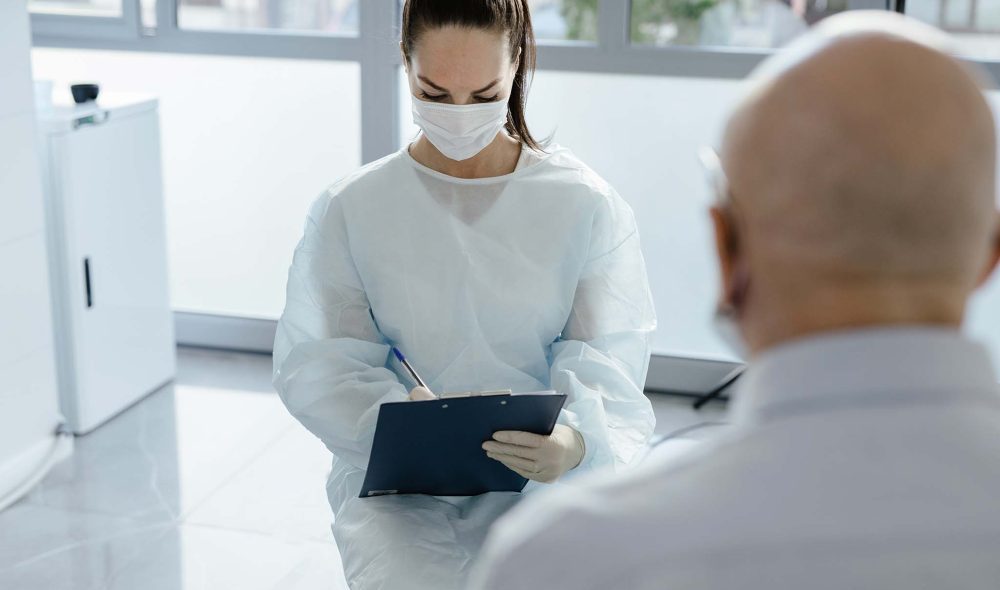
Consultation before hair transplantation
Any surgical intervention requires careful preparation. Despite being minimally invasive, hair transplant surgery is worth paying attention to. The preliminary stage consists of an external examination, diagnosis, choice of technique and number of grafts, formation of the hair growth line, and determining the date of the procedure.
Consultation with a trichologist
When combating hair loss, people resort to various methods. They take medications and use cosmetics. However, if there is no result, then transplantation is necessary.
Before making a decision about the possibility of surgical intervention, you need to decide on the issues that concern you the most. Hair transplantation is considered an uncomplicated procedure. The operation is performed under local anesthesia.
At the consultation, the doctor examines the condition of the hair and scalp with a special device. Next, the specialist determines the donor area, examines the direction of hair growth, the number of grafts to be transplanted.
The doctor asks about the period when severe hair loss began. You should tell about the measures you took to solve the problem. If you have tests for hormones, it is better to show them to a specialist. You will know the cost and duration of the procedure. The doctor will make recommendations so that you are 100% ready for surgery.
The patient needs to undergo tests:
Preparation one week before hair transplantation
Seven days before surgical intervention:
Preparing the day before a hair transplant
Before the surgery, you need to rest and wash your head well. It is forbidden to drink alcohol and smoke on the day before. Vitamin C foods are excluded from the diet. You should eat breakfast before the procedure. It is desirable to take with you a hat.
In European medical institutions, your doctor will give you recommendations at the consultation, which you should follow before the operation. If you follow them, you will get a good result, and the recovery will take days.
Read news
Any surgical intervention requires careful preparation. Despite being minimally invasive, hair transplant surgery is worth paying attention to. The preliminary stage consists of an external examination, diagnosis, choice of technique and number of grafts, formation of the hair growth line, and determining the date of the procedure.
Consultation with a trichologist
When combating hair loss, people resort to various methods. They take medications and use cosmetics. However, if there is no result, then transplantation is necessary.
Before making a decision about the possibility of surgical intervention, you need to decide on the issues that concern you the most. Hair transplantation is considered an uncomplicated procedure. The operation is performed under local anesthesia.
At the consultation, the doctor examines the condition of the hair and scalp with a special device. Next, the specialist determines the donor area, examines the direction of hair growth, the number of grafts to be transplanted.
The doctor asks about the period when severe hair loss began. You should tell about the measures you took to solve the problem. If you have tests for hormones, it is better to show them to a specialist. You will know the cost and duration of the procedure. The doctor will make recommendations so that you are 100% ready for surgery.
The patient needs to undergo tests:
Preparation one week before hair transplantation
Seven days before surgical intervention:
Preparing the day before a hair transplant
Before the surgery, you need to rest and wash your head well. It is forbidden to drink alcohol and smoke on the day before. Vitamin C foods are excluded from the diet. You should eat breakfast before the procedure. It is desirable to take with you a hat.
In European medical institutions, your doctor will give you recommendations at the consultation, which you should follow before the operation. If you follow them, you will get a good result, and the recovery will take days.

When you can do sports after mammoplasty
Many people have an active lifestyle. Physical exercise strengthens not only the body, but also the spirit. However, after surgery, you should refrain from sports, so that the body can recover more quickly. Doctors at hospitals and aesthetic medicine clinics advise following recommendations after mammoplasty.
What physical exercises are allowed after mammoplasty
Light physical activity is allowed from the 5th day after surgery. In the first 3 weeks, the maximum exercise consists of walking. You can walk for several hours a day.
A month after surgery, doctors allow exercises that do not strain the chest, shoulders, arms. You can only bend over after 2 months if the tissues are recovering well. You can exercise on simulators after consulting your doctor. This usually occurs 3-4 months after surgery.
What is forbidden after mammoplasty
After surgery, you cannot do push-ups, pull-ups, running, or jumping. This is due to the fact that the sutures can come apart or the implants can be displaced. In this case, a second surgical intervention will be necessary. Athletic walking and leg exercises will not harm your health and allow you to keep in shape.
Not playing sports after mammoplasty
Medical experts in Europe believe that it is not necessary to give up sports completely. Physical activity helps to stimulate the muscles and normalize blood circulation. Thanks to the exercises, the effect lasts for a long time. The tone of the mammary glands affects their location. A step-by-step return to sports will do you good. For this it is necessary to consult with a doctor.
What the period of exercise restriction depends on
This question is of interest to many members of the fair sex. Girls watch their figure and attend gyms, swimming pools and dances. However, it should be understood that it will not be possible to return to the old hobbies immediately.
Doctors provide individual counseling to patients. Each clinical case may have its own nuances. Surgeons take into account all the peculiarities of the body and monitor the recovery process. In some cases, this period takes a little longer.
Specialists will recommend safe sports and explain what the intensity of exercise should be. It is worth bearing in mind that these are time constraints. After rehabilitation, your doctor will allow you to return to your previous lifestyle.
Read news
Many people have an active lifestyle. Physical exercise strengthens not only the body, but also the spirit. However, after surgery, you should refrain from sports, so that the body can recover more quickly. Doctors at hospitals and aesthetic medicine clinics advise following recommendations after mammoplasty.
What physical exercises are allowed after mammoplasty
Light physical activity is allowed from the 5th day after surgery. In the first 3 weeks, the maximum exercise consists of walking. You can walk for several hours a day.
A month after surgery, doctors allow exercises that do not strain the chest, shoulders, arms. You can only bend over after 2 months if the tissues are recovering well. You can exercise on simulators after consulting your doctor. This usually occurs 3-4 months after surgery.
What is forbidden after mammoplasty
After surgery, you cannot do push-ups, pull-ups, running, or jumping. This is due to the fact that the sutures can come apart or the implants can be displaced. In this case, a second surgical intervention will be necessary. Athletic walking and leg exercises will not harm your health and allow you to keep in shape.
Not playing sports after mammoplasty
Medical experts in Europe believe that it is not necessary to give up sports completely. Physical activity helps to stimulate the muscles and normalize blood circulation. Thanks to the exercises, the effect lasts for a long time. The tone of the mammary glands affects their location. A step-by-step return to sports will do you good. For this it is necessary to consult with a doctor.
What the period of exercise restriction depends on
This question is of interest to many members of the fair sex. Girls watch their figure and attend gyms, swimming pools and dances. However, it should be understood that it will not be possible to return to the old hobbies immediately.
Doctors provide individual counseling to patients. Each clinical case may have its own nuances. Surgeons take into account all the peculiarities of the body and monitor the recovery process. In some cases, this period takes a little longer.
Specialists will recommend safe sports and explain what the intensity of exercise should be. It is worth bearing in mind that these are time constraints. After rehabilitation, your doctor will allow you to return to your previous lifestyle.
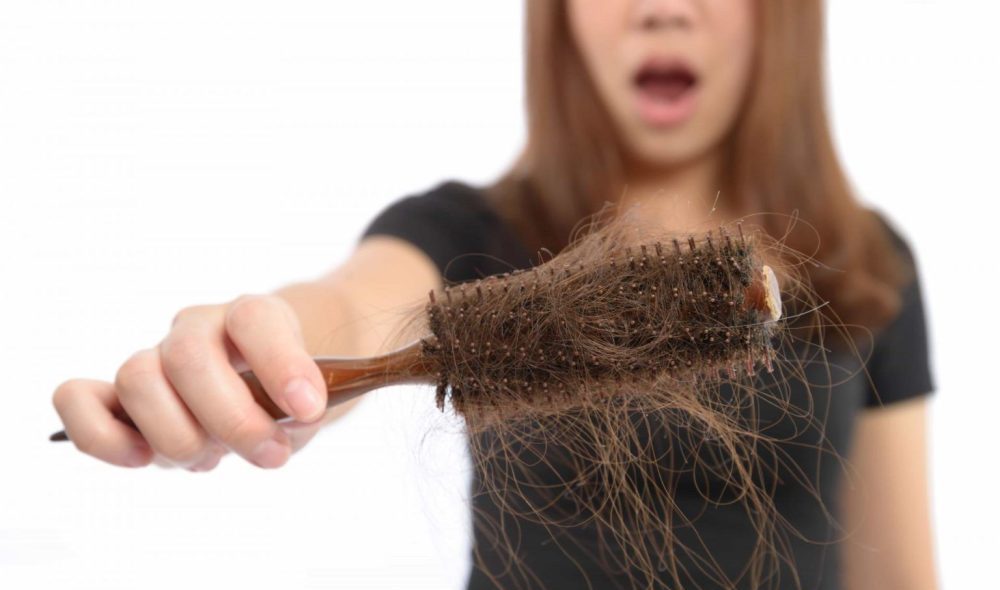
What diseases can cause hair loss
Hair loss can be a consequence of vitamin deficiency, stress, as well as a sign of health problems. Every day a person loses between 50 and 100 hairs. Such a figure is within the normal range. If the loss is severe, you need the help of a specialist. Detecting a problem in the body at an early stage will make it easier to deal with.
Why does the hair fall out
The amount of hair is affected by genetics and color. Usually their number on the head varies between 100,000 and 150,000. There is a periodic updating process. The hair cycle is divided into:
Under certain circumstances, hairs begin to fall out evenly or locally. It depends on genetic, hormonal, environmental factors. A variety of diseases can provoke profuse hair loss.
It is caused by illness, with fever, fatigue, and stress. The loss is most often diffuse, sudden and intense. However, such symptoms are usually temporary. After recovery, the hair growth cycle is restored.
Iron deficiency
Iron is an important micronutrient that is responsible for the condition of the hair. Its deficiency leads to brittleness and excessive loss. The cause is anemia or any chronic inflammatory disease.
Thyroid diseases
Focal alopecia is caused by endocrine diseases. Hypothyroidism occurs when the thyroid gland is insufficient. The disease is characterized by diffuse hair loss. An endocrinologist prescribes hormone medications to normalize the balance in the body.
Autoimmune diseases (Lupus erythematosus and Sjögren’s syndrome)
These autoimmune diseases affect the skin and other organs. As a consequence, the hair begins to fall out intensively. Sjögren’s syndrome and lupus erythematosus require comprehensive medical care because they are very dangerous to your health.
Diseases of the gastrointestinal tract
The state of the gastrointestinal tract affects the hair. Severe loss is noted at:
A gastroenterologist at a European medical facility will prescribe medications that must be taken according to the regimen. After recovery, the hair will stop falling out.
Read news
Hair loss can be a consequence of vitamin deficiency, stress, as well as a sign of health problems. Every day a person loses between 50 and 100 hairs. Such a figure is within the normal range. If the loss is severe, you need the help of a specialist. Detecting a problem in the body at an early stage will make it easier to deal with.
Why does the hair fall out
The amount of hair is affected by genetics and color. Usually their number on the head varies between 100,000 and 150,000. There is a periodic updating process. The hair cycle is divided into:
Under certain circumstances, hairs begin to fall out evenly or locally. It depends on genetic, hormonal, environmental factors. A variety of diseases can provoke profuse hair loss.
It is caused by illness, with fever, fatigue, and stress. The loss is most often diffuse, sudden and intense. However, such symptoms are usually temporary. After recovery, the hair growth cycle is restored.
Iron deficiency
Iron is an important micronutrient that is responsible for the condition of the hair. Its deficiency leads to brittleness and excessive loss. The cause is anemia or any chronic inflammatory disease.
Thyroid diseases
Focal alopecia is caused by endocrine diseases. Hypothyroidism occurs when the thyroid gland is insufficient. The disease is characterized by diffuse hair loss. An endocrinologist prescribes hormone medications to normalize the balance in the body.
Autoimmune diseases (Lupus erythematosus and Sjögren’s syndrome)
These autoimmune diseases affect the skin and other organs. As a consequence, the hair begins to fall out intensively. Sjögren’s syndrome and lupus erythematosus require comprehensive medical care because they are very dangerous to your health.
Diseases of the gastrointestinal tract
The state of the gastrointestinal tract affects the hair. Severe loss is noted at:
A gastroenterologist at a European medical facility will prescribe medications that must be taken according to the regimen. After recovery, the hair will stop falling out.
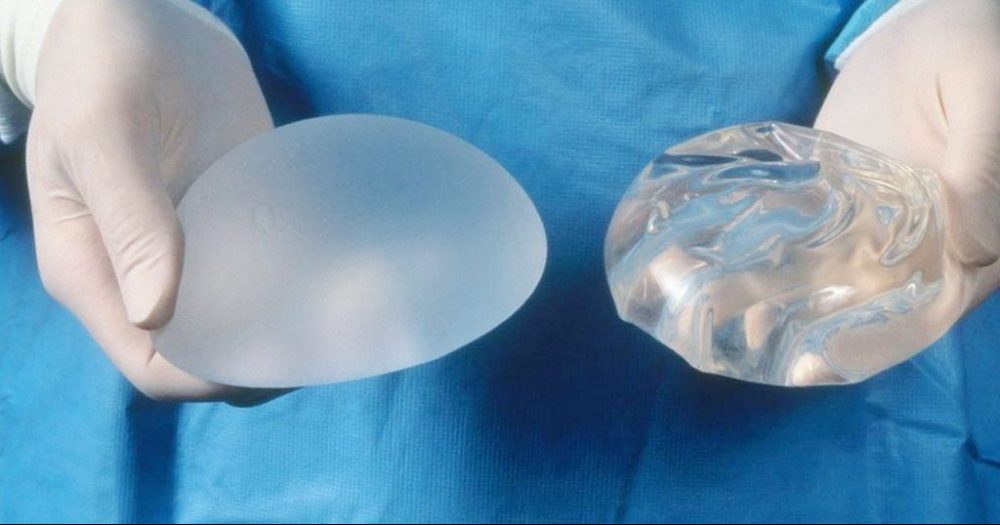
How often should I change my implant?
Breast augmentation surgery is performed with the placement of implants. Many girls worry about having to change their endoprostheses. Usually you need a replacement if you have old-style implants. Their term does not exceed 10 years. In European clinics, doctors work with quality endoprostheses that have no lifetime limitations.
Causes of wear and tear of old-style implants
Endoprostheses wear out due to:
Hospitals and clinics in Europe use only new-type implants. They are absolutely safe for health and quickly take root in the body.
Lifetime of the implants
Every 10 years, it is mandatory to replace the old-style implants. If you do not, you can cause great harm to the body. Modern endoprostheses have a lifetime warranty. They do not need to be replaced.
Any implant is changed because of:
Reasons for Endoprosthesis Replacement
There are a number of factors in which implants are changed. They consist in:
Implant replacement before and after pregnancy
If you had endoprostheses installed before pregnancy, they may need to be changed. This is due to the fact that the breasts during pregnancy greatly increases in size, and after childbirth – returns to its former form. Dentures can sag due to sudden changes. However, during the lactation period you should not have a second surgery. It is better to postpone the procedure until after breastfeeding.
How Breast Endoprosthesis Replacement Happens
Qualified specialists of the best medical institutions work with modern materials. But if you want to change the size or shape, you can have a second operation.
In preparation, it is necessary to pass:
After the tests, the doctor appoints a consultation to determine the possibility of surgical intervention. Doctors remove old endoprostheses and install new ones. The operation is performed under general anesthesia.
Recovery from Breast Implant Replacement
In the first days after surgery there are swellings and bruises. There is often an increase in temperature in the chest area. Surgeons at well-known clinics prescribe antibiotic therapy. During this period, you should avoid tanning beds, saunas, and swimming pools. Observing the recommendations of experts, the mammary glands will recover without complications and negative consequences.
Read news
Breast augmentation surgery is performed with the placement of implants. Many girls worry about having to change their endoprostheses. Usually you need a replacement if you have old-style implants. Their term does not exceed 10 years. In European clinics, doctors work with quality endoprostheses that have no lifetime limitations.
Causes of wear and tear of old-style implants
Endoprostheses wear out due to:
Hospitals and clinics in Europe use only new-type implants. They are absolutely safe for health and quickly take root in the body.
Lifetime of the implants
Every 10 years, it is mandatory to replace the old-style implants. If you do not, you can cause great harm to the body. Modern endoprostheses have a lifetime warranty. They do not need to be replaced.
Any implant is changed because of:
Reasons for Endoprosthesis Replacement
There are a number of factors in which implants are changed. They consist in:
Implant replacement before and after pregnancy
If you had endoprostheses installed before pregnancy, they may need to be changed. This is due to the fact that the breasts during pregnancy greatly increases in size, and after childbirth – returns to its former form. Dentures can sag due to sudden changes. However, during the lactation period you should not have a second surgery. It is better to postpone the procedure until after breastfeeding.
How Breast Endoprosthesis Replacement Happens
Qualified specialists of the best medical institutions work with modern materials. But if you want to change the size or shape, you can have a second operation.
In preparation, it is necessary to pass:
After the tests, the doctor appoints a consultation to determine the possibility of surgical intervention. Doctors remove old endoprostheses and install new ones. The operation is performed under general anesthesia.
Recovery from Breast Implant Replacement
In the first days after surgery there are swellings and bruises. There is often an increase in temperature in the chest area. Surgeons at well-known clinics prescribe antibiotic therapy. During this period, you should avoid tanning beds, saunas, and swimming pools. Observing the recommendations of experts, the mammary glands will recover without complications and negative consequences.
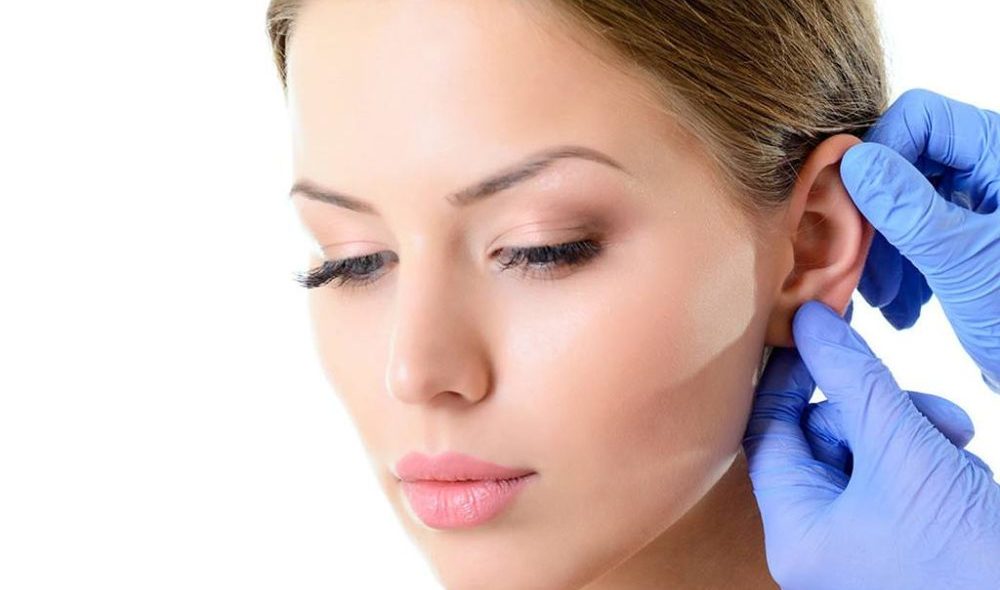
How is rehabilitation after otoplasty
The result of surgery always depends on several factors. The choice of a medical facility and doctor is a priority in this matter. Applying to the European clinics of aesthetic medicine, you will entrust your health to real professionals. For a good outcome, it is necessary to follow all the doctors’ recommendations.
Peculiarities of rehabilitation after otoplasty
The recovery period takes 1 month. Surgical intervention is performed under local anesthesia. On the day of surgery, the patient is released home after a few hours.
In the first 14 days, the patient has swelling in the operated area. After 5-7 days, they shrink and disappear completely. The doctor prescribes medications that promote rapid healing.
Pain and discomfort bother many patients. In some people, the pain is pronounced. This is due to the individual characteristics of the body.
Recommendations of doctors after otoplasty
Doctors put on a fixation bandage after the operation. It cannot be removed for 14 days. Then you wear it only at night for two more weeks. Our clinic uses modern high-quality materials. Self-absorbable sutures do not need to be removed. They are treated with chlorhexidine. Proper and regular care of the stitches will ensure good healing. There will be no scarring or scars after otoplasty.
You can wash your hair one week after surgery. Shower carefully, avoiding water in the surgical area. It is forbidden to exercise in the first month after otoplasty. The first 1-2 months are not recommended to wear earrings, headbands, glasses.
Overheating and overcooling are also harmful during this period. Tanning beds, saunas, swimming pools are not visited during the first month. Avoid direct sunlight. Decorative cosmetics can be used 14 days after otoplasty. Hair is not dyed and no permanent tattoos are applied.
The cartilage heals completely after six months. Lobules heal faster – in 2-3 months. Your ears may have decreased sensitivity for several months. If you follow all the recommendations, she will recover in 3 months. The auricles will lock into their new position. The swellings and bruises will go away.
Sleep in the first 7 days on a high orthopedic pillow or a special roller. Sleeping on your back reduces swelling, while sleeping on your side can lead to injury and tissue deformation. Touching and rubbing the ears is also not necessary until a full recovery.
If you have any questions, you can always contact the attending physicians. European medical specialists will advise you throughout the recovery period to speed up the process.
Read news
The result of surgery always depends on several factors. The choice of a medical facility and doctor is a priority in this matter. Applying to the European clinics of aesthetic medicine, you will entrust your health to real professionals. For a good outcome, it is necessary to follow all the doctors’ recommendations.
Peculiarities of rehabilitation after otoplasty
The recovery period takes 1 month. Surgical intervention is performed under local anesthesia. On the day of surgery, the patient is released home after a few hours.
In the first 14 days, the patient has swelling in the operated area. After 5-7 days, they shrink and disappear completely. The doctor prescribes medications that promote rapid healing.
Pain and discomfort bother many patients. In some people, the pain is pronounced. This is due to the individual characteristics of the body.
Recommendations of doctors after otoplasty
Doctors put on a fixation bandage after the operation. It cannot be removed for 14 days. Then you wear it only at night for two more weeks. Our clinic uses modern high-quality materials. Self-absorbable sutures do not need to be removed. They are treated with chlorhexidine. Proper and regular care of the stitches will ensure good healing. There will be no scarring or scars after otoplasty.
You can wash your hair one week after surgery. Shower carefully, avoiding water in the surgical area. It is forbidden to exercise in the first month after otoplasty. The first 1-2 months are not recommended to wear earrings, headbands, glasses.
Overheating and overcooling are also harmful during this period. Tanning beds, saunas, swimming pools are not visited during the first month. Avoid direct sunlight. Decorative cosmetics can be used 14 days after otoplasty. Hair is not dyed and no permanent tattoos are applied.
The cartilage heals completely after six months. Lobules heal faster – in 2-3 months. Your ears may have decreased sensitivity for several months. If you follow all the recommendations, she will recover in 3 months. The auricles will lock into their new position. The swellings and bruises will go away.
Sleep in the first 7 days on a high orthopedic pillow or a special roller. Sleeping on your back reduces swelling, while sleeping on your side can lead to injury and tissue deformation. Touching and rubbing the ears is also not necessary until a full recovery.
If you have any questions, you can always contact the attending physicians. European medical specialists will advise you throughout the recovery period to speed up the process.
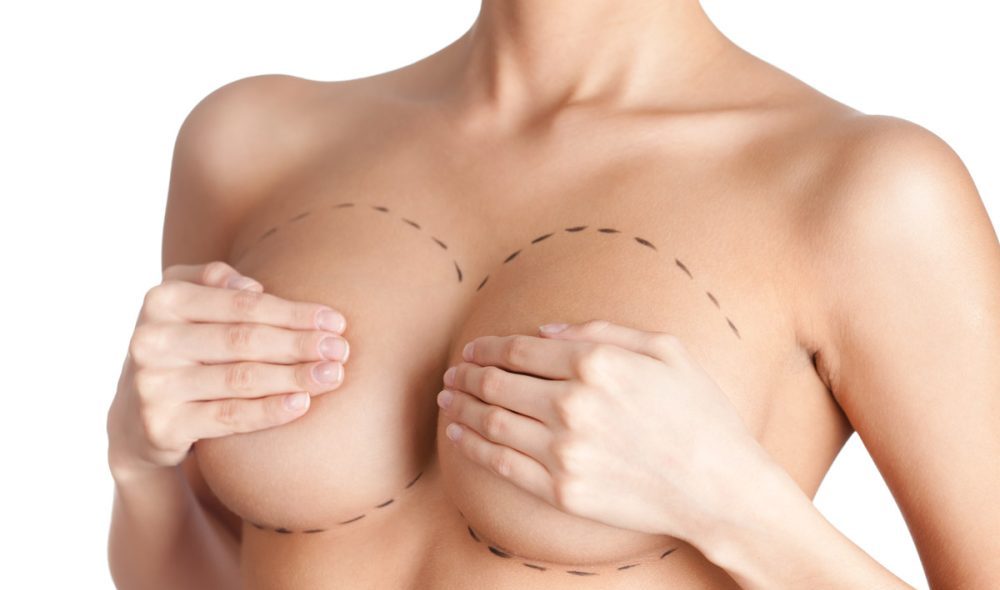
How Breast Lift Surgery Works
All women strive for perfection. Ideal forms in today’s time can be achieved through operations in plastic surgery hospitals in Europe. Over time, the figure changes, the breasts lose their shape and begin to sag. A great solution would be to get a breast lift or mastopexy.
Indications for surgical intervention
Breast lifts are done at:
Contraindications to mastopexy
Surgical intervention is prohibited if:
Preparing for Breast Lift Surgery
Before the surgery, a consultation with a gynecologist, a mammologist and a general practitioner is necessary. They also necessarily do:
After the tests, the surgeon decides what type of surgery will be best in this case. It depends not only on personal preferences, but also on the individual characteristics of the body.
Types of mastopexy
A breast lift can be:
How Breast Lift Surgery is Performed
Surgical intervention takes an average of 1 to 1.5 hours. Stages of the operation:
In addition to lifts, implants can be placed to increase the volume of your breasts.
Rehabilitation after breast lift surgery
In the first weeks after surgery, patients experience pain in the breast area. The swelling goes down in three months. To reduce pain, doctors will prescribe pain medication to speed up rehabilitation. Surgeons do not recommend visiting the sauna and tanning salon, as well as exercising for a month.
In hospitals and clinics in Europe you will have an operation after which the breast will take the desired shape. You will get rid of complexes, and your stunning look will attract the eyes of others.
Read news
All women strive for perfection. Ideal forms in today’s time can be achieved through operations in plastic surgery hospitals in Europe. Over time, the figure changes, the breasts lose their shape and begin to sag. A great solution would be to get a breast lift or mastopexy.
Indications for surgical intervention
Breast lifts are done at:
Contraindications to mastopexy
Surgical intervention is prohibited if:
Preparing for Breast Lift Surgery
Before the surgery, a consultation with a gynecologist, a mammologist and a general practitioner is necessary. They also necessarily do:
After the tests, the surgeon decides what type of surgery will be best in this case. It depends not only on personal preferences, but also on the individual characteristics of the body.
Types of mastopexy
A breast lift can be:
How Breast Lift Surgery is Performed
Surgical intervention takes an average of 1 to 1.5 hours. Stages of the operation:
In addition to lifts, implants can be placed to increase the volume of your breasts.
Rehabilitation after breast lift surgery
In the first weeks after surgery, patients experience pain in the breast area. The swelling goes down in three months. To reduce pain, doctors will prescribe pain medication to speed up rehabilitation. Surgeons do not recommend visiting the sauna and tanning salon, as well as exercising for a month.
In hospitals and clinics in Europe you will have an operation after which the breast will take the desired shape. You will get rid of complexes, and your stunning look will attract the eyes of others.
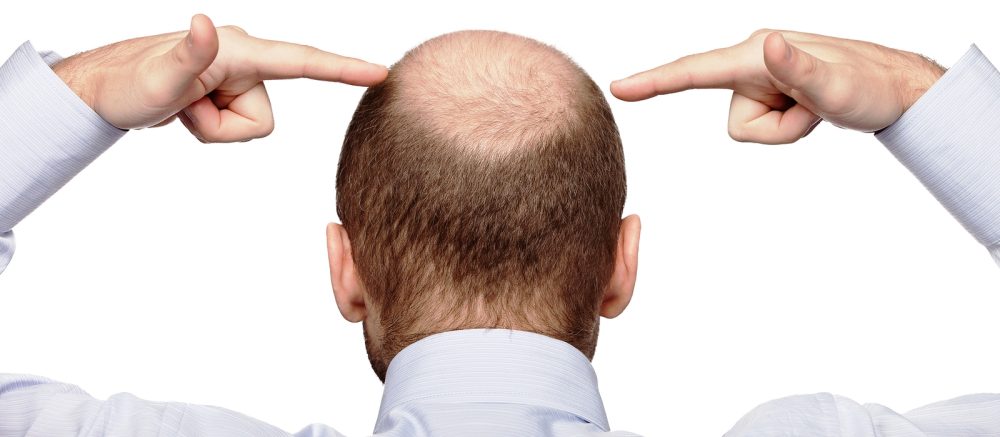
How to defeat alopecia by hair transplantation
Many people face the problem of baldness. Pharmacies sell a huge number of medicines that prevent hair loss. However, there is not always a positive result from them. You can get rid of baldness with a hair transplant.
Hair transplantation for male pattern baldness
Male pattern baldness is the gradual loss of hair from the temporal part to the top of the head. The top and center of the head suffer the most.
Half of the male population manifests androgenic alopecia at the age of 45-50 years. The cause is a hereditary factor. Hair follicles are highly sensitive to DHT.
Hair transplantation for female pattern baldness
Androgenic alopecia can also be seen in women. However, the disease manifests itself in different ways. Hair follicles are affected all over the head. If there is localized hair loss, it is necessary to do a transplant.
Transplantation in people with tall and uneven hairline
Graft transplantation solves the issue of a high forehead. It is also possible to correct an uneven growth line if the patient wishes. A specialist is involved in modeling a new line that fits the person.
Anterior line transplantation
The front line of hair is transplanted in the same way as in the rest of the head. After anesthesia is administered, the grafts are removed and inserted through the microholes.
The task of the surgeon is to create a suitable, proportional and natural hairline. It should match the facial features. DHI technique is most often used in such cases.
It takes medical knowledge and aesthetic vision to create the right hair growth line. They develop it taking into account:
How hair transplants are performed
Transplantation takes place under local anesthesia. Grafts are extracted from the donor area. The punctures are used to create microscopic holes. They must have the exact angle, spacing and direction to ensure natural and thick hair. Grafts are transplanted into the holes, which quickly take root. In clinics in Europe, doctors will do the procedure at the highest level. You will be happy with the effect of the surgery, and your hair will become thick and lush.
Read news
Many people face the problem of baldness. Pharmacies sell a huge number of medicines that prevent hair loss. However, there is not always a positive result from them. You can get rid of baldness with a hair transplant.
Hair transplantation for male pattern baldness
Male pattern baldness is the gradual loss of hair from the temporal part to the top of the head. The top and center of the head suffer the most.
Half of the male population manifests androgenic alopecia at the age of 45-50 years. The cause is a hereditary factor. Hair follicles are highly sensitive to DHT.
Hair transplantation for female pattern baldness
Androgenic alopecia can also be seen in women. However, the disease manifests itself in different ways. Hair follicles are affected all over the head. If there is localized hair loss, it is necessary to do a transplant.
Transplantation in people with tall and uneven hairline
Graft transplantation solves the issue of a high forehead. It is also possible to correct an uneven growth line if the patient wishes. A specialist is involved in modeling a new line that fits the person.
Anterior line transplantation
The front line of hair is transplanted in the same way as in the rest of the head. After anesthesia is administered, the grafts are removed and inserted through the microholes.
The task of the surgeon is to create a suitable, proportional and natural hairline. It should match the facial features. DHI technique is most often used in such cases.
It takes medical knowledge and aesthetic vision to create the right hair growth line. They develop it taking into account:
How hair transplants are performed
Transplantation takes place under local anesthesia. Grafts are extracted from the donor area. The punctures are used to create microscopic holes. They must have the exact angle, spacing and direction to ensure natural and thick hair. Grafts are transplanted into the holes, which quickly take root. In clinics in Europe, doctors will do the procedure at the highest level. You will be happy with the effect of the surgery, and your hair will become thick and lush.

How to reshape breasts after childbirth
Childbirth makes adjustments to a woman’s life and appearance. During this period there are joyful troubles with a young child, as well as a change in figure. Breasts often sag after nursing, which significantly worsens the aesthetic appearance. However, it is still possible to return to the previous form.
Why Breast Shaping Changes After Childbirth
The main reason can be called a hormonal change. During pregnancy your breasts increase in size and weight. Ligaments cannot withstand such a load and ptosis develops. At the same time the skin is stretched. All this leads to a loss of elasticity. Also, much depends on heredity and the shape and size of the breasts.
How can breasts change after childbirth
The mammary glands can become:
It is worth noting that the skin on the nipples and areola can change color and shape. Nipples often get big. It is not uncommon for pigment spots to appear.
How to restore the volume and shape of the breasts
European hospitals and clinics can help you solve this problem. Breast lift surgery eliminates all flaws. If the volume of the mammary glands is reduced, additional implants can be placed.
The most popular types of surgical intervention:
When choosing a method of operation, a number of factors are taken into account:
The nipple-areolar complex is always corrected during surgical intervention. Thus, the mammary glands get a perfect shape.
If it is necessary to increase the breasts, implants are placed. They increase the volume and change the shape. The cuts go through:
The shape and type of the endoprosthesis is chosen beforehand. Each type of implant has a different density and type of outer shell.
Sometimes patients need to reduce their breasts. Reduction mammoplasty is performed when the volume of the breasts is very large. The surgery can change the size of the areolas and nipples. Plastic surgeons of European clinics will do the surgery at the highest level. You’ll get the perfect shape, which will have a positive effect on your self-esteem and mood.
Read news
Childbirth makes adjustments to a woman’s life and appearance. During this period there are joyful troubles with a young child, as well as a change in figure. Breasts often sag after nursing, which significantly worsens the aesthetic appearance. However, it is still possible to return to the previous form.
Why Breast Shaping Changes After Childbirth
The main reason can be called a hormonal change. During pregnancy your breasts increase in size and weight. Ligaments cannot withstand such a load and ptosis develops. At the same time the skin is stretched. All this leads to a loss of elasticity. Also, much depends on heredity and the shape and size of the breasts.
How can breasts change after childbirth
The mammary glands can become:
It is worth noting that the skin on the nipples and areola can change color and shape. Nipples often get big. It is not uncommon for pigment spots to appear.
How to restore the volume and shape of the breasts
European hospitals and clinics can help you solve this problem. Breast lift surgery eliminates all flaws. If the volume of the mammary glands is reduced, additional implants can be placed.
The most popular types of surgical intervention:
When choosing a method of operation, a number of factors are taken into account:
The nipple-areolar complex is always corrected during surgical intervention. Thus, the mammary glands get a perfect shape.
If it is necessary to increase the breasts, implants are placed. They increase the volume and change the shape. The cuts go through:
The shape and type of the endoprosthesis is chosen beforehand. Each type of implant has a different density and type of outer shell.
Sometimes patients need to reduce their breasts. Reduction mammoplasty is performed when the volume of the breasts is very large. The surgery can change the size of the areolas and nipples. Plastic surgeons of European clinics will do the surgery at the highest level. You’ll get the perfect shape, which will have a positive effect on your self-esteem and mood.
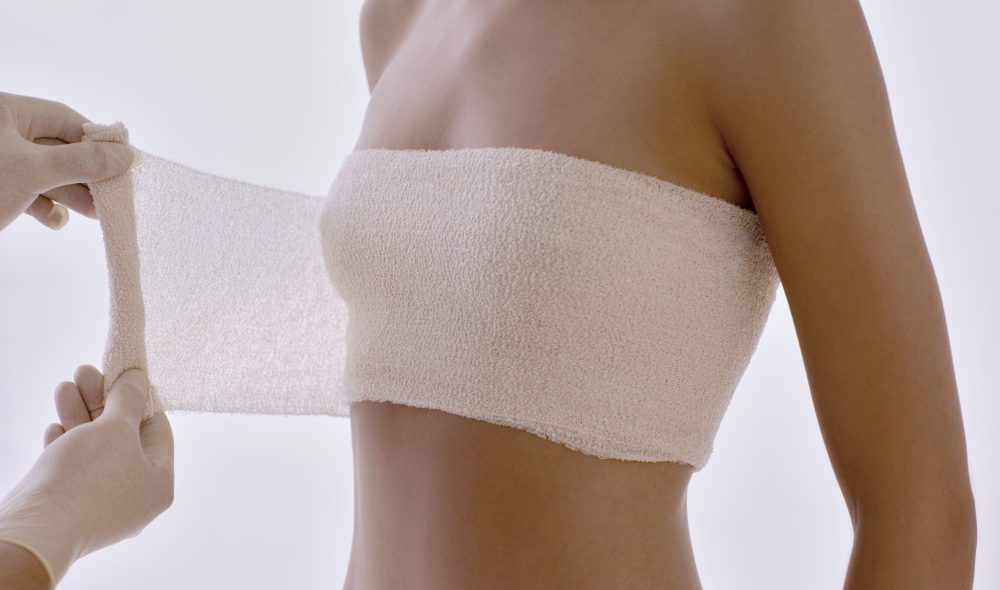
Breasts one month after mammoplasty
The rehabilitation period after mammoplasty in the first month involves compliance with all medical recommendations. The effect after surgery depends on the recovery, since the procedure is performed surgically. This article presents advice from specialists at clinics and hospitals in Europe after surgical intervention.
Peculiarities of wearing compression underwear
After surgery, the surgeon puts on a special compression garment for the patient. It is forbidden to take it off, even before going to bed. Thanks to the underwear is a fixation of the mammary glands. The implants can’t shift. The skin will not stretch and the seams will not come apart.
The bra can cause discomfort. In this case, you need to consult a surgeon. The doctor will determine the cause of the discomfort. The problem could be the wrong size or degree of compression. The linen should only be changed with the permission of a specialist.
Drug therapy
After surgery, the doctor prescribes medication according to the scheme. Take the drugs for 1-1.5 weeks. Non-steroidal anti-inflammatory drugs relieve painful sensations. Antibiotics will prevent the formation of bacterial complications.
Painful sensations in the mammary glands
In the first days after surgery, your breasts begin to hurt. With the help of painkillers you can get rid of discomfort. Tissues regenerate faster when:
Don’t be surprised if the pain on different sides has different intensity. The reason is more developed muscles on one side of the body. For example, in right-handed people the muscles react stronger on the right side during surgery.
Breast swelling
The mammary glands swell the most in 3 days after surgery. Because of this, the shape and size of the breasts will constantly change. The swelling will go down every day. It is very important to exclude from the menu foods with high salt content. Do not use canned vegetables, sausages, sauces.
Proper sleeping position after mammoplasty
You can only sleep after surgery on your back. Turning on your side during the first 14 days may change the location of the implant. A high cushion will encourage fluid outflow. Therefore, the head, shoulders, neck should be placed completely on it.
Restrictions on sports activities
In the first month, physical exercise is prohibited. Stresses on the arms, shoulders, chest area can cause the seams to come apart. Any exercises can only be done with the surgeon’s permission. On the 4th day you can walk. Walks can last several hours a day.
Assessment of mammoplasty results
During the first month it is impossible to evaluate the result. It is prevented by edema, which changes on a daily basis. For yourself, you can take photos 2, 5 and 15 days after surgery to see the difference. For any questions related to rehabilitation, you can contact the doctors of European medical institutions. Thanks to the recommendations of specialists, the recovery will go quickly and without complications.
Read news
The rehabilitation period after mammoplasty in the first month involves compliance with all medical recommendations. The effect after surgery depends on the recovery, since the procedure is performed surgically. This article presents advice from specialists at clinics and hospitals in Europe after surgical intervention.
Peculiarities of wearing compression underwear
After surgery, the surgeon puts on a special compression garment for the patient. It is forbidden to take it off, even before going to bed. Thanks to the underwear is a fixation of the mammary glands. The implants can’t shift. The skin will not stretch and the seams will not come apart.
The bra can cause discomfort. In this case, you need to consult a surgeon. The doctor will determine the cause of the discomfort. The problem could be the wrong size or degree of compression. The linen should only be changed with the permission of a specialist.
Drug therapy
After surgery, the doctor prescribes medication according to the scheme. Take the drugs for 1-1.5 weeks. Non-steroidal anti-inflammatory drugs relieve painful sensations. Antibiotics will prevent the formation of bacterial complications.
Painful sensations in the mammary glands
In the first days after surgery, your breasts begin to hurt. With the help of painkillers you can get rid of discomfort. Tissues regenerate faster when:
Don’t be surprised if the pain on different sides has different intensity. The reason is more developed muscles on one side of the body. For example, in right-handed people the muscles react stronger on the right side during surgery.
Breast swelling
The mammary glands swell the most in 3 days after surgery. Because of this, the shape and size of the breasts will constantly change. The swelling will go down every day. It is very important to exclude from the menu foods with high salt content. Do not use canned vegetables, sausages, sauces.
Proper sleeping position after mammoplasty
You can only sleep after surgery on your back. Turning on your side during the first 14 days may change the location of the implant. A high cushion will encourage fluid outflow. Therefore, the head, shoulders, neck should be placed completely on it.
Restrictions on sports activities
In the first month, physical exercise is prohibited. Stresses on the arms, shoulders, chest area can cause the seams to come apart. Any exercises can only be done with the surgeon’s permission. On the 4th day you can walk. Walks can last several hours a day.
Assessment of mammoplasty results
During the first month it is impossible to evaluate the result. It is prevented by edema, which changes on a daily basis. For yourself, you can take photos 2, 5 and 15 days after surgery to see the difference. For any questions related to rehabilitation, you can contact the doctors of European medical institutions. Thanks to the recommendations of specialists, the recovery will go quickly and without complications.
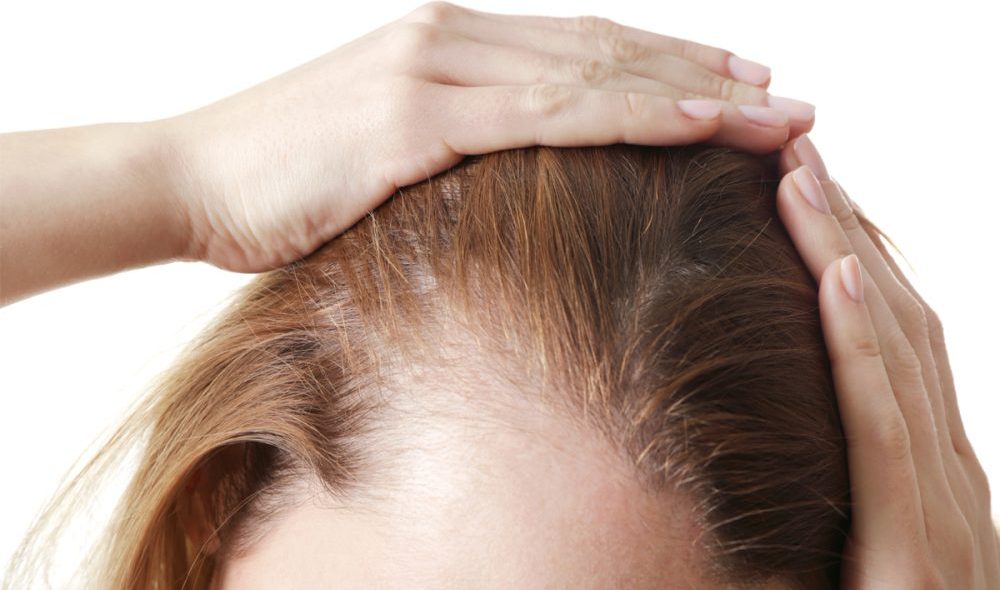
Alopecia, Causes, Symptoms and Diagnosis
Sparrows, hair loss, and baldness come as a shock to men and women. Losing more than a hundred hairs a day is serious cause for concern. In this case, it is necessary to be examined by a trichologist to determine the causes.
What is alopecia
If you observe complete or partial absence of hair on a person’s head, you can assume that it is alopecia. This phenomenon damages the hair follicles and causes the hair to fall out. Alopecia can cause complete alopecia if the necessary measures are not taken.
Types of alopecia
Alopecia can be:
Telogenic alopecia can be:
Alopecia symptoms
In cicatricial alopecia there are small pockets of alopecia in the forehead or vertex. The late stage is characterized by significant fibrosis. The other variety is characterized by the appearance of multiple deep and superficial abscesses.
In nested alopecia, you can see rounded foci without hair. Eyebrows, eyelashes, mustache, and beard may also be affected. With androgenetic alopecia, pubic hair appears on the temples, forehead, and vertex. The lesion begins with bald spots on the temples. Seborrheic alopecia is manifested by greasy, sticky hairs. The skin is dotted with yellowish scales. This type is often accompanied by an itchy scalp.
Causes of hair loss
Hair loss in girls is related to:
In men, the causes are hereditary factors and testosterone levels.
Diagnosis of hair loss
If you have severe hair loss, you should make an appointment with a trichologist. He will examine the hair and scalp with a trichoscope. This is a special apparatus that has optical lenses and enlarges many times the desired area. For diagnosis it is necessary to take tests:
After collecting the medical history, the doctor decides on further treatment. You may need an additional consultation with an endocrinologist.
Hair Loss Treatment
Based on the results of the tests, the doctor selects the optimal treatment regimen. It may consist of:
Of the masks are used:
If the treatment fails, you can have a hair transplant. Surgeons at the best clinics in Europe perform surgeries using the most innovative techniques. Thanks to this unique procedure your dreams of thick hair will become a reality.
Read news
Sparrows, hair loss, and baldness come as a shock to men and women. Losing more than a hundred hairs a day is serious cause for concern. In this case, it is necessary to be examined by a trichologist to determine the causes.
What is alopecia
If you observe complete or partial absence of hair on a person’s head, you can assume that it is alopecia. This phenomenon damages the hair follicles and causes the hair to fall out. Alopecia can cause complete alopecia if the necessary measures are not taken.
Types of alopecia
Alopecia can be:
Telogenic alopecia can be:
Alopecia symptoms
In cicatricial alopecia there are small pockets of alopecia in the forehead or vertex. The late stage is characterized by significant fibrosis. The other variety is characterized by the appearance of multiple deep and superficial abscesses.
In nested alopecia, you can see rounded foci without hair. Eyebrows, eyelashes, mustache, and beard may also be affected. With androgenetic alopecia, pubic hair appears on the temples, forehead, and vertex. The lesion begins with bald spots on the temples. Seborrheic alopecia is manifested by greasy, sticky hairs. The skin is dotted with yellowish scales. This type is often accompanied by an itchy scalp.
Causes of hair loss
Hair loss in girls is related to:
In men, the causes are hereditary factors and testosterone levels.
Diagnosis of hair loss
If you have severe hair loss, you should make an appointment with a trichologist. He will examine the hair and scalp with a trichoscope. This is a special apparatus that has optical lenses and enlarges many times the desired area. For diagnosis it is necessary to take tests:
After collecting the medical history, the doctor decides on further treatment. You may need an additional consultation with an endocrinologist.
Hair Loss Treatment
Based on the results of the tests, the doctor selects the optimal treatment regimen. It may consist of:
Of the masks are used:
If the treatment fails, you can have a hair transplant. Surgeons at the best clinics in Europe perform surgeries using the most innovative techniques. Thanks to this unique procedure your dreams of thick hair will become a reality.

Compression underwear after mammoplasty
Rehabilitation after surgery is an important stage for the human body. After mammoplasty patients need to follow all the recommendations of the surgeons, so that the breasts recover without any consequences. Wearing compression underwear is mandatory.
Advantages of compression underwear
A special bra is an item of clothing worn after surgery. The material is distinguished by its durability, elasticity, hygroscopicity. Thanks to it it is possible to fix the mammary glands and implants in the right position, which contributes to faster healing of tissues.
The underwear is made of a special knit, which contains elastane. The fabric is very breathable. Lingerie prevents puffiness and soreness.
When wearing compression underwear:
Choice of compression underwear
It is difficult to choose a compression garment on your own. This is due to the fact that it is necessary to consider the degree of compression and choose the appropriate fabric. Many patients pay great attention to the appearance of their clothes.
Doctors at European hospitals can help you choose the best option by class:
Lingerie most often has a special tape for extra fixation. The straps and clasps should not chafe. Wear it for a month to two months. The period depends on the speed of rehabilitation.
After surgery, the surgeon will help you wear a compression garment over a special dressing. It is worth noting that when putting on lingerie be sure to straighten the corset and straps. Creases are not allowed. Abrupt hand movements can cause the stitches to come apart. In the first 2 weeks, you don’t take off your bra.
Care recommendations for compression underwear
To avoid infection, it is necessary to buy several sets of underwear. Wash it by hand, at least twice a week. Water should not exceed 30 degrees. It is advisable to add non-aggressive gel or baby powder.
Consequences of not wearing compression garments
Some patients neglect the advice of doctors, considering the wearing of special clothing unnecessary. Such a decision is fraught:
European medical specialists will not only perform an operation that will change the shape and size of your breasts. They will help you choose the right compression garment for you and help you recover as quickly as possible.
Read news
Rehabilitation after surgery is an important stage for the human body. After mammoplasty patients need to follow all the recommendations of the surgeons, so that the breasts recover without any consequences. Wearing compression underwear is mandatory.
Advantages of compression underwear
A special bra is an item of clothing worn after surgery. The material is distinguished by its durability, elasticity, hygroscopicity. Thanks to it it is possible to fix the mammary glands and implants in the right position, which contributes to faster healing of tissues.
The underwear is made of a special knit, which contains elastane. The fabric is very breathable. Lingerie prevents puffiness and soreness.
When wearing compression underwear:
Choice of compression underwear
It is difficult to choose a compression garment on your own. This is due to the fact that it is necessary to consider the degree of compression and choose the appropriate fabric. Many patients pay great attention to the appearance of their clothes.
Doctors at European hospitals can help you choose the best option by class:
Lingerie most often has a special tape for extra fixation. The straps and clasps should not chafe. Wear it for a month to two months. The period depends on the speed of rehabilitation.
After surgery, the surgeon will help you wear a compression garment over a special dressing. It is worth noting that when putting on lingerie be sure to straighten the corset and straps. Creases are not allowed. Abrupt hand movements can cause the stitches to come apart. In the first 2 weeks, you don’t take off your bra.
Care recommendations for compression underwear
To avoid infection, it is necessary to buy several sets of underwear. Wash it by hand, at least twice a week. Water should not exceed 30 degrees. It is advisable to add non-aggressive gel or baby powder.
Consequences of not wearing compression garments
Some patients neglect the advice of doctors, considering the wearing of special clothing unnecessary. Such a decision is fraught:
European medical specialists will not only perform an operation that will change the shape and size of your breasts. They will help you choose the right compression garment for you and help you recover as quickly as possible.
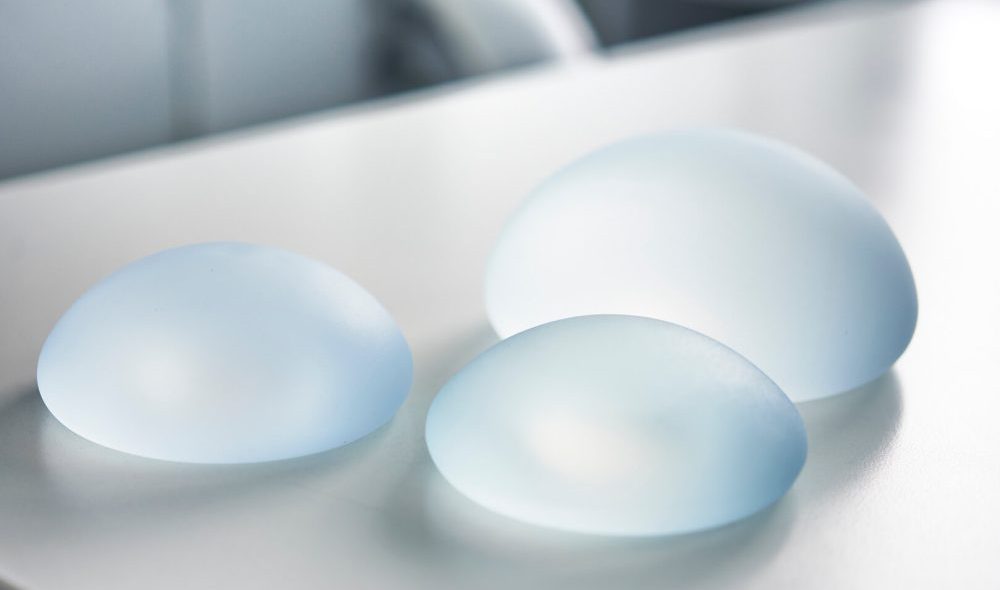
Types of breast augmentation implants
The positive effect of breast augmentation surgery depends on both the professionalism of the surgeon and the choice of implants. There are a variety of models on the market, each of which has its own characteristics. In European medical institutions patients are fitted with modern endoprostheses, taking into account the peculiarities of the body and physique.
Indications for implants
More and more girls and women daily decide to have breast augmentation surgery. Thanks to surgical intervention there is an opportunity:
All of these disadvantages greatly affect the psychological state of the patient. Before the surgery, the surgeon uses a computer program to determine the size and shape of the implants together with the patient. After that, you need to take tests and prepare for surgery.
Contraindications to implantation of endoprostheses
It is forbidden to perform the operation if:
Shapes of implants
There are two types of modern endoprostheses:
Choosing an implant profile
Types of profiles are divided into:
Types of endoprosthesis fillers
The filler can be:
Types of implant surfaces
The sheath of endoprostheses comes in:
Choice of breast implants
At aesthetic medicine clinics in Europe, surgeons will select endoprostheses that will make your breasts perfect. They are safe and will quickly take root in the body. It is also worth noting that they have an indefinite lifespan.
Read news
The positive effect of breast augmentation surgery depends on both the professionalism of the surgeon and the choice of implants. There are a variety of models on the market, each of which has its own characteristics. In European medical institutions patients are fitted with modern endoprostheses, taking into account the peculiarities of the body and physique.
Indications for implants
More and more girls and women daily decide to have breast augmentation surgery. Thanks to surgical intervention there is an opportunity:
All of these disadvantages greatly affect the psychological state of the patient. Before the surgery, the surgeon uses a computer program to determine the size and shape of the implants together with the patient. After that, you need to take tests and prepare for surgery.
Contraindications to implantation of endoprostheses
It is forbidden to perform the operation if:
Shapes of implants
There are two types of modern endoprostheses:
Choosing an implant profile
Types of profiles are divided into:
Types of endoprosthesis fillers
The filler can be:
Types of implant surfaces
The sheath of endoprostheses comes in:
Choice of breast implants
At aesthetic medicine clinics in Europe, surgeons will select endoprostheses that will make your breasts perfect. They are safe and will quickly take root in the body. It is also worth noting that they have an indefinite lifespan.

Recovery after otoplasty
Otoplasty solves many problems with the auricles. More and more people are resorting to surgery to correct deformities of the ears. Surgeons at clinics and hospitals in Europe perform otoplasty at the highest level. However, the rehabilitation period plays an important role in the outcome of surgery.
Rehabilitation after otoplasty
During surgery, local or general anesthesia is used. The surgical intervention lasts for 1 hour. Small incisions are made during the surgical procedure.
After all the manipulations, cosmetic sutures are applied, which dissolve on their own. The surgeon closes the suture with a plaster, and the ear with a special bandage. Such actions will prevent accidental damage by locking the ear pieces in their new position.
When a surgical intervention is performed under local anesthesia, the patient is released home after a couple of hours. General anesthesia has a longer lasting effect on the body. In this regard, it is better to stay in the hospital under medical supervision for the first 24 hours after otoplasty.
Tissue recovery time after otoplasty
During the first days after surgery there may be swelling, pain, bruises. The surgeon will prescribe pain medication, which must be taken strictly according to the regimen.
During this period, many patients have decreased sensitivity. The skin may become numb. After a week, sensitivity is usually restored. Full rehabilitation takes 1-2 months. After that, it will be possible to evaluate the result of otoplasty.
How long a bandage is worn after surgery
Wearing a fixation bandage in the first 8-10 days is the key to a successful otoplasty. Next, it is put on before going to sleep, so as not to traumatize the ears.
Surgeon’s recommendations
Some tips after otoplasty:
What position to sleep in after otoplasty
A high orthopedic pillow would be a great option. For the first 7 days, you should sleep only on your back. Such actions help to reduce swelling and prevent mechanical damage to the skin.
After 2 weeks, the doctor will examine the suture and assess the degree of healing. If you recover quickly, your surgeon can remove some restrictions, and you can return to an active lifestyle.
Read news
Otoplasty solves many problems with the auricles. More and more people are resorting to surgery to correct deformities of the ears. Surgeons at clinics and hospitals in Europe perform otoplasty at the highest level. However, the rehabilitation period plays an important role in the outcome of surgery.
Rehabilitation after otoplasty
During surgery, local or general anesthesia is used. The surgical intervention lasts for 1 hour. Small incisions are made during the surgical procedure.
After all the manipulations, cosmetic sutures are applied, which dissolve on their own. The surgeon closes the suture with a plaster, and the ear with a special bandage. Such actions will prevent accidental damage by locking the ear pieces in their new position.
When a surgical intervention is performed under local anesthesia, the patient is released home after a couple of hours. General anesthesia has a longer lasting effect on the body. In this regard, it is better to stay in the hospital under medical supervision for the first 24 hours after otoplasty.
Tissue recovery time after otoplasty
During the first days after surgery there may be swelling, pain, bruises. The surgeon will prescribe pain medication, which must be taken strictly according to the regimen.
During this period, many patients have decreased sensitivity. The skin may become numb. After a week, sensitivity is usually restored. Full rehabilitation takes 1-2 months. After that, it will be possible to evaluate the result of otoplasty.
How long a bandage is worn after surgery
Wearing a fixation bandage in the first 8-10 days is the key to a successful otoplasty. Next, it is put on before going to sleep, so as not to traumatize the ears.
Surgeon’s recommendations
Some tips after otoplasty:
What position to sleep in after otoplasty
A high orthopedic pillow would be a great option. For the first 7 days, you should sleep only on your back. Such actions help to reduce swelling and prevent mechanical damage to the skin.
After 2 weeks, the doctor will examine the suture and assess the degree of healing. If you recover quickly, your surgeon can remove some restrictions, and you can return to an active lifestyle.

Hair – when to treat, when to transplant
All people want to have beautiful and thick hair. If the loss is severe, you usually go to a doctor to find the cause and eliminate it. In some cases, you can get rid of the problem with medications or vitamins. However, sometimes such actions do not bring any result.
Hair Loss Treatment
In order to start hair treatment, it is necessary to determine the cause of hair loss. Only a trichologist can do this. He will examine the condition of the hair and scalp with a special machine, and then – prescribe tests.
Based on the results of the tests, the doctor will determine the cause of hair loss. If the body lacks micronutrients, it is necessary to take vitamin complexes. If you are frequently stressed, you need to take sedatives. In case of hormonal malfunctions, it is necessary to balance the balance with the help of medicines. It is worth noting that treatment can take a long time.
When hair transplantation is necessary
If there is no positive effect after a year of treatment, it is necessary to do a hair transplant. The procedure will significantly improve the condition of the hair.
Therapeutic treatment will not help with fibrosis either. Another factor may be a person’s personal desire for hair transplant surgery. Some people do not want to wait long for results and immediately agree to the procedure.
Effectiveness of hair transplantation
In a surgical intervention, the patient’s own follicles are removed from the donor area and transferred to the bald areas. They take root well in the new area. This is due to the fact that the donor dominant does not lose its anatomical and physiological characteristics.
What kind of hair is suitable for transplantation
It is forbidden to transplant someone else’s hair during surgery. Only your own hairs can be used as autografts. Not even the hair of close relatives will do. They will be rejected and provoke numerous complications. This is due to the fact that the immune system does not perceive a foreign body and starts to attack.
Artificial fibers do not show positive results. Because of this, most countries do not carry out such manipulations. Modern techniques involve obtaining and implanting grafts. The advantage is the naturalness of the future hair and the absence of scars after transplantation.
In European clinics, surgeons perform surgeries using the most modern techniques. Specialists take into account all the features of your body before choosing the best method. By trusting the best medical facilities in Europe, you will become the owner of gorgeous hair.
Read news
All people want to have beautiful and thick hair. If the loss is severe, you usually go to a doctor to find the cause and eliminate it. In some cases, you can get rid of the problem with medications or vitamins. However, sometimes such actions do not bring any result.
Hair Loss Treatment
In order to start hair treatment, it is necessary to determine the cause of hair loss. Only a trichologist can do this. He will examine the condition of the hair and scalp with a special machine, and then – prescribe tests.
Based on the results of the tests, the doctor will determine the cause of hair loss. If the body lacks micronutrients, it is necessary to take vitamin complexes. If you are frequently stressed, you need to take sedatives. In case of hormonal malfunctions, it is necessary to balance the balance with the help of medicines. It is worth noting that treatment can take a long time.
When hair transplantation is necessary
If there is no positive effect after a year of treatment, it is necessary to do a hair transplant. The procedure will significantly improve the condition of the hair.
Therapeutic treatment will not help with fibrosis either. Another factor may be a person’s personal desire for hair transplant surgery. Some people do not want to wait long for results and immediately agree to the procedure.
Effectiveness of hair transplantation
In a surgical intervention, the patient’s own follicles are removed from the donor area and transferred to the bald areas. They take root well in the new area. This is due to the fact that the donor dominant does not lose its anatomical and physiological characteristics.
What kind of hair is suitable for transplantation
It is forbidden to transplant someone else’s hair during surgery. Only your own hairs can be used as autografts. Not even the hair of close relatives will do. They will be rejected and provoke numerous complications. This is due to the fact that the immune system does not perceive a foreign body and starts to attack.
Artificial fibers do not show positive results. Because of this, most countries do not carry out such manipulations. Modern techniques involve obtaining and implanting grafts. The advantage is the naturalness of the future hair and the absence of scars after transplantation.
In European clinics, surgeons perform surgeries using the most modern techniques. Specialists take into account all the features of your body before choosing the best method. By trusting the best medical facilities in Europe, you will become the owner of gorgeous hair.

How does breast augmentation surgery work
Appearance plays a big role in any girl’s life. Self-esteem and mood depend on it. You can increase the size and change the shape of your breasts through surgery in European clinics. During the consultation, the plastic surgeon creates the future shape of the breasts together with the patient, using three-dimensional modeling, taking into account all the features of the body.
Indications for breast augmentation surgery
Mammoplasty is done at:
Contraindications to mammoplasty
Surgical intervention is not done for:
Ways to place an implant
The placement option could be:
The cut can be:
Preparing for surgery
Prior to surgery, you must undergo tests:
Breast augmentation surgery
The operation takes 1 to 2 hours. The duration of the procedure depends on the complexity. If only implants are needed, it will take no more than 1 hour. The rest of the time is needed for nipple correction and tightening.
It is forbidden to take hormonal medications for 2 weeks before the procedure. It is obligatory to give up alcohol and cigarettes. In the diet should not be spicy, fried, fatty foods.
Stages of the operation:
Recovery from surgery
After surgery, the patient has painful sensations. The doctor prescribes pain medication. The temperature may be elevated in the first 7 days. Physical activity should be avoided. Do not use a tanning bed or sauna. Wearing a compression garment will speed up the recovery process. It is recommended to avoid hypothermia and stressful situations.
After 21 days, the bruises and swellings disappear. You can appreciate the new shape of the breasts. In hospitals and clinics in Europe, surgeons perform breast augmentation surgeries every day. Using the most modern techniques, they make the breasts perfect.
Read news
Appearance plays a big role in any girl’s life. Self-esteem and mood depend on it. You can increase the size and change the shape of your breasts through surgery in European clinics. During the consultation, the plastic surgeon creates the future shape of the breasts together with the patient, using three-dimensional modeling, taking into account all the features of the body.
Indications for breast augmentation surgery
Mammoplasty is done at:
Contraindications to mammoplasty
Surgical intervention is not done for:
Ways to place an implant
The placement option could be:
The cut can be:
Preparing for surgery
Prior to surgery, you must undergo tests:
Breast augmentation surgery
The operation takes 1 to 2 hours. The duration of the procedure depends on the complexity. If only implants are needed, it will take no more than 1 hour. The rest of the time is needed for nipple correction and tightening.
It is forbidden to take hormonal medications for 2 weeks before the procedure. It is obligatory to give up alcohol and cigarettes. In the diet should not be spicy, fried, fatty foods.
Stages of the operation:
Recovery from surgery
After surgery, the patient has painful sensations. The doctor prescribes pain medication. The temperature may be elevated in the first 7 days. Physical activity should be avoided. Do not use a tanning bed or sauna. Wearing a compression garment will speed up the recovery process. It is recommended to avoid hypothermia and stressful situations.
After 21 days, the bruises and swellings disappear. You can appreciate the new shape of the breasts. In hospitals and clinics in Europe, surgeons perform breast augmentation surgeries every day. Using the most modern techniques, they make the breasts perfect.
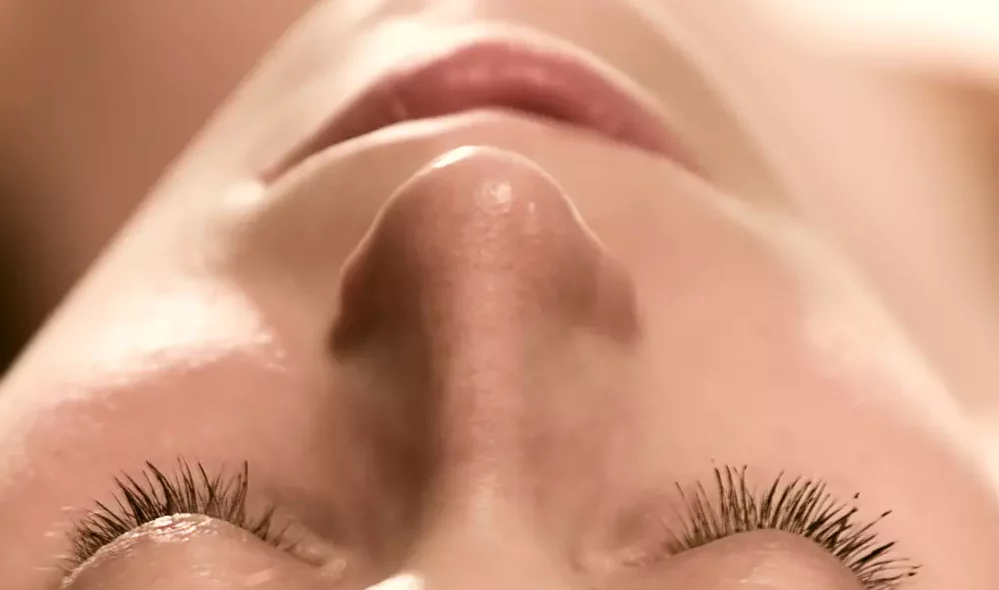
Everything you wanted to know about rhinoplasty, but were afraid to ask
Rhinoplasty is a unique surgery that changes the shape and size of the nose. The procedure corrects many flaws, as well as eliminating health problems. This article presents the answers of European clinics’ specialists to questions about surgery.
How to understand that it is necessary to do rhinoplasty
If you are experiencing psychological discomfort from the appearance of the nose or have trouble breathing, you need to see a plastic surgeon. You choose a specialist you can safely trust. At the consultation you can tell us about your wishes and concerns.
What is rhinoplasty
Rhinoplasty is plastic surgery that corrects congenital or acquired deformities. Causes can be age-related changes or mechanical damage. Functional rhinoplasty straightens the nasal septum to facilitate oxygen circulation. Aesthetic rhinoplasty involves bone or cartilage. Her goal is to improve the form.
Factors influencing the result of rhinoplasty
The effect depends on bone structure, cartilage, facial shape, and skin texture. If you need to change the shape of the nose is possible to pre-model the future result on the computer.
Preparation and conduct of rhinoplasty
The nasal mucosa is examined before the procedure. After the tests are done, the surgeon sets a date for the operation. A few recommendations:
The choice of anesthesia is influenced by the complexity of the operation. For straightening the nasal septum, general anesthesia is used. A local anesthetic is sufficient for a nasal tip procedure. Self-absorbable sutures are applied after the defects have been corrected.
Contraindications to rhinoplasty
It is forbidden to perform the operation if:
Rehabilitation after rhinoplasty
The main difficulty in the recovery period is the inability to get oxygen through the sinuses. Swelling may occur during the first 2 weeks. On average, rehabilitation takes no more than 3 weeks.
Negative consequences after rhinoplasty
You should not expect negative consequences and complications. Examination and tests reveal contraindications and possible risks. In rare cases, minor bleeding or bruising may occur immediately after surgery.
The cost of rhinoplasty
The cost depends on the volume of surgical intervention. Applying to a clinic in any country, you pay for a set of services, which includes an initial consultation, tests, anesthesia, surgery, medications, care after surgery. If you want, the manager can buy you a plane ticket and book a hotel room.
Read news
Rhinoplasty is a unique surgery that changes the shape and size of the nose. The procedure corrects many flaws, as well as eliminating health problems. This article presents the answers of European clinics’ specialists to questions about surgery.
How to understand that it is necessary to do rhinoplasty
If you are experiencing psychological discomfort from the appearance of the nose or have trouble breathing, you need to see a plastic surgeon. You choose a specialist you can safely trust. At the consultation you can tell us about your wishes and concerns.
What is rhinoplasty
Rhinoplasty is plastic surgery that corrects congenital or acquired deformities. Causes can be age-related changes or mechanical damage. Functional rhinoplasty straightens the nasal septum to facilitate oxygen circulation. Aesthetic rhinoplasty involves bone or cartilage. Her goal is to improve the form.
Factors influencing the result of rhinoplasty
The effect depends on bone structure, cartilage, facial shape, and skin texture. If you need to change the shape of the nose is possible to pre-model the future result on the computer.
Preparation and conduct of rhinoplasty
The nasal mucosa is examined before the procedure. After the tests are done, the surgeon sets a date for the operation. A few recommendations:
The choice of anesthesia is influenced by the complexity of the operation. For straightening the nasal septum, general anesthesia is used. A local anesthetic is sufficient for a nasal tip procedure. Self-absorbable sutures are applied after the defects have been corrected.
Contraindications to rhinoplasty
It is forbidden to perform the operation if:
Rehabilitation after rhinoplasty
The main difficulty in the recovery period is the inability to get oxygen through the sinuses. Swelling may occur during the first 2 weeks. On average, rehabilitation takes no more than 3 weeks.
Negative consequences after rhinoplasty
You should not expect negative consequences and complications. Examination and tests reveal contraindications and possible risks. In rare cases, minor bleeding or bruising may occur immediately after surgery.
The cost of rhinoplasty
The cost depends on the volume of surgical intervention. Applying to a clinic in any country, you pay for a set of services, which includes an initial consultation, tests, anesthesia, surgery, medications, care after surgery. If you want, the manager can buy you a plane ticket and book a hotel room.
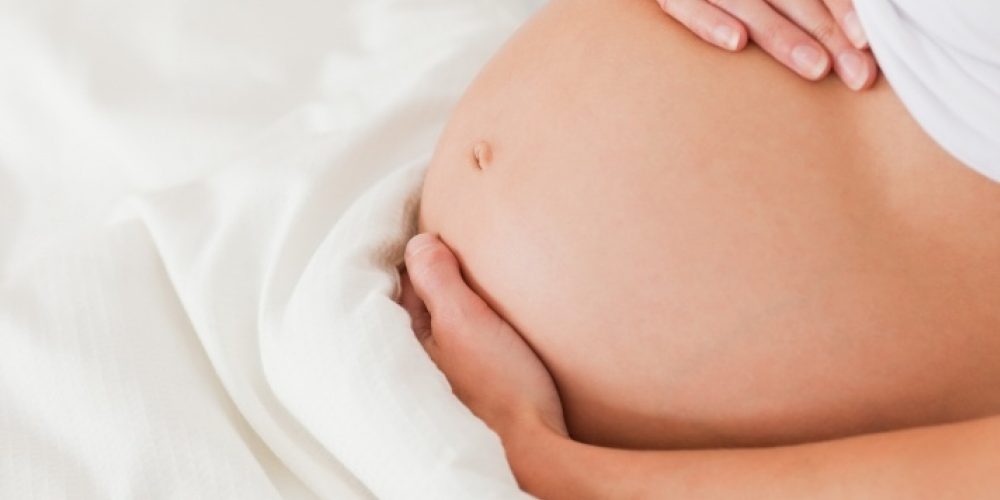
Pregnancy after mammoplasty
Breast augmentation surgery is in demand among girls of all ages. Perfectly shaped breasts make the figure exquisite and feminine. The only issue that stops girls is the safety of surgical intervention before pregnancy.
Mammoplasty before delivery
Girls are always trying to correct their appearance. The shape and size of breasts do not suit many members of the fair sex. However, some people are afraid to have breast augmentation surgery before giving birth. This is related to the fear of not being able to breastfeed.
The mammary glands often change shape during pregnancy and lactation. Breast augmentation may result in the need to replace the endoprosthesis. For this reason, it is better not to have a mammoplasty before pregnancy. The operation is also prohibited during the breastfeeding period.
How long after mammoplasty can you plan a pregnancy?
This period is influenced by the individual characteristics of the patient’s body. Rehabilitation after surgery takes up to 6 months. For some girls, the healing process is faster.
Sexual activity is allowed no earlier than 14 days after surgery. Nine months is quite enough time for the body to recover. During this time, the stitches heal completely. The birth can be independent or by cesarean section. Consultation with a gynecologist is necessary before planning a pregnancy. Your doctor will determine how prepared you are for the upcoming changes in your body.
Breast augmentation after pregnancy
After childbirth and completion of breastfeeding you can have a mammoplasty. During this time, the mammary glands can increase by several sizes. Also worth noting:
The presence of these symptoms is taken into account before the procedure. The mammary glands will take 6 months to fully recover.
Lactation period after surgery
Milk from the glands flows through the ducts to the nipples. Feeding disruption can occur if the incision is around the nipples. Surgeons at European clinics perform the operation carefully, without damaging the streams. Even the periareolar incision they perform with precision. There are no consequences for expectant mothers.
Impact of mammoplasty on breastfeeding
The reason for the lack of milk is a lack of glandular tissue. Contrary to many opinions, the installed implant is not involved in this process. It is worth noting that the endoprosthesis is based on durable, high-quality silicone. Particles of the material cannot get into the milk and ruin its quality.
How long after the end of breastfeeding can surgery be performed
Mammoplasty can be done 6 months after the end of the lactation period. This period is characterized by:
All questions about the procedure you can find out from surgeons at aesthetic medicine hospitals and clinics in Europe. They will tell you about all the subtleties of mammoplasty, which will allow you to decide on the actual date of surgery.
Read news
Breast augmentation surgery is in demand among girls of all ages. Perfectly shaped breasts make the figure exquisite and feminine. The only issue that stops girls is the safety of surgical intervention before pregnancy.
Mammoplasty before delivery
Girls are always trying to correct their appearance. The shape and size of breasts do not suit many members of the fair sex. However, some people are afraid to have breast augmentation surgery before giving birth. This is related to the fear of not being able to breastfeed.
The mammary glands often change shape during pregnancy and lactation. Breast augmentation may result in the need to replace the endoprosthesis. For this reason, it is better not to have a mammoplasty before pregnancy. The operation is also prohibited during the breastfeeding period.
How long after mammoplasty can you plan a pregnancy?
This period is influenced by the individual characteristics of the patient’s body. Rehabilitation after surgery takes up to 6 months. For some girls, the healing process is faster.
Sexual activity is allowed no earlier than 14 days after surgery. Nine months is quite enough time for the body to recover. During this time, the stitches heal completely. The birth can be independent or by cesarean section. Consultation with a gynecologist is necessary before planning a pregnancy. Your doctor will determine how prepared you are for the upcoming changes in your body.
Breast augmentation after pregnancy
After childbirth and completion of breastfeeding you can have a mammoplasty. During this time, the mammary glands can increase by several sizes. Also worth noting:
The presence of these symptoms is taken into account before the procedure. The mammary glands will take 6 months to fully recover.
Lactation period after surgery
Milk from the glands flows through the ducts to the nipples. Feeding disruption can occur if the incision is around the nipples. Surgeons at European clinics perform the operation carefully, without damaging the streams. Even the periareolar incision they perform with precision. There are no consequences for expectant mothers.
Impact of mammoplasty on breastfeeding
The reason for the lack of milk is a lack of glandular tissue. Contrary to many opinions, the installed implant is not involved in this process. It is worth noting that the endoprosthesis is based on durable, high-quality silicone. Particles of the material cannot get into the milk and ruin its quality.
How long after the end of breastfeeding can surgery be performed
Mammoplasty can be done 6 months after the end of the lactation period. This period is characterized by:
All questions about the procedure you can find out from surgeons at aesthetic medicine hospitals and clinics in Europe. They will tell you about all the subtleties of mammoplasty, which will allow you to decide on the actual date of surgery.

Alopecia or why I’m going bald
Luxury and well-groomed hair proud of the fair sex. Many factors have an adverse effect on the condition of hair. This applies to the environment, stress, improper diet, disorders in the body.
Who is prone to alopecia
Alopecia is the loss of hair in large quantities. It affects people regardless of gender and age. Young people also suffer from alopecia. Hair can fall out at a young age. Diffuse loss occurs mostly in girls.
Many people think that the appearance of baldness can only be in men. It’s not. Women often face this problem. It is worth remembering that the natural cycle of any hair ends with hair loss. Daily loss of hair in a small amount (up to 100) is the norm. If the permissible rate is exceeded, appropriate measures must be taken.
How to determine alopecia
It is very easy to test a hair. You take the strand in your hand and pull it down. After that, the hair remains on the palm of your hand. You just have to count them. If it’s less than 10, you’re worried for nothing.
If there are more, it is worth seeing a trichologist to determine the cause. The problem may not be the volume of hairs that have fallen out, but the lack of growth of new hairs in their place. Diagnostics will determine the source of the problem.
What to do in case of diffuse hair loss
Proper care involves choosing the right cosmetics. Professional lines strengthen weakened hair and prevent hair loss. Dye your hair with gentle dyes. Experts do not recommend the constant use of a hair dryer. Hair becomes dry and brittle.
Trichologists recommend the use of balms and masks. Many folk recipes help to restore the structure and accelerate hair growth. Taking vitamin complexes and a balanced diet will also benefit. If there is an imbalance of hormones in the body, the doctor will prescribe the necessary medications.
If your hair continues to fall out badly, doctors recommend a hair transplant. The operation consists of grafting grafts from the donor area to the problem area. In European aesthetic medicine clinics specialists will carry out surgical intervention painlessly and qualitatively. You will look flawless after the procedure.
Read news
Luxury and well-groomed hair proud of the fair sex. Many factors have an adverse effect on the condition of hair. This applies to the environment, stress, improper diet, disorders in the body.
Who is prone to alopecia
Alopecia is the loss of hair in large quantities. It affects people regardless of gender and age. Young people also suffer from alopecia. Hair can fall out at a young age. Diffuse loss occurs mostly in girls.
Many people think that the appearance of baldness can only be in men. It’s not. Women often face this problem. It is worth remembering that the natural cycle of any hair ends with hair loss. Daily loss of hair in a small amount (up to 100) is the norm. If the permissible rate is exceeded, appropriate measures must be taken.
How to determine alopecia
It is very easy to test a hair. You take the strand in your hand and pull it down. After that, the hair remains on the palm of your hand. You just have to count them. If it’s less than 10, you’re worried for nothing.
If there are more, it is worth seeing a trichologist to determine the cause. The problem may not be the volume of hairs that have fallen out, but the lack of growth of new hairs in their place. Diagnostics will determine the source of the problem.
What to do in case of diffuse hair loss
Proper care involves choosing the right cosmetics. Professional lines strengthen weakened hair and prevent hair loss. Dye your hair with gentle dyes. Experts do not recommend the constant use of a hair dryer. Hair becomes dry and brittle.
Trichologists recommend the use of balms and masks. Many folk recipes help to restore the structure and accelerate hair growth. Taking vitamin complexes and a balanced diet will also benefit. If there is an imbalance of hormones in the body, the doctor will prescribe the necessary medications.
If your hair continues to fall out badly, doctors recommend a hair transplant. The operation consists of grafting grafts from the donor area to the problem area. In European aesthetic medicine clinics specialists will carry out surgical intervention painlessly and qualitatively. You will look flawless after the procedure.
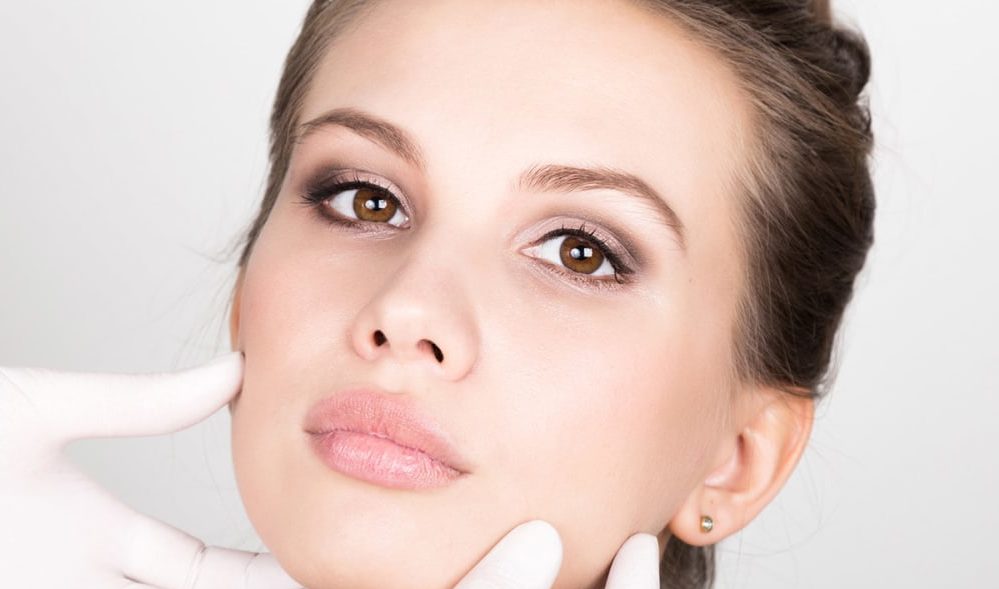
Relevance of plastic correction of the nose
Plastic surgery can work wonders. Surgery corrects any part of the face. Most often people are dissatisfied with the shape and size of the nose. Too big a nose makes the face look rude and unattractive. In this case rhinoplasty can help.
Relevance of plastic correction of the nose
Nature has given people certain facial features. But not all of them harmonize on the face. This factor can greatly affect the psycho-emotional state of men and women.
The nose can be big or have an ugly shape – with a bump, too upturned, “eagle-eyed”, long, wide. A person on this ground develops insecurities and complexes.
However, not only the aesthetic factor plays a huge role, but also the presence of related health problems. Many people’s nasal septums are crooked. This is due to various factors:
– improper shaping;
– the consequences of fractures and injuries.
The nasal septum can be C-shaped or S-shaped. Asymmetry is provocative:
– shortness of breath;
– constant nasal congestion;
– appearance of mucus;
– formation of crusts;
– itching and dryness;
– chronic runny nose;
– snoring, sinusitis, rhinitis.
All of these symptoms worsen sleep and, consequently, the quality of life. After rhinoplasty, you can forget about your breathing problems. Sleep and rest are the key to good health.
Rhinoplasty is not performed before the age of 18, because during this period the growth and formation of tissues takes place. Surgery can cause serious facial deformities.
Rhinoplasty is considered one of the most popular surgeries in the world, because it can eliminate aesthetic and medical problems. It is very important to choose a good professional so as not to harm your health.
Surgeons at aesthetic medicine clinics in Europe take an individual approach to each clinical case, taking into account all the features of the body. Turning to medical institutions, you will forget about health problems forever, and the new form of the nose will get rid of complexes.
Read news
Plastic surgery can work wonders. Surgery corrects any part of the face. Most often people are dissatisfied with the shape and size of the nose. Too big a nose makes the face look rude and unattractive. In this case rhinoplasty can help.
Relevance of plastic correction of the nose
Nature has given people certain facial features. But not all of them harmonize on the face. This factor can greatly affect the psycho-emotional state of men and women.
The nose can be big or have an ugly shape – with a bump, too upturned, “eagle-eyed”, long, wide. A person on this ground develops insecurities and complexes.
However, not only the aesthetic factor plays a huge role, but also the presence of related health problems. Many people’s nasal septums are crooked. This is due to various factors:
– improper shaping;
– the consequences of fractures and injuries.
The nasal septum can be C-shaped or S-shaped. Asymmetry is provocative:
– shortness of breath;
– constant nasal congestion;
– appearance of mucus;
– formation of crusts;
– itching and dryness;
– chronic runny nose;
– snoring, sinusitis, rhinitis.
All of these symptoms worsen sleep and, consequently, the quality of life. After rhinoplasty, you can forget about your breathing problems. Sleep and rest are the key to good health.
Rhinoplasty is not performed before the age of 18, because during this period the growth and formation of tissues takes place. Surgery can cause serious facial deformities.
Rhinoplasty is considered one of the most popular surgeries in the world, because it can eliminate aesthetic and medical problems. It is very important to choose a good professional so as not to harm your health.
Surgeons at aesthetic medicine clinics in Europe take an individual approach to each clinical case, taking into account all the features of the body. Turning to medical institutions, you will forget about health problems forever, and the new form of the nose will get rid of complexes.